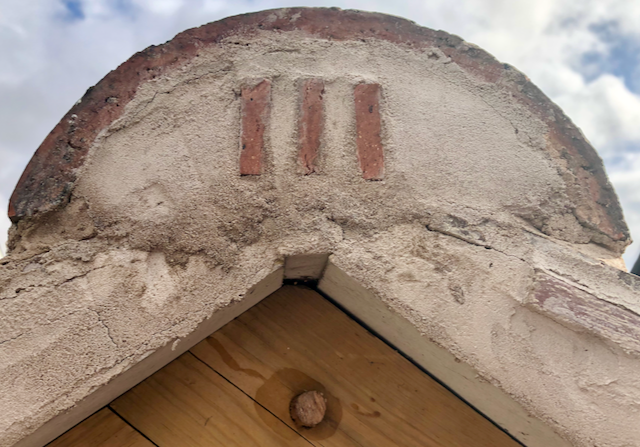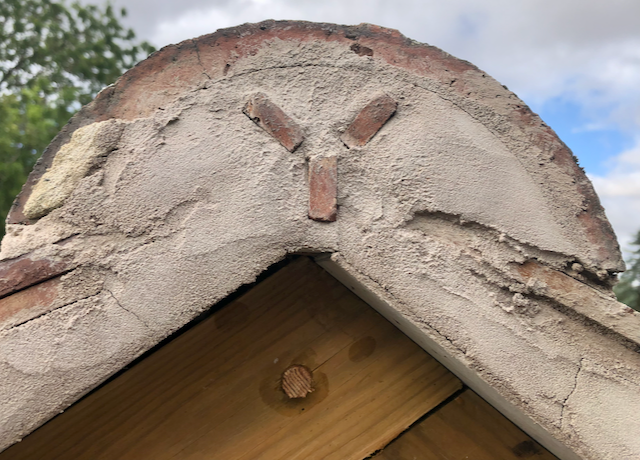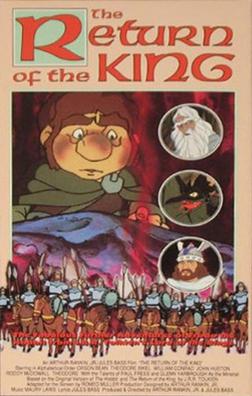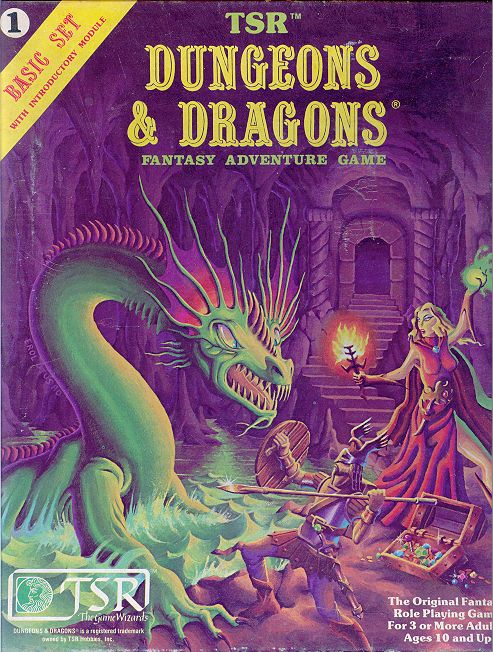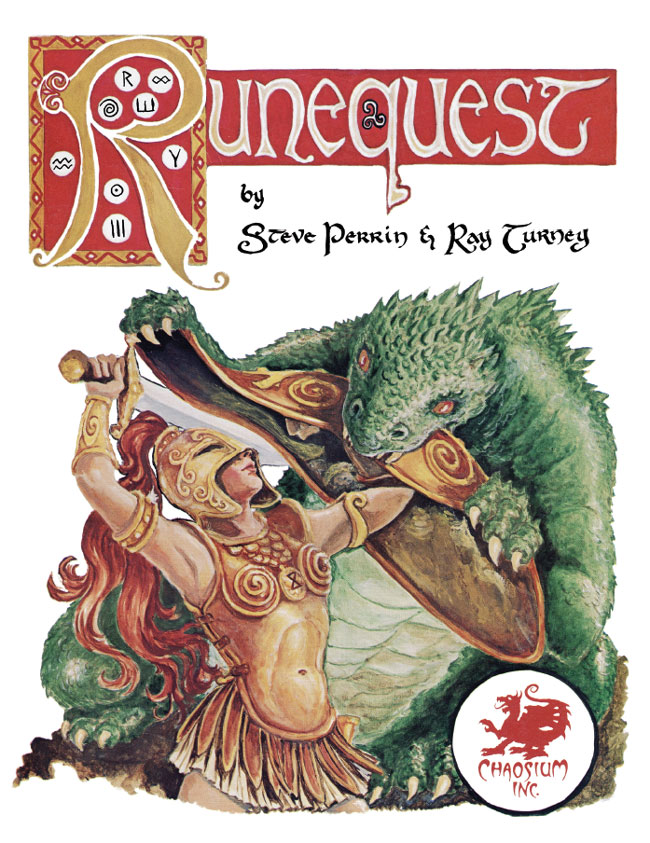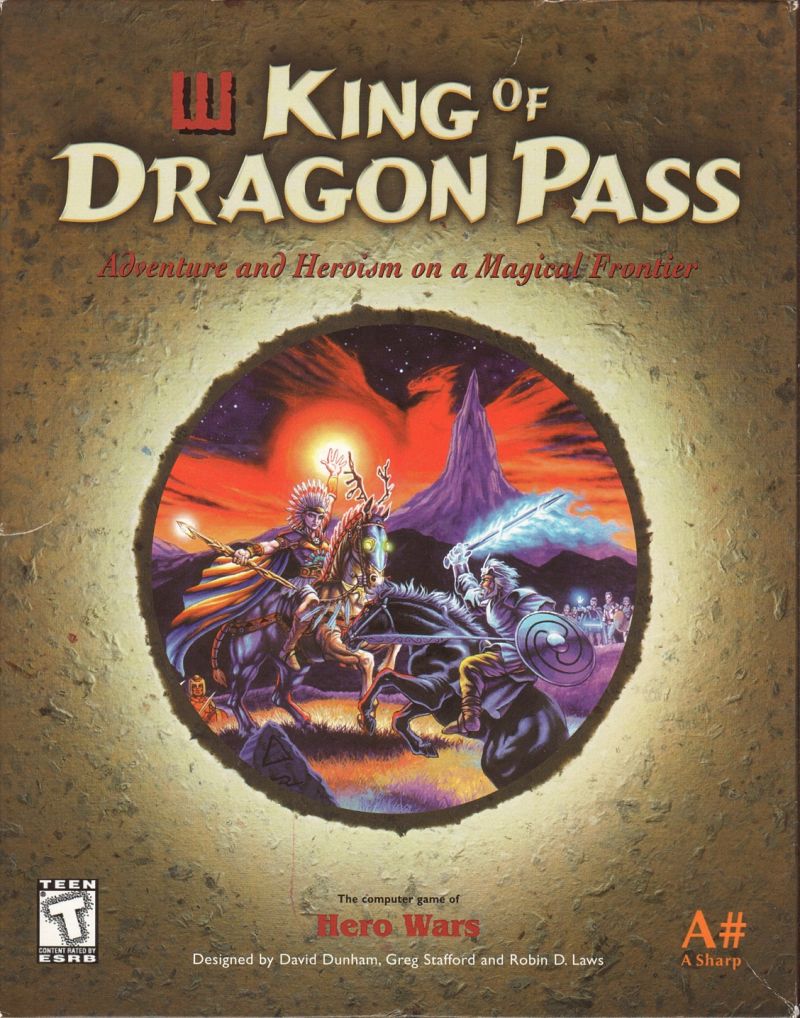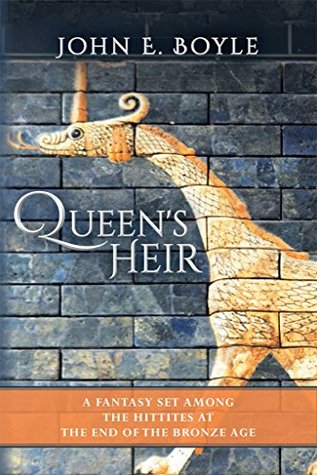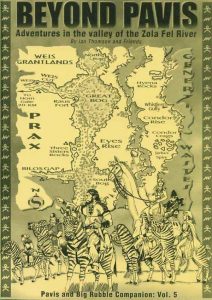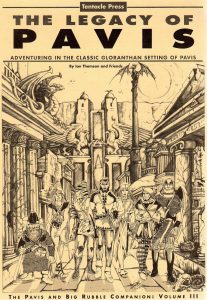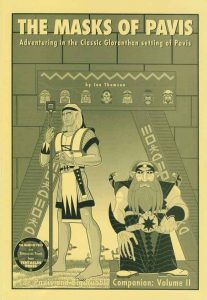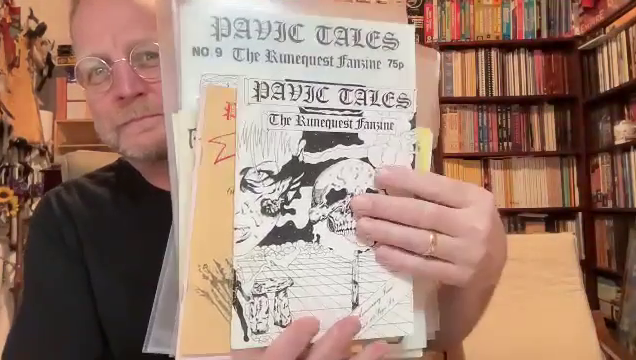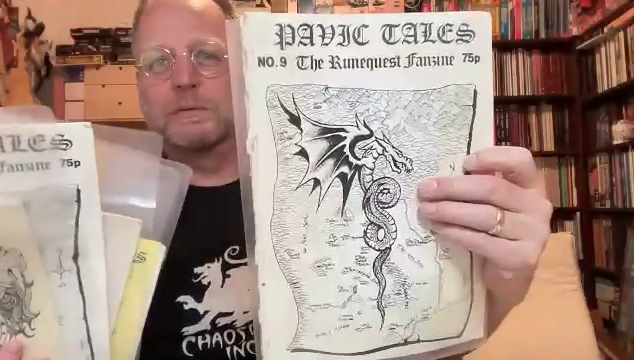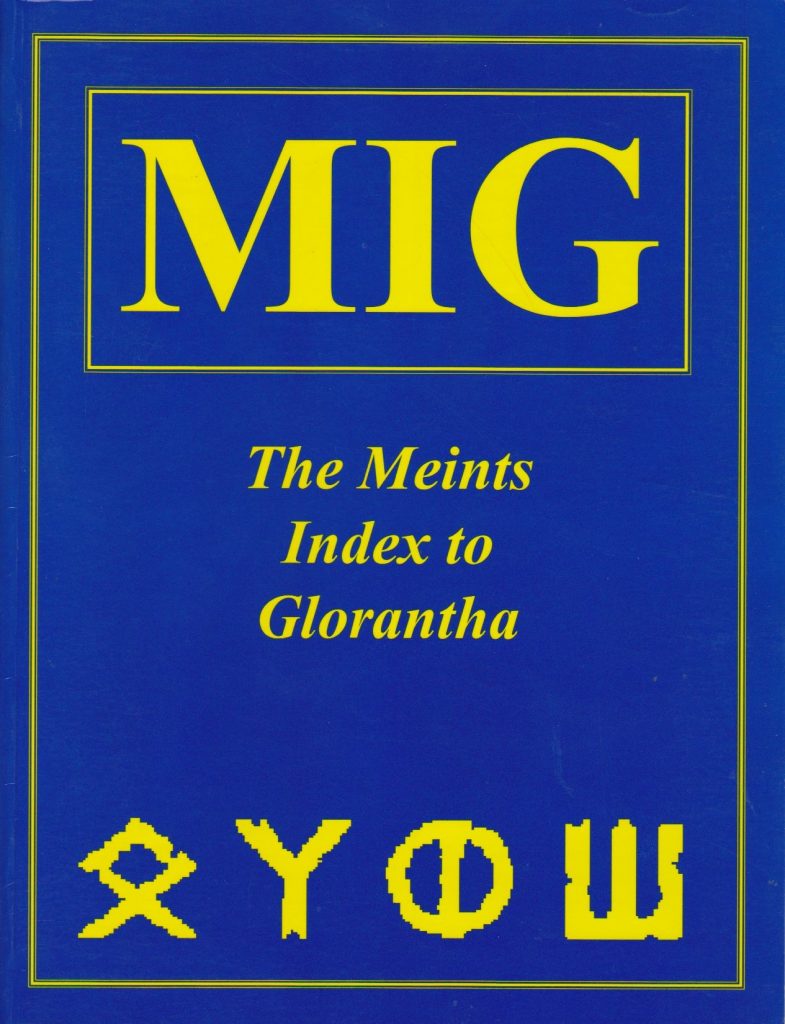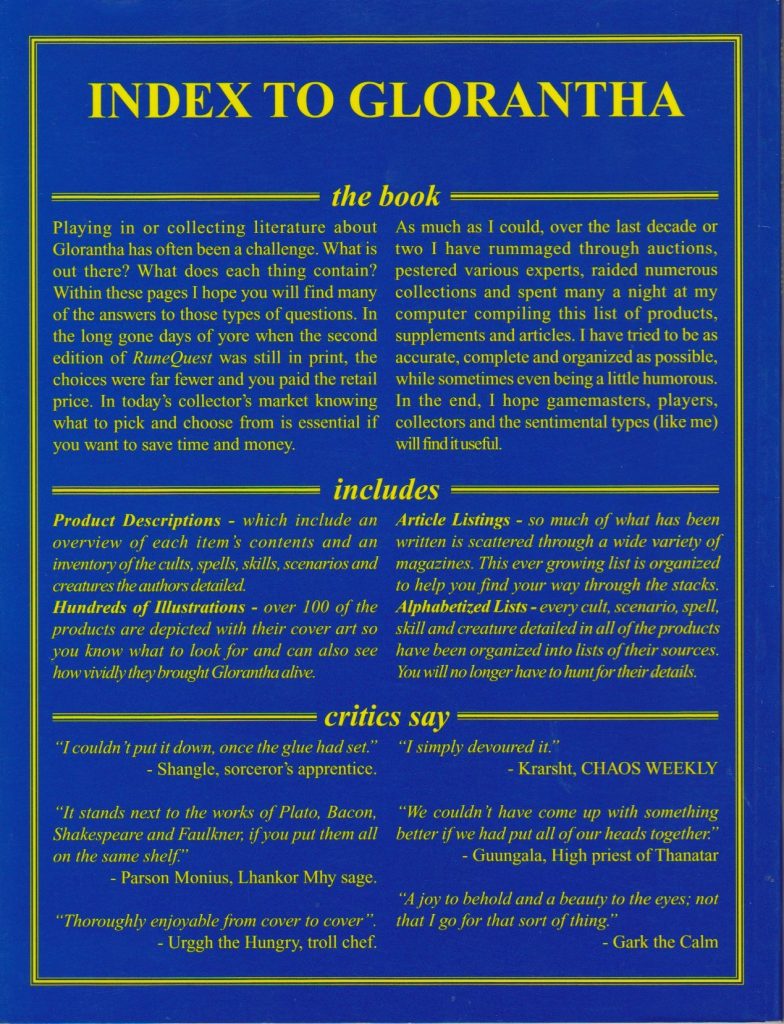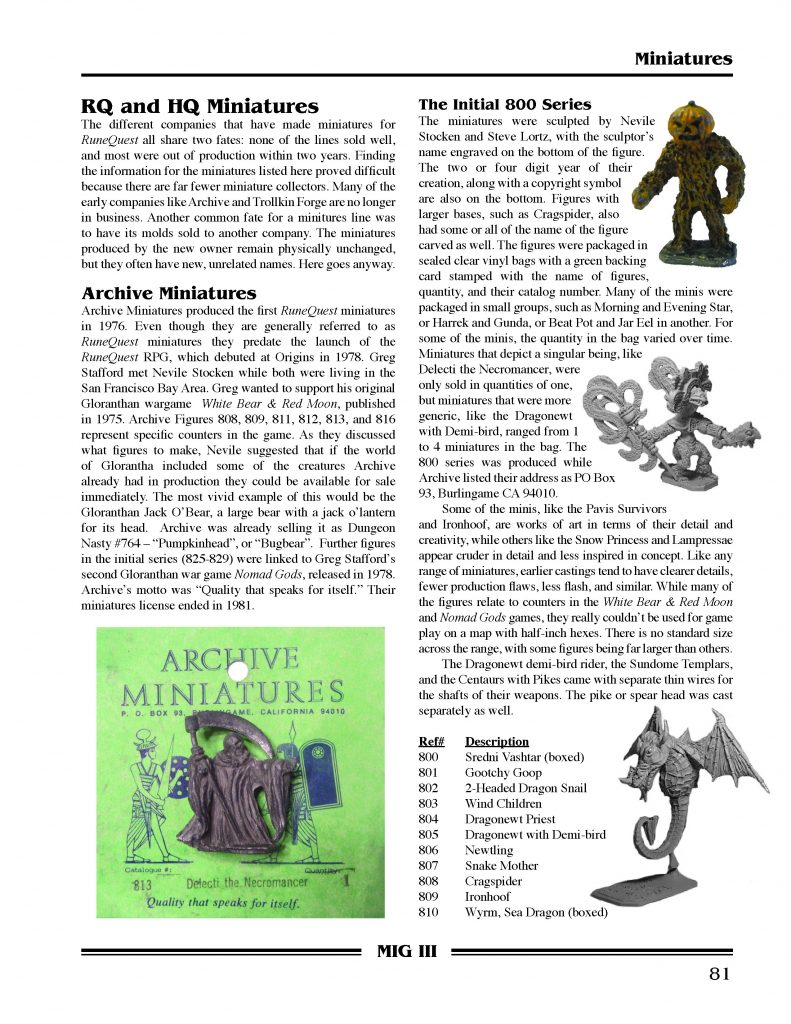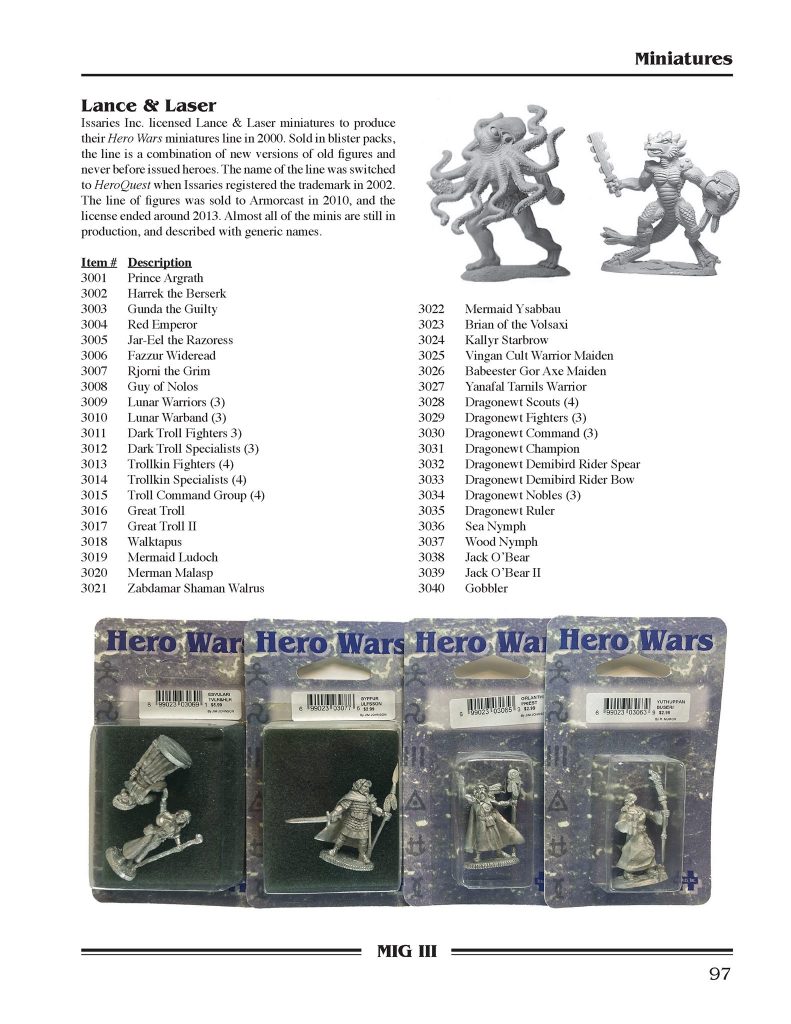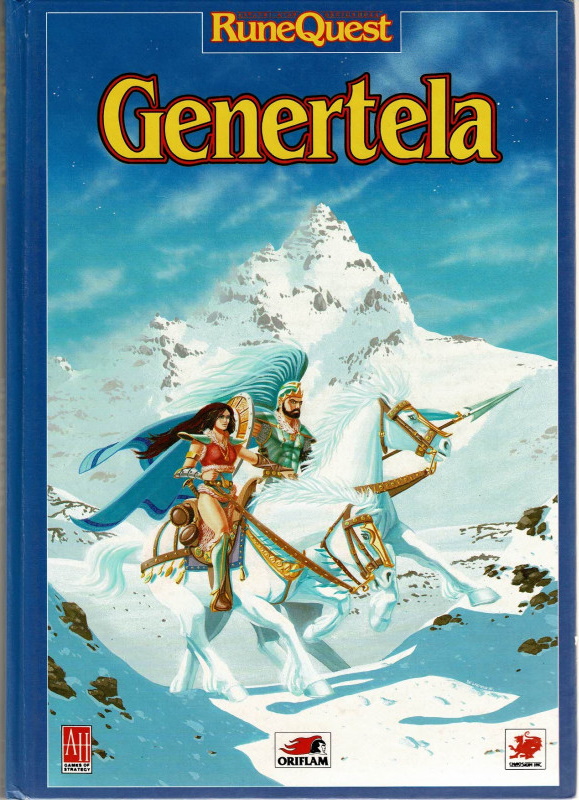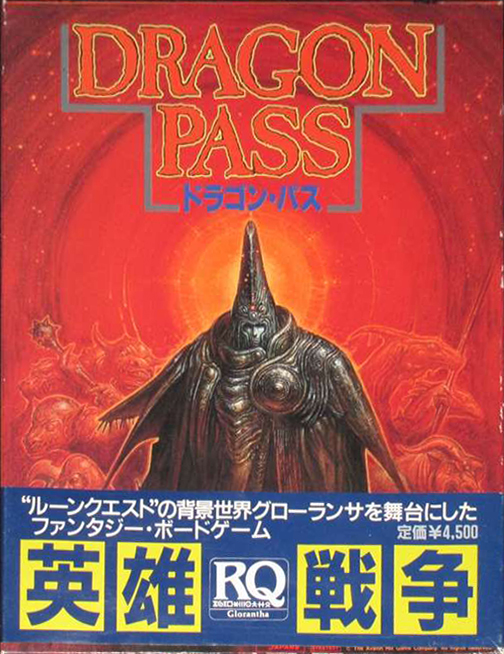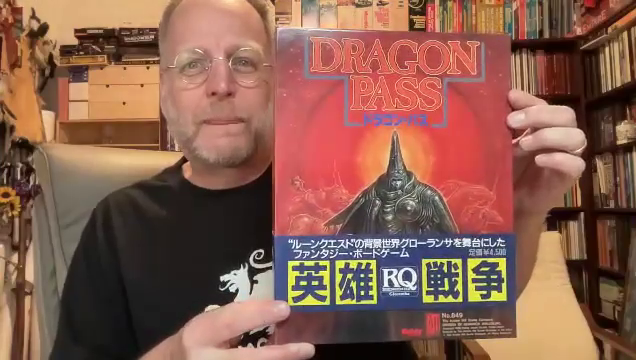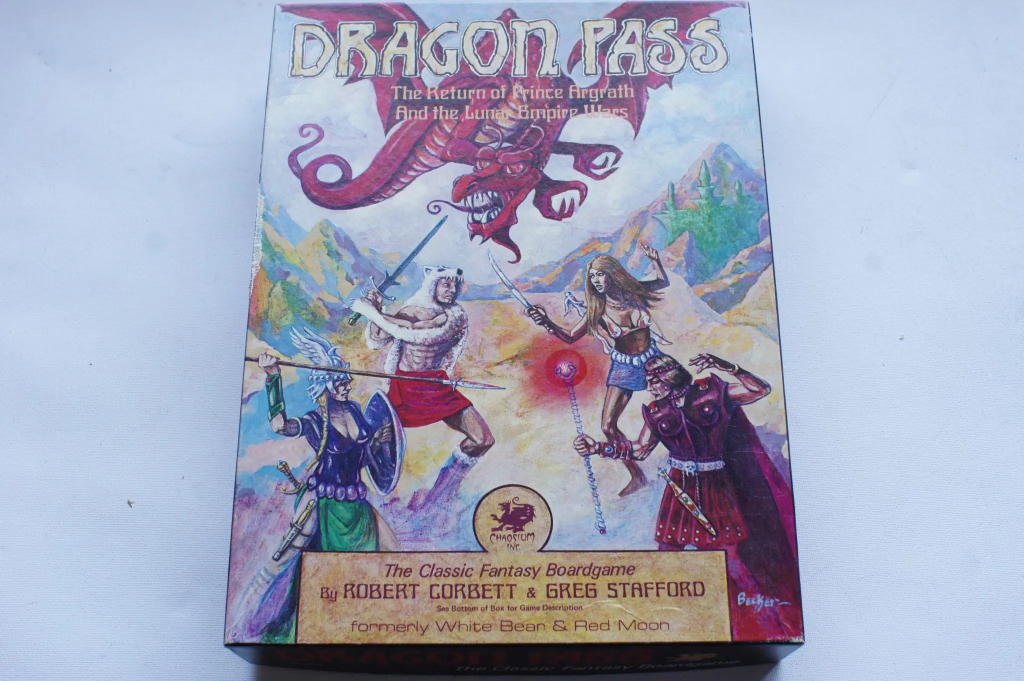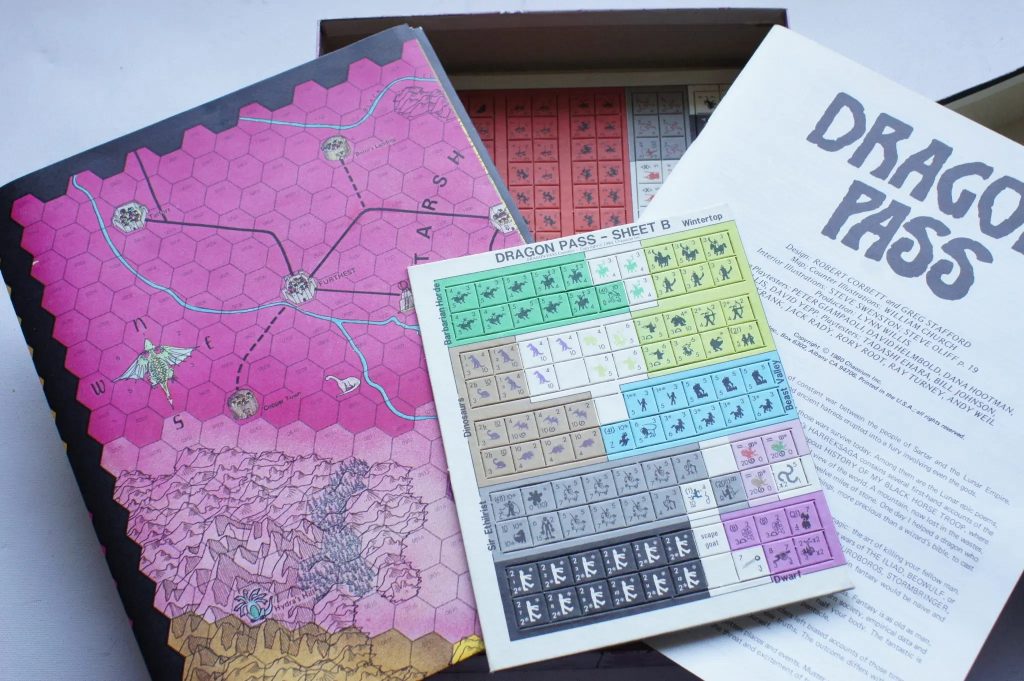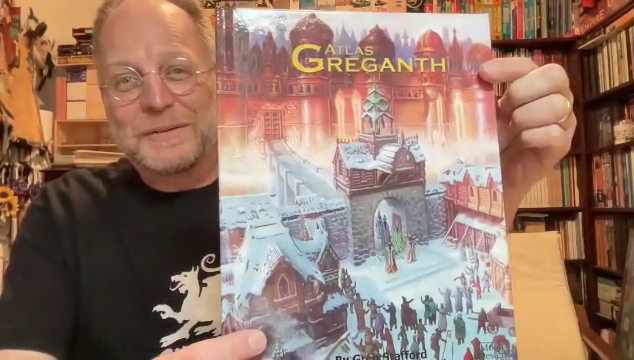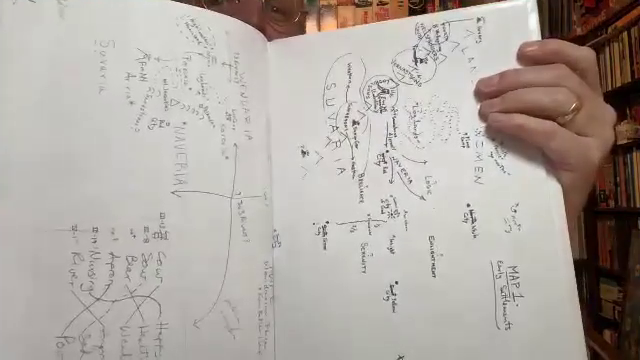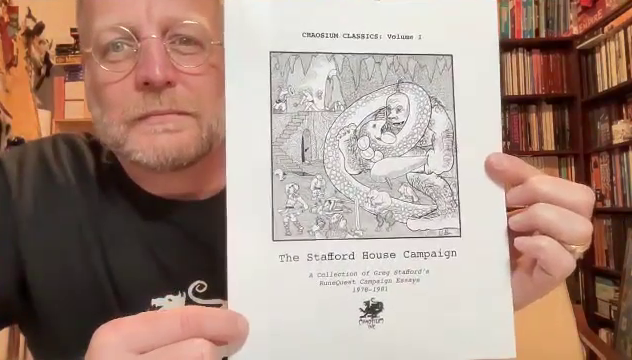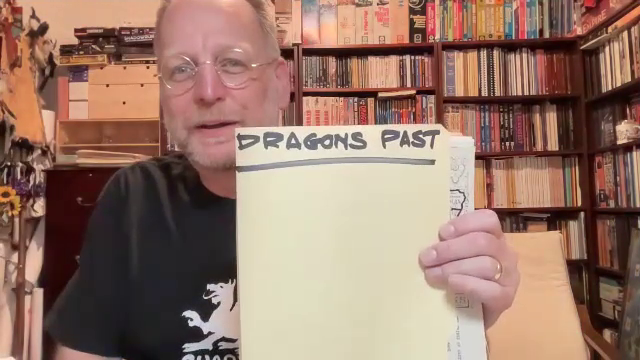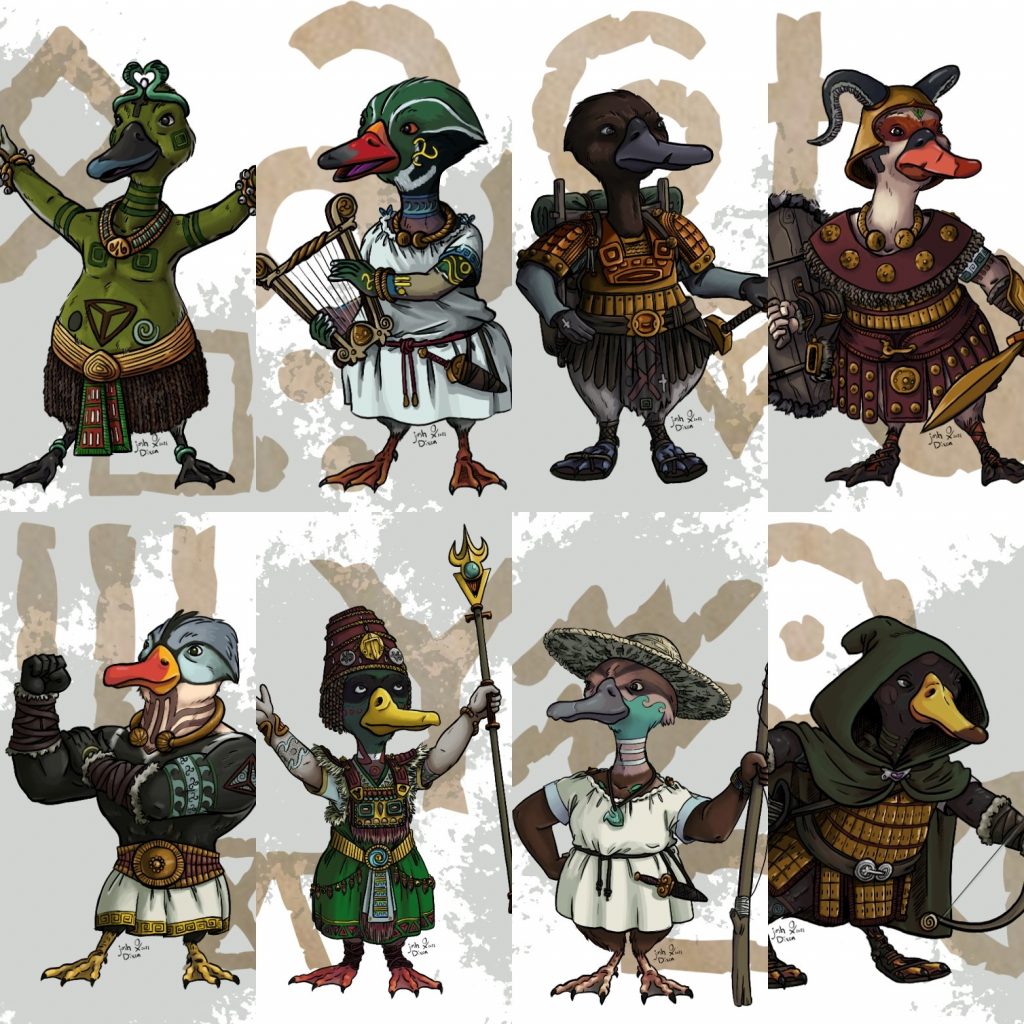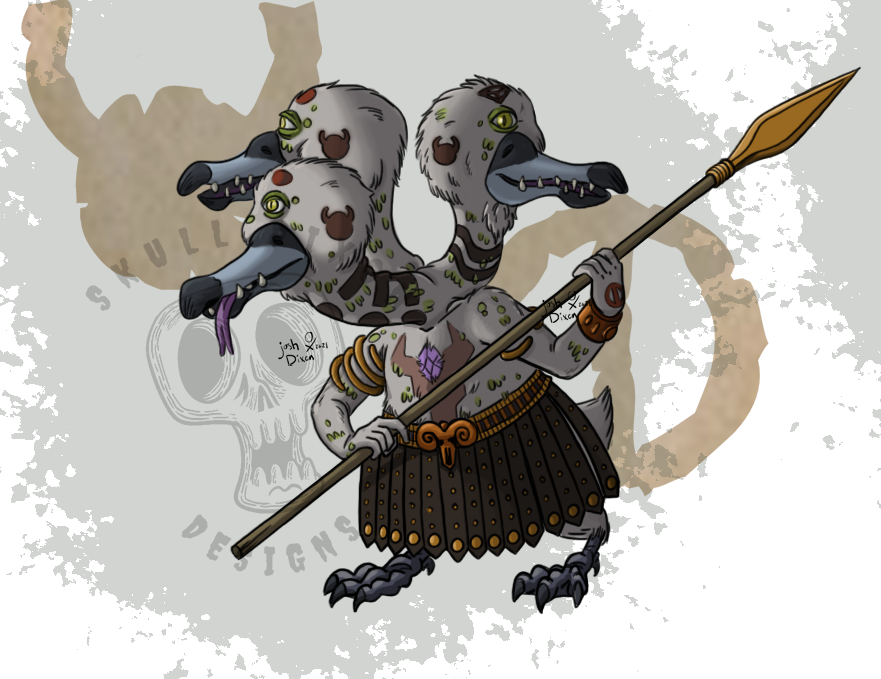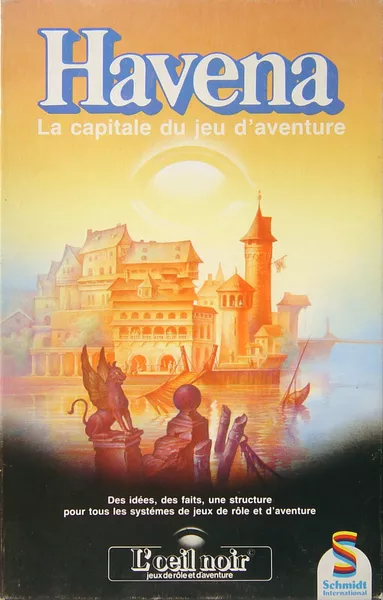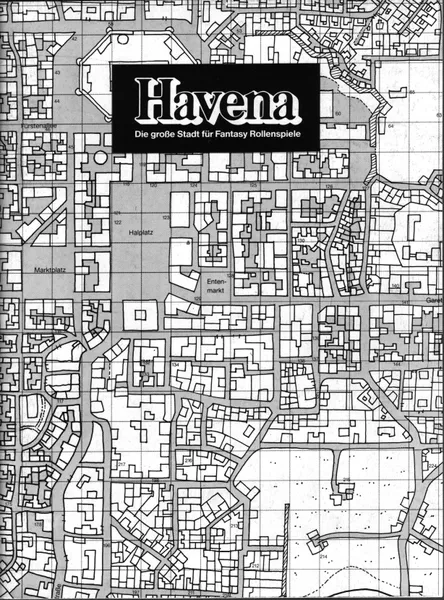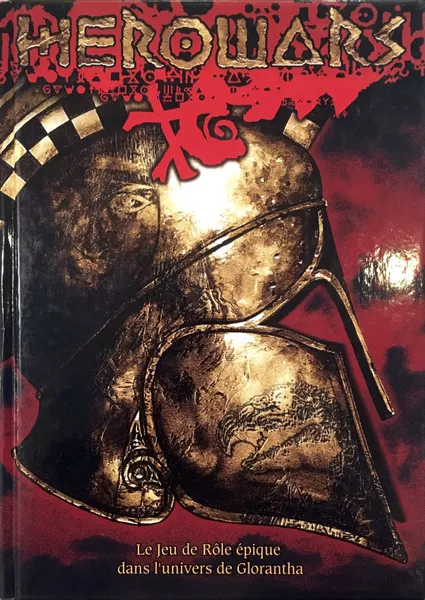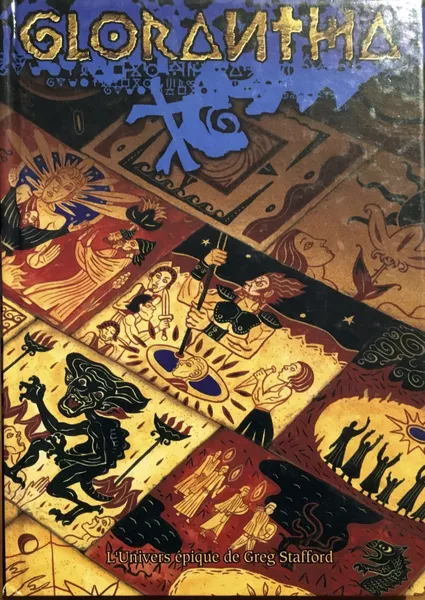- Affärsnyheter
- Alternativ hälsa
- Amerikansk fotboll
- Andlighet
- Animering och manga
- Astronomi
- Barn och familj
- Baseball
- Basket
- Berättelser för barn
- Böcker
- Brottning
- Buddhism
- Dagliga nyheter
- Dans och teater
- Design
- Djur
- Dokumentär
- Drama
- Efterprogram
- Entreprenörskap
- Fantasysporter
- Filmhistoria
- Filmintervjuer
- Filmrecensioner
- Filosofi
- Flyg
- Föräldraskap
- Fordon
- Fotboll
- Fritid
- Fysik
- Geovetenskap
- Golf
- Hälsa och motion
- Hantverk
- Hinduism
- Historia
- Hobbies
- Hockey
- Hus och trädgård
- Ideell
- Improvisering
- Investering
- Islam
- Judendom
- Karriär
- Kemi
- Komedi
- Komedifiktion
- Komediintervjuer
- Konst
- Kristendom
- Kurser
- Ledarskap
- Life Science
- Löpning
- Marknadsföring
- Mat
- Matematik
- Medicin
- Mental hälsa
- Mode och skönhet
- Motion
- Musik
- Musikhistoria
- Musikintervjuer
- Musikkommentarer
- Näringslära
- Näringsliv
- Natur
- Naturvetenskap
- Nyheter
- Nyhetskommentarer
- Personliga dagböcker
- Platser och resor
- Poddar
- Politik
- Relationer
- Religion
- Religion och spiritualitet
- Rugby
- Så gör man
- Sällskapsspel
- Samhälle och kultur
- Samhällsvetenskap
- Science fiction
- Sexualitet
- Simning
- Självhjälp
- Skönlitteratur
- Spel
- Sport
- Sportnyheter
- Språkkurs
- Stat och kommun
- Ståupp
- Tekniknyheter
- Teknologi
- Tennis
- TV och film
- TV-recensioner
- Underhållningsnyheter
- Utbildning
- Utbildning för barn
- Verkliga brott
- Vetenskap
- Vildmarken
- Visuell konst

Om podden
A podcast about gaming in Glorantha
The podcast The God Learners is created by The God Learners. The podcast and the artwork on this page are embedded on this page using the public podcast feed (RSS).
Avsnitt
Episode 34: The Reminiscences of Paulis Longvale (Part 1)
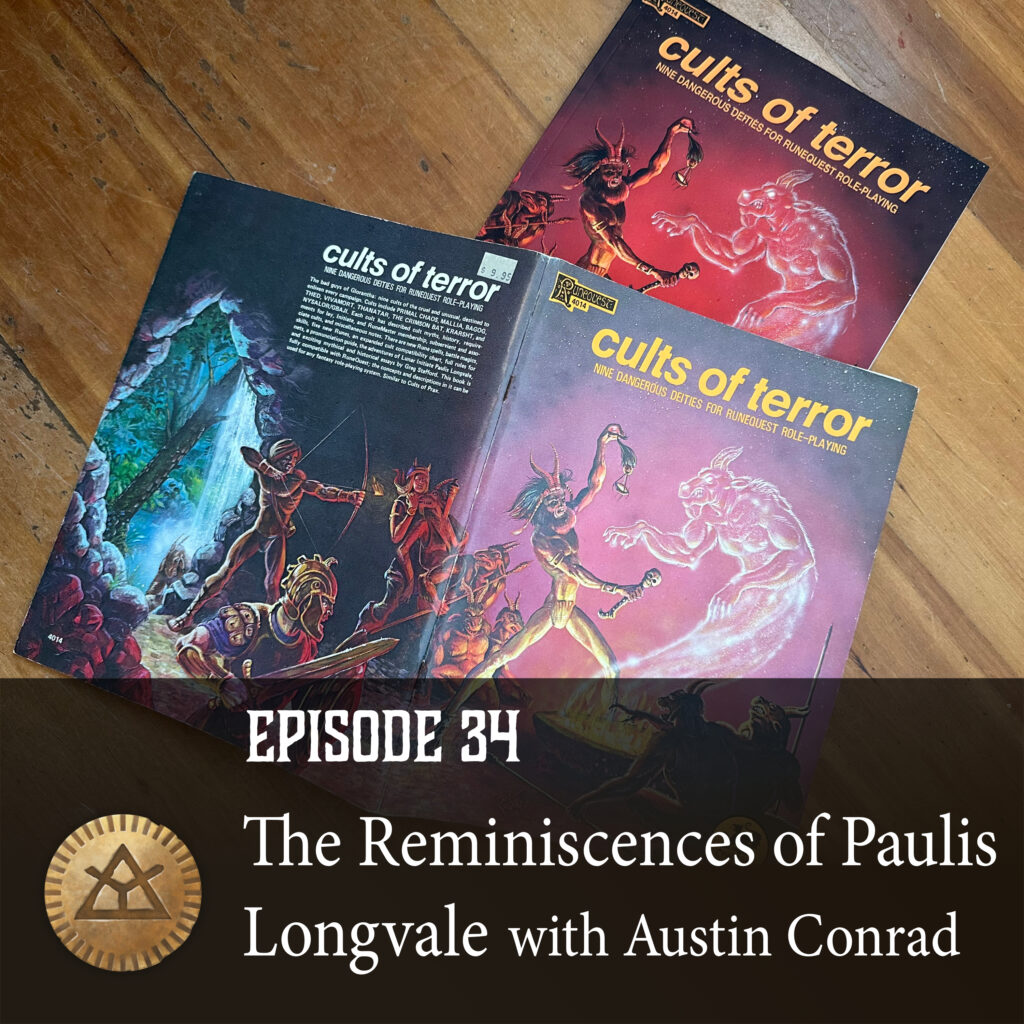
After too long a hiatus, we are finally back! Well, almost, because Ludo is an idiot and got the time zones wrong while setting up the recording, so Joerg shows up a bit later. Ludo apologizes for messing that up but hey, this is an episode about Chaos, so…
Our Guest
We welcome once again Austin Conrad to the show!
- His website is Akhelas
- Get Treasures of Glorantha: Volume 2, one of the finest books on the Jonstown Compendium!
- We actually talked about that book, and magical items in general, for episode 31
- Austin’s ghost was summoned during our more recent episode on RuneQuest house rules
Show Notes
In this episode we chat about things like:
- Cult of Terror (RQ2, 1981)
- You can get it as a POD reprint or in PDF from Chaosium
- Dorastor: Land of Doom (RQ3, 1993)
- The Cults of Runequest sourcebooks (available here from Chaosium)
- Shadows on the Borderlands (RQ3, 1993)
- The first time the Gloranthan cosmology and history is presented in one text
- Worshipping Mallia as a non-Chaos deity, in a propitiatory way
- King of Dragon Pass
- RuneQuest Warlords
- Razalkark, the King of the Broos, and a “good boy”
- Cults of Prax (RQ2, 1979) and the tribulations of Biturian Varosh
- Our episode series on Biturian Varosh started back when we were the “Wind Words” podcast, and continued with guest Drew Baker early in the God Learners podcast
- The four philosophies and magic forms of Glorantha… plus a few more! Add you own!
- The usual suspects: the Guide to Glorantha, the Glorantha Sourcebook, and the Mythology book
- The entire cosmology and history of Glorantha in 10 pages! Boom! Done!
- Ludo’s favourite RuneQuest cover, by Jennell Jaquays (see the real wrap-around version!)
- A Gloranthan pronunciation guide! Can YOU pronounce Gloranthan deities’ names correctly?
- The Prosopaedia
- The Curse of Thed: it really sucks!
- Ludo got confused by his notes (“confusing notes” is a Chaotic feature!)
- “Reverse Chaos” was renamed “Curse of Thed” in RQG
- Warhammer Fantasy Roleplay features chaos corruption rules that affect the player characters, sometimes willingly
- We should be playing in Bilini and Dorastor, there’s a lot of fun stuff happening there!
- Is it Chaos, or Just Very Bad Thing?
- Simon Phipp’s Secrets of Dorastor and lines of books
- Our episode on Arkat, with guest Bud from Bud’s RPG Review
- The big-ass Genertela map
- Austin is supposedly being “very polite” in Ludo’s game about NOT becoming an assassin. Spoiler: a month later, Austin did in fact murder a long-standing NPC and initiated into the Eurmal Murderer cult…
- Wesley Crusher
- Ragnar Lodbrok and the TV show “Vikings”
- The Orlanthi as Vikings vs the Orlanthi as ancient Greeks
- Want to make your players go on a quest? Loan them magical items!
- The Lightbringers Summons and forcing it on your players
- Chaos as organized crime
- Mallia and pandemics… too soon, Joerg!
- Shenanigans with disease spirits!
- Dealing with trickster player characters…
- Scorpion Men: the other iconic Gloranthan bad guys?
- Beer With Teeth’s Stone and Bone
- 13th Age Glorantha‘s Scorpion Men illustrations
- Gagyx Two-Barb, Scorpion Queen
- The Footprint, another place of Chaos
- Food and water are tainted! Roll to find safe things to consume, or pack them!
- Making your own funky diseases
- Using the table of troll drink effects from Trollpak (RQ2, 1982)
- Differences in Chaos curses between RQ2 and RQG
- Paranoia in players, and nasty Chaotic features
- Xenohealing, the spell nobody misses, apparently
- Hashtag Not All Chaos!
- Adapting a combat scene environment to the baddies’ abilities… For instance: Scorpion Men can climb very well!
- Austin’s correct answer to Scorpion Men is “don’t”
- Milking Scorpion Men…. uugggh
- The players are always the baddies!
Credits
The intro music is “The Warbird” by Try-Tachion. Other music includes “Cinder and Smoke” and “Skyspeak“, along with audio from the FreeSound library.
Episode 33: The House Rules of Sandheart
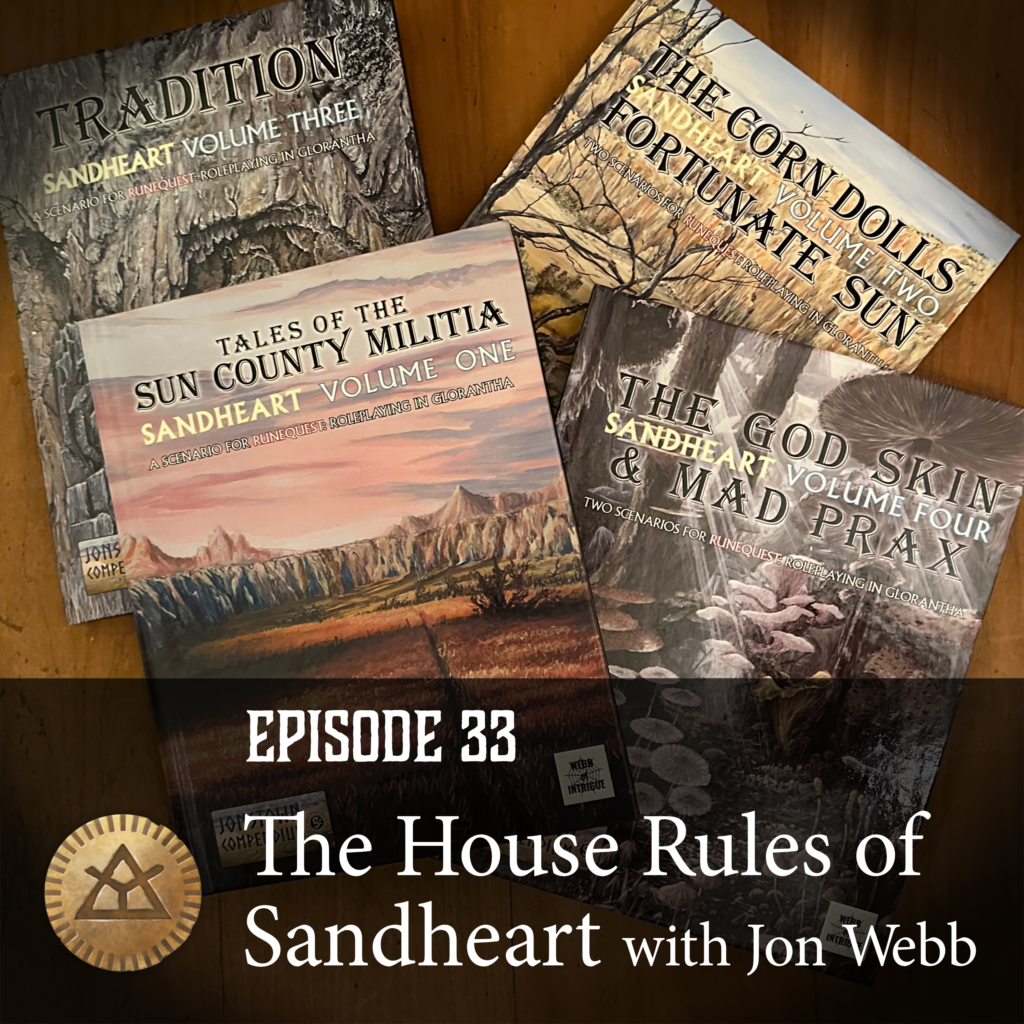
We said we were back from our summer break with episode 32, but we lied! Joerg’s laptop died and he was busy growing a moustache, and Ludo was ridiculously busy with work. Either way, we are back again, just in time for the end of the year!
Our Guest
This time we welcome Jon Webb again, who appeared on our show back in episode 6 along with Neil Gibson. Jon is of course the wonderful author of the equally wonderful “Sandheart” series of scenarios:
- Sandheart Volume 1: Tales of the Sun County Militia
- Sandheart Volume 2: The Corn Dolls & Fortunate Sun
- Sandheart Volume 3: Tradition
- Sandheart Volume 4: The God Skin & Mad Prax
Disclaimer: the above links are affiliate links of course (please use them to support the show!)
The Making of Sandheart
Our first topic is the Sandheart series of scenarios (see links above) which, although they have been written and published a long time ago, we had not covered on the show before… better late than never!
We chat with Jon about how Sandheart came to be, the strength of its campaign framework, moral choices, “street-level” adventures, designing problems for which you don’t know the solution, culture clashes between characters, custom heroquesting rules, and more.
If you haven’t read or played Sandheart, there shouldn’t be any spoilers for you — only titillating previews of the sort of fun you can expect therein. Note that if you don’t plan on getting all four volumes of the series, we recommend getting volumes 1 and 3. The reason for this is that volume 3 is a scenario that spans multiple years, as the adventurers are tasked with guard duty for a recurring ritual. Getting volume 3 early will let you weave the first couple occurrences of the ritual into the first few adventures.
House Rules and Custom Systems
In the second and larger half of the episode, we exchange all kinds of ideas about tweaking and extending the RuneQuest rules. Among the things we talk about, in no particular order:
- Picking rules from different editions of RuneQuest
- Hit Points formulas
- Initiative systems and Strike Ranks
- Sorcery rules
- Experience checks and experience gain
- Resolving ties
- Failing Forward
- Combat effects and aiming at hit locations
- Custom hit location tables
- Shields
- Granularity of rules per activity
- Gritty tactical combat vs heroic scenes
- Average skill scores vs heroic skill scores
- Fighting styles and converting to other weapons
- Group rolls
- Adopting rules from Call of Cthulhu 7th Edition
- Chaotic corruption!
- Lingering emotions
- Caravan trading rules
- Going into a rabbit hole of research and math, and finding what a mechanic should be about
- Keeping custom mechanics into the “spirit” of the main system
- Post-coital pillow talk rules
We also mention:
- Ludovic’s own adventure, “A Short Detour”
- Mythras
- Troika
- Dragonbane
- Warhammer Fantasy Roleplay
- Traveller
- Alien RPG
Credits
The intro music is “The Warbird” by Try-Tachion. Other music includes “Cinder and Smoke” and “Skyspeak“, along with audio from the FreeSound library.
Episode 32: The Lunar Way
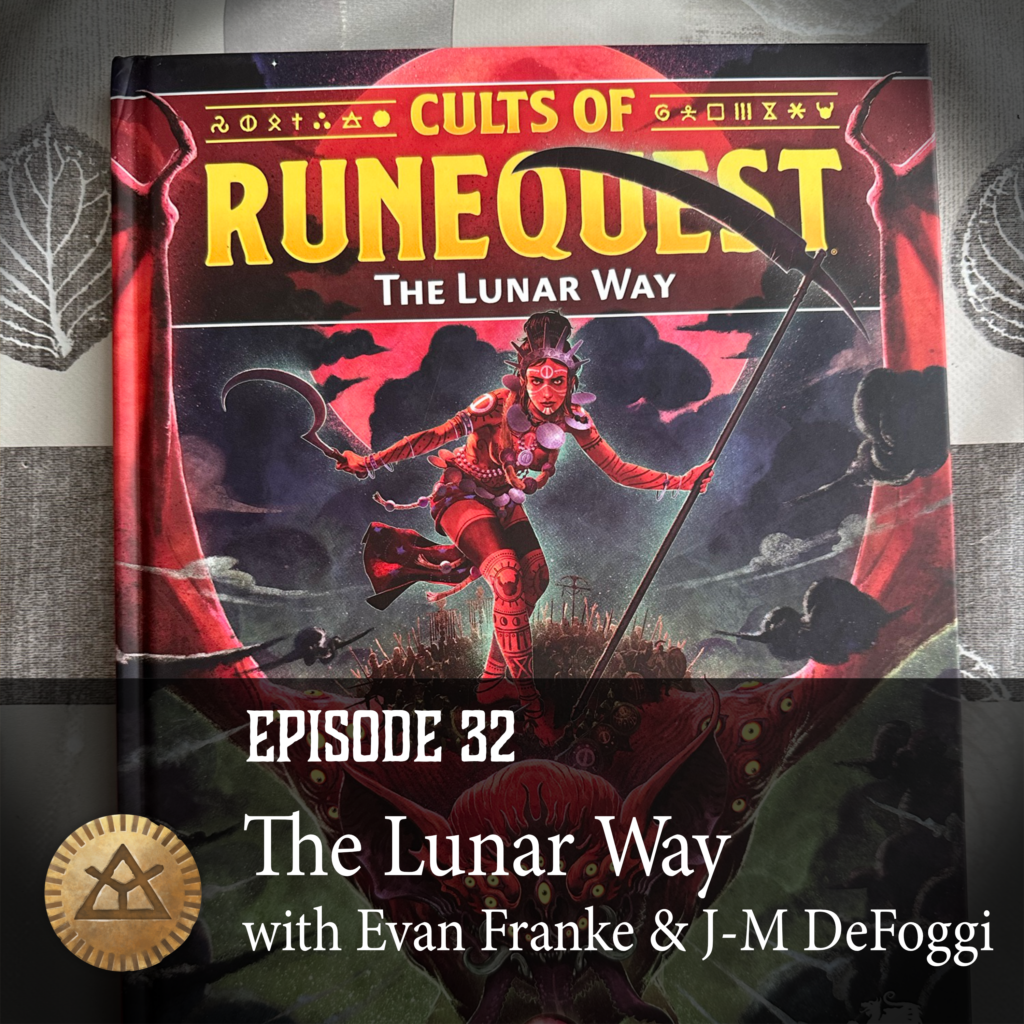
Our Guests
In this episode we welcome returning guests Evan Franke and J-M DeFoggi (who had to leave early because of Imperial Administration requirements). You would of course know Evan and J-M from our previous episodes with them: Chaos Rises! (episode 26 about 13th Age Glorantha) and Jackals and Ancient Worldbuilding (episode 19 about J-M’s Bronze Age fantasy adventure game, Jackals!)
Our guests are also found in these fine places:
- The Exploring Glorantha Series on YouTube
- Lots of Iconic Production endeavours, including YouTube and Patreon.
As we release this episode, Evan’s Red Moon and Warring Kingdoms is officially out! Go grab it now, it’s FREE!
Show Notes
Things we mention during this episode, in vague chronological order, include:
- TORG
- Shadows of Esteren
- The Arms of Nargash-Tor (for Palladium Fantasy)
- The Cults of RuneQuest books and, of course, The Lunar Way in particular
- You can read Ludo’s own reviews of these books here
- As always, we mention the usual Gloranthan sources:
- The Glorantha Sourcebook (or in PDF, or on DTRPG)
- The Guide to Glorantha (or in PDF, or on DTRPG)
- Our episodes on Furthest and Imther, and their corresponding books:
- Are you using The Lunar Way mostly for PCs or NPCs?
- Themes of a Lunar scenario or campaign
- Citizens of the Lunar Empire
- Xena: Warrior Princess featuring many Greek gods
- The Red Goddess as a guest star in your campaign
- Glorantha, where everybody’s an Illuminated asshole, and nobody’s the good guy
- The Empire’s trading, culture, politics, etc.
- Star Wars
- Glorantha as a Manichean settings vs a nuanced setting
- The problem of the “simple” settings of our youth becoming more nuanced as we grow older
- RIFTS and the Coalition States
- The X-Men, Magneto, and the Brotherhood of Evil Mutants
- Memorable Lunar villains
- The morality of the Lunar Empire
- The Lunar Empire as a pretty great place to live in, actually
- There’s no fairness and civil rights in the Bronze Age
- The Lunar Empire as the Roman Empire
- The human flaws and administrative weight of the Lunar Empire
- The Crimson Bat was self-defence!
- Struggling to show the Lunar Empire as a nuanced faction
- Using the USA as a model for the Lunar Empire
- The editorial history of the Lunars in RuneQuest publications
- White Bear & Red Moon
- Harrek the Berserk is “not a great guy!”
- Beatpot Aelrwin
- Argrath is up to no good, meddling with stuff he shouldn’t
- Evan is available for rent as a guest Argrath
- Black Spear, and Nick Brooke’s take on Argrath
- Alexander The Great
- Sartar
- Griffin Mountain and Strangers in Prax
- Our favourite cults in the Lunar Way
- The Seven Mothers as the “Justice League cult”
- The awesomeness of the Crimson Bat cult
- The Nysalor/Gbaji chapter and its fourth-wall breaking aside
- Crimson Bat feeders publishing city rankings for their “visits”
- The demonic cult of Yara Aranis, which is pretty much as bad as the Tusk Riders
- Maran Gor is bad too!
- Sheng Seleris, the Gloranthan Ghengis Khan
- The Carmanian Empire roughly explained
- Lunar Magic, and how to use it in play
- Getting the Glowline to fail, so you can land your Stormtroopers and AT-ATs
- Ghost heist at the Lunar Temple!
- Harry Potter and the Lunar College of Magic
- Questworlds and 13th Age Glorantha as alternate game systems for certain campaigns
- The fine points of Lunar phases
- There are no physics in Glorantha
- Dragon Pass is a distraction for the Lunar Empire, which is mostly worried about the Pentans
- Dart Competitions as a Jason Bourne spy-thriller
Credits
The intro music is “The Warbird” by Try-Tachion. Other music includes “Cinder and Smoke” and “Skyspeak“, along with audio from the FreeSound library.
Glorantha Initiation: Amber and Christian, Wolves, Book Problems, and Actual Play

Guests
Our guests for this new episode of the Glorantha Initiation series are Christian and Amber, from DMs After Dark! We chatted with them back in… (checks notes) November 2023! How time flies… you can find DMs After Dark in many places around the internet, including:
Amber has written a few things, including some short story in the Monstrous Feminine anthology, and can be found at the West Warwick Public Library where she curates the gaming collection.
Christian has written and published several scenarios, including “Zennor & The Sins of St Senara” and “The Night Mother’s Moon“, for Call of Cthulhu, published by Stygian Fox.
Show Notes
In this episode we talk about, more or less:
- Luring Amber with promises of playing a werewolf (Telmori)
- Using Chalana Arroy for luring in the cleric-loving player, and shamans for the player who likes weird characters
- Animism, the Spirit World, and other gameplay elements that are fairly unique to Glorantha
- Starting with the Starter Set, then going to the Sourcebook
- Pacing actual play games, making it feel like sitting at an actual table
- RuneQuest grognards coming to help with the rules
- Christian has a “book problem”… Ludo can relate
- Using Six Seasons in Sartar as a way to start small and get all the PCs together
- Collaborative storytelling and world-building
- Reconciling player-created lore with “canon” lore
- Being mindful of players and the audience when preparing storylines, especially cult initiations leading into mythologies like the Unholy Trio, the Sex Pit, etc.
- Amber acting as a GM assistant, especially in the early stages of preparation
- Ludo mentions his short story about Chalana Arroy and Mallia
- Ducks! Broos!
- Verisimilitude and/or realism to the Bronze Age and other antiquity history
- Approaching sensitive topics, and doing editorial work with players to match their comfort levels
- Casino Town! Cwim! The Crimson Bat! What makes sense in your Glorantha, and what seems out of place
- Early RQ2 dungeon crawling vs later RQ2 dungeons with ecologies and mythologies
- Understand the vibe of the system over the rules of the system
- Mary Renault’s The King Must Die and The Bull From The Sea, as good sources for getting a grasp on the antiquity
- RuneQuest’s crunchy combat system, with its many moving parts and possible combinations
- A wild mention of Shadows of Esteren makes Ludo happy!
- Telmori lore! Of course we mention Brian Duguid’s Children of Hykim (see also our interview episode with Brian)
Credits
The photo of the red deer used in the title image is by Michael Brace.
The intro music is “Dancing Tiger” by Damscray. The outro music is “Islam Dream” by Serge Quadrado. Other audio is from the FreeSound library.
Episode 31: Treasures of Glorantha

A new episode is out but Joerg still doesn’t have his replacement laptop so there are no detailed show notes again!
Our Guest
We welcome the ever prolific Austin Conrad back on the show to talk about his new book which is all about magic items.
Links to Austin’s stuff:
- Treasures of Glorantha Volume 2: Relics of the Second Age
- Treasures of Glorantha Volume 1: Dragon Pass
Note that the above are affiliate links — please use them, thank you!
You can also get the old Plunder book for RuneQuest 2nd edition in PDF and in POD from Chaosium.
Credits
The intro music is “The Warbird” by Try-Tachion. Other music includes “Cinder and Smoke” and “Skyspeak“, along with audio from the FreeSound library.
Episode 30: Questworlds Glorantha
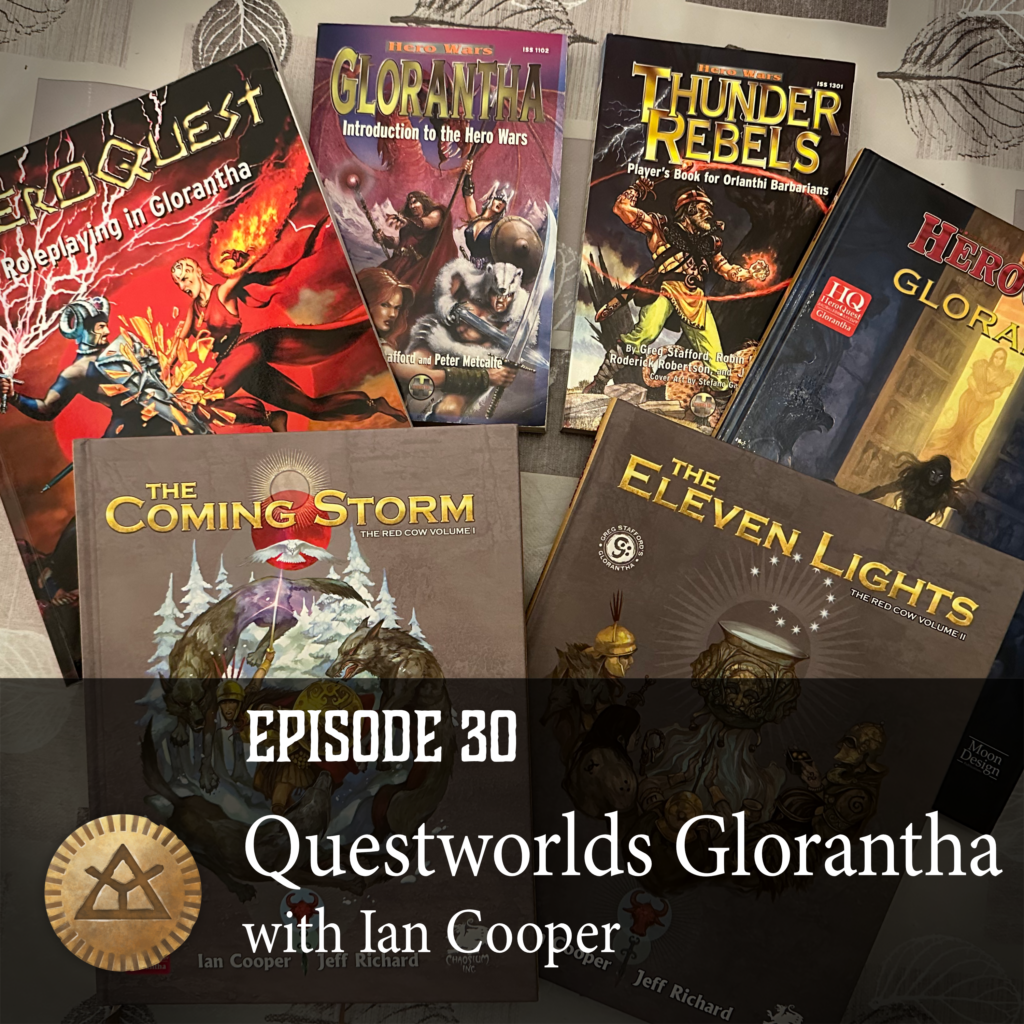
Show Notes
Joerg is still without a computer, so not only are there no detailed show notes again, but he’s not here to stop me from giving a clickbaity title to this episode! Because, indeed, we have zero news about a Questworld Glorantha book… if anything, it’s the contrary. But what we do have for you is Ian Cooper as our guest!
Ian comes on the podcast to talk to us about the imminently coming Questworlds. We talk about what it is, what it isn’t, how its mechanics work, and what it’s good for.
- You can find Questworlds’ free SRD here.
- You can find Ian on Mastodon here, on Bluesky here, and on Twitter here.
We also chat about the game’s history as Hero Wars and then HeroQuest (1st and 2nd editions). Ian tells us about his Red Cow campaign books, The Coming Storm and The Eleven Lights, and what happens in the unreleased sequels that he’s played through. We talk about Greg Stafford’s design philosophy and involvement in the early days of the product line, the differences between the other product lines, and more!
Of course, it’s not a zero-sum game, so Ian also makes a point that you can play some games with RuneQuest, and some other games with Questworlds… it’s all about the sort of experience you want for a given story.
Credits
The intro music is “The Warbird” by Try-Tachion. Other music includes “Cinder and Smoke” and “Skyspeak“, along with audio from the FreeSound library.
Glorantha Initiation: Joel, Theology, and Old-School Video Games Boxes
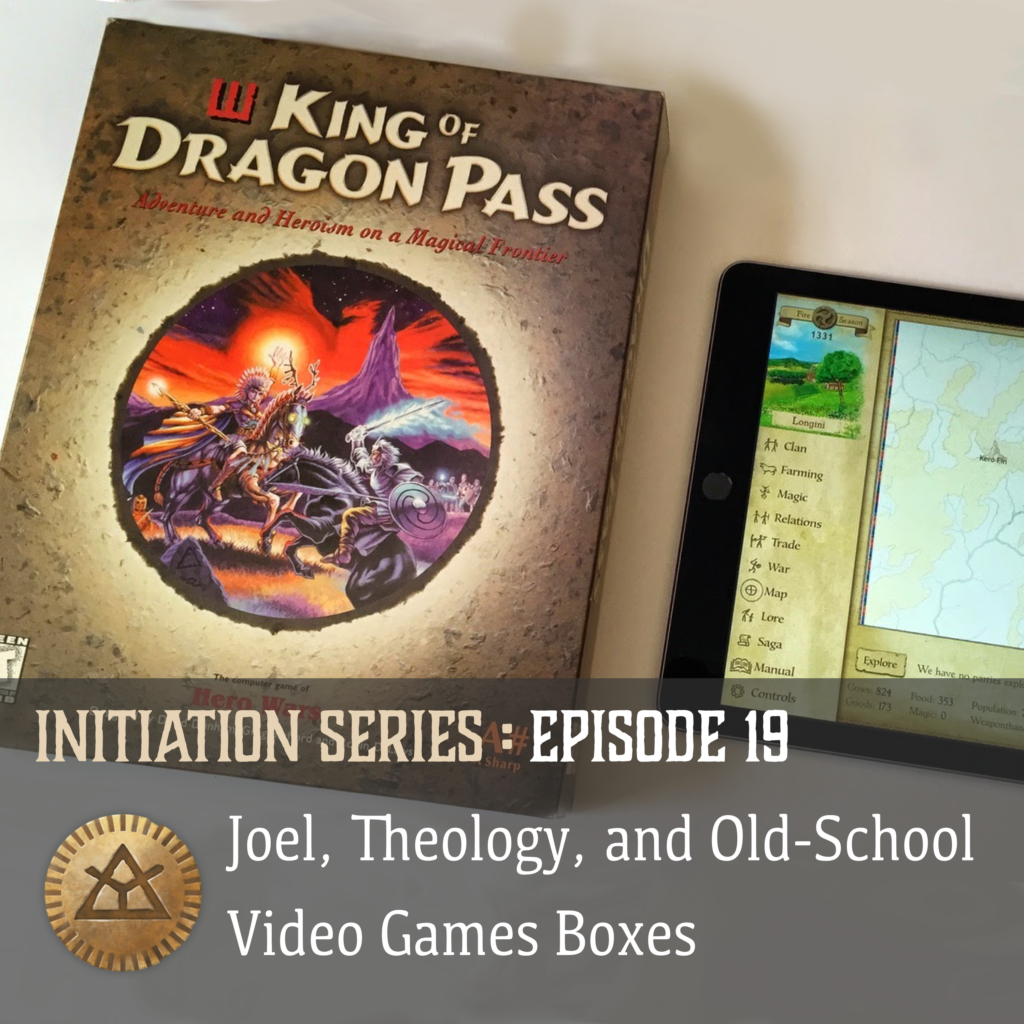
This time we interview Gloranthan newcomer Joel Bridge, who thinks we’re intimidating but also nice! Joel is originally from New Jersey but currently lives in San Diego. You can find Joel on Discord as @sirjamesfriendofthecolonel, and also sometimes on the Glorantha-related subreddits r/Glorantha and r/RuneQuest.
Show Notes
Here are things we talk about in this interview!
- JRPGs like Final Fantasy and Parasite Eve, but also other video games like Metal Gear Solid which ingrained a love of deep lore and complicated narratives in Joel’s mind.
- Games where mechanics are intertwined with the setting.
- Finding D&D at a board game cafe in New York and starting playing roleplaying games… this was followed by Vampire: The Masquerade and Vampire: Requiem.
- Creating a character one way and roleplaying them another way.
- Playing Don’t Rest Your Head and Unknown Armies. We digress a bit about Unknown Armies’ “One Shots” scenario collection, where Jailbreak and, especially, Fly to Heaven are featured.
- Life-path character creation systems, especially Traveller’s.
- King of Dragon Pass, back when it was a game in a box with manuals. We digress again about old school video games that had actual good stuff in the box, not just a DVD, especially one Ludo’s favourite video games ever, the Ultima series (you can get them on GOG).
- Playing KoDP again later on mobile/tablet to finish it properly. Using the Glorantha wiki to learn more about the lore, mostly by looking at the references mentioned at the bottom of the pages. This led Joel to getting some old RuneQuest and HeroQuest products in PDF before buying the new RuneQuest: Glorantha books.
- The idea of time and god in theology/philosophy classes. Roughly speaking, gods need to be outside of time to not be subject to change. Joel was interested in the metaphysics of the setting, but the RuneQuest mechanics were intimidating.
- Joel’s ideal game: KoDP but with an “adventure mode” like in Dwarf Fortress to play members of the tribe. Joerg mentions that he did play games like this with HeroQuest: Glorantha (now Questworlds), which had some rules for handling the clan. We mention the overlap between KoDP and HeroQuest in the person of Robin Laws.
- Talking about Six Ages and its sequel, we answer questions about heroquesting. Joerg explains it as a “passion play”, and goes into a bit more detail. Joel draws some analogy with his own religious experiences and theological education.
- Answering more questions about the mythology and cultures of Glorantha (the Red Goddess, Chaos, etc) sends Joel on another philosophical discussion about Platonic ideals, “true evil” as non-existence, and other erudite things. Joerg explains his take on Chaos.
- Joel and Joerg discuss the different world views and creation myths on Glorantha. Ludo compares the “default” theistic Gloranthan creation myth with Greek mythology, but notes that there are other views. Joerg launches us into the draconic view, and Joel notes the parallels with Hinduism. While we’re at it, Ludo even mentions the Malkioni humanists. Joerg adds more information, and Joel sees it as an interesting mix of many real-world inspirations from all over the map, across many different eras. Of course, Plato’s Republic gets a mention.
- We talk some more about the Hyalorings that you play in Six Ages. Joel asks about their pedigree, so Joerg is happy to provide him with their story from the God Time to the Second Age. This leads us somehow to talk about Argrath and the Red Moon & White Bear board game.
- Joel says he would like to get an RPG group going but he hasn’t been able to so far. We talk about the different types of gameplay possible in Glorantha.
- Asking Joel about what he doesn’t like about Glorantha, he mentions how there’s a lot of material that’s hard to shuffle through. He mentions how Harnworld (another favourite of Ludo’s) also has a lot of material, but is well organized. With Glorantha, you’re “feeling around in the dark”, dealing with many competing systems and titles. Joel says that starting with the video games was good but was just the tip of the iceberg. Joerg recommends the RuneQuest Starter Set, and the usual other books.
- Joel mentions that he listens to podcasts to get into history and lore — for Earth he regularly follows the History of Rome podcast, the Revolution podcast, and two History of China podcasts. Ludo mentions that he got interested in Earth ancient history after getting into Glorantha.
The actual interview actually ran much longer than this episode’s duration, and a lot of it was cut in the editing room. So if you think we’re digressing a lot, believe us, it was even worse.
Credits
The intro music is “Dancing Tiger” by Damscray. The outro music is “Islam Dream” by Serge Quadrado. Other audio is from the FreeSound library.
Episode 29: Furthest in Tarsh
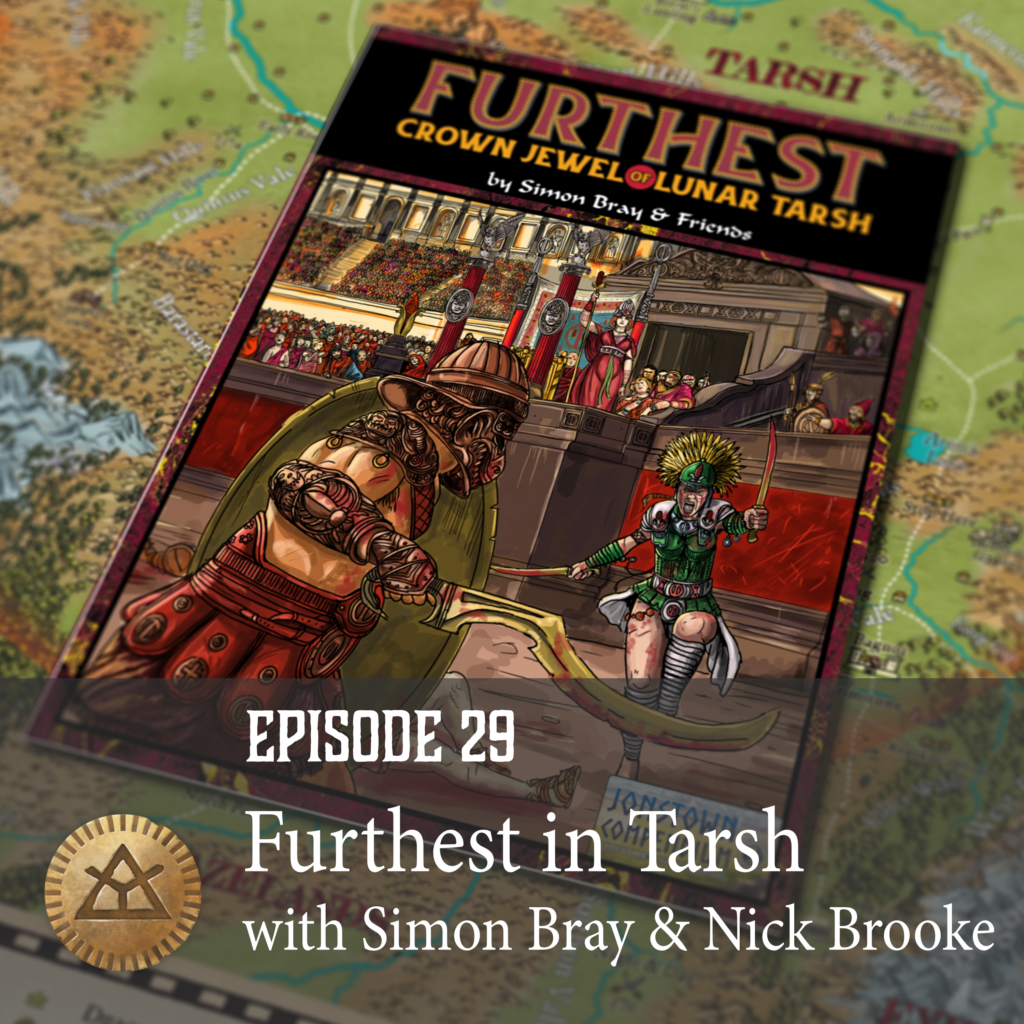
Our Guests
For this episode, we have Nick Brooke and Simon Bray as our guests to talk about Simon’s book Furthest, Crown Jewel of Lunar Tarsh, and about what goes on in Lunar Tarsh in general.
Show Notes
There are no fancy show notes for this episode yet: Joerg’s laptop seems to have been blown up by Orlanthi rebels who don’t want the truth to be told… we will edit this post with the final show notes when Joerg has acquired a new laptop. In the meantime, you can go buy Simon’s stuff:
- Furthest, Crown Jewel of Tarsh (PDF & hardcover)
- Simon’s Redbubble shop, including the Map of Furthest and the Map of Tarsh.
Bonus stuff:
- Hydra! (PDF)
- Adventurers from the Lunar Provinces (PDF)
Credits
The intro music is “The Warbird” by Try-Tachion. Other music includes “Cinder and Smoke” and “Skyspeak“, along with audio from the FreeSound library.
Episode 28: Gloranthan Free Forms
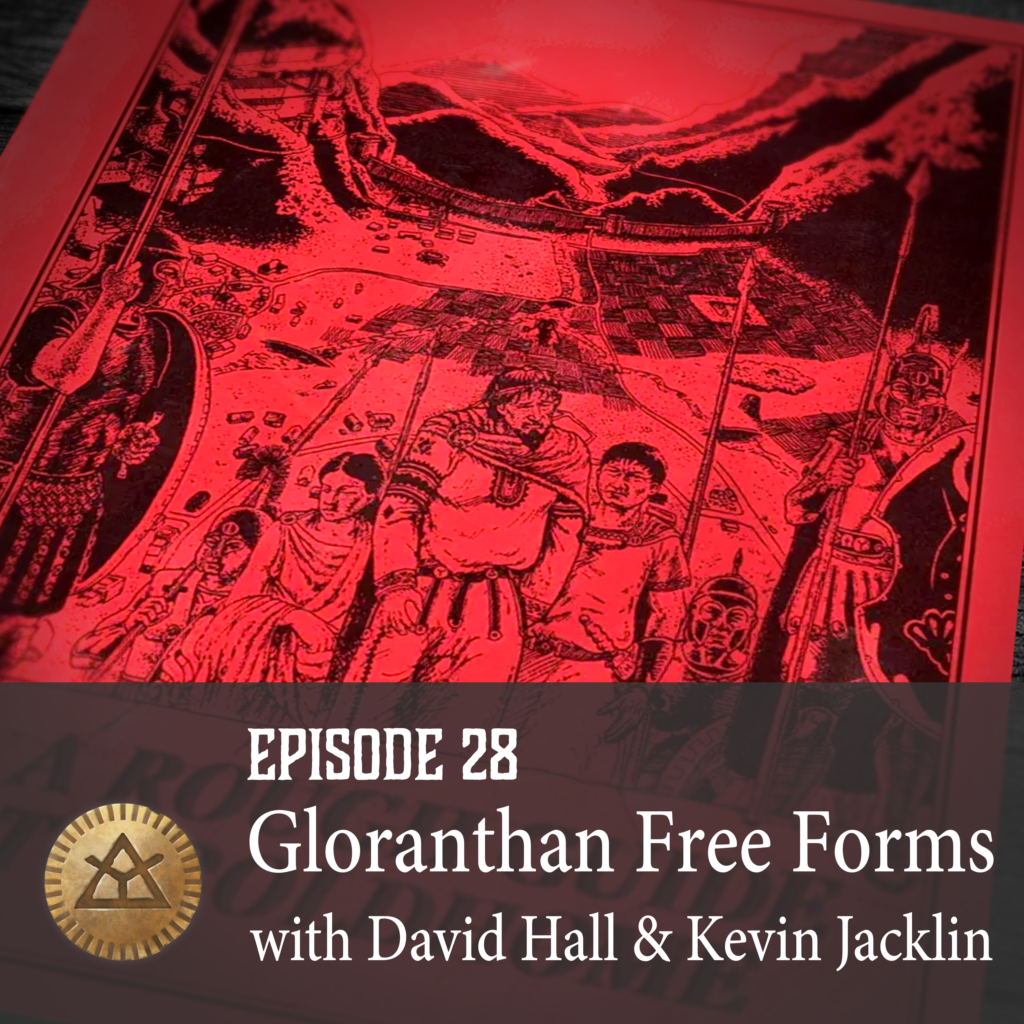
This episode comes much later than anticipated, but this is Ludo’s fault! Apologies to all.
Our Guests
In this episode we welcome Kevin Jacklin and David Hall:
- Kevin has been writing freeform games for a very long time, and table-top role-playing games a little before that, becoming a huge fan of RuneQuest. Kevin names a fateful meeting with our other guest David Hall at a board-gaming convention in the West of England that had a big bearing on what happened afterwards.
- David Hall started producing a RuneQuest and Glorantha magazine by the name Tales of the Reaching Moon back in 1989. The magazine lasted until 2002 across 20 issues. David was also behind the Reaching Moon Megacorp which produced a number of supporting Gloranthan publications over the same period. Of course the Megacorp was not as massive as the name suggests, it was basically David working part-time out of a very small flat in Slough. Lastly, David was the organizer of the Convulsion game convention from 1992 to 2002, which continues to this day by the name Continuum. And it was at the first Convulsion in 1992 that David and Kevin ran their first freeform, Home of the Bold.
Main Topic
Ludo admits that he has no experience at all with freeforms but then asks Jörg when he first got into this form of roleplaying.
Jörg’s first exposure to freeforms was in the same year he met David for the first time, in 1993 when David visited our annual German RuneQuest convention. While it was not a Gloranthan freeform, it was a Call of Cthulhu freeform which saw Jörg wearing his lab coat chasing after a bird mummy and other stuff. Ludo asked whether there was someone actually dressed as a mummy, but that mummy actually was a prop – a desiccated bird carcass originally wrapped into linen bandages.
David sadly did not play in that freeform, as it was German language only, but we (the German RuneQuest society that had been organizing these conventions since 1990) remedied that language problem two years later at our convention near Berlin. The next year Jörg attended the second Convulsion convention in Leicester and had a role to play in How the West Was One, the second of the Reaching Moon Megacorp Gloranthan freeforms.
What is a Freeform?
David describes a freeform as a microcosm of fantasy roleplaying.
Home of the Bold is a fifty player game where each of the fifty players gets a pre-generated character. They get objectives they are trying to meet, they get a list of characters in the game who they are supposed to know, and they get a few abilities and spells to help them get along.
Effectively, the cast covers the Lunar administration, the Lunar military, tax collectors, spies, merchants, and on the Sartarite side it includes the city councillors, guilds people, merchants, the local underworld, city constables who look after the local underworld, heralds, and various members of the tribes who are in the city of Boldhome. Altogether a microcosm of the whole of Sartar and the whole of the city, and effectively what happens is that everybody talks to each other. As the directors of the freeform “all we do” is to write the characters, set up the scene, sort of coil the spring, and then just let it go.
By the end of the game, the directors will know a lot less about the game than the players will know because they will be living the game and they will work out what’s happening.
Kevin adds that it is very much a living thing. To be ultra-precise about it, this is not people sitting around a large table rolling dice, this is a large playing area. People will very often costume for this. It runs over several hours – Home of the Bold in particular is an eight or nine hour game, with a break in there – so it lasts pretty much for the whole of one day of the convention, and people can be caught up in it.
That is something that regular table-top roleplaying usually doesn’t do, you can actually become lost in the whole thing. This direct experience is one of the huge benefits of the whole freeform game.
Something like that is very taxing to write and organize, which is why you need a convention to support a freeform game. You cannot really run a massive freeform anywhere else.
The very first Convulsion had a big freeform game, and David brought Kevin on board because he knew a little bit about them.
Kevin’s experience with freeforms originated from a conversation with Sandy Petersen because he had written a Call of Cthulhu scenario. In the late eighties and early nineties Kevin got a chance to visit the Chaosium headquarters because the head offices of his company were situated in the Bay area, too, giving Kevin a really good excuse to go and visit Chaosium and see the folk at work there.
A year or two later, Sandy had moved to Microprose on the east coast of the US, and he told Kevin about a group of folks there who had started to write freeform games. This was something that had been going on mainly on the east coast and west coast of the US, something called Interactive Literature., which is in fact live action theatrical roleplaying or freeforms. Sandy had got into a group that included e.g. Lawrence Shick who had written for D&D. The group was called Cruel Hoax, and they were putting on a big freeform in a convention on the east coast, and because Kevin had accumulated lots of air miles, Kevin decided it would be a good idea if he and Dan Steel, a friend of his, flew over to take part in this.
The game was called Café Casablanca, effectively a mash-up of all the film noir of the late 1930ies and 40ies including Casablanca of course. Having taken part in this, Kevin thought this was a really cool idea (Details can be found on the Convivium convention website run by Kevin)
David knew Kevin, and when Kevin told him about Cafe Casablanca it sounded amazing. David showed off his costumes and everything, and David wanted to have one of those freeforms for the Convulsion convention he was setting up in Leicester for 1992, so they sat down to write one.
David says that had they known how much work it was to write a freeform, they might not have started that. Kevin remembers that it was not quite that straightforward – they had to convince the rest of the Convulsion committee that this was a cool thing to do. Because nobody had ever played a freeform, and because they needed how cool they really are, Kevin wrote one which he ran at his house for the committee. That was Adventures of Robin Hood, Kevin asks David whether there exist any pictures of him in tights, which David (quite vehemently) negates. Anyway, the committee seemed to like the concept, and the following year they introduced Home of the Bold to an unsuspecting public at Convulsion.
Freeform Plots
Ludo falls into his role as the newcomer to this kind of activity, and he asks about what to expect from a freeform. He has some idea about murder mystery games which have a inciting incident – the murder – and then people trying to get behind who did it, and that’s the big resolution.
David replies that there are always a number of plots in the freeforms. There are about ten or twenty plots in Home of the Bold, some bigger than others. There are probably murders that need to be solved, heists the underworld is trying to pull, but the main backdrop is the occupation by the Lunar Empire, so there is a big aspect of that.
The directors set this thing up, then it all depends on what the players do. There is no such thing as a right ending, but there is a likely ending.
Kevin adds that one of the things the directors do put in place is scaffolding which gives players something bigger than themselves to do. So for example there is an election, and it is in the objectives of some of the players to try and get elected, so you have to go around and persuade people, or blackmail them or whatever you want to do to vote for you. There is a chariot race, and there are prizes for people who win the chariot race. You have all of these things that people hang on to that are part of something that is really big, and that’s a cool thing about freeforms. Everybody does have their own objectives, but the trick with writing a character sheet is that if you need to go and find X, there is going to be someone who has got X or who has information how to find X.
Every player is the star of their own movie, things are happening to them. If you talk to the lowliest street beggar about what is going on in Home of the Bold, it is going to be the glorious rise of the street beggar, he probably doesn’t care about the Lunar occupation as long as he is getting a bowl of soup at the end of the day. The writers basically provide half a novel for each of the players and give them a bunch of objectives. The really good players are ones that make up more objectives for themselves, which is when things become self-generative.
David adds that the writers have another technique. Some player characters get an envelope which is to be opened when there is a life-changing event happening to them. When a certain triggering event happens, their whole objectives may change.
There are romance plots as well, you may end up sharing objectives with people who you may not accidentally fall for. There are all sorts of things that can send people off into a different direction.
There is one rule though that unless it is into the last hour of the game, you never make it a player’s objective to kill another player character. That is a big no-go in freeforms.
Ludo asks whether “except in the last hour” means that there is going to be a big blood-bath.
Kevin explains that some people spend weeks and months to prepare their characters for the game. There usually is a good mix of genders attending such a freeform. A lot of players like to do the costuming bits, some might have a different costume for every hour of the game. It is fantastic to see what the players bring to a freeform, it can be one of the satisfactions in preparing such an event. So what you cannot do is tell a character to go and kill character Y, because if you kill that player’s character thirty minutes into the game, that player is going to be terribly annoyed as all their preparation will have been for naught from that point onward.
However, a good public death scene is fantastic in a freeform, especially for a baddie, so the general rule is that yes, in the last hour of the game you can actually kill another player’s character.
Jörg interjects that there is one way you can kill a player character when there is a villain or victim who needs killing if you tell that to the player of that character beforehand and you provide them with the replacement character from the start.
David elaborates that yes, you can play a villain in the game, and often players will sign up for playing a villain in the game because they are fun and have a lot of agency. The thing about villains is that for 95% of the time they are a formidable foe of the heroes who are quite likely a bit incompetent, but in the last five percent of the time they need to fail. All this may entail imprisoning the hero, torturing them, telling them all of their plans, where they are going to be next week, and then the hero escapes, strangely.
The game is about creating a maximum game fun environment where the players know who the villains are.
The writers use very broad strokes that people know from movies or comics etc. Especially when people aren’t that familiar with the background you need to employ some well-known tropes that people can connect with. Glorantha as a background is a little specialized, and people playing Glorantha games usually know a reasonable amount about it, but the authors try not necessarily to assume that familiarity. You don’t have to be a gloranthaphile to enjoy any of the Gloranthan games Kevin and his friends have written. The character sheet will contain some necessary basic information about the background relevant to the character, and there are also booklets presenting the background of the game to the players that are handed out before the game.
With conflicts up to and including killing other player characters, Ludo asks about the actual rules mechanics that are used to resolve conflicts in the game.
Kevin observes the more he has written freeforms, the fewer rules he has actually put into the games. There are freeforms where the players actually carry around a little shaker with a die that will be used to resolve conflicts, but that doesn’t work all that well. Kevin’s best advice to players is to actually talk to other players to find a mutual way to resolve the conflict that is actually dramatically satisfying, even (or especially) if one of you loses. If there is no mutual solution, the players get to use stone paper scissors just to get a decision. David adds that a lot of the abilities and spells given to the players are built around that resolution mechanism, which especially in the last hour of the game should be used to get a resolution to their own objectives, too.
Taking the example of the chariot race featured in Home of the Bold, there are obviously going to be some rules around that chariot race, allowing people to feel that their skill or their special ability is going to help them to win that event. So there are some specific rules as well as some general rules.
Freeform Metagame
Ludo asks whether that is also where as the game masters you go around the rooms and help people with that, to which David replies hopefully as little as possible.
The directors are always there to help, but they really try not to get involved unless they really have to be.
Jörg mentions that the directors tend to cheat a bit about that involvement, assigning some players a role that requires them to go around at certain times and announce a new event or similar. So the player how has the town herald gets the job to make the players aware of things happening.
David explains that there are some events in the game that are pre-set. To some extent, all the freeforms set in Glorantha are based on a historical (or prophesied) event in the setting, that tells how the Malani tribe was created and all sorts of things. But being things actually played out by players, the events don’t usually end up like canonical history has them ending.
Ludo then asks whether there is a post-game presentation of what everybody in the game was up to.
Often there will be a big event at the end, in-game. Actually it is very important to have a debriefing or decompressing session after the game. Sometimes people get really caught up in their game and their character, which can be a very emotional thing, so you need that time to allow people to understand that it wasn’t personal, that it wasn’t the other player doing bad things to you as a person, that it was their character doing stuff to a character whose role you took on.
Ludo observes that this can be a general problems at conventions where you play with people you don’t know, so you cannot be sure whether that other player is acting like an asshole because that’s how his character is set up or whether that person actually is an asshole in real life.
Kevin stresses the importance of having the opportunity after a freeform to get things off your chest, even if it is only to boast about things you achieved in the game, and talk about some of the plots you were involved in. Often someone will stand up and talk about a plot, and other people will chime in to clarify what actually went on (from their perspective), possibly across the other side of town in their experience of the game. Learning about events that you weren’t directly involved in actually is a nice thing as it gives you the feeling that you were involved in something bigger than your character.
Jörg mentions the two after-action write-up collections submitted by a large number of players in the game which were published as fund-raisers at the follow-up conventions and distributed to the contributors.
Kevin remembers that to have been a quite hefty bit of work, and they stopped producing those quite quickly.
A Few Famous Gloranthan Freeforms
Ludo then asks about the freeforms that have been mentioned to him, like Home of the Bold or How the West Was One.
David explains that Home of the Bold was set in Boldhome during the Lunar occupation. That is about as much he wants to say at this point in order not to give the plot away.
How The West Was One is set in the west of Glorantha, it is about an attempt to bring all the various Malkioni sects together at an ecumenical council with attending people wearing funny hats and working at not having too many crises of faith. These crises of faith had a nice mechanism (involving sealed letters being opened) where people would go off chewing scenery (pretending to whip themselves or other expressions of religious drama) and changing the direction of their characters and their goals.
Life of Moonson was set in Glamour. It was about choosing the new mask of the Red Emperor, featuring all the people you would expect in the empire like Jar-eel, Beat-pot Aelwrin, the Batman.
Ludo points out that that is the freeform that is available on the Jonstown Compendium. People get all the material possibly to run it on their birthday parties (or other events where there may be fifty people willing to spend a day on a freeform).
Fall of the House of Malan by Jeff Richard and Neil Robinson, produced around the way the Malani tribe was basically broken and the Lismelder tribe splitting off.
Another one by the same team was Orkarl’s Bull, with an epic cattle raid at the center of things.
There was People of Pavis (run at German RuneQuest Convention in 1997) during the Lunar occupation, there was Rise of Ralios (with The World’s Greatest Tournament the accompanying background booklet, run at German RuneQuest Convention in 1996) about the return of Arkat – five times, there was the Broken Council (at the San Francisco RuneQuest Con) about the birth of Nysalor, and there was Home of the Bold, the first bilingual freeform at the German RuneQuest convention 1995 outside of Berlin which was about the Lhankor Mhy temple of Jonstown having to pay a tribute to the imperial library in terms of valuable books.
Jörg adds a few other offerings the conventions had later on, like e.g. Harem Nights set in Fonrit, Griffin Mountain or Bust set in Balazar, and David adds even one set in the Grey Dog Inn, The Murder at the Grey Dog Inn. (A more extensive list is found in this blog post of Jörg’s.)
The very large freeforms sort of petered out about 2002-ish, becoming much much smaller since then. The reasons for that change in format were mostly practical ones as it is quite hard to find and then keep fifty people engaged for a whole day.
There were smaller ones like for instance Tarsh War (which got published by the Reaching Moon Megacorp).
David rightly mentions the original Gloranthan freeform which was Sartar High Council by Greg Stafford, published in Wyrm’s Footnotes #7 (and reprinted in Reaching Moon Megacorp’s Wyrm’s Footprints, a bit of a precursor to the Glorantha Sourcebook catching up all the good stuff from Wyrm’s Footnotes at a time when they were out of print).
David thinks that Chris Gidlow’s smaller freeform games come a bit more out of the table-top game. They are normally played around a table but have very strong freeform elements to them.
Jörg describes how the big freeforms usually prepare the gaming site indicating various in-game locations by associating features of the gaming site. These may include the temple of Boldhome, the royal palace, the thieves’ den, the market place where you can meet everybody, and some of these places have access restrictions, often enforced by some of the players. There is a bit of faction building simply by where your character can go in the game.
David describes the locations in Home of the Bold and their roles: The market place, where all people may gather and where the herald makes his announcements, the Lunar headquarters, Geo’s Inn where all the Sartarites may gather.
Home of the Bold 2024
Ludo mentions that David and Kevin are going to revive the tradition of having these freeforms at the Chaosium convention 2024 in Ypsilanti, Michigan, running what they call the Director’s Cut of Home of the Bold. The original game is for eighty players, but David says they could not get eighty players now, so they scaled it down to about fifty players. Play time has been shortened, too, from originally 10 hours to about 8 hours with a break.
Looking back at the original game, David says that it was really basic, wonderfully carried by everybody’s enthusiasm for the whole concept. He and Kevin have accumulated experience from writing and running a lot of freeforms since then, and they hope this one will be a bit more polished.
Kevin adds that Chaosium is very keen to have this freeform, they shared the layout of the convention ground to be able to set up the event. Chaosium is aware that this is a thing they can only do at a convention, something they cannot do normally.
In many roleplaying conventions you hardly see anybody because they are all in rooms, hugging their gaming tables, which is okay but is not hugely different from what you can do at home. Freeforms are one of these things bigger than you are, like also the legendary auction.
David and Kevin are expecting Jeff Richard to be in the game and are hoping for the other Chaosium people to be able to make at least cameo appearances. Chaosium is a business, after all, and the freeform will occupy some of the co-organizers for quite a bit of the time.
Freeform Goodies
Kevin mentions some of the extra goodies they have done for all of their freeforms, especially for the first one where they did not know whether it would work, and that was to produce some memorabilia that the players would be able to take home even if the freeform may have turned out to flop.
One of these things was the Rough Guide to Boldhome, providing setting information and background. Greg Stafford put in his description of Boldhome, there is a list of all the major personalities (in the freeform, and major figures absent from this action), so even if the whole game crashed and burned (it obviously did not), the players would have a souvenir and something useful out of it.
One of the other things the directors did was actually mint some (lead) coins to use as currency in the game, giving one to each player at the end of the game. These coins represent Lunar coins.
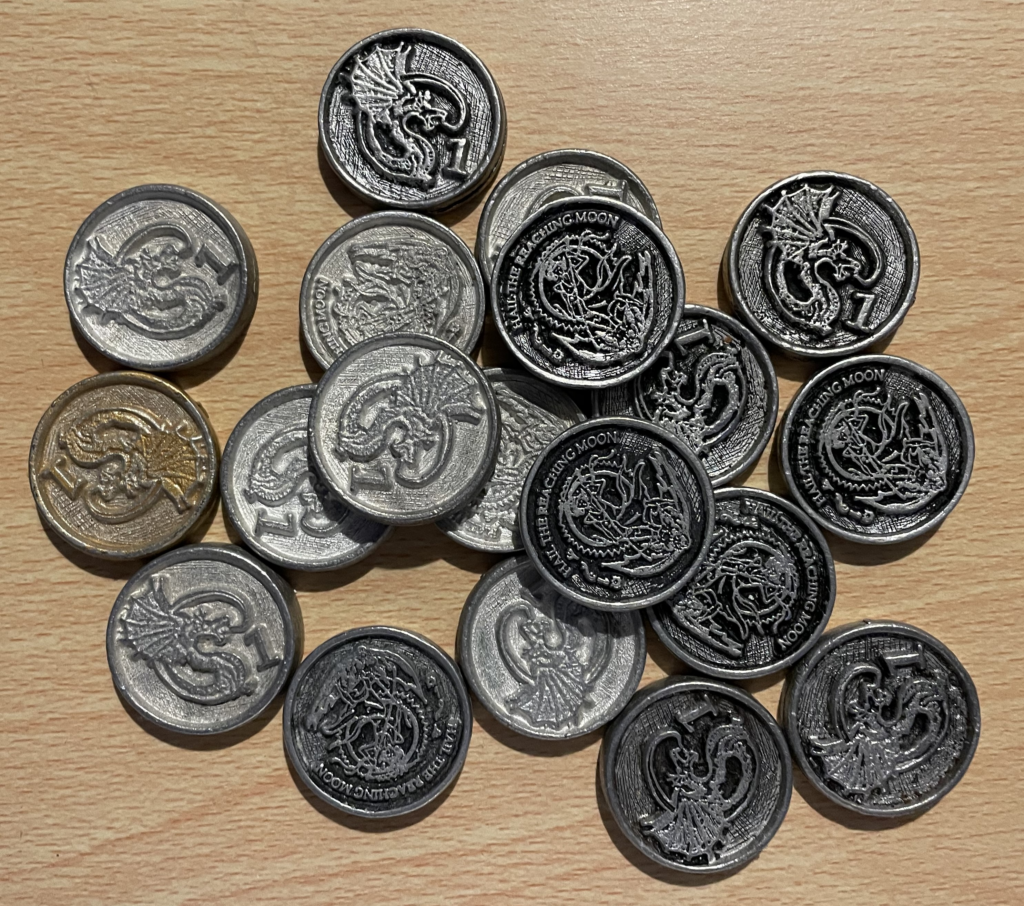
Kevin remembers that he and David were absolutely amazed how the first run of the game turned out, with the players making the game far greater than they had expected. Basically they had been rookies at creating such an event, and they were still printing out character sheets at the morning of the game.
Kevin tried to warn Ingo Tschinke and Jörg about the things they were getting into with Heroes of Wisdom, and indeed Jörg was also printing out character sheets at the convention on the morning of the game.
Other Freeform Notes
Looking back, Kevin takes pleasure at how the freeform community took off in the UK, and how many people’s first experience was Home of the Bold. There is for example Steve Hatherly who runs a semi-professional murder mysteries outfit – confusingly called freeform games – where you can do freeforms at home, and Kevin has actually run a few of these as events at his workplace. Kevin was re-visiting the Continuum convention earlier this year, and it has a strong freeform track as one of its signature features, and does it very well.
Ludo asks about the re-playability of these freeforms.
David agrees that that is the case, although the directors usually have to change a few things between different runs of the game, like e.g. the hidden identity of key villains. As a general rule, these games are very re-playable – the original Home of the Bold has been run four times.
Advice for First-Time Players
One thing to keep in mind as a first-time player is that somewhere in that game there is going to be someone who needs something that your character has – a well-written game will always give the characters things that other characters need as that creates hooks for interaction. The really basic trick to get started in the game is to go around and start talking to people, asking them who they are.
Or you go to meet people that you are supposed to know (hoping that they know who your character is, too).
Ludo asks somewhat incredulously whether these freeforms are going to ask a bunch of nerds to engage in something like a social activity, and the answer is a resounding yes.
The character sheet will normally list people you are supposed to know, and if you are a little bit stuck about what to do you just go to people you know and ask them for help with one of your objectives. Or you might see something interesting happening across the room, and you might go and observe what is taking place there.
The big spectacles like the chariot race will have only a small number actively engaging in these activities, but the other players are encouraged to observe the event, cheer some of the participants or even bet on the outcome. David promises that there will be a bookmaker, and they will be taking in as many bets as the players may wish.
Ludo asks how he has to envision the actual thing happening in the chariot race, and David replies imagination.
Kevin explains that the directors have to run with imagination as the budget does not extent to having full-on chariots on site.
Jörg chimes in that it is advisable to make yourself recognizable in the game. Kevin confirms that you should stand out, and confesses that in some cases he enjoys the prep work for a freeform almost more than the actual play.
Players should make it clear what clan they belong to – Kevin recalls some Lunar players turning up in full Roman military gear.
Players who are less gifted in costuming should at least wear a significant hat. A good hat can say more than a million words.
Jörg tells about the time he was playing Vamargic Eye-Necklace, a bad-ass troll. His costume consisted mainly of a set of pingpong balls with eyes painted on put on a string around his neck and some grey face paint to produce a terrifying troll. Likewise Beat-pot Aelwrin will be recognized by the eponymous kitchen pot for a helmet, for practical reasons (people will bang on it) insert a piece of cloth in between and arrange it like a turban. With red cloth, the Lunar affiliation will be shouted out, too.
David recalls the costume of David Cheng at the Baltimore RuneQuest convention run of Home of the Bold. David was playing a wind child, and what he was wearing was basically a body suit with wings and a strategically placed cloud.
You definitely don’t have to costume like that – a hat would have been fine.
Jörg talks about the after-effects of these freeforms as means of world-building and creating fan canon. Not so much the actual outcome of the game, but the characters in it would become NPCs in many people’s games. Quite a lot of the characters from the original game actually are going to make it into the upcoming Sartar Book by Jeff Richard, while (having some early access to that book) several of the characters from the upcoming book are going to show up in the Directors Cut of Home of the Bold.
The set-up for the upcoming run of Home of the Bold will be fairly canonical, even if the outcome may be vastly different. For the background, they will be using some of the information of the new Sartar book.
And yes, that means that there will be a new background booklet for the players this time as well in case the game should crash and burn.
Speaking of crashing and burning, Jörg opines that he has yet to play or run a freeform where players did not crash or burn part of the setting. In games he ran and co-wrote, he has been surprised by players running off on tangents he would never have imagined.
And that’s perfectly fine, that’s an example of players bringing their own imagination to the game. As David said early on, if you want to know what happened in the freeform, don’t ask the referees, they often have no clue.
David recalls playing People of Pavis, and he made up an objective – he decided it was the Lunar governor-general’s birthday, so he had several of the other players aid him in organizing all sorts of things for the party, and then they had a surprise birthday party where the player of Sor-eel thought he was going to be assassinated.
Tales of the Reaching Moon
We talk a little bit about the fanzine that David and his co-conspirators produced back in the days. David shows up originals of the first and the last issue, the first issue being the classic A4 photocopied and stapled booklet you might expect from a fanzine, while the last issue has a beautiful colour cover and is professionally set and layout’ed.
Ludo points out that the magazine was massively influential at a key time in Glorantha’s publishing history.
David explains that the fanzine came out at the time when Chaosium had licensed RuneQuest to Avalon Hill, and what the fanzine did was it started a new RuneQuest Renaissance at Avalon Hill, starting with Michael O’Brien’s classic Sun County and Ken Rolston’s River of Cradles.
Jörg also points out David Hall’s role in kickstarting Greg Stafford again to produce King of Sartar from a meeting at a Gaelcon in Dublin. David confirms that Home of the Bold did owe quite a bit to the material in King of Sartar.
As David recalls, Greg Stafford had retreated largely from writing for Glorantha due to the detriorating situation with Avalon Hill publishing the RuneQuest boxed sets, and was concentrating largely on his magnum opus Pendragon at the time (the role-playing game about Sit Tomas Malory’s Le Morte D’Artur). Meeting fans enthusiastic about Glorantha, Greg started interacting with the setting again. In 1990, Greg held a convention seminar on heroquesting (that bit of Gloranthan gaming that had been promised for Next Year throughout Chaosium’s second edition of RuneQuest). The things explained at that seminar inspired Tales of the Reaching Moon issue seven which focused on heroquesting.
At one of the Gaelcons, it was just David, Nick Brooke, and Greg Stafford, and David thinks that Nick was in seventh heaven at the time.
Kevin mentions that one of the reasons why Glorantha was very big in the UK was that in the early 1980ies Games Workshop lost the license to reprint Dungeons and Dragons – TSR took it upon themselves to have a local office, so they could do it themselves – and so Games Workshop were looking around for another roleplaying property, and they alighted upon RuneQuest, which is one reason why it was very strong in the UK.
Games Workshop did a few reprints of the pink box of the RQ2 rules.
Ludo claims they ruined the cover when they used a scale-mail bikini-clad skinny female fighter rather than Luise Perrin’s sensibly hoplite-armored warrioress fighting off that rock lizard climbing up her shield.
Anyway, this policy of Games Workshop resulted in a strong followership for RuneQuest and Glorantha in the UK, and another reason why Tales was doing well was that by fortunate coincidence they managed to get the fanzine into UK distribution which meant that it got into all the major games stores over there.
Ludo asks whether this was unusual for a fanzine, and David confirms that it was serendipity at work again. When David and Kevin met at that board-game convention, Kevin’s best mate was in charge of Esdevium Games, and they would take 600 copies out of a total print run of about 1600 copies to retail. As a result, UK gamers got to see support for RuneQuest and Glorantha, which sort of pushed the effect of Games Workshop publishing a local edition.
David recalls that the original Tales 1 was around 290 copies, the second about 250, but by Tales 12 they were doing 1600.
Jörg adds that Tales of the Reaching Moon went global pretty soon – Michael O’Brien (aka MOB) chimed in with issue 4, which is how Tales conquered Australia very early on.
David says they got lucky very early on. Tales 1 started with David, Brian Duguid and Matt Tudor. Matt had plans to get into publishing and was using this for his professional kick-off, while David and Brian mainly wanted to do an A4 fanzine. They met through Greg Stafford, and then it was Jonathan Quaife who helped very much networking with Michael O’Brien, Oliver Dickinson, and all the other people that joined subsequently. Kevin points out that all of this happened before the internet. David remembers that they were writing letters to each other when this started. This gets Ludo wondering whether he ever sent a letter by mail other than Christmas greetings.
As soon as Compuserve and e-mail came came along, they went straight to that new medium.
Ludo asks whether Tales (or the UK in general) ever went through the APA style of self-publication of epistolary exchange. David says that that model never really happened in the UK. You rather created your own A5 fanzine, or a few A4 ones, some of which were pretty well known and almost commercially produced.
While the APA did not play a role in the UK, Greg Stafford himself was a prolific participant in the US APA scene, with his Son of Sartar offerings (that recently have been collected and published by Chaosium as The Stafford House Campaign).
Jörg claims that the APA format sort of carried over into the RuneQuest and Glorantha mailing lists. The original RuneQuest Digest started out in the late eighties even, mainly frequented by people with university access to email, but when it became the RuneQuest Daily in 1993 it exploded in volume and traffic. The archives can be found at: http://glorantha.steff.in
Jörg claims that Home of the Bold (and the Rough Guide to Boldhome and the after-action reports) really opened up roleplaying in Sartar, because before of that, we had Snake Pipe Hollow and Apple Lane as scenarios in Sartar (and the Haunted Ruins as part of Troll Pak), but that was it. All the other material was for Pavis, the River of Cradles, or the Elder Wilds.
David recalls learning a lot about Sartar from Jon Quaife when he joined his Greydog campaign, and then sort of introduced that campaign to his own players.
Ludo asks whether that played a role in re-centering RuneQuest away from Pavis and into Sartar.
David remembers that a lot of the material published in Tales was from that Lismelder campaign, but he also shouts off towards Jeff Richard’s Orlmarth campaign (just across the Starfire Ridges) in Seattle, where there was a lot of mutual bashing between the two rival clans.
Jörg points toward the big metaplot for Glorantha already having been published with the board game White Bear and Red Moon, and the sequence of the scenarios in that game. Right now we are getting this translated into roleplaying books for RuneQuest. Sartarites vs Lunars always was a thing, and for some weird reason nobody really played the Lunars.
David protests that they all played the Lunars – in Tales of the Reaching Moon they had to. While it may have been exposition with the name of the magazine, with Nick Brooke and Chris Gidlow they always had strong representation of the Lunar Way. “We (the Lunars) might not win the war, but we won the argument.”
Ludo points to our recent episode with Nick which was an exercise in Lunar propaganda.
Different Forms of Life Action Roleplaying
Ludo asks about the fair number of different labels for freeform gaming. There are for instance freeforms, murder mysteries, Nordic LARP, whereas tabletop roleplaying pretty much is what it is. So is there more of a segregation of the various types of LARPing going on than in table-top roleplaying?
David agrees that there used to be. They typically said they were not running around the woods whacking each other with rubber swords, that is LARPing, but he things that these rubber sword LARPs have taken on a lot of the aspects of freeforming in terms that they are plotted, that they are better created. Jörg mentions the far end of physical activity LARPing with organizations like the Society of Creative Anachronism or even HEMA (middle ages martial re-enactment).
Ludo asks whether the SCA actually does roleplaying, but they do take on characters in their get-togethers. Whether they actually have plotted games is a different question.
Ludo asks whether anybody ever created a Gloranthan LARP with rubber swords, and Jörg confesses to have accompanied one such as a (drafted) referee, with a group of trolls haunting the vineyards around Castle Stahleck on one German RuneQuest convention.
Kevin also points towards having met Life Action Trollball, which is a different kind of LARPing. David quips that it may be similar to the SCA taking on roles, but Jörg claims that Trollball actually evolved a lot.
Trollball, as played on Eternal Conventions, the inheritor of the location and date of the Tentacles conventions, now have a trollball league where the children in the teams get to play the great trolls and the adults (if you can speak of such in a pastime like this) are the normal trolls. There still is audience participation by tossing in harmless water bombs (at adult players), there still is the Xiola Umbar healer with the really messy healing by putting on flour, and the game still is played in slow motion, at least when it comes to movement across the field. The bashing of others happens in real time, at least as much as the very soft weapons allow.
It still is as extremely silly as it was when Jörg brought his experience from 1994 Convulsion home to a local convention in his hometown in Kiel. There was a reporter from the local newspaper attending the convention, and he was fascinated by the impression of grown up people bashing one another over the head with blow-up toys.
David remembers that MOB was very into Life Action Trollball (he was the one who brought it over from Australia, invented the slow motion rule, for the 1994 Baltimore convention and Convulsion in the same year) and will ask him about a chance to re-introduce this to Chaosium Con.
Jörg gives another shout-out to the rules of the Eternal Convention league as that offers the small attendees a chance to participate in Glorantha. Eternal Convention also offers freeforms for children – taking situations like a meeting of Disney princesses and having the children and some supporting parents playing this out for two or maybe three hours.
Kevin had not heard of that, but thinks it is a cool idea to run with a premise that requires little to no explanation of the setting and giving the children a chance to have a go at this kind of roleplaying.
Kevin observes that freeforming is a very broad church, encompassing a lot of everything. As people got a better understanding of what is going on, the range of topics and people you can draw in has expanded a lot.
Nordic LARPing can be very dark and very deep, psychologically very testing. They are aware that they are exploring something in a safe space, that you probably would not be able to do in another way. That’s a common feature in all forms of freeforming, allowing to explore things in character that you wouldn’t be able to do otherwise.
Ludo talks about his limited understanding of how Nordic LARPs work, with referees approaching the players in game to confront them with a new, usually dark and disturbing new direction of their role, e.g. revealing that that other character is the person who murdered your sister, or a similarly traumatic twist.
Kevin agrees that some of the Nordic Larps can be pretty dark and deep, and some of the topics can be pretty dark. You really need to know what you are getting into before you run into one of those. They definitely have mature content warning on the cover when you are signing up.
Coming back to Ludo’s leading argument that table-top roleplaying pretty much is what it is, Jörg suggests that you can have tabletop roleplaying experiences going nearly as deep, like for instance Robin Laws’s Drama System, which doesn’t require any kind of typical table-top heroism. At one Kraken convention Robin and Kat Tobin from Pelgrane games presented a possible conflict in Drama system escalating from something like “you never put away the dishes”.
Final Words
Kevin wishes that more people would write them so that he would get to play in more of them. He has played in a few when he went to conventions, but it would be nice to see more peeping up at conventions. David is hopeful that their return to Home of the Bold might encourage a few more people to write freeforms.
Jörg observes that sometimes you have to go to rather niche places to play a freeform, and traveling to many can be quite costly.
So the Directors Cut of Home of the Bold will be run at Chaosium Con in April 18th to 21st in Ypsilanti, Michigan. Ludo recalls how a freeform prepared by John Wick for the first Chaosium Con had to be cancelled last minute because of Covid concerns.
Kevin is looking forward to seeing people and their hats, which Ludo remembers he needs to prepare over the next few months. When Jörg suggests that the newsletter might have to be resurrected for some pictures, the argument that taking pictures of yourself doesn’t work all of a sudden becomes a lot more attractive.
Kevin explains that when people sign up for the Director’s Cut of Home of the Bold, they will receive a questionnaire where they can jot down their preferences, and he and David will then use a very scientific method of allocating roles so you will know a few weeks ahead of the event which role you will be given, which means you can work on your hat. Kevin and David assure Jörg that the top AI algorithm is a little more sophisticated than die rolls.
Credits
The intro music is “The Warbird” by Try-Tachion. Other music includes “Cinder and Smoke” and “Skyspeak“, along with audio from the FreeSound library.
Glorantha Initiation: Aaron, SpeedRune, the Second Age, and “Glorantha Varies” Extremism
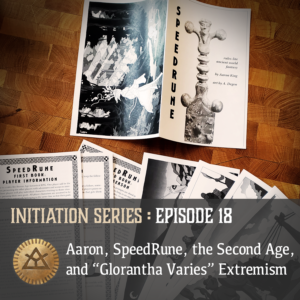
For this new initiation series episode we are happy to welcome Aaron King!
- Aaron is the designer of SpeedRune, an OSR-esque rules-light game of Gloranthan community adventures. Get it here, it’s free!
- There are even now a few supplements available for SpeedRune, including some things we discuss in this episode. Check out Aaron’s itch.io store!
- Aaron also co-hosts a TTRPG podcast called “RTFM” with Maxwell Lander. If you’ve ever dealt with the Linux and open-source community in your life, you definitely know what this acronym stands for… Anyway, Aaron and Maxwell read and discuss various game books, including RuneQuest in their September episode.
- You can also find Aaron on Twitter (while that still exists).
Show Notes
Things we discuss in this episode include:
- Minnesota being the “real birthplace of RPGs” (since that’s where Dave Arnison is from), and not Wisconsin (where Gary Gygax lived).
- Reading Dragon Magazine and figuring out how RPGs work from that.
- Playing D&D 3.5 and 4.0, and then moving on directly to full-on narrative games like Fiasco, Polaris, Firefly (and the Cortex system), Powered by the Apocalypse games, and more.
- Discovering Glorantha with King of Dragon Pass and loving the setting, with its faction play.
- Reading RQ2 Classic… but Aaron thought it was missing something, like it was referencing things the reader didn’t know.
- Finding a copy of HeroWars, which Aaron felt was “more accessible”.
- Treating the Big Rubble as Fortnite.
- Getting some Second Age books from the old Mongoose RuneQuest line, and also the newer RuneQuest Glorantha rulebook.
- A lot of players are put off by the size of Glorantha, and expectations of “homework” don’t help. See also: how the Marvel Cinematic Universe now “forces” you to watch many other movies and TV series to follow what’s going on.
- Trying to simplify Glorantha to just “you are part of a clan”. Introducing elements one by one from there.
- Aaron loves ducks in comics, and loves ducks in Glorantha.
- Aaron runs his campaign using SpeedRune, a free rules-lite system that he wrote. It’s inspired by Sledgehammer, a simplified version of Warhammer FRPG, and Cybermetal 2012. Player rules are on the character sheet, like in PbtA games.
- The appeal of seasonal games, like Pendragon and Sagas of the Icelanders, and the passage of time with PCs becoming old and having kids. This lets players make decisions on a grander scale of time.
- Expansions to SpeedRune are coming (some of them having been released since we recorded), including more Runes, and a non-Gloranthan expansion that lets you play in a campy ancient world setting inspired by the classic Xena/Hercules TV series.
- Speedrune is easily hacked, and able to bring material from other bronze age fantasy sources besides Glorantha.
- In SpeedRune, the GM never rolls. The D100 roll defines success, but also one dice is used for damage and the other for “fate”. Combat is pretty quick, but healing is not as easy as in RQG so there’s a slow decline over a season, inciting the player to go in downtime. Because rolls are all player-facing, there is not sitting around while the GM rolls attacks and parries and damage and location for each of the 8 orcs attacking the players.
- The community gets a character sheet like in Blades in the Dark or HeroQuest Glorantha, which is used during downtime actions.
- Building your clan and finding a campaign framework.
- Being a “Glorantha varies extremist”. Aaron starts very small. He lets the players build their community and participate in the world-building, at least a few days’ travel around of the adventurers’ home. The Lunar Empire probably exists but Aaron also wants to include other fun things like Tanith Lee’s “ancient horny demon kings that come at night”.
- Aaron likes the Second Age books from the Mongoose RuneQuest line written by Robin Laws. He especially likes the idea of the magic religious pyramid scheme that the Empire of the Wyrms Friends setup.
- Using Glorantha as a big sandbox of cool ideas rather than as canon… possibly because it’s still all new. Aaron has encyclopedic knowledge of other settings like the Elder Scrolls, so it’s not a universal approach. And it probably also explains why Aaron got hooked with Glorantha, since a lot of it has influenced the world of the Elder Scrolls via people like Ken Rolston.
- One crazy element from Aaron’s Glorantha: an Iron God had its heart pulled out by a jealous dirt god. The heart was grabbed by a goose that was flying by, and it bled over the ground, leaving veins of iron in the ground. Where the goose dropped the heart is a large crater with a big giant metal heart in it, which some people try to exploit and guard jealously.
- Heroquesting as a reversal of roles between GM and player. Aaron says that “Heroquesting seems difficult” (ho ho ha ha). In SpeedRune, Aaron has the GM roll, and the players not, which is a total reversal of the usual mechanics. In fact, during Heroquests, the GM has to roll above the player skills, like a mirror reality. Aaron isn’t super happy yet about it however, and might tweak it further.
- One PC in Aaron’s game seems to have ascended as a star.
- Aaron like the multiple points of view of the people of Glorantha.
- Having a world reference outside of the mechanics. Aaron has good hopes about the (since then released) Cults of RuneQuest Prosopaedia. However, we also recommend the Glorantha Sourcebook to him, and maybe Trollpak since he likes trolls.
- We briefly talk about the very old RQ2 Source Pack books with several pages of stats. We also talk about Balastor’s Barracks and its nonsensical dungeon. We even talk about old horrible comicbooks drawn by Rob Liefield.
- Aaron reiterates his love for the Robin Laws/ Second Age books…. and even possibly recommends the main one as a first contact with Glorantha!
- There’s a trope of “ancient amazing empires long gone” in fantasy settings, and sometimes you do want to play in those times. If these were indeed amazing times, maybe that should be when and where games should be set! And these old MRQ books allow for that.
- The main MRQ Second Age book also provides information in a contained way, in one book, whereas a lot of Glorantha information is usually spread across many other books in other product lines. This Second Age book might also show the weirdness of Glorantha better than other books.
- Aaron talks about being a weird obsessive kid who would read the Marvel Comics encyclopedia entries first, and then the comic books second, and sometimes be disappointed that a certain story arc wouldn’t be as cool as it looked in the encyclopedia.
- Aaron asks about elements for which the canon has several versions of events/truths/etc based on different people’s perspectives, but no “official, objective answer”. Ludo talks about the origin of the Tusk Riders. Joerg briefly mentions the end of the Second Age, some other things like the nature of Yelmalio, and myths in general.
- We end as Aaron literally orders Trollpak, and talk about the myth of trolls as political refugees.
Credits
The intro music is “Dancing Tiger” by Damscray. The outro music is “Islam Dream” by Serge Quadrado. Other audio is from the FreeSound library.
Episode 27: The Cults of RuneQuest
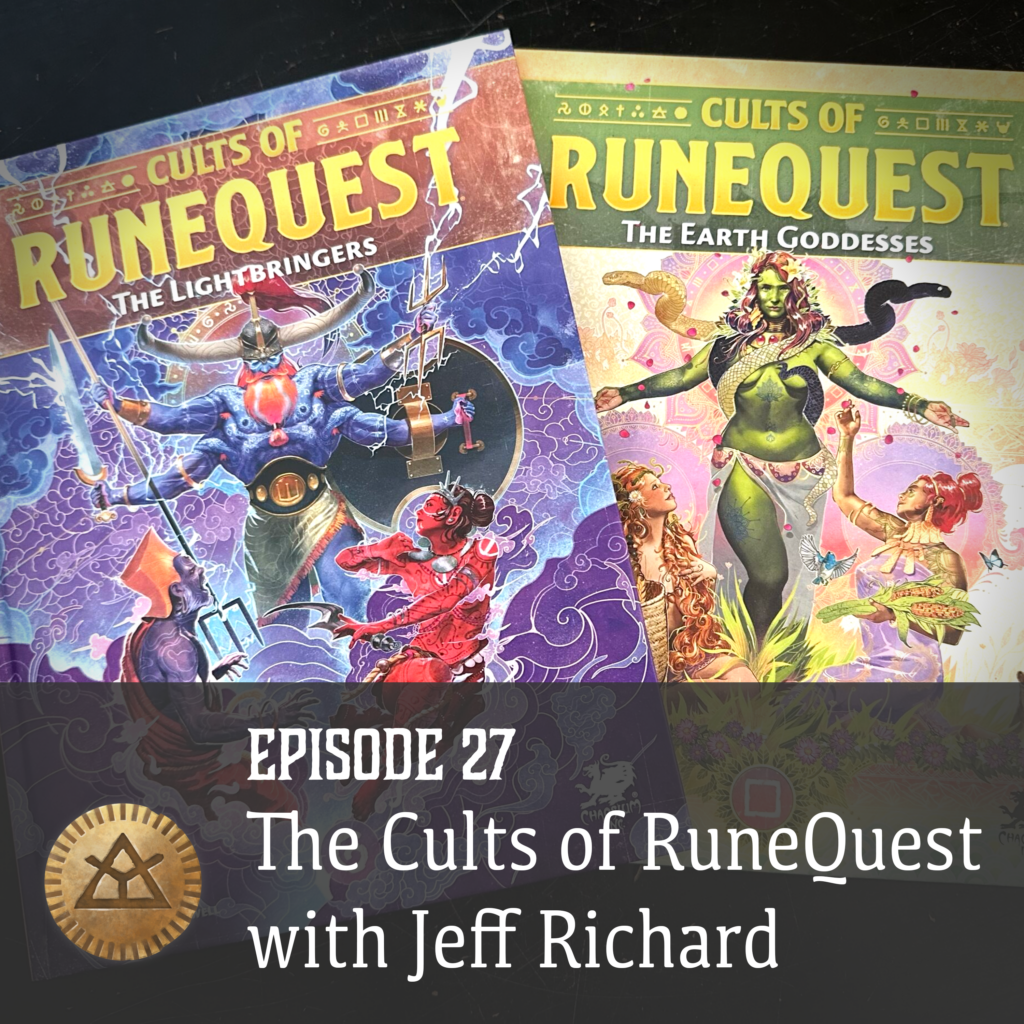
We finally worked up the courage to get Jeff Richard on our show!
Jeff is the Creative Director and Chair of Chaosium, the lead writer on most of the RuneQuest books, the lead art director on RuneQuest, and the editor for Pendragon. Jeff is also generally responsible for the look and feel of the Chaosium books.
Jeff’s Gaming History
Jeff’s roleplaying career started in the late seventies with not being able to make much sense of the original D&D rules but getting the system from playing Gamma World and Metamorphosis Alpha. It was in Middle or High School when one of his friends brought a copy of RuneQuest and advertised it as a game where you could play anything in the setting, even a were-pig. Even better, they realized it was in the same setting as that board game White Bear and Red Moon which they had played before.
Jeff had been gaming for quite some time before he and Greg Stafford started writing together in the late 1990s. In the 2000s Jeff and Rick Meints ended up pretty much taking over the leaderless Issaries Inc. with its Hero Wars/HeroQuest line, putting out the second (generic) edition of the HeroQuest rules and campaign books for Sartar and Pavis. A few years later Greg Stafford regained control over Chaosium and brought the Moon Design crew (expanded to include Michael O’Brian aka MOB and Neil Robinson) in to take over the company.
Ludo mentions that Jörg told him just before the recording about the werepig. Jeff confirms that Pinky Petunia was his first character (who didn’t last very long), a kamikaze werepig which was the coolest experience to a 14 or 15 year old who had been playing just AD&D and related games with their very limited set of character classes and races.
Jeff also was part of the Seattle Farmers Collective, a group of Seattle roleplayers including Jeff, David Dunham, Neil Robinson, Pam Carlson, Dana Shack (?), Dave Pearton and others which engaged in a number of ways of exploratory gaming in the nineties.
David Dunham had managed to marry the Pendragon rules with RuneQuest, which on retrospect is pretty easy, and the Collective played a couple of generational games in various places in Glorantha. What was interesting was that the characters were the local community, and they were involved in these Bronze Age feuds, and the more the characters succeeded the worse the things would turn out.
At the time, Jeff was reading a lot of Icelandic Sagas and researching theories of feuds, of how feud systems would end up to create an equilibrium.
A lot of those experiences worked their way into David Dunham’s computer game King of Dragon Pass, and then, twenty years later, a lot of that worked its way into the current edition of RuneQuest.
Ludo mentions that a lot of people who play RuneQuest might recognize its setting as that of the King of Dragon Pass or Six Ages games, much like Jeff had the experience with the White Bear and Red Moon boardgame.
Jeff talks about the demography of the players of RuneQuest and the fans of Glorantha. It is very clear that a lot of old-time fans are getting back into it, but sales numbers indicate that it is largely a new audience. There are people coming in from David Dunham’s computer games, others come in from the Morrowind/Skyrim connections (mentioned in this interview with the designers).
Jeff often jokes that old RuneQuest is The Velvet Underground of gaming, selling 20,000 copies but everybody who ended up owning a copy leaving a big impression. Ludo inserts the saying “You might not know RuneQuest, but RuneQuest is your favourite game designer’s favourite game.”
Jeff argues that this changed in the last decade or so as RuneQuest had largely been dead as a rules system since the early nineties. Now it has a new edition, it has a very active fan-base, it is showing up at conventions, its audience is growing – Jeff will probably have to retire that Velvet Underground joke. What would have happened if that band had ever actually caught on?
Ludo points out the good influence of new people coming in to the setting, and mentions our Gloranthan Initiation series of interviews where we talk to people comparatively new to the setting (which we upload in between the main episodes of this podcast).
Asked for roleplaying games outside of the BRP family, after rattling off a number of games published by Chaosium (Pendragon, Call of Cthulhu, Nephilim) Jeff mentions Vampire: The Masquerade as a game he enjoyed a lot, and Ars Magica, which he did a couple of campaigns with. Both these games offered something else than going underground knocking down doors and taking people’s shit. Other games include the old West End Games Star Wars, FGU’s Bushido (which shared one of the authors with RQ3’s Land of Ninja). Ludo points out Bushido’s battle rules, while Jeff emphasizes its implementation of the samurai code of honour. Jeff names Chris Klug’s James Bond 007 as one of his favourite games of all time, too, comparing it to Pendragon for brilliantly designed games.
Ludo points out Jeff’s role in the first ever Gloranthan podcast, Tales of Mythic Adventures which he co-hosted with Michael O’Brian (aka MOB). Jeff explains that setting up a regular podcast or just any kind of regular show is a gigantic time commitment (you can nearly hear Ludo and Jörg nodding sagely at that), and for some reason people thought that it was more important that Jeff and MOB write and create books for there to be podcasts about.
Jörg points towards Jeff’s work on the Prince of Sartar webcomic which went into indeterminate hiatus for the same reason. Again, some people out there put more value in new books being produced rather than Jeff and Kalin Kadiev producing an experimental webcomic. Ludo recalls people crediting the webcomic for drawing them back into the Glorantha hobby. Again, Jeff blames the time commitment, but calls it a platform to play around with the look and feel of things, and you can see a lot of impact from that in the later art direction and the look and feel of the RuneQuest books.
The Cults of RuneQuest Series
With this, we have completed the introduction of our guest, and we can drop into the Cults of RuneQuest series. Ludo quotes Jeff having said that this was the biggest project he had worked on in his career so far, and asks whether Jeff can take a break now or whether he is already diving into his next big project.
Jeff replies that there are no breaks. One of the differences between fan publications and his current position is that he does that for a living, so he can’t sit back and take a nice pause now a project gets fulfilled. At the end of the day, what Chaosium is all about is to create new books and new adventures.
Jeff is in the process of looking at the first pass of the layout for the Lunar book, looking into the refining, and hoping that it will be off to the printer in the next couple of weeks. After that there will be the Guide to Dragon Pass, and after that either the Sartar campaign book or the Solar volume of Cults of RuneQuest. Jeff describes the situation of his layout people as working on a conveyor belt. Jeff enjoys that RuneQuest now is in a situation where Chaosium could realistically schedule six to eight RuneQuest books in any twelve months period. Other than RuneQuest, the Pendragon line is getting up to a similarly lively publication schedule. Ludo allows himself to be distracted from Glorantha giving his appreciation for the layout style of Pendragon with all those little medieval illuminations in the margins.
Jeff compares the word count of the Cults books with that of the Guide, both being in roughly the same magnitude. Asked what was the most complicated aspect of the project, Jeff confirms it was the inter-connectedness which made the project so much harder, making sure that all of these rules systems tie into each other. Jeff describes the Guide as a fictional encyclopedia, a purely narrative description of the setting which doesn’t need to be mechanically linked. For example, when you go through the associated cults you need to make sure they all line up with each other. Ludo claims that you can’t make a big table cross-indexing all cults with one another, and while Jeff did actually create such a table with a hundred by a hundred entries when developing the books, including spreadsheets documenting which cults allow sorcery, which cults allow shamanism, which cults are associated with other cults, which cults are enemies… That was a whole other level of complexity compared to writing the Guide to Glorantha.
When asked about the Mythology book, Jeff confirms that it is already printed, and going to be released in October. Go and buy, buy, buy! He goes on to show us the printed proof, which doesn’t do that much to our audience, as no-one can see this (yet), but boy it looks pretty.
In an absolute ideal world where Chaosium did not have to worry about marketing and building their audience, Jeff would have liked to start the Cults of RuneQuest series with the Mythology as the leading book. In Jeff’s view the Mythology book is the most important book in the series because it explains how Greg Stafford and Jeff view mythology and how to interact with the rest of the books. It provides the framework for the rest of the Cults books. On the other hand, in itself it has no cults in it.
Jeff supports Chaosium’s marketing decision to go with the Prosopaedia first, presenting a huge number of deities, and then the volumes Lightbringers and Earth Goddesses which include the most popular player character cults.
Now that the books are broken up into eleven volumes, Ludo asks about who would be the customers for which books of the series. While a player mainly interested in playing earth cults will be well served with the Earth Goddesses volume, would the Mythology book be catering to the GMs instead?
Jeff views all of the Cults books as player-facing. While a player may say “I never play a Darkness cult, I won’t need that book”, and that’s totally fine. With the exception of the Lords of Terror book all the Cults Books contain stuff that you might play. As a player, Jeff would probably buy the book with the cult of the character, and then the companion book about all the other cults in the party, and then the Mythology book which connects all the stories of the deities. Jeff tried to provide the most detailed presentation of the Monomyth to date.
Jeff tells us how Greg had tried to write the Mythology book based entirely on individual stories. You would then be able to assemble the Monomyth by realizing that all these stories fit together. There are two problems with this approach. One is that the entire project is getting really long. The other is that at some point you start writing stories to fill in gaps, resulting in some stories just not being as good. Greg always worked better when he had this great inspiration and came up with an amazing story, and in that story he would see how it would fit into the overall framework of the Monomyth. On the other hand, when he had to write all that stuff between the lines, he ended up with a lot of stuff that lacked that brilliance and probably should have been rejected a long time ago.
The approach taken by the Mythology book is to provide the overview of the Monomyth supplemented by small stories that give you examples how that would work. As a result it reads better and can actually be done in a reasonable deadline rather than try to finish the Belintar’s Book project which would collect all the stories that are known.
Ludo reports his experience how the Monomyth shines through the various stories told in the two Cults Books published so far, and he has been wondering whether the Monomyth is a convenient construct for a gaming world or whether Greg just was a great fan of Joseph Campbell and wanted to implement his theory.
Greg Stafford started writing his fictional mythology back in the Sixties, and there has been a framework to the mythology since 1966 or 1967 and has always been there since. It got the title of the Monomyth in recognition of Joseph Campbell, but it has a structure similar to how Tolkien’s Legendaria has structure to it. This is where Glorantha is a work of fantasy and experimental mythology. We can do things in the world that make it feel more real and that can take us a step further than we can imagine with real world mythologies.
Ludo brings up interconnected stories like e.g. the Marvel Cinematic Universe but points out that mythology doesn’t need as much consistency as that. Myths may very well contradict each other. Ludo asks how the Cults series avoids creating just a Gloranthan cinematic universe where all the stories line up perfectly consistent with one another, creating a One True Monomyth. Jeff replies that there is an essay in the Mythology book addressing that. One of the things that was important to Greg (and Jeff) is that the very worst approaches to understand mythology is to grab a book and argue about the details as you largely miss the point of the stories.
The best way to understand mythology is for it to show up in your games, for your GM and the player characters to participate in it and to experience it. It would even better to be that person and directly interact with spirits and gods, but given the limitations of our experiences that is difficult to arrange. The next best way to experience the mythology is to play it, and after that the next best is to listen to someone telling you the stories (in a minimally interactive way). Treating the events in a myth as cold facts from a book is the worst way to interact with the myth. Still, nerds being nerds, these details usually end up being what is discussed on internet forums. Most Glorantha fans fall into the group experiencing the myths through play or narration, appreciating that there is a structure where it all fits together, ideally leading them onward to think about other things.
One of the ironies Jeff experiences is that people brand new to the setting get this point a lot better than people who have been arguing about it for years.
Sensitive Topics in Glorantha
Ludo lists a number of grand themes that myths deal with: why people do what they do, why society has to work this way etc., touching on death and gender roles and other sensitive topics. Ludo brings up a couple of cases where people have complained about depictions of nudity or of animal sacrifice in the art. Jeff (who had a foot in both the European and the American side of things) points out that contrary to Ludo’s expectations Chaosium never had any complaints like that from the US. The complaints came from the UK or in case of the animal sacrifices from Spain.
Jeff views RuneQuest as game material for mature individuals of whatever age able to deal with topics like life, death, sex, gender, social organization. A lot of the stuff is “Where does the world come from?” or “Why do things function the way they do?” In order for that to feel real and to be artistically honest it is gonna hit a lot of stuff that we don’t like to talk about as much, especially in this social media-driven world that we find ourselves in today. Asked whether Chaosium actually had to wave away certain vocal minority problems, Jeff tells that they started out being very careful about how they presented things, there being some ground rules. Jeff tries to be as open and aware of inclusion as possible. There are some things that don’t exist in Glorantha like a race-based slavery with large scale deportation in the setting. Writing takes a combination of care and artistic integrity. When problematic topics arise, it is because they are part of the world, and not out of a sense of mischief or trying to be shocking. A fantasy setting cannot just be about things we like and aspire to, but also need things we fear and hate. People’s reaction is different when such elements enter the story with artistic integrity rather than when they are smuggled in only for shock value.
Ludo describes the Monomyth as the way each cult and deity fits into the grand scheme of the cosmos. Presented in the core rules book with three seemingly redundant hunter cults (Foundchild, Odayla and Yinkin) Ludo was confused why there were three such gods, but with the Lightbringers book their respective roles and context has been clarified. Jeff reminisces that at the time of putting together the core rules book Jeff knew that it would be quite a long time before Chaosium could deliver the detailed cult write-ups, so the designers had to find a compromise between providing a set of archetypes that exist in the world but also throwing in a few existing cults that were fan favourites from earlier editions. While these may not be as mythologically important, people might whine if these were missing. If the designers had decided to have only Yinkin as the example hunter cult, that would have been pointless for people wishing to game in Prax. The one cult that almost did not make the cut was Odayla who isn’t really that important in the core area covered by the rules, but as Jason Durall pointed out, that cult allows its members to become a bear, and how awesome is that?
Any time the designers create a book, they establish the setting and provide its content, and try make sure that the setting and fantasy fiction fit together, but also it has to function as a game, to keep people engaged in it is also terribly important because that is what RuneQuest is for.
Asked whether it would be hard to make these cults playable, Jeff answers that e.g. that followers of the water cults might have a tough time making those cults relevant if the entire campaign takes place up in the highlands of Dragon Pass, away from the sea. Jeff tells how one of the players in his current game is an initiate of the local river god, who is great when the party is right near the river, which they almost never are in the adventures. But to Jeff it is important that not every character decision is equally good in all situations, that there are consequences. A situation without consequences might be hard ot get into, and may ultimately end up in a dead end for game play for most people.
Ludo asks how Jeff presents people coming from D&D with the roleplaying opportunities when they pick a less important minority cult (without attempting to introduce some artificial game balance). In Jeff’s opinion a lot of the minor cults have tremendous roleplaying opportunities, but that initiating to the Great Storm King with all his friends and being devoted to basically the cat god have different scope in affecting the game world. While playing a follower of Yinkin may not be as cosmologically significant as playing a hero of the Storm King, it can be as much fun, and most new players get that. There is an unfortunate tendency to conflate paths to potential power with roleplaying opportunities. While it is completely valid that some players seek a character on the path to power, it is just as fine to have players who want their characters just to chew scenery and have a great time without ever achieving some great power. Ludo talks about his experiences with players designing a character they wanted to play, totally unwilling to give that character any growth in terms of proficiency as that character already hit that sweet spot.
In Jeff’s experience, it is a fallacy to assume that all players playing the game want a certain thing X, and then to design the game so that all players achieve this thing, when the players demanding this thing X are just a vocal minority of the target audience. What Jeff likes about the Cults books as splatbooks is that each cult provides a different mix of possibilities. If players choose Humakt as their cult, they know that combat is a very important part of their character, and same for a Storm Bull cultist, but playing a follower of Donandar is going to be a very different perspective, with combat still going to be an important part of the experience of that character, but not something their cult is going to be a great help with. Playing RuneQuest with other humans doesn’t have to provide that computer-game-like balance. Entering the game with a scribe who has nothing in the way of combat skills is an option in an open setting, even though it may place a tough task on the GM who has to provide situations for the characters to play their characters. RuneQuest is what you make of it.
The advice to play is to pick a location, the core theme of the campaign and its context. The players learn about the important gods of the place and find the one that clicks, that speaks to the player. Now if a player insists on playing an Engizi worshiper, the GM should tell the player that the setting is up in the mountains, away from the river valley, and it is fine if the player then decides to select a cult that has a little more heft in that environment, but many players will be cool with having much of that cult identity exerting less of an impact to their game.
Beyond Dragon Pass
Ludo observes that the Cults Books often mention places outside of the area described in the core rules, and asks what was the design decision behind opening more of the world of Glorantha through these sometimes cryptic references. Jeff explains how Greg Stafford was always dissatisfied with how the old RQ3 Gods of Glorantha book had been put away, with the assumption that you would have these cults from the whole world in one place, and that you could play any cult you want from that list, but that all the places offered to the GM to interact with the world were set in the valley of the River of Cradles, or briefly in Dorastor.
For RQG they kind of flipped that, providing information mainly for central Genertela, which includes Dragon Pass, Prax, the Holy Country, and the Lunar Empire and the Elder Wilds, which is where Jeff estimates 99.5% of all the games set in Glorantha played over history have been set. While Jeff has played quite a few games outside of that area, and a couple of quite vocal people have done so as well, the other games might be little more than a rounding error. Ludo expects a flood of letters aiming to prove Jeff wrong. Jeff would go on to locate about half of all games ever played in the River of Cradles area (and Prax), and the other half in Dragon Pass. That’s where most of the audience is.
On the other hand, Jeff wanted to provide the wider world and the larger picture, which is why for instance Pamalt is included. His cult gives an impression how Genertela might have turned out had Genert survived the Gods War. Presenting Pamalt’s tribal pantheon also gives a different way how you can arrange these cults and their interactions. That doesn’t mean that Jeff expects many people to play Pamalt initiates in Dragon Pass or Prax, but players being players, it is almost bound to happen. But if you want to, you now have the building blocks.
Jörg points out that the description of Argrath’s companions (in the Glorantha Sourcebook) laid the little cuckoo’s egg with his companions from the Circumnavigation of the Homeward Sea (following Harrek’s Wolf Pirates). Jeff agrees that with the Hero Wars coming, we always have an excuse to include characters with exotic backgrounds, possibly characters that would have rejected when playing with the original rules of the Hero Wars rpg (that later turned into HeroQuest, now into Questworlds). But now, if a player’s heart is set on playing a Pamalt initiate? There are boats, the character could have arrived with the Wolf Pirates or on board of a merchant vessel.
The History of the Cult of Orlanth
Ludo asks how much the cults have evolved over the decades until they were published now. Jeff could approach this from a fan point of view, but chooses to look at it from the writer’s perspective he shared with Greg.
Orlanth (or rather the Storm King) first showed up in Greg’s stories in the sixties as Humat or Humakt or Humath, the great storm god, and he started writing stories about it. The name Orlanth doesn’t even appear until the year 1977 (a year before the publication of RQ1, two years after the publication of White Bear and Red Moon). Using the setting of White Bear and Red Moon for playtesting RuneQuest, Greg’s players wanted a god, and he said ok, we have one of the gods who is a war god, Humakt. And the god turned into a deity of war and death in the course of the game, so Greg realized he needed a new name as this wasn’t even close to the Storm God that he envisioned behind the Kingdom of Sartar. That new name became Orlanth.
Initially for RQ2 Greg had the Lightbringers story quickly, and then he wrote a ton of cool material about the Orlanth cult, its history, etc. The Orlanth Adventurous write-up was one of the three original cult examples in RuneQuest. Greg kept writing such material, but due to the nature of the Chaosium Greg lost a lot of that material in the early 1990ies, and it remained AWOL until about 2015.
After Chaosium had licensed RuneQuest to Avalon Hill, basically it became a money loser every time Greg wrote new material for the game, as unlike earlier he would only receive the royalties from the new material, with Avalon Hill earning the lion’s share of the new product. Greg was one of the best writers in the Chaosium team, and they would not earn very much by writing for RuneQuest any more.
So Greg turned towards writing a story about what he really cared about, which turned out to be one of the most interesting characters in the setting, Arkat, but at a certain point this turned into a story about Harmast, so Greg wrote about Harmast’s Lightbringer’s Quest, and then it became a story about the initiation of Harmast. Now all of this is set in the First Age of Glorantha rather than the Now of RuneQuest in the Third Age, with Greg’s focus on the early histora of the setting before the Gbaji Wars, before Arkat, before Harmast’s Lightbringer’s Quest, and even more before the God Learners, the EWF or the Lunar Empire. The subsequent publications by Greg were Glorious ReAscent of Yelm set 230 years after the Dawn, The Fortunate Succession tracking the Dara Happan dynasties from the God Time into the Modern Age, Entekosiad with stories set in God Time, etc.
Throughout this period Greg wasn’t really writing anything for a game product, but then you had Hero Wars coming out and people wanted to write material, so Greg gave them what he was working on at the time and people tried to make it relevant for the now of the gaming time, pulling stuff a millennium or more into the future of the setting.
By the time Jeff started working on the Guide, he and Greg wanted the Guide to be set in the gameable now, even when it was looking back on the history of the setting or a region in the setting. Around that time Greg re-gained much of his older writings. Subsequently, Greg regained control over Chaosium with the aid of Moon Design. When work on the new edition of RuneQuest started, the focus was to be on the now as it had been in the seventies and eighties.
Back to Ludo’s question: The Orlanth cult actually got a heavy rewrite compared to its earliest appearances, as did the Ernalda cult which got a lot of input from Claudia Loroff (Jeff’s wife, and our guest for episode 16 of this podcast) and Skylar Mannen (credited for editing and proofreading in the Cults books). Thinking about what changed, Jeff mentions the Ernalda spell list, the context for Maran Gor and Babeester Gor who did not have any full cult write-up beyond the skeleton info in RQ3 Gods of Glorantha (although Maran Gor got a write-up in Tales of the Reaching Moon #6), or Orlanth receiving a lot of work about how the Orlanth Rex subcult works within Orlanth. A lot of world building derives from that.
The Sartar Book which has all the editing and the art done is due to go into Layout as soon as it fits into Simeon Cogwell’s schedule. All this new material about Orlanth, Ernalda and their associates ties into the work that has been done on the Sartar Book. The Cults books provide a framework, and Jeff can now show how this cults works within a specific homeland through the homeland books.
So the cults in both the Lightbringers and the Earth Goddesses volume required quite a bit of rewrite, although not all – Humakt did not change much, for instance. Ludo asks about cults changing not just in their descriptive text but also in their role in the cosmology and their look and feel. And in many cases there wasn’t much in the way of cult write-ups to start with at all. Jeff claims that this was the first time that the Ernalda cult really was written, claiming his take on it in the HQ2 Sartar: Kingdom of Heroes as a first draft. (Jörg’s pedantry demands that the Ernalda long cult write-up in the RQ3 DeLuxe box Glorantha booklet receives a mention, but that book did not really invite anybody to create a roleplaying character from that cult.) What is new is a shift in thinking about what is the role of the Earth Mother, the goddess of women and Fertility, letting this run wild.
Anciant Symbolism and Real World Inspirations
Ludo mentions some of the ancient symbolism used in the cult descriptions and depictions, like the snakes that accompany the earth goddesses. The snakes stand for healing and rebirth, connected to their shedding of the skin, leading to the Caduceus, whereas in modern thinking snakes got bedevilled and associated with venom and getting bit, the dragon aspect. Jeff says he put these things there for people to run wild with this. In the the Southwest of (the United States of) America where he lives, snakes are an important symbol. Jeff mentions a recent experience on a walk shared with Suzanne Stafford and his son Finn during a visit to the Lindenmeier archaeological site which has one of the oldest archaeological records of the proto-Indians, and it has a bison herd. A rattle-snake crossed their path, and rattle-snakes are a powerful image, as it also is in the Meso-American mythology. For some people this is great, this is not the Marvel version of Thor. Other people may ignore such symbolism, and either way is fine with Jeff.
Ludo explains how his exposure to Glorantha made him get up to date with Meso-American and Vedic Indian symbology and other ancient sources, but he wonders what would be the most surprising inspiration that was used for the cults, stuff like the native American clown societies which made their way into the Cult of Eurmal.
Jeff explains that with almost all Gloranthan deities it is a combination on drawing on various real-world parallels but then also just personal inspirations and experiences. One thing that came as a surprise to Jeff was how strong the Orlanth and Shiva connections turned out to be. Orlanth is a Destroyer, but his destruction makes the world possible, which makes him both a destroyer and a preserver. That gives Orlanth a nice distance from say a Viking god.
Jeff recalls that there were some Meso-American stories they drew on for Ernalda, in part because Greg was really heavily influenced by Meso-American mythology. When Greg died, he was working on a (non-fiction) book on Tehuacan mythology, based on his research during his stay in Mexico. Other influences include Hindu mythology, but one rather impactful experience on Jeff was a visit to an exhibition at the ethnographical museum in Dahlem, Berlin, about the cult of Heracles. The iconography of Heracles moved around the (Old) world, spreading from Roman Britain and the Pillars of Heracles at Gibraltar all the way to being the guardian of Japanese Buddhist temples in the name Nio.
One of the places which registered as most Gloranthan with Jeff was Gandahara in the second century BC to the first century AD, a place which has a mythic synthesis of Buddhism, Vedic imagery and Greek and Persian mythology. This also has the advantage of being a period which has some massive sculpture and surviving artwork giving us something we can actually look at. For Jeff, Gloranthan iconography works similarly, with names and images of deities migrating across the setting. In Glorantha we always start with the underlying proposition that the deity or the spirit is real, whereas in our real world we always assume that the deities depicted are more societal constructs than actual entities (unless one may be considered a religious nut). That perspective lets you end up with a very different feel and understanding if you come from the underlying assumption that these Gloranthan deities are real.
Ludo talks about how Jeff’s posts on Facebook often describe that Gloranthan cults aren’t static within its history, how certain groups may have different cultures with different understanding of archetypal entities until they come together and realize that this deity is Orlanth, or that there is cultural and technological development like people starting to ride horses or horse-drawn chariots. This results in cultural, religious, technological and social developments happening to the various groups in Glorantha. In Jeff’s opinion, such a non-static behaviour is also necessary to make the setting believable. For instance the Lightbringers’ Quest in the Orlanth cult and its history within Time shows this tension about what is Orlanth – on one hand this heroic adventurer god who runs around, kills dragons, fights giants, or is he this atmospheric god responsible for natural phenomena. As a result the cult has now two big aspects that are both acknowledged, but they are slightly in tension with each other. To Jeff this is more believable than saying “sixteen hundred years ago, before the player characters could do anything, we have the Dawn, and it has all been set in stone since then.” Having this tension creates the sense that the setting is dynamic and that even the understandings of the deities are dynamic, making it easier to believe in the reality of the setting. Jeff points out that he is giving the perspective of a writer here.
Thinking about which of the Cults books got the most new writing, the Lunar book has almost completely new material, and even the Solar book had surprisingly little material previously defined.
That Elmal Business
Jeff mentions the endless debates on Yelmalio, Elmal, Kargzant, etc., and Jeff has the old marked-up manuscripts from Greg where it says all Yelmalio, and then hand-written corrections “let’s call him Elmal here”, or “Yelmalio is the chief god of the nomads”, or “hey, let’s give him a nomadic name: Kargzant.” Having this access makes Jeff look at the material from a different perspective. Jeff recalls a conversation a few years back about the Mesopotamian scribes identifying hundreds and hundreds and hundreds of gods, when in reality they had about forty deities which had a cult. But if you wanted to have a big list, you would give a recognizable god say twenty different names, resulting in a list of maybe 500 names when there are about forty distinct identities. The same thing is going on in Glorantha, there are about 100 or 120 divine entities of wide relevance around, and all sorts of minor and tiny ones. Greg would write lists of names. When it comes to the solar gods (who are worshipped by different names in many distinct cultures) it becomes clear that you have to cut through the list, let’s cut through the names. We all know that in the actual real world, the Romans did not really think that Greek Zeus was a totally different deity from Jupiter. They said “this is what the Greeks call Jupiter”. When you read Herodotus, he talks about the Egyptian gods, giving them the Greek names but pointing out that the Egyptians view these deities differently and address them differently, but it still is the same god. So, looking at the solar gods, there is a sun god, because there is a sun. So we have Yelm, and most people cannot even reach Yelm. That’s why you have the Sun Disk, and then there is a god who pulls the sun disk across the sky. Jeff reminds Jörg of Christine Reich, the resident archaeologist of Jeff’s Berlin group (immortalized in the HeroQuest Glorantha rules), who gave a presentation at the German convention The Kraken about the solar gods of central Europe in the Bronze and Iron Age. The sun is one of the few things in the world that always follows a set pattern. It is a regular thing and doesn’t have a lot of stuff it can do on its own. Most cultures did not even view it as something which had a lot of agency. The sun is a great thing, it is in the sky, it brings life, but it is not going to do anything much beyond what it is doing. But it has got a horse or someone who is following that path, and that thing is a lot easier to approach. So you just have to go to Greg’s names for the sun gods, you got Yelm, and then you got Little Yelm, or Yelmalio. In the Solar book, Jeff had a lot of fun exploring that, but he is fairly sure that there will be vigorous small argument about it along the lines of “This is Awful!” or “I feel this has ruined this”. Jörg suggests that maybe Jeff might put out some of the faksimiles of Greg’s original manuscripts to document how this is not so much a recent development but how things were meant to work.
Jeff recalls the first draft of the Entekosiad, before Greg came up with the naming system of Pelanda, so there were stories about Lodril, Yelmalio, Yelm, etc. Jeff thinks that it is great that people get so passionate in these debates about those names, that shows how much people love this setting and love the game, but sometimes observing these debates just makes him go “guys…” Ludo repeats that nerds will be nerds, which Jeff rephrases as “It’s passionate fandom.” Ludo blames the internet, but Jörg speaks from experience when he says that people do it face to face as well.
Jeff tells about people telling him with a straight face that he got it wrong, that god X (usually it’s Elmal) has fire powers and fire spells and the cult write-up says so when there never was a published RuneQuest cult of Elmal. Jeff admits that he wrote something in a book (the HeroQuest 2nd edition book Sartar: Kingdom of Heroes), and he admits that he got it wrong at the time. The passion of some of the discussion about it can be interesting.
Jeff explains how Elmal came about: Greg was trying to figure out what the Orlanthi of the First Age thought the sun was right before they had the interaction with the Dara Happans. What would their stories have been, and the result of that was Elmal. The next step was to determine how it was that this perception of the Little Sun deity became Yelmalio, and there we were with all the stories about the Yelmalio cult in the Second Age (both in Griffin Mountain background notes and in the history in Troll Pak). Jeff then claims that if you had read everything in the (publication) history up to King of Sartar, it all was easy to put together. The problem happened when David Dunham came out with the King of Dragon Pass computer game, and Elmal was a popular cult in this, and you had these Elmal myths that David (and Robin Laws) wrote, and they are great, and great fun. All of that became people’s experience of Elmal, but people forgot that the entire premise of the King of Dragon Pass computer game was an alternate history of Glorantha where there was no Sartar coming to unite the Quivini tribes, and the task falls onto your clan instead. That game is set two to three centuries before the RuneQuest setting.
Untangling that came up when the question was should we have Elmal temples in Dragon Pass, and Greg said “No, they are all Yelmalio, that’s what I said in King of Sartar.”
One of the great things about Glorantha is that everybody has their own head-canon, but at times that causes a headache to Jeff. When Chaosium is publishing RuneQuest (or other Glorantha material), they need to keep the story lines for the publication straight, providing one definitive version of what the cult description is going to be, while on the other hand everybody’s Glorantha is going to vary. (Often from one game to the next with the same group of people.)
An Impromptu Lore Auction
Jeff drops a surprise on Ludo and Jörg as we are coming to the end of the episode by offering us to do the old Glorantha lore auction, with three questions we can get answered with a canonical answer.
Expanding on the identity of deities, Jörg asks “If Tolat and Annilla are twins, who are their parents, and when are they born?”
Jeff leads by stating that while not all their myths claim that these two deities are twins, it is one of the most accepted genealogies for them. Both were born in the Underworld after Yelm died, so their parents are Yelm and the River Styx (listed as Edzaroun in the Prosopaedia). Yelm being so awesome that even dead he was able to produce offspring on Underworld deities. When you think of it, we got the Blue Moon goddess who is tied to the tides, but also the sky, because she goes up and down from the Underworld to the sky. When she moves up, the waters rise following her, and when she moves down they drop with her, so she has got to have some deep water connection.
The planetary deity Tolat also spends half his time in the Underworld, as the planet dies, but he is also a celestial entity that has this kind of screwed-up Underworld connection.
Now all good Dara Happans will tell you that Shargash is the son of Yelm and Dendara, who is also a planet.
From an in-Gloranthan perspective (rather than the external perspective of a writer), Plentonius (the in-world author of the Glorious ReAscent of Yelm) did such a good job explaining things in the first or second century of History that even where he was wrong, people find reasons to make him right. Plentonius basically hammered things down. The identification of Antirius (the Dara Happan name for the Little Sun) on the Gods Wall is such an example. There are a lot of identifications by Plentonius, you can poke holes in them (the Guide appendix has a Lhankor Mhy scholar’s commentary on the ancient text, too), but by god, he was such a good writer, and generations of scribes learning the written version of Firespeech have been trained on his text. With these countless copies of his text, the Dara Happan scribes are dedicated to preserving the Plentonius version of it.
Jörg likens this to the fallacious passage in Caesar’s De Bello Gallico where he repeats the information given to him that people capture sleeping moose by felling the trees they lean on since these beasts are lacking knees. Jeff counters this with Herodotus claiming that giant ant lions are the source of India’s gold.
Ludo asks what was Prince Snodal’s goal when he killed the local communication god.
Jeff replies that Snodal (a Talar from Loskalm) and the Syndics had to destroy the God of the Silver Feet because if they could not find a way for Fronela to dissociate, the writing that Snodal had seen in Zzabur’s book or some other such document be a semi-divine people during his stay with the Altinae (on the northern edge of the World) claimed that Loskalm (in addition to vast other tracts of Fronela that mattered less to Snodal) was going to be destroyed. By killing the God of the Silver Feet they were going to bypass that prophecy, eliminating some of the stated prerequisites of that future event.
In essence, they had a horrible prophecy predicting a major catastrophe, and Prince Snodal and his buddies figured out a way to bypass it. Of course, now the Syndic’ Ban is ending, and you got the Kingdom of War appearing, so maybe this only temporarily bypassed the prophecy, or it just delayed it.
Jeff had recently re-visited the story of Snodal visiting the Altinae, and this was the way Snodal figured out to prevent the doom for Loskalm.
For the last question, Jörg picks up something that he saw recently discussed online, the matter of theist worship of the Malkioni, To what extent is the theist worship of deities convergent with their monotheist philosophy?
Jeff starts out by talking about the words and labels that send people down the wrong path.
Malkioni is a big cluster word, describing a religious group more broadly than almost any other such grouping in Glorantha, which is probably a mistake. The key thing that all Malkioni groups have in common is that the humans are at the centre of the universe, and that the world can be understood materially. The Malkioni say that they have a material view of the world that is superior to that of people sitting around offering plates of food and dead pigs to gods and spirits. From this materialist perspective results ways that people are able to influence the ways of the world through the use of what we call sorcery. But the problem with sorcery is that most people are never going to possess the time or resources or dedication to make much out of it.
In an ideal world (as a sorcerer) we would set up a system where everybody, the rest of society, the non-specialists, would provide us with massive pools of mana, for us to weave it into spells where we are able to do the things that are necessary for us to have a good harvest, to be protected from our enemies, for hostile and malevolent things to be banished, and whatnot.
But even the purest wizards have (almost) never been able to produce a society that works entirely on that philosophical grounding. Unfortunately for the sorcerers, there is history, there are other peoples, and gods and spirits, they have always been there in the background, and it has often been easier and more cost efficient for us to set up some cult to that deity rather than to spend a huge amount of resources and focus to give the wizards the power to deal with it in a way they find philosophically appropriate.
In every Malkioni society you have the tension between the logical rationalism you have among the wizards, and all the rest of society.
Ludo chimes in that the farmers say “we have this ritual that allows us to offer a pig so we have rain without you wizards having to undertake a season long ritual to produce the same rain this deity gives just in exchange for this pig.”
And a lot of the people living in the Malkioni portion of the world have always worshipped the spirits and the earth goddess, and the most important Malkioni history of Time was Hrestol, and his big myth was that he went and killed the daughter of the local earth goddess, for which he got sent to the Underworld, and his father Froalar, the Talar of Seshnela, ended up having to marry the Earth goddess, and his son who was to inherit the kingdom was half serpent, so it was obvious that he was touched by the Earth goddess. All of this interaction with the deities has been there from the beginning.
So of course there is going to be in a lot of the Malkioni societies a lot of people who aren’t going to rely a hundred percent on the wizards, they are going to hedge their bets and they are going to set up shrines to spirits and to acceptable deities. They might call that acceptable deity something else.
The two Malkioni places that are really exceptional are both movements in the Third Age.
One is Rokarism, and Rokarism is a reaction to the destruction of Seshnela and all the other horrible calamities that the God Learners had. The Rokari movement states that we should follow the law, that we should really not make compromises that are philosophically and intellectually unjustified. People should not enslave themselves to deities and spirits. Only bad stuff happens from this.
Of course, again you have the problem that the vast majority of the common people weren’t part of this philosophical movement. There was an alliance between the wizards and the rulers to try and create a society that has a more rational basis. Rokarism is the faction of the realists. This is unfortunately the way the world is, but in the long run we will be able to create something that really is able to follow Malkion’s precepts or laws. Eventually, will basically have what was promised to humanity.
And then you have these New Hrestoli, who may actually be way whackier than the Rokari. The New Hrestoli got to take advantage from the fact that during the Syndics’ Ban there was no outside people. Loskalm basically was Gormenghast, removed from the rest of the world, surrounded by mist and with no contact by anyone else. This gave them the opportunity to cut top through bottom, to really impose a philosophically ideal society. And they managed to pull that off (at least as long as the Ban lasted).
One thing that an ideal philosophical society has is that humans don’t subjugate themselves to spirits or deities. They rely on wizards to manipulate such entities through logic. The New Hrestoli of Loskalm went further and probably were more successful than the Rokari in Seshnela, but everywhere else people had to make compromises with the real world. There were gods and there were spirits, and as Ludo said, the local farmers would sacrifice a pig to the grain goddess regardless whether it was philosophically correct or not.
Based on his experience living in Berlin, you kind of can make the analogy of the soviet system in Eastern Europe if you imagine Marxism/Leninism as a philosophical system that would get rid of capitalism and all these preexisting conditions and whatnot. But if you cut deep enough into any layer existing there, the preexisting society continued to exist despite declarations that it did not.
So to boil it down, we now have this cultic worship in Rokari lands. The Talars (the nobles) have an ever shorter list of what’s acceptable. The wizards would always say “there should not be a list! These are all exceptions!”
This is the stuff that emerges when you do your world-building from the bottom up, when you rthink about what would be the experience of the people actually living in that setting, what they would react to, as opposed to the top-down model where the wizards at the top dictate the exact way things are going to be resolved.
The nobles want to make ends meet economically too, so that’s why they want these fertility rites performed on their fields.
But at the same time, they need the wizards for legitimacy and support. Another possible parallel for this is the relation between the house of Saud and the Salafi movement in Saudi Arabia. Part of the reason behind the rise of the house of Saud was their alliance with a very strict and stripped-down view of Islam, in the eighteenth century. You need to do that, but on the other hand scholars and preachers don’t have to pay the bills, they don’t have to raise the armies. But on the other hand, the rulers need the scholars and preachers because they provide the ideological support for me being the top dog. So I need to keep them happy while still making enough money out of my peasants for still being able to hire an army. Jeff always figured that that’s where the rulers of Seshnela are. They got this very organized and cohesive group of wizards who are very numerous and really, really useful. And these wizards also say that I am going to be the top dog, that I get to make all the big decisions. They will support me as long as I support whatever it is that they are doing.
But on the other hand, between the nobles and the wizards there are the 98% who make up the rest of the population, and they aren’t really on board with any of this. I need to be able to hire full-time people to fight for me because, if it is wizards, maybe give them six months to cast that spell.- that’s not very useful here. It’s great when we have the time to do it, but I need something that is going to connect faster, my soldiers/warriors. And half of them, they worship war gods and martial spirits and whatnot, I am going to turn a blind eye to that because they are damn useful. And then I have the farmers and crafters, and if they don’t have a good harvest, I am screwed.
One of Jeff’s models for Seshnela in the Third Age is the Mughal Empire in India. There you have that top tier of society that are devout Sunni Muslims – they need to be, all the key power holders in the empire are Muslim, and you got to keep them happy. But they rule a population that is mainly not Muslim. Somehow that needs to work.
You can have various other examples. Jeff always tries to avoid the trap thinking about the Malkioni barely as something like medieval Christians. In Jeff’s opinion they don’t map all that well. To blame is an unfortunate use of titles Greg used in the eighties, and the parallels drawn to the Credo board game (about the Roman Empire Christianity that had been used as inspiration for the How the West Was One freeform).
So now Ludo has this image of medieval Arab scholars for the wizards.
With that we try to come to the end of this episode. Ludo mentions the eleventh book of the Cults series about the Invisible God, probably touching on this last topic, but that will be published at the (foreseeable) end of the Cults of RuneQuest series. In the mean while, Jeff expects the Dragon Pass background book to blow people’s minds.
Credits
The intro music is “The Warbird” by Try-Tachion. Other music includes “Cinder and Smoke” and “Skyspeak“, along with audio from the FreeSound library.
Glorantha Initiation: Matt, Old-School Rules, and the Overly Long Character Creation
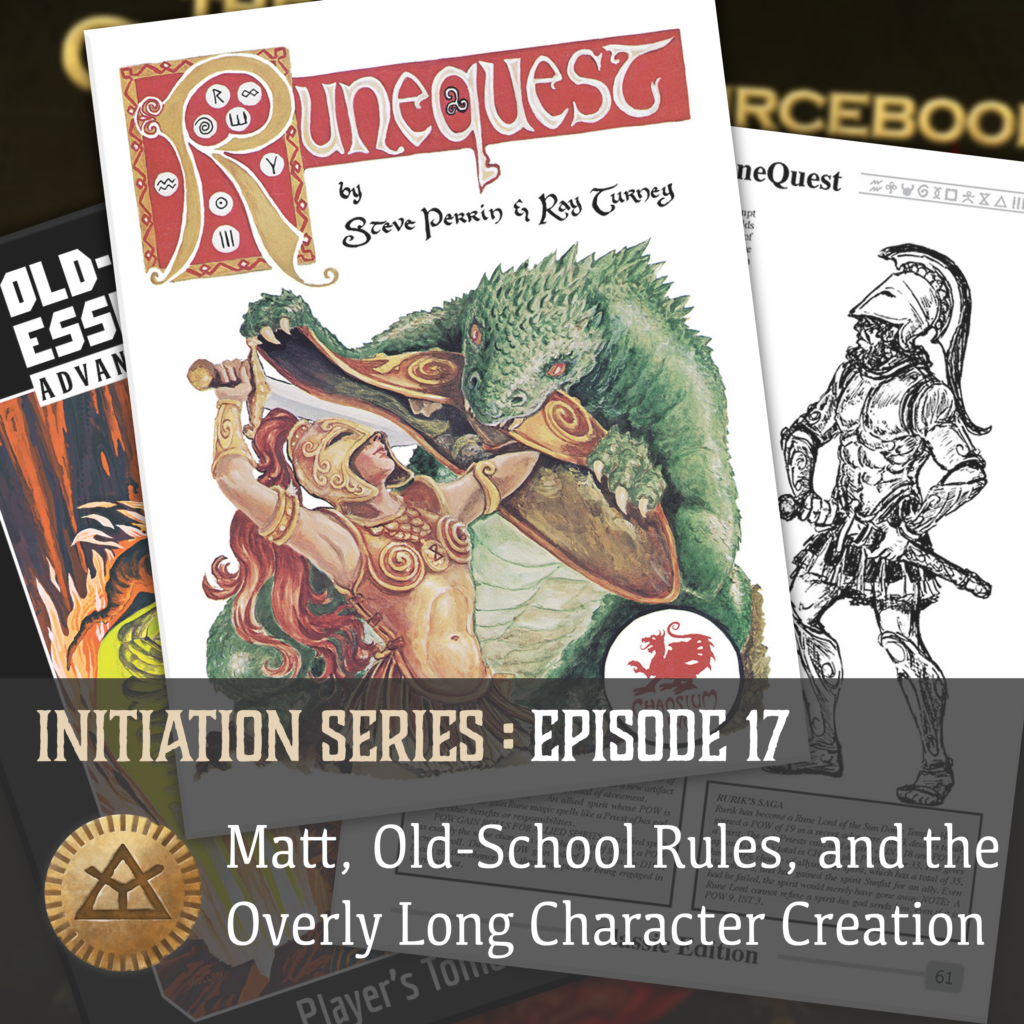
This new initiation episode features Matt, a school teacher who recently moved to Virginia and does the Lord of Chaos’ good work by introducing kids to roleplaying games.
Show Notes
Things we mention in this episode include:
- Starting with D&D (of course).
- Getting “sucked” into Vampire: The Masquerade and the World of Darkness setting, particularly Mage: The Ascension.
- We don’t need to get into the weeds of the WoD metaplot.
- Discovering the OSR movement, and especially OSE.
- Going from Troika to Seth Skorkowski to Call of Cthulhu to RuneQuest 2nd edition (classic reprint)
- Reading RQ2 cover to cover. It has layers of complexity but somehow in a simple way. It’s less crunchy than, say, Lancer.
- Rurik’s saga in the RQ2 rulebook gives a fascinating glimpse of the setting.
- The idea of ransom is very interesting, especially to prevent PCs from always killing everyone.
- Cults of Prax also has a very interesting narrative, and expands nicely upon the cults glimpsed at in the RQ2 rulebook.
- The new RQG books are like RQ2 but with a lot (a lot!) more pages, and great art (some of the best ever found in an RPG product).
- Matt had a false-ish start as an RQG gamemaster, but has now found a player spot in someone else’s game.
- RQG character creation is way too long and complicated.
- Too many choices to make.
- Lots of information that that needs to be looked up about the setting.
- Somehow RQ2 did a better job teasing the setting but implying that “nobody knows more that this”. Comparatively, RQG teases the setting in a way that sends the reader to the Glorantha Sourcebook and other lore books.
- This might be because reading RQ2 puts the reader back at the origin of the game.
- Matt ran the Broken Tower but the first character took three evenings to create. He therefore used a more “we’ll figure it out as we go” approach, coupled with pre-gens, for the other characters and the lore.
- Not looking up all the lore you don’t need for an adventure is important.
- The Glorantha Sourcebook might be required reading to explain a lot of stuff from the rulebook (like the many places, events, and NPCs mentioned in the Family History).
- Dreaming of a simpler character creation system, like Call of Cthulhu’s faster creation options from the Investigator Handbook.
- There’s actually a simpler RQG character creation system available on the RQ Wiki.
- Matt experienced the Broken Tower a second time as a duck, and is now on to more adventures in Dragon Pass… including going to the Shaker Temple and descending into Hell!
- Matt wouldn’t necessarily recommend RQ2 as a first dive into Glorantha, but he recommends it as a good rules system read.
- Matt recommends the RuneQuest Starter Set and its world-book as a first contact with Glorantha.
- But Sartar is Matt’s least interesting place to game in.
- Matt changes his mind and recommends Khan of Khan instead to get started… but we discuss how the game is now out of print.
- Ducks are real cool, and the Spirit World is cool too.
- Matt isn’t really interested in metaplots in general, and Glorantha’s Hero Wars isn’t any different.
- We talk a bit about various ways of playing around a metaplot, or ignoring it.
- Joerg argues about taking on the role of the main heroes of a metaplot.
- Matt wishes there was more information outside of Sartar and the River of Cradles, and outside of the Orlanthi pantheon.
- Again, the Sourcebook is recommended reading, but (at the time of recording) the release of the first few cult books was imminent.
- Matt asks his question for Joerg, about how the Mindlink spells aren’t in RQG.
- Ludo talks about the dark-elf walkie-talkie hack, and Joerg mentions the Waertagi sort of did that already.
- As we go through the wildcard questions, we also go on a tangent about Yelmalio (who else?) that leads us through the God Time, the Dawn, and up to the Sandheart campaign.
Credits
The intro music is “Dancing Tiger” by Damscray. The outro music is “Islam Dream” by Serge Quadrado. Other audio is from the FreeSound library.
Episode 26: Chaos Rises!
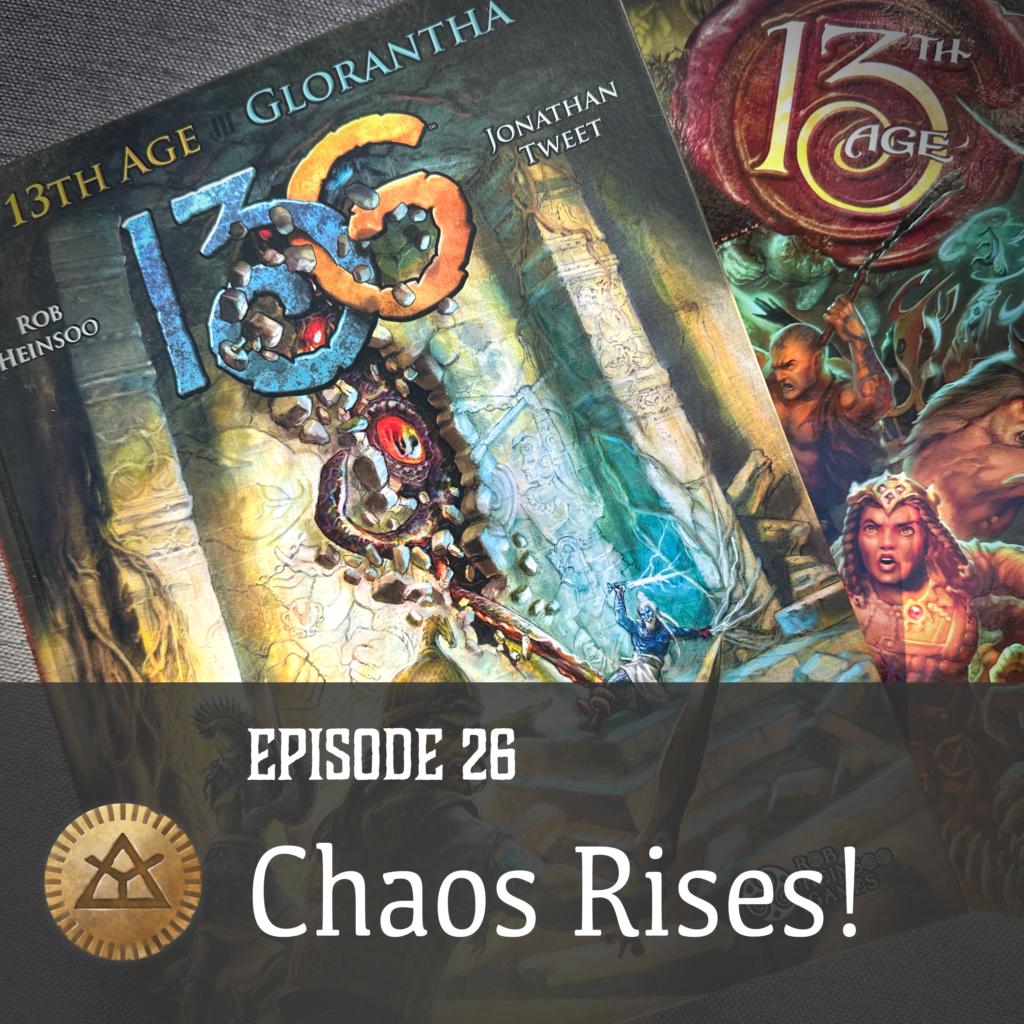
In this episode which we finally get around to talking about 13th Age Glorantha. Ludo and Jörg are joined by Becca of “Dames & Dice” fame on the Iconic Podcast, and by Evan Franke, of “Exploring Glorantha” fame.
- Becca is part of the Iconic Production Podcast, a bunch of podcasts and channels dedicated to talking about 13th Age, which includes 13th Age Glorantha. Becca has Glorantha experience not just from a multi-session game of 13th Age Glorantha, but also from two RuneQuest Roleplaying in Glorantha games (one of which she talks about in episode 5 of Dames & Dice).
- Evan has already been on this podcast together with J-M in episode 19 of our podcast, talking about Jackals and Ancient World-Building. He may be more familiar to you as the source of deep Glorantha lore on the Exploring Glorantha YouTube series. He jokingly describes himself as a “hanger-on” of Iconic Production podcasts and actual plays.
As Ludo expounds on the history of Glorantha as a setting for games, Becca drops that she has the board game: a copy of the original White Bear and Red Moon, gifted to her at Christmas last year by her dad who did a lot of roleplaying in college along a couple of AD&D 1st edition books.
13th Age
Ludo admonishes people to not just buy the 13th Age Glorantha book thinking of it as a full game as you need the 13th Age rules along with this book. (Ludo claims it has to be the full rules book, but it is possible to work out the rules from the SRD which is free from Pelgrane Press)
Becca outlines 13th Age: a fantasy D20 roleplaying game which feels somewhat similar to D&D 5th edition with a few exceptions (no skills, backgrounds, the idea of failing forward) and being a lot more heroic in scope than your usual start into a D20 game.
Ludo quotes descriptions of 13th Age as a mix of D&D 3.5 and D&D 4th edition, usually in reflection of its authors’ involvement in those two iterations of D&D.
Ludo comments on the tone of the writing in the 13th Age rules book, and on the emphasis on the player characters being the heroes (and movers and shakers) in the world rather than just another bunch of schmucks.
Becca agrees that beginning characters are a lot more powerful than in D100 games or like roughly a 5th level character in D&D 5th edition.
Icons
One thing to put your character on the hero’s path is your Iconic Relationship, a connection to one of the 13 Icons in 13th Age. (The number 13 comes up a lot…)
There are 13 Icons to the world, great beings who can influence your character and how that character is made.
Jörg asks what an Icon is: a god, a demigod? Becca gives a few examples, like the Emperor (of the Dragon Empire) who has a lot of resources and followers behind him, the Great Druid who lives in the woods with an agenda to let nature take down civilization, the Diabolist, the Crusader, the Orc Lord, etc.
In Gloranthan terms, these would be people like the Red Emperor (a reincarnating demigod) or Zzabur (immortal sorcerer supreme). Ludo points out that while these Icons may have agendas antagonistic to one’s own personal or cultural agendas, there are no outright good or evil individuals among these Icons.
Rob Heinsoo and Jonathan Tweet went into the rulebook saying “It is your world, nothing has to work in it like it does in our world.” That means that the Emperor might really care about running the Dragon Empire down to the details, or he might just use his position as highest authority in the Empire to acquire some certain personal goal or object of power. Likewise the Orc Lord may seem like a terrible person leaving a trail raiding and pillaging behind him, or he could be a liberator for all the monsters in the Empire suppressed by human (elf, dwarf, …) supremacy. Which sounds a lot like Prince Argrath to Jörg.
Ludo points out the conversational style of the rulebook, with little jokes, designers’ notes (at times contradicting one another),
One Unique Thing
In 13th Age, each character has one distinctive feature that sets them apart from all the rest of the people in the world. It may be something big and major from the onset, or it might start as something simple and small but possibly growing as your character acquires levels and more powers.
Becca tells us about her and Evan’s characters in the Iconic Production playtest actual play game. Becca’s character was the last heir to the Ringsome Dukedom, a formerly lovely place now swallowed by a Hellhole. Evan has something that can either destroy the Lich King (one of the 13 icons) or restore the Lich King to its former glory, the wizard king. Evan describes this as his gift to the GM to shape the campaign, not as an in-game benefit to the character but as a campaign hook for the unfolding story of the characters.
Jörg concludes that this concept might be translated to Glorantha as something like “I am Arkat Reborn” (although Evan points out that that claim is actually not that unique as there will be five Arkats in the foreseeable course of the Hero Wars at the same time).
Ludo asks how that collection of Unique Things for each player character works out in practice for the GM who has to balance these rather different personal spotlights in the course of the campaign, but Becca points out that these reduce the number of Icons the GM has to keep track of for that campaign, with Becca’s heiress having a negative relation to the Diabolist (as source of that Hell Hole), and Evan’s character having (to build) a relation to the Lich King and his activities.
Becca describes Evan’s One Unique Thing as more of an end of campaign (arc) item when the decision which way to go is made while her own theme of dealing with the Hell Hole might be more mid-campaign,
Jörg asks how these rather specific directions of such a campaign align with pre-written adventures for 13th Age. Becca describes how 13th Age adventures too are written in a conversational tone, asking the prospective GM about the main Icons and giving some ideas how each of the Icons might influence this specific adventure, giving 3 or four ideas for each Icon.
Becca quotes some of her own writing for Pelgrane Press for the to be released in a near future, “Behemoths: Path of the Koru”. In her contribution, Becca outlines how the impending death of the Behemoths will affect the Dragon Empire and the future of the setting, providing advice for each Icon how they are involved and what their interest in this event may be.
Ludo points out a narrative mechanism where the players roll on their Icon relations and giving the GM a roll for the Icon which is going to be involved in the next leg of the game, providing another narrative clue to the GM about the direction this play-through of the scenario/campaign is going to take.
Becca gives a practical example how to spend a relationship point to the Icon in a situation where the player characters are stuck, invoking a narrative reason to apply said relationship. And also how a creative GM can take this approach to insert another complication to the lives of the characters.
Ludo rambles about how a gritty D20 game has such narrative mechanics, and Jörg feels reminded of how Fate Points are used in Fate.
Montage Technique
While Ludo is in the spirit of raiding 13th Age for other games, he points out a mechanic that might not even be in the core rules, the Montage technique, allowing you to go through “half the dungeon” in just about 15 minutes.
The GM challenges the players asking one of them to come up with a problem they encounter on their way into the story, and the person next to you will solve it, going through all the players to create a shared idea about the story so fat. Unless it is a big ask, you don’t typically spend spell slots or similarly limited resources on these but just solve these narratively.
Failing Forward
When designing their rules, Jonathan and Rob observed that in many games there was a danger of getting stuck in a station of a scenario if nobody rolled well enough. In order to keep the narrative going, the player attempting e.g. to pick a lock still fails their roll, but the GM still allows the door to open, but introduces a complication. The door opens, and behind it there have gathered a bunch of armed and angry orcs…
Ludo talks about how old-school investigative games (or scenarios) may get stuck by the players (and/or their characters) failing to find or to get the clues, where some more recent games like Robin Laws’ Gumshoe (also published by Pelgrane Press) have the philosophy that the players automatically get the relevant clues but modifying the narrative (and possibly the sense of personal achievement).
Escalating Combats
The Escalation Die in 13th Age is meant to reflect how the momentum in a fight builds up as it progresses. In the first round of the combat, the Escalation die is not used, but in the following round it is turned to show a 1, resulting in the player characters’ attacks gaining plus 1 on their D20 roll (where rolling high is good), giving +2 the next round, maxing out at +6. This helps speed up combat by reducing the chance of the big heroes missing all their rolls in combat. Normally this applies only to attack rolls, unless a character has a special ability allowing the use of the Escalation Die. Equally, normal monsters don’t benefit from the Escalation Die unless they are special monsters like dragons, who do. There might also be special circumstances where the GM may deny the Escalation Die to the player characters, like subjecting them to a fear power, making monsters scarier or forcing players to approach a fight more tactically than just dicing out attack rolls.
The Escalation Die may also be used as a timing device for the GM to trigger an additional event, helping to build more dynamism into a scene.
Porting this over into other game systems as a cumulative attack bonus could easily be done, e.g. a cumulative 10% bonus. Whether this makes a good timer when ported to say RQG is another question.
Monsters Have Fixed Damage
Which makes player “death” rather predictable once you have suffered a few hits, especially since you don’t get to do anything actively to block damage, as Jörg observed in a game he sat in.
Evan points out that the player characters have always the option to run away from an opponent (unlike RQG which penalizes such retreats), and also that player characters have a go at a heroic return, a game mechanic familiar to players of the WBRM/Dragon Pass board game and repurposed to simulate the “backdoor from Hell” heroquesting reward that seems to have been one common heroquesting bonus in the Stafford house campaign.
Other Features of 13th Age
Missed rolls by player characters still deal some minimum damage.
There is a whole chapter of advice on building battles and staging opposition.
When Jörg asks about how non-combat specialists fare in battle, we learn that with very few exceptions all classes will have combat or at least combat-supporting abilities. There is no idea how to model a pacifist Chalana Arroy healer as a 13th Age Glorantha class yet, though.
13th Age Glorantha
Next, we move on to 13th Age Glorantha specifically.
The “Chaos Rises!” Campaign
When translating Glorantha into a sandboxy framework for fighting monsters, the designers opted to go with Chaos as the existential threat that needs to be dealt with rather than politicking or intrigue.
Chaos Rises! is the framework for 13th Age Glorantha. While the Kickstarter for 13th Age Glorantha also financed the publication of the (system-less) Glorantha Sourcebook which provides the background for the upcoming Hero Wars, the main premise of 13G is that the world is breaking as Chaos rises. You need to pull together desperate player characters to prevent the world from falling apart as a separate thread from the geopolitical conflict between the resurging Kingdom of Sartar and the Lunar Empire. While that conflict spawns some of this, there are other places where Chaos rears its ugly head, like the scorpionfolk queen Gagix Twobarb down south in Larnste’s Footprint or chaos monsters boiling out of Snake Pipe Hollow and other notorious dens of Chaos. In keeping with the general design philosophy of 13th Age this is not an absolute requirement, the basic idea is that heroes set out to patch the world together so that there is a stage for the Hero Wars to happen at all.
Given Evan’s credits as a big Glorantha expert (Ludo said nerd, but…), Ludo asks whether Evan’s games feature elements and protagonists of the official Hero Wars prophecies, or whether he just lets loose fighting Chaos. Evan tells of two different paths he has taken, one GMing published introductory scenarios for newcomers to both Glorantha and 13th Age, such as The Next Valley Over where something chaotic destroyed your neighbouring community and you have to figure out what it is, or The Horn of Snake Pipe Hollow which is from the 13th Age Glorantha rulebook itself.
Evan then mentions his “little side project” Red Moon and Warring Kingdoms which is set in Fronela, far away from Dragon Pass and exploring playing 13th Age Glorantha with Lunar characters (although not from the Lunar Empire). Parallel to Chaos Rising, there is the problem of the Kingdom of War in Fronela, distracting from the (Sartar and Lunar Empire focus on the) Hero Wars. For Evan, this is also a return to the spirit of adventuring in RQ2 in distant areas like Balazar where the local adventures and dangers make up your experience of Glorantha, a sandbox of dungeons as Ludo puts it.
Runes as Icons
Ludo points out that even the description of the setting in 13th Age Glorantha is not by region, but by rune, providing Chaos places like Snake Pipe Hollow or Larnste’s Print, Disorder places like the Big Rubble and the Rockwood Mountains, Dragonewt places, Earth strongholds etc. Not so much a cohesive whole but locations to pick and insert into your campaign regardless of geography.
Ludo refers to a map pointed out to him by our listener Uzz, a map of Dragon Pass and Prax without any labels at all, leaving this up to the GM and the campaign to develop or to randomly re-interpret.
Evan elaborates that in standard 13th Age the Icons are important movers and shakers in the world, and that the authors could have ported that into the world of 13th Age Glorantha framing Jar-eel, the Red Emperor, Argrath etc. as Icons. Rather than these transitory characters, you have a relationship with several runes that dominate your life and personality. We see something like that in RuneQuest: Roleplaying in Glorantha, but in 13th Age Glorantha this is limited to a set of three runes, one of which (at least) should be connected to your deity and cult.
This extends to framing the scenes by rolling which rune will be influencing the upcoming scene. Ludo admits that he had to re-read the “Narrating the Runes” chapter a number of times to get an idea how to make that work.
Similar to the Icon relationships in 13th Age, a character’s relationship to three of the runes can be positive, neutral or negative/conflicting. Rather than the augmenting role you get from Runic inspiration in RuneQuest Glorantha, in 13th Age Glorantha the runes allow the player to frame the scene from a story-telling or atmospheric approach.
Ludo describes how RQG might force a player to spend a rune point for such atmospheric enhancement of a scene when all they wanted was to look cool when taking the narrative spotlight, something more easily achieved in HeroQuest Glorantha/Questworlds, and in 13th Age Glorantha.
Character Classes
13th Age character classes start with a short blurb about what the role of members of this character class is in the world.
We start with the Trickster class, which is a unique approach and definitely not for everyone. The core idea is a role for a heroic Trickster. Evan describes his experience playing such a trickster as the rest of the party playing in Beowulf or the Iliad while the Trickster was playing in Monty Python and the Holy Grail. Everything the Trickster does serves to make the other characters look and act more heroic while causing pain and danger to the Trickster. These powers include to “take possession” of a fumble rolled by another player, applying that to the next roll done by the Trickster, or to cause critical success for another player by taking on a ridiculous disadvantage for the Trickster.
Evan describes a scene where his actions as a Trickster enable the party Humakti to make use of an ability that the initial miss on his attack would otherwise have wasted, resulting in the comic relief granting the Humakti their great moment.
Speaking of comic relief, Jörg asks whether you can play a duck in 13th Age Glorantha. This brings us to cultural backgrounds and races, of which there are several human cultures with different advantages and disadvantages in the book, plus Dark Trolls and Ducks. Ducks get one of two powers – the grim death-wielding power or the wacky comic-relief power. Evan mentions that his upcoming opus will contain not just human followers of the Lunar Way and other Fronelan cultures, but also Mostali, Aldryami and Waertagi as ancestral backgrounds.
Ludo suggests that all the class-based powers in 13th Age Glorantha are good ideas to be used as Heroquesting boons or abilities. There is also a chapter on heroquest gifts by runes in 13th Age Glorantha.
Ludo describes how especially the Earth Priestess and the Hellmother have entire hosts of spirits they can summon repeatedly in different combats, unlike the very restricted rune power economy in a game of RQG.
This leads to a more heroic style of Glorantha, perhaps the anime version of Glorantha (rather the Saturday morning cartoon version, to allow some adult content). While RuneQuest does offer a toolkit with which you can ultimately construct such effects, with the 13th Age Glorantha powers you simply get to use these in play without fine-tuning and developing your character in that direction. Jörg points towards the RQ2 Runemasters supplement where each of the sample rune masters had zoos of spirits enabling them to overcome some of these limitations, but Ludo feels that with new limitations like the RQG Charisma cap for spirits controlled by a character the RuneQuest resource economy remains more stingy.
Glorantha Through Different Systems
After all this talk about how 13th Age compares to RuneQuest, Jörg asks about how the experience compares to playing HeroQuest Glorantha/Questworlds. Evan refers to his experience of playing with Ian Cooper at Chaosium Con. 13th Age Glorantha is a lot crunchier than Questworlds, with classes, powers etc. providing rather strict definition what can be done. Where 13th Age Glorantha is about fighting monsters in Glorantha in the course of the narrative, Questworlds with its single roll resolution mechanic is a game of telling a story, having a rich narrative experience in engaging with the world followed through with a very simple resolution mechanic.
Ludo chimes in that both 13th Age Glorantha and Questworlds have in common a more magical Glorantha as opposed to the more mundane Glorantha that can be modelled by RuneQuest. (Ludo actually suggested “boring” rather than mundane, and claims it would be nice to get some angry emails for a change.)
Heroquesting
Putting his finger again into the continued absence of official rules for Heroquesting in RuneQuest, Ludo asks about the 13th Age implementation of Heroquesting.
Where an F20 game can be described as Dungeon Crawling, Jonathan Tweet and Rob Heinsoo described heroquesting as Myth Crawling, visiting various stations of the quest like stations in a dungeon. Evan describes the Lightbringers Quest where the Westfaring (to the Gates of Dusk) is a Wilderness adventure that gets you to the Dungeon, the descent into Hell, with various stations like the underworld palace of the Only Old One, getting thrown into the dungeons there, getting revived, descending even further to Yelm’s Court where there are tests to be overcome, and finally facing the Boss Monster, the Devil sent into Hell, in order to revive the world.
All of this can be put together like a dungeon adventure with stations like rooms. And the experimental heroquesting introduced by Arkat and exploited by the God Learners is that in certain rooms you have secret passages, leading to other parts of the dungeon or possibly into completely different dungeons. This analogy works very well to structure a heroquest.
Evan also talks about Jacquaying a dungeon, referring to Jennel Jacquays’ (of Griffin Mountain fame) seminal work in the early F20 space that there are different ways to get to different parts of the dungeon.
When asked about her experiences with Heroquesting (in RuneQuest), Becca confesses that it felt terrifying in the stakes. Her second experience resulted in her character being taken over by the Chaos entity with many bodies, returning to her tribe and eating them one by one.
The stakes were what terrified Becca. To her, a GM presenting the world right means that everything is important or consequential – who you get married to, who you sell your llamas to, who you make an alliance with, all those creates rather high stakes. Doing a heroquest on top of that, say you need to re-seal a box or your entire clan might be erased from the face of the world, increases those stakes to an existential level. The timelessness of Godtime means if you mess up there, it will always have been messed up. Jörg compares that to the time-traveller’s paradox problem.
Returning to 13th Age Glorantha, Ludo talks about the suggested heroquest gifts to be given to the characters. Jörg asks whether these are designed to fit into the character advancement options, but they are tied to runes, and essentially replace the distribution of magical items in standard 13th Age. These gifts are tied to a rune that is part of your character, the gifts have different categories such as combat boosts or defensive or special powers, and they can be levelled up from adventurer tier through champion tier to epic tier, giving both a mechanical bonus and some special narrative ability.
Ludo gives special mention to the fact that you might pick up Chaos gifts on heroquests, which come with a hilarious description. While there are some gifts that resemble rune spells in RuneQuest (making it Gloranthan to long-time fans), others are quite original.
Last Words
Ludo gives a shout-out to the artwork in 13th Age Glorantha.
Evan’s take-away from 13th Age Glorantha is its approach to monster design. The good thing about RQG (as well as D&D fifth edition) is that everything works the same (mechanically), and the bad thing about it is that everything works the same. The monsters have the same stats as the player characters and use the same spells as the characters, making them really complicated to run for a GM who has also to provide the ongoing narrative. This approach culminates in the mook rules for less consequential opponents. While Jörg throws in that in his experience of running RuneQuest he cannot remember when he last used fully stat’ed opponents outside of material for publication, Ludo shares that that is one of the most work-intensive and least pleasurable parts of preparing a publication for RuneQuest.
When asked about converting between 13th Age Glorantha and RuneQuest Roleplaying in Glorantha, Evan has ideas about converting e.g. Griffin Mountain to 13th Age when not working on his grand Fronelan opus.
Ludo gives a shout-out to the lists of enemies in the rules which is almost a graded set of encounters, with e.g. a broo shaman rather than a standard broo, or a maimed ghoul if the encounter needs to be toned down.
Becca talks about the ease of using elements from other 13th Age supplements for 13th Age Glorantha, and also in the other directions like e.g. scorpion men with their extra abilities that may be surprising in other F20 environments.
Becca points out how 13th Age Glorantha has everything (Gloranthan) in a single book, much like the Core 13th Age rulebook has everything you need to run the game.
Evan talks about the 13th Age SRD (System Reference Document) that has its own interactive website and complements the missing rules parts in the 13th Age Glorantha book, allowing you to make sense of the mechanical bits even without the full 13th Age rules set.
Still, Evan advocates getting lots of 13th Age stuff as it is very beautiful and evocative.
Looking at her collection, Becca suggests that she could stop buying stuff, but she just doesn’t want to. While there are multiple add-ons and campaigns which field their own monsters (or those from some of the additional bestiaries), the core book contains enough to get a game off the ground. There is a second edition of the core rules under development (currently being playtested), but backward compatibility or compatibility with 13th Age Glorantha will be good.
Where to Find Our Guests
Becca’s dulcet tones can be heard on Iconic Production Podcast, she is on the Iconic Production wordpress website, as well as on Youtube and Twitch, Twitter (nowadays X) and Instagram. Only genuine with the dragon icon:

Evan too can be found on various Iconic Production things, the back catalogue of actual plays, including at least one run by Evan, a 13th Age Glorantha game called Rising Moon Rescue, and you will see Evan again on Exploring Glorantha, which is currently in hiatus due to health issues for J-M. Thankfully J-M is on the road to recovery, and Evan gives his and Iconic Podcast’s appreciation for the outpouring of support for J-M and his family. Exploring Glorantha will be tackling Cults of RuneQuest in the next number of shows once they return to the regular schedule.
Ludo takes the opportunity to hoot his own horn about his own too publications on the Jonstown Compendium, A Short Detour and Bog Struggles, as well as a future publication on amnesiac Telmori werewolves and hopefully his “Goonies in Glorantha” campaign featuring children as player characters.
Credits
The intro music is “The Warbird” by Try-Tachion. Other music includes “Cinder and Smoke” and “Skyspeak“, along with audio from the FreeSound library.
Episode 25: Making Up Cults!
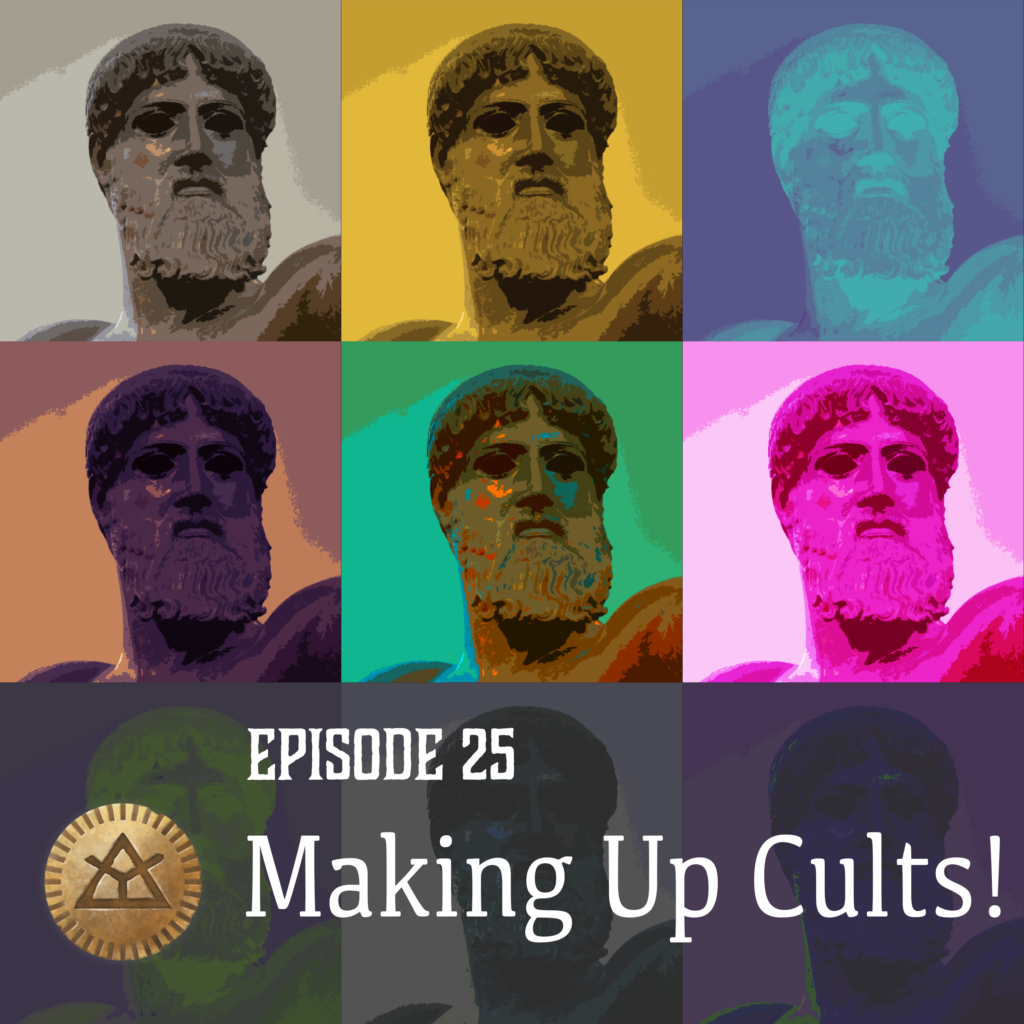
Our guest for this episode is Austin Conrad, who last graced our podcast in episode 2, On the Road. Austin is the author of many things on the Jonstown Compendium, generally publishing under the “Akhelas” brand, while he is known as “Crel” on BRP Central, Discord, and social media.
Introductions
Austin is a contender for the most productive publisher on the Jonstown Compendium with his 24 issue Myth of the Month series that ran for the first two years of the Jonstown Compendium, culminating in the sizeable scenario booklet To Hunt A God.
Akhelas is the name of the setting Austin started writing in 2016 before the Jonstown Compendium even existed, and before he was even involved in Glorantha. The setting is inspired by Homeric epics and the tales of Herodotus, and especially Thucydides and the conflicts of city states.
The cosmology of Akhelas derives heavily from Platon’s Timeas, and the setting is kind of on the edge between Bronze Age and Classic Age. Little wonder Austin “took to Glorantha like a duck to water”.
When Austin is going to start publishing this animist city-state Bronze Age warfare stuff, he expects people to point to Glorantha as a parallel. Great minds…
Austin expects to self-publish his first novel maybe later this year, more likely next year.
Ludo mentions that Shawn and Peggy Carpenter have returned their publication Valley of Plenty, with new material added: extra detail, new cults, extra adventures. Like Austin, Shawn has announced a novel for next year.
To Hunt A God
According to Austin, To Hunt A God is a heroquest where your adventurers do the thing it says in the title.
Before we conclude this episode with this definitive statement, Austin expresses his sense of accomplishment after getting this book into print on demand. He urges everybody to sit down and publish their stuff in the community content program. More stuff is great, and sitting down with your own book is a spectacular experience. Getting it print-ready took Austin about a week of work and then six weeks of waiting.
To Hunt A God contains a new cult for players, Hrunda. Austin had the goal to provide a player cult that people would want to belong to. Another major section of the book is a temple site dedicated to Hrunda and a number of associate beast totem cults with their human and animal worshippers.
The second half of the book contains the adventure. It sets off with a religious festival attended by the player characters. We discuss the location of the temple and the Old Woods in relation to Esrolia (west of the Skyreach range, north of Longsiland, the easternmost outreach of the Arstola forest).
Austin calls out both similarities and differences with the Wild Temple in Beast Valley. The temple in the Old Woods is more modest in extent, concentrating all its important holy places in a small area.
Austin explains that the adventure originated from his RuneQuest Glorantha campaign situated in the city of Sylthi in Esrolia. We talk a bit about how this piece of Arstola is different from the rest of the forest, and where to find information.
Austin admits that he still needs to catch up listening to our podcast. Ludo is not sure he has his priorities straight.
Making Up Cults
Ludo elaborates on how cults are the defining difference between RuneQuest Glorantha and other fantasy games and settings, and how sooner or later every group or GM will leave the canonical selection of cults behind for their own special thing. Even with the upcoming publication of the Cults of RuneQuest books (“more cults than you need”) you will sooner or later find your own niche cult. Jörg points out that already the third adventure in the Colymar Adventure book gives the player characters a choice about how the deity of the backstory will turn out, showing the official endorsement of this practice. Ludo counters with the Quickstart adventure which will lead to some new cult activity if the players go for mostly non-violent solutions.
Austin confesses that he is a great fan of making up cults. GMs as well as player tend to buy in to their game by adding a personal touch. In mainstream D20 games people make their own character class. In RuneQuest set in Glorantha these are the cults. Austin talks about numerous cults and deities that he wrote up for his Esrolia game. Ludo teases that people might understand this as a backlog of upcoming books, but Austin quickly denies anything within calling distance. There was a reason he needed 18 months to finish To Hunt A God after having hit a hard start into 2022, and re-entering a project with a thousand pages of notes after such a break won’t produce results quickly. Austin compares his creative process to that guy who has a disassembled car project in the garage he religiously visits, only to drink a beer or two rather than put in some effort.
Austin also explains how him turning to a full time writing job means that people need to buy his books if they want the Esrolia project to proceed, as there will be fewer commissions outside of his Glorantha writing.
Inspired by the Red Book of Magic
The Red Book of Magic is the collection of all the Rune Spells and special Spirit Spells from the Cults Books (at least at the time of its publication back in 2020, when we naively thought that the Cults Books would be just around the corner). Because of the delay of the less typical cult write-ups, Austin states that a spell without a known cult has no obvious way to use it in your game: a collection of toys without giving you the instructions how to use them.
One spell that caught Austin’s attention (and affection) was Proteus, a spell that allows the caster to change their shape into a shape that they have devoured earlier. While owners of RQ3 Gods of Glorantha would be able to find that this is a Triolina spell, people without this long out-of-print supplement have no way to associate that spell with a cult or to make use of it. Austin saw the Movement Rune, originally owned by Larnste, the god of Change.
Austin complains that the river cults are “boring as hell”, which is why he gives the river cults in his area access to shape-shifting. Austin had a player whose thief character could shape-shift, and it was a disaster, and they had a great time.
In Austin’s version, the river cults would give their worshippers three shapes that they could acquire with Meld Form (an Enchantment which doesn’t cost POW). These forms were bull, ram, and crocodile (actually baby crocodile).
Austin suggests that use of this spell combo could make Hsunchen shape-shifting magic less overpriced, with a beast partner sensing their approaching death potentially volunteering to give their shape to a human partner.
In summary, if you want to give access to an orphaned spell, how do you fit it into the setting in a way that is kind of unusual and unexpected.
Ludo describes how playing the scenario that he later published as Bog Struggles the players got access to the spirit of the River Horse, It seems to be very common to encounter spirits or forgotten godlings whose magic may get accessible as a spirit cult.
It is a question “What do I get in return for joining this cult”, and Austin points out that this mind-set was typical for the ancient (and earlier) periods. Cult practices were of a transactional nature – I give you this cow and you stop messing up my harvest by sending (pr withholding) rain. Deities were powerful forces, but not role models, unlike in modern monotheism.
Ludo calls the deities selfish assholes who mess with people and stuff, make children with whatever and demand worship and adoration. Jörg compares the deities to service providers who need to be propitiated in order to get the necessary service. We go on talking about Orlanth as Comcast deep in Balazar… We talk about how you only get the right kind of lightning when within reach of at least one of the holy mountains.
Types of Cults
The RuneQuest rules recognize several layers of cults by importance as well as by the target entity.
Spirit Cults
Spirit cults are a place to start if you want to screw with cults. They found very naturally upon exposure of the adventurers to the cult entity.
Austin wonders whether spirit cults are regularly established via adventurer types or whether they may be started by ordinary folk in the setting of Glorantha.
Ludo posits that usually there will be a shaman nearby whose job it is to monitor spirits and to know how to deal with them, both to avoid arousing them and when player adventurers or unlucky NPCs have aroused them (creating scenario hooks).
Jörg has a different approach, with spirits of and in the household or on a ship etc. being interacted with by ordinary people – often propitiated, but also asked for boons or magic.
Austin talks about household spirits falling into Ernalda’s domain, and Ludo brings up ancestor worship as another form of personal relation to spirits. Austin expects non-adventurer people not founding spirit cults but initiating into existing ones (providing the necessary number of worshipers for shrines to work). E.g. a minor healing spirit able to provide Cure Disease who may temporarily attract a great following.
Mechanically, spirit cults are a way to give player adventurers that one spell they cannot get from their main cult but can’t live without. Austin compares them to prestige classes in certain D20 games. In RuneQuest, this ties into the Power economy: how much you put into Rune spells, how much into personal enchantments, or other uses.
Austin re-invents the existing Praxian spirit cult Lightning Boy (the local form of Orlanth Adventurous).
Austin talks about giving a spirit cult a special rune spell and maybe one or two common rune spells. In hindsight, his treatment of Hrunda in To Hunt A God may have been over-complicated by giving some but not all common rune spells.
For another example, a Naiad who grants Breath Air/Water might make that POW investment more attractive if her cult also gave Heal Wound as an alternative use for that rune point.
Cult entities of spirit cults tend to be fairly minor deities or big spirits. Ludo thinks of them as not big enough to have played a role in the Gods War.
With major cults, Ludo sees a lot more strings attached.
Jörg proposes spirit cults as shards of greater deities unavailable in the local pantheon, e.g. in Prax (Lightning Boy) or the Lunar Heartlands. Austin and Jörg riff about farmer magics.
Austin asks whether most spirit cults would be formed after accidental encounters with a spirit, or whether people went out of their way to find a spirit to worship for a certain purpose. Ludo and Jörg agree that encounters play a role, whether in a game or in stories. (There are cases of heroes bringing in spirit cults to serve their communities, like e.g. Balazar with Mralota).
Ludo argues that spirit cults are just the first phase of a regular cult, with most remaining at this size (or disappearing again) while others grow and grow until they qualify for temples and regular cult structures. Ludo can see how (a local form of) Yelmalio could start out as a spirit cult before attracting more than a few dozen worshippers.
Other people go on exploratory heroquests to bring back an entity filling their needs that may turn out to be just an aspect of a greater deity (or grow into one). Jörg uses the simile of people describing the elephant by touching one of its parts to describe how such explorers may not grasp the full extent and associations of a deity they have contacted. Even major cults cannot really embrace the entirety of their deity.
Propitiation is a major point in spirit cults, too – giving sacrifice just to an aspect to be left in peace.
People constructing cults and shaping cult entities are known, too. Most notorious were the God Learners, but they were hardly alone. Austin points out that there is no reliable systematic approach, things need to be messy. Jörg suggests another term of these partial worship, splinter cults.
Austin makes a difference between contacting a tree spirit that exists within Time from contacting a God Time entity or partial entity like Aldrya. Austin also warns us not to delve too deep into the differences between God Time and Time…
Hero Cults
Austin starts with the observation that a hero cult is like a spirit cult, using the same mechanic. Ludo and Jörg point out that the difference lies mainly in the cult entity, as a worshipped cult hero may still be alive. Ludo even suggests that the entity can be one of the player characters.
Austin observes that it can be very fun to be worshipped, because then you get special powers. Jörg sees also a ball-and-chain aspect of being worshipped, as the cult entity gets pulled into the same role again and again, will he or nil he. Ludo asks whether that is more your echo in the God Plane, but Jörg claims that your echo and ego align over time. Ludo asks to expand this, so he can throw more shenanigans at his players (possibly referring to Austin here).
Ludo lays out the rules side of the deal. Your hero goes on a heroquest and obtains a heroquest ability and some hero points to activate it. Your hero then regains the hero points by being worshipped, and the worshipper in turn gain access to (a toned down variant of) the heroquest ability as a rune spell.
Jörg names Hofstaring Treeleaper as his go-to character for a hero with a cult. Hofstaring is worshipped among the Culbrea tribe, with some getting the tree-leaping rune spell. If Hofstaring was still alive, he would easily be challenged to jump the next impossible tree.
Austin prefers Jar-eel as his example (she has that effect on people who encounter her). If you were facing Jar-eel and you had a feat that allows your axe to do double damage against Lunes (Red Moon elementals), that feat would carry over into a vulnerability for the woman who is essentially the Red Goddess walking on (Gloranthan) Earth. She also has to fulfill commitments beyond what other initiates or rune masters have to.
Jeff Richard wrote a while ago that a capital H Hero will have transgressed against their cult, too. Ludo argues that that is the way to bring progress to the cult, with ultimately the hero cult feat/Rune spell becoming a mainstream cult spell.
Ludo asks how to play out this integration into the wider cult in a game without doing something like a three year break with some charisma rolls to convince 1D6 temples to adopt your method. Jörg suggests that this may happen in the face of cataclysm when the hero’s feat becomes crucial in averting a bad fate. With the Hero Wars basically consisting of a whole series of upcoming cataclysms, no shortage there (and no big deal if the GM adds another one). Or, as Ludo puts it, there are no Hero Wars, just min-maxing players with delusion of greatness. Austin feels called out by this.
Subcults
Subcults are a way to add a new aspect to a cult entity. One thing Ludo likes about Greek mythology is that there were many places where a special role was attached to an otherwise well known deity. There was a temple of Zeus Flyswatter (Zeus Apomyios) in a great collection of temples where all manner of animal sacrifice went on, which naturally attracted flies to the slaughter.
Jörg posits a different approach: whenever you write a new myth about a deity (or otherwise cult entity), you create a new subcult. Ludo thinks that’s the business of hero cults, but Austin points out that many hero cults are basically subcults of the existing cult of their hero. There are hero cults outside of existing cult structures, with Harrek the Berserk as a case study. Austin paraphrases Jeff Richard that Harrek gets worship for the same reason Malia does: “Oh please, Harrek, don’t come this way!”
Ludo makes Jar-eel the poster girl for the opposite way, a hero fully integrated into her deity’s cult. We discuss poster girls in the sense of Carry Fisher’s Princess Leia bondage image being worshipped by young boys in (or rather from) the seventies and eighties.
Austin really likes these distinctions to be messy and ambiguous. While some of the introductory material could be more straightforward, the ambiguity is what makes Glorantha (or mythology in general) fun to play around with. “Maybe that elephant has wings.”
Austin has the revelation that the entirety of the Gods War was just a dog toy. Ludo is sure that there was a God Learner theory supporting that, and Jörg locates that in the library of the sunk Trickster library in Slontos.
Jörg offers another distinction between hero cult and subcult – when did the myth (or introduction of the feat) happen, in God Time, or as a heroic effort within History?
Ludo fleshes this out – you can come back from the discovery of how to leap trees saying “look at me, I am awesome because now I can leap over trees, so worship me!”, or you can come back saying “I went to the God Time and met this kinsman of Orlanth called Bob who taught me to leap trees, so everybody worship Bob!” Hero cults are for egomaniacs, while subcults are founded by true devotees. Or the difference between Rune Lords and Rune Priests, as Jörg puts it.
Syncretism rears its ugly head: You encounter a deity which shares certain angles with your own, like e.g. being the cruel god at the Hill of Gold, chaining Orlanth to Shargash (or the Fronelan form Vorthan) and ultimately Zorak Zoran, possibly bringing in shared magic.
Austin gives an example of how the Death Wielder feat can do such heroic mis-identification that nonetheless can give access to powers.
Ludo takes Heler as the example – this could be the personification of the rain as a bona fide deity, or it could be just the name for Orlanth’s power to make it rain without any intrinsic contradiction. Vinga can be a daughter of Orlanth or just a female aspect of Orlanth. It compares to dedicating yourself only to part of the cult, like a Star Trek fan only ever watching the original series, and not the entirety of the franchise.
We conclude that you should not ever involve yourself with a fandom. And no, we aren’t fans, we are devoting ourselves to serious study of Glorantha. Ahem.
Jörg reminisces about dipping his own feet in Gloranthan fan-subcreation tackling the weird henotheism of Malkioni worshipping regular deities, like that Aeolian sect in Heortland. This triggers Austin to bring up his deranged scribble journal. Austin (too) spent three days rambling about Aeolian sorcery in his notes.
The Aeolians sit in southern Heortland, between Orlanthi Heortland (Hendrikiland) and God Forgot, a land of atheist sorcerers who either are Brithini or think they are, imitating their ways.
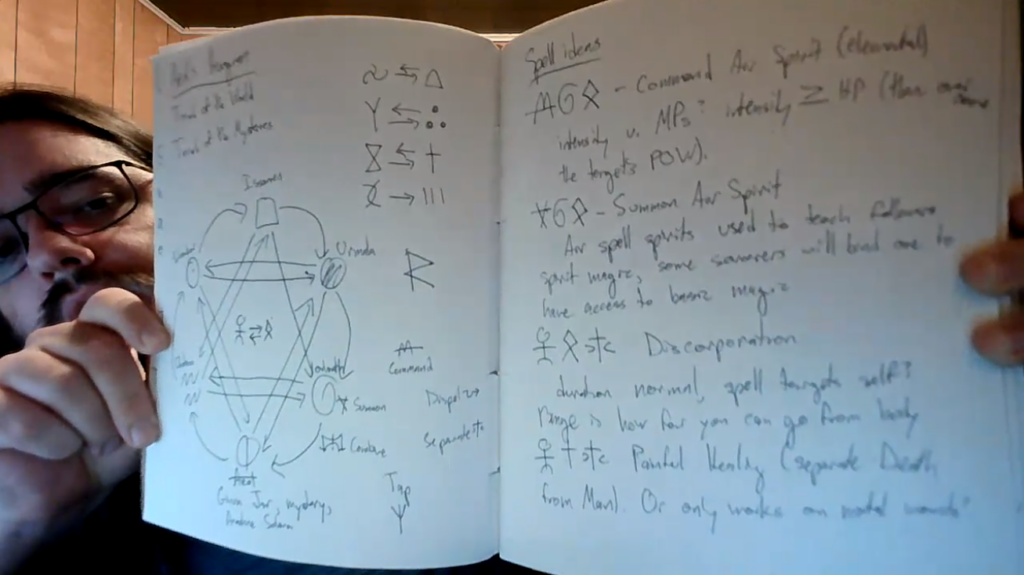
Austin’s deranged ramblings for Aeolian sorcery (which may never see the light of day any more than the picture above) have new relationships between runes, or assign elements to deities which aren’t apparent anywhere else. The premise is that the Monomyth could be very wrong and the magic still works, which is made possible by having the sorcery element which doesn’t rely on the warranty of your rune magic. Sorcery gives you the tools to jailbreak your phone, it is really good at it. Sorcery also allows you to infer and use the antithesis of a rune you mastered.
Regardless whether he will use it in publication or not, what Austin found out from this exercise is that if you don’t play with the cults but with the runes you are getting different results in your sub-creation.
Austin feels that the Monomyth as presented over-emphasizes the role of the elements, He plays through an experiment where all the Lightbringer deities are purely made up of power runes, including Orlanth.
Things get too messy to transcribe, or to count potential Nysalorean riddles.
Austin rambles about Entekos the still Air Goddess being the wife of Orlanth, challenging many magical preconceptions.
Jörg rambles about Orlanth possibly not being born a storm god but becoming the Storm King through his teenage hero journey through the Gods War.
Austin riffs on how the sorcerous ability to infer the antithesis of a power might influence a henotheist offshoot of a religion.
Jörg mentions his own first steps toying with the Aeolians.
Austin talks about approaching cults as a game tool rather than a setting feature and what would be interesting to mechanically play around with. Engizi is a case study of what Austin doesn’t like very much in the core rules book, there is little to incite a player to follow this deity.
As a counter-example, Austin cites Brian Duguid’s cult of Mee Vorala in his recent The Voralans offering on the Jonstown Compendium (Brian was our guest in episode 17, by the way) Austin could see himself as a troll mushroom farmer with access to cool alchemical toys and unexpected magics. “It is a really nice blend of inventive mythology and actual I could play this.”
Jörg points out that his tinkering with the Aeolians was accompanying his first time GMing RuneQuest in Glorantha after years of experience GMing RQ in his own settings, making actual play with the rules system a powerful motivation at the time, too.
Rune Cults
Austin’s Cult of Hrundra in To Hunt A God is an example of this.
For Austin, every fun idea doesn’t stand alone but blurs into a melange. One idea behind it was an illusion-focused knowledge god would be interesting. While Hrundra turned out not to be this, this was one of the starting points. Hrundra’s monkey shape was inspired by Thoth, the Egyptian baboon-headed god of knowledge (Besides the baboon head, Thoth is also often depicted with an Ibis head, in case you were wondering how you misremembered.) Austin has a blue statue of a baboon apparently dedicated to Thoth which gave him the notion of the blue monkeys. The actual imagery for Hrundra’s species came from howler monkeys from South America. Austin likes to take not one but maybe sixteen different influences to create a new one.
To Hunt A God was intended as the big finale of Austin’s Monster of the Month series, where he wanted to throw this big cool monster into the path of the players to deal with.
Ludo asks why Hrundra was designed as a stand-alone deity rather than like Gouger, the Ernaldan cult monster boar sent as a punisher at the start of Time. Austin basically just wanted to do it this way. Really wanting to do it is part of the fun to create things this way.
Ludo asks about pitfalls, dangers etc. to look out for. Austin remembers that writing the cult was a fairly easy exercise, as he wrote the first half of the publication in about a month. The cult was following a lot of standard structures, including Campbell’s Hero’s Journey, Eliade’s shamanism, and of course the full RuneQuest cult write-up outline originating in Cults of Prax.
Playing a campaign around Sylthy in Esrolia at the time, Austin also thought how the cult would be perceived outside of the forest it protected. In his game, the Temple of the Bones is the only such cult centre in the region for a lot of the gods of the wilds, including Yinkin who does receive associate worship in many Orlanth shrines but doesn’t have a full (minor) temple anywhere except maybe in Nochet.
Jörg asks about Kipling’s Jungle Book as an influence on the Temple of Bones with its assortment of wild deities – bear, snake, large feline, monkeys…
When thinking about Hrundra, Austin’s goal was cool fun cults, with more power than a cult of this size would really earn from a pure setting perspective. Jörg points out that this is balanced by the very hard geographical limit of the cult’s influence, but Austin just likes to make the setting more “gonzo” or “Bollywood”. Austin points to the gritty and personal style on the cover of the Starter Set while the setting also allowing over-the-top magics (like the Dragonrise image in the interior of the Starter Set).
Ludo talks about a scale in the fandom of Glorantha, with some making it a very archaeological world with everyday items like looms and farming, all the way to the completely gonzo scenarios by Sandy Petersen or Nick Brooke (The Black Spear, Crimson King). Both Austin and Jörg claim both ends of the spectrum for themselves, with Austin giving an example he read about a change in Mesopotamian plowing techniques documented in cuneiform tablets led to seeds being sown deeper into the soil, leading to greater crops, leading to population growth and a period of increased warfare.
Ludo asks how runic interactions influence Austin’s writing or design. Austin regards the Form and Element Runes as nouns and the Power Runes as verbs, and the antagonism of the Power Runes plays a greater role in his design. Austin talks about how the rune dice which allow you to roll a situative rune are great props for framing a scene. Austin reads and interprets the runes, possibly more for his deranged scribbles stage of collecting ideas than for his more structured writing process.
Austin comes back to how Hrunda has lost any connection to the initial knowledge god concept, having turned into a trickster scape-goaty thing. Austin likes how Hrunda fails to fit neatly into any of these boxes, if he did he would be too mono-mythy for Austin’s tastes.
Jörg points out that Hrunda also does this by having a significant shamanic element to his theist cult. Austin emphasizes the shamanic nature of the cult and mentions how that makes getting the support for a temple unlikely. That is why he came up with the Temple of the Bones as a joint shamanic worship site where small followings of shamans of different wild gods would help one another out as lay worshippers boosting the size of the holy place.
Jörg mentions the animal worshippers of Hrunda (the non-sentient of the bluepaws monkeys) whose attendance also boosts the site beyond normal temple restrictions.
One of the images inspiring Austin was swarms of monkeys attacking people in the streets of very urban cities in India like sea-gulls. So Austin thought to throw a bunch of monkeys into urban Esrolia, as a major pain in the butt, and some of them talk.
This worship by animals is a trick first published for the Cult of Zola Fel with its intelligent and non-intelligent fish worshippers. Austin saw that and thought this should be more widespread than just one river god in the middle of nowhere.
Austin also emphasizes that the bear (Odayla) worship at the Temple of Bones is very different from the Rathori Hsunchen ways, and has no (ancestral) relationship.
Cool Toys for Players
Ludo asks for a rather specific cool toy like e.g. turtle shell powers that a player might ask for.
Austin talks about several ways to handle this. In the case of Hrunda the cult was there first, and then the toys came up when muddling around the different stories that resulted from that. Most of his key magic is stuff Austin made up following the pattern of Yinkin (which in turn follow the pattern of the Hsunchen entities while avoiding the shapeshifting aspect).
Austin remembers thinking about writing a short cult creation guide when the Red Book of Magic first came out, but other commitments and doubts about how it would be received resulted in about ten thousand words being shelved indeterminately. Ludo suggests publishing such notes as the Conrad Library, while Jörg asks for the Akhelas manifests. If you ever see “Volume 2 – The Great Re-Ascent of Bullshit” in print, Ludo suggested it here first.
Taking the RQ2 Rune Power concept backwards, Austin posits that if you see a bunch of spells with shared runes, you can create a cult from that retrospectively.
For an example cult of Fire and Death, Austin talks about taking five or six spells, say True Spear, Produce Light, Earthwarm and maybe two or three others. One of the spells is exciting, three are okay and useful, and then there is your equivalent of Cloud Call which is mythically significant but dull as hell. You muddle these together, and then you ask what are the stories that led to those spells.
So if you have a fire god with True Spear, how did he win his spear? Was he born with it, did he tear his own rib out to get a spear, did he climb a tall mountain and use its peak as a point of his spear, did he chop a tree down and now carries a spear but his cult is hated by elves, was he born as a spear and then became a man – weird random ideas that you can draw from.
A rune spell in Austin’s mind is really an embodiment of the myth. You are throwing a story at somebody and it blows up in their face.
So if you want to have Proteus for a spirit cult, you might make it slightly malignant, to have to keep the magic you need to acquire a new form regularly (Austin initially suggested once a season, but then ruddered back to once a year). It is a way to have the really cool toys, but requiring that you cast Sanctify or similar regularly is going to cost you. Reasons to adventure, reasons to do stuff.
Hrunda has the story about stealing fruit, as a consequence initiates cannot let each other starve, and as a shaman or rune lord your are not even allowed to pay for food, you have to be offered it for free, steal it, or grow it yourself,
As a last word on creating cults: Just do it. You will make mistakes, and you will learn from these.
Austin talks about the upcoming volume on Mythology in the Cults of RuneQuest series and how he fears it might contaminate his creativity. Jorg speculates about some of the contents, with many old acquaintances appearing, and absences being more glaring than inclusions.
Closing Statements
Austin’s stuff can be found on the Jonstown Compendium. He also has a website, where he publishes his weekly blog, Glorantha stuff, backstory for his original world, a play report for Six Seasons in Sartar, a review of The Design Mechanism’s Mythic Babylon, trying soloquest rules and solo gaming, etc.
Austin’s most recent offerings on the Jonstown Compendium are the print version of To Hunt A God and the PDF of The Queen’s Star, a site-based adventure where you go to the Cinder Pits in Colymar lands, mucking around with fallen sky gods trying to convince them to let someone go.
Ludo takes the occasion to promote some of the stuff he has recently participated in on the Jonstown Compendium: Veins of Discord by Finmirage where he did most of the illustrations and the layout, a few drawings in The Voralans by Brian Duguid, the cover for To Hunt a God, and also one little illustration in The Queen’s Star. Ludo also teases Jörg about his still not upcoming work on Ludoch (and fisherfolk) in the Choralinthor Bay.
The God Learners on Holiday
On a more general note, the next episode of the podcast is scheduled for early September, so please hold the line (And that’s the last telecommunication simile in this transcript, too.)
Any delays in releasing this episode are Jörg’s fault for being late with the transcript.
Glorantha Initiation: Bryon, Convention Games, and What’s a Babeester Gor?
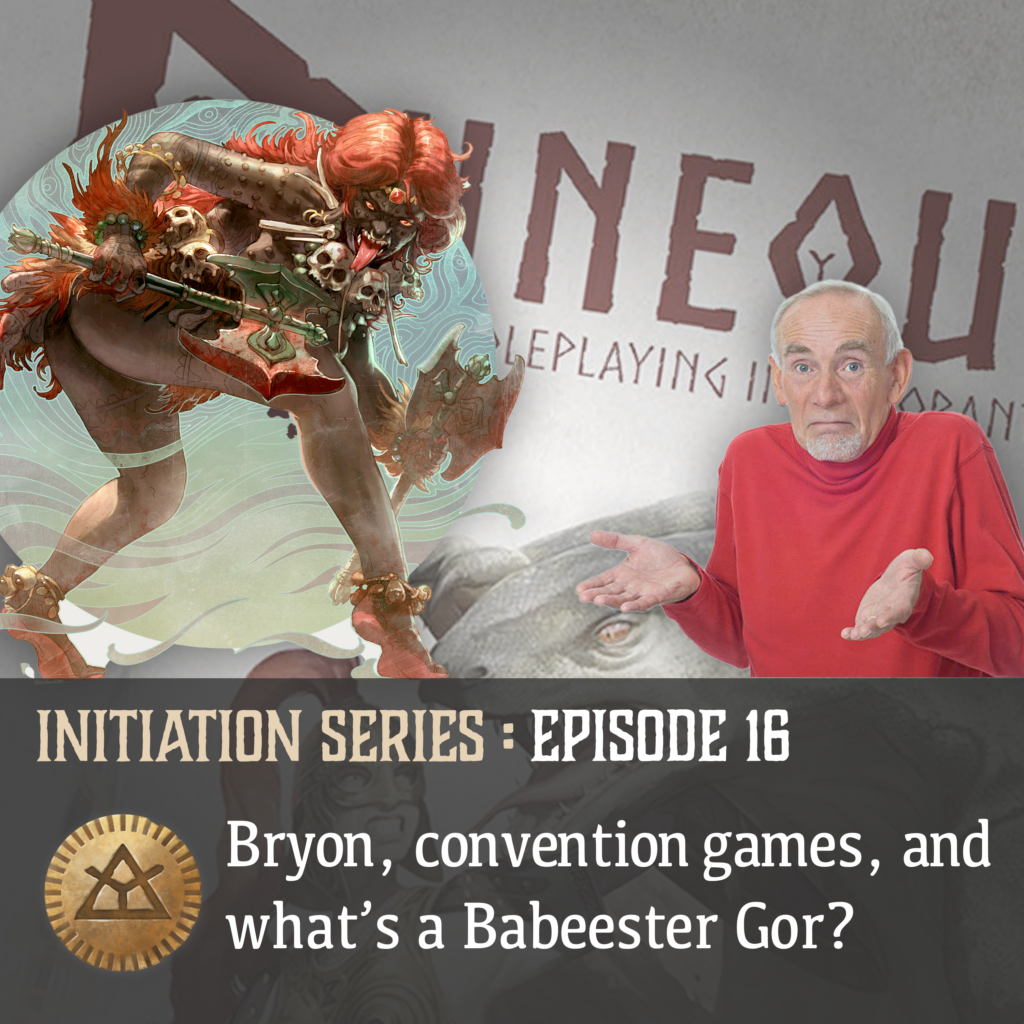
In this month’s Glorantha Initiation interview, Ludo talks to Bryon Ross without any Joerg present. Bryon is a long time RuneQuest lover, but he played mostly with the Fantasy Earth setting until the release of the RuneQuest Quickstart in 2017. He is also a retired marine, SCA participant, and regular Chaosium convention gamemaster.
You can find Bryon here:
- Bryon1187 on Twitter
- Bryon’s YouTube channel with his game reports, RPG-a-day entries, and, more importantly, RuneQuest Glorantha book reviews.
- Bryon on MeWe
Show Notes
Among the many things we’re ranting about in this episode, you’ll find:
- Running convention games for Chaosium’s Cult of Chaos when the RuneQuest Glorantha Quickstart came out (Origins and GenCon first year, Pax Unplugged a few times, etc)
- Discovering RuneQuest 2nd edition by looking at Apple Lane and/or Snakepipe Hollow on the game store’s shelves
- The wonders of the RuneQuest hit location chart
- Collecting a lot of books from the old Gloranthan product lines, and (gasp!) highlighting passages in them
- Trying to answer the question “what is a Glorantha?”
- Northern European vision of Bronze Age slowly transitioning to other, more Mediterranean and Mesopotamian mental pictures
- The Mythology and the Runes are real in Glorantha
- Explaining Glorantha in a very excited way to new people at conventions
- The integration between the setting and the mechanics, also featured in other games such as:
- Behind Enemy Lines
- Harn (system agnostic setting) and Harnmaster (a crunchy rules system developed to play in Harn)
- Land of the Rising Sun (Bryon actually told me later that the Lands of Adventure supplement has “a great non-magical miracles section that [he has] been dying to try out“)
- Bushido
- 40 years of catching up is daunting, but RuneQuest Glorantha nicely focuses at first on the Colymar clan to keep it simple: no need to worry about Ralios, the Eastern Isles, or whatever
- RuneQuest 2n edition didn’t even have many areas covered anyway
- Converting D&D modules (Bryon later told me it was Judges Guild’s “Caverns of Thrasia”), placed near Larnste’s Footprint because there’s some Chaos stuff there
- Tying Runes to personalities can be confusing, because you have to learn what Runes actually mean, and what they can augment (compare to Pendragon’s clearer and more obvious Traits)
- Some cults can be fairly niche and, again, you have to learn what they are… what is a Babeester Gor?
- So you want to play a hunter… do you want to worship Yinkin, Foundchild, or Odayla? What are these anyway, and why are there three of them?
- The integration of world and setting means that there is a lot of lore exposition needed to explain the mechanics, and vice versa
- Building spreadsheets to keep track of all the temples across Dragon Pass!
- Bryon’s video series on the Red Book of Magic, and what he learned meticulously reading through it
- The many editing issues in RuneQuest Glorantha books: POW vs POW rolls, sentence construction, Spirit Combat, etc.
- Opposed roll ties article on the God Learners
- It’s tricky to change or tweak Glorantha when you don’t feel like you’re comfortable with the lore yet
- Sorcery is hard: Bryon’s Lhankor Mhy player has a spreadsheet!
- Shamanism is hard too: lots of “realizations” about spirits and the Spirit World during play, after the first interpretations proved to be too game-breaking
- Using Cyberpunk’s netrunning as an analogy for the Spirit World
- Spirits can’t always sort through all the auras and spirits they see, so they are unreliable spies
- Bryon’s game is mixing homebrew adventures with published ones like The Fainting Spirit (Cult of Chaos only), the Rattling Wind, etc.
- Bryon’s game was railroady at first, but came to a crawl when it became more player driven
- Dungeon Master’s Block technique: use Magic: The Gathering cards to generate ideas for the who/what/where of the campaign’s story threads
- Grabbing existing adventures from many other games and systems to fill the blanks
- Mutant Year Zero’s procedural scenario generation card deck
- Roleplay Cafe‘s and DungeonCraft‘s (aka Professor Dungeon Master) YouTube channels for more game prep tips
- Bryon’s recommendation for newbies is to play the Quickstart, and he wished he had gotten the White Bear & Red Moom board game earlier!
Credits
The intro music is “Dancing Tiger” by Damscray. The outro music is “Islam Dream” by Serge Quadrado. Other audio is from the FreeSound library.
Episode 24: Villains and Heroes of the Gbaji War
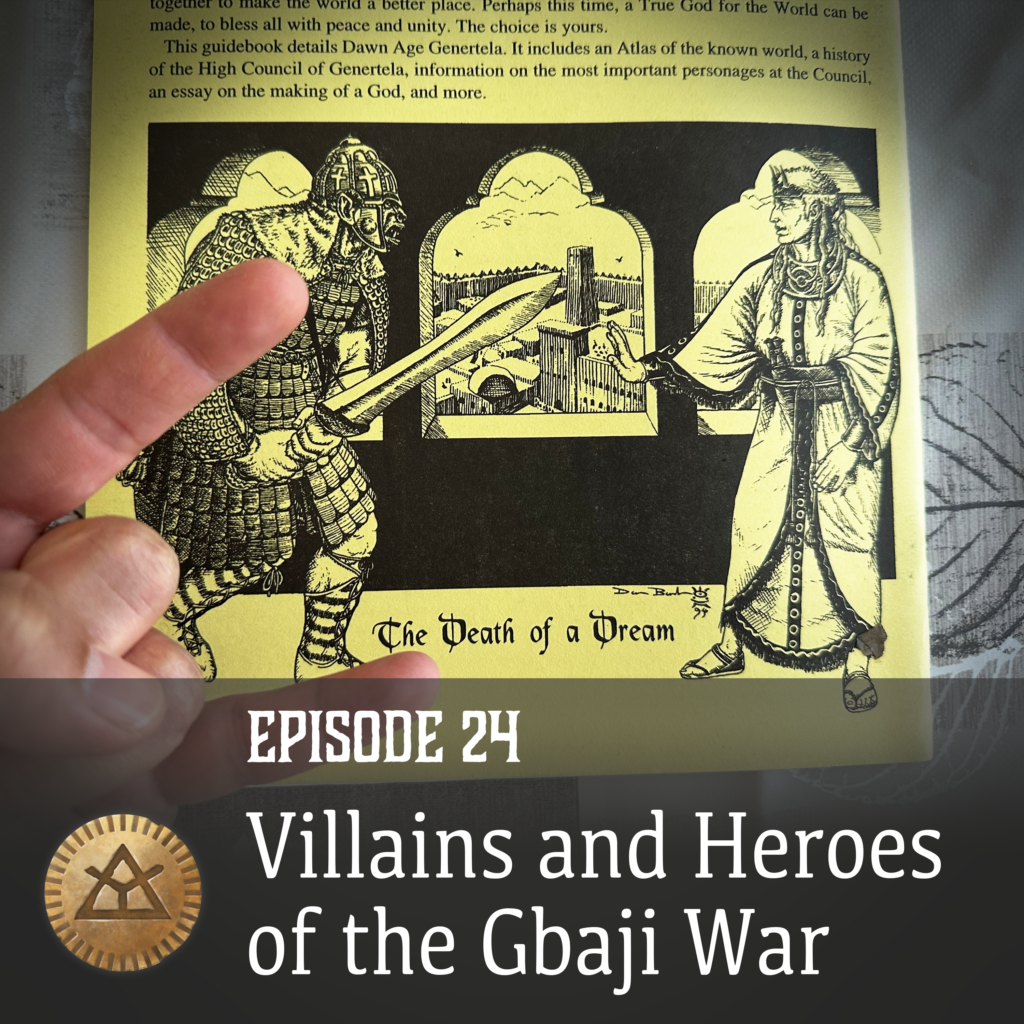
We start this episode with a minor existential crisis on Ludo’s identity, followed by Ludo being protective of our usual guests by volunteering to take the brunt of Jörg’s incoming obscurantism and pedantry. Ludo accuses rather than praises Jörg of being a bright guy…
Main Topic
The Second Council and its God Project
Jörg wants to go to the beginning of that God Project, which was in his opinion the discovery of the Pseudocosmic Egg in the ruins of Dorastor. He mentions the Dawn Age appendix in the Guide, p.712 if you want to take a deeper read into this. (If you own the old RQ3 Dorastor Book, it has this text, too.)
Ludo asks whether the Pseudocosmic egg, that rare artifact which was instrumental in creating the perfect god, was just lying around in those ruins, and Jörg name-drops the Feldichi builders of those ruins, suggesting that the artifact would have been sitting in a Feldichi laboratory.
The ruins were first discovered by the early settlers, in the 120ies. Ludo paints this time (prior to hostile contact with the Horse Warlords in Dara Happa) as a time of peace and plenty.
We talk about the nature of the Pseudocosmic Egg, an artifact which Jörg describes as something that spoke to its investigators, awakening creative urges that ultimately led to the decision to breed a perfect deity.
Its origin isn’t clear, although Jörg wouldn’t be Jörg if he did not have a theory about that.
A rather weird theory, describing the Egg as an unborn child of Mostal, the World Machine, which would be a von Neumann probe in this theory – a self-replicating mechanism establishing a universe and then spawning daughter universes, more places like Glorantha. Only Mostal was damaged by the birth of Umath, and the hatching of the egg (in Jörg’s theory one of eight) was interrupted.
This gives the entire Dorastor civilization (both the Feldichi and the Second Council) a certain science-fantasy vibe, which is fine with Jörg.
Anyway, the people investigating the egg start the God Project.
Ludo expounds on their possible motivations: having the gods around again. (An effect which is called “Proximate Holy Realm” by Jeff Richard, describing the vicinity of deities in Belintar’s City of Wonders, but which also seems to have been the goal of the EWF Third Council.)
People of the God Project
Jörg briefly introduces Lokamayadon as the new Orlanthi member of the Second Council, a Pelorian, non-Heortling Orlanthi, and his personal feud against the family of the Vanak Spear heroes in the Berennethtelli tribe (who were Heortlings), foreshadowing Harmast Barefoot who was one of their descendants.
Being forced back onto the God Project, Jörg drops another name of the participants, Holy Estorex, a Dara Happan mystic who becomes one of the chief contributors to the new deity.
Ludo mishears the name as Asterix, the cartoon hero by Goscinni and Uderzo whose adventures in and from Roman occupied Gaul are a great inspiration for the Sartarites despite being very non-Sartarite.
Leaving that aside, we talk about what the Dara Happans want from this.
For context: up to 221, since before the Dawn, the Dara Happans and other Pelorian lowlanders were ruled by horse warlords who immigrated from the Arcos Valley and established a semblance of order in the Gray Age while remaining quite barbaric themselves. These horse-warlords slaughtered any Lightbringer Missionaries entering their territory, which earned them the enmity of the Council in Dorastor, and led to its first war, culminating in the Battle of Argentium Thri’ile in 221 (a name wisely – or cowardly – not pronounced by Jörg).
Jörg talks about the effect of having Holy Estorex on the God Project, which led to new advances, and a grwoing unease of the trolls, the Heortlings and the Dragonewts, all of whom ultimately break off from the project and their participation in the Second Council, which is called the Broken Council afterwards.
Ludo describes the Dara Happan representative as the Yoko Ono of the Second Council.
(A pop culture reference as old as the older part of our audience: this is about the break-up of the Beatles, one of the most infliential bands of the late sixties and early seventies of the last century. As if “pop” in pop culture stands for “dad” or “granddad”…)
We talk about how this representation of all elements is an ongoing theme, like with Belintar’s Holy Country, and a reflection of the universe. Which gets Jörg to drop in the Young Elementals, source of the non-moon elemental magic of the Seven Mothers Cult, who were the spawn of the Pseudocosmic Egg alongside Osentalka.
Enter the Antagonists Nysalor and Arkat
Fast-forward to the Sunstop, with Jörg listing other culprits like the Kralori emperor meditating, Western wizards fighting shamans in Fronela, a new bloom in the Yellow Elf forests in Pamaltela.
Ludo observes that these pivotal moments in Gloranthan myth or history always have multiple causes and participants.
Jörg adds that he is pretty sure Zzabur had something to do with the cause of the Sunstop, too.
Ludo asks whether the Sunstop was a bad thing, and Jörg forwards the Dara Happan notion that this would be the ideal state of the world, re-creating the ideal of Godtime. The trolls on the other hand might think this is the worst idea possible – at least those who were condemned to a life on the Surface World.
Jörg tries to convey that while (normal) Time stopped, lives went on. Hence “the Sunstop lasted for an unknowable amount of time” doesn’t mean that everybody was frozen in their movements (as that would mean they wouldn’t even notice the Sunstop).
Necessarily, Jörg mentions the birth of Arkat in the distant forests of Brithos, probably as the result of a tryst with a deity (these things happen in the Malkioni west all the time in that age), a deity who leaves his mortal offspring the Unbreakable Sword.
Looking back at Dorastor, Ludo asks whether Nysalor was born with a cool magical item like his counterpart, or whether Arkat gets preferential treatment by the GM. Jörg points out that Nysalor is born with a partially restored magical city to his name, while Arkat starts out in the wilderness.
Jörg clarifies that he meant the magical buildings left behind by the Feldichi and brought into a semblance of function by the Second Council. With the possibility that Osentalka’s birth awakens the ruins more than before.
Ludo asks whether the two antagonists were born as infants. Jörg opines that Arkat was indeed born the biological way as a baby, whereas Nysalor probably came into the world as a fully grown adolescent, a shape he retained trhoughout the rest of his life.
Coming to the end of the Sunstop, Ludo asks how this ended. Jörg first gives the observations that were passed on through the generations: dark strands forming around the sun, dragging it back onto its Sunpath procession. Some people call that the Web of Arachne Solara, and Ludo imagines a “pissed-off” Arachne Solara. Jörg suggests that the Sun Spider (Arachne Solara) and her son Time pull the sun back onto its cycle,
The perfect god Osentalka (who could only exist under the perfect conditions of the Sunstop) becomes revered as Nysalor, the Bright Lord.
Ludo asks whether this demand for perfection is part of an in-world sage’s agenda, or whether this is an objective observation. Jörg evades the question, re-stating that there was Osentalka who was perfect while Time had stopped, but when it re-started again, the deity now named Nysalor had imperfections.
Ludo tries to play that down as excuses. Jörg argues that Nysalor doesn’t do or need excuses, since he is illuminated. We discuss who might have apologized, but other than some humans on the council (illuminated by the time they could be interviewed) we don’t find who might have apologized. Certainly not the Mostali who were involved.
Ludo summarizes what we said about the Bright Empire in our last episode – a Solar-themed empire that took over vast chunks of Central and even Western Genertela.
Heroes of the Bright Empire
Jörg brings up the Battle of Night and Day, where the friends and foes of Nysalor met three years after the Sunstop. While the battle is described in quite a lot of detail in the Stafford Library offering History of the Heortling People (from the perspective of Lokamayadon), Jörg attempts to give an elevator pitch of those details.
Ludo asks how the battle went. It started with conventional warfare (other than Lokamayadon riding his flying ram while the King of the Heortlings is riding a cloud, which Ludo agrees is fairly conventional for Gloranthan warfare).
The Dara Happan forces facing the trolls are faring badly, and the Dara Happan general asks his Vanchite (hill barbarian aka Orlanthi) charioteer whether he had any hidden trump card. The charioteer replies, “Try my god, Daysenerus, the planet Lightfore.”
Ludo asks whether we are talking about Yelmalio, which is of course another name for this sort of divine presence.
Ludo also wonders whether the charioteer god should be Lokarnos, but Jörg insists that Lokarnos is the wagon(eer) god rather than the chariot(eer) god. What’s the difference? “You wouldn’t use a Lamborghini to move furniture, would you?”
The general does, calling the deity into himself, whereupon the deity itself manifests on the battlefield with a divine presence above and beyond what was agreed on in the Great Compromise. (Note that it was the humans summoning the deity this way who broke the compromise, not the deity out of its own volition – up to that point.)
Ludo sensibly asks how this is different from casting awesome amounts of Rune Magic “as the deity”.
Jörg replies that there is a vast difference in scale between spending a whole lot of rune points and calling forth this much of a divine presence. In fact, this over-taxes the life force of the Dara Happan general, who dies of this experience – in RQ terms possibly because he blew all of his personal POW in the process. The deity does stick around long enough for the commander of the Nysaloran center, a certain Palangio, to synchronize with the newly arrived deity, which bears a certain resemblance to his own (Lightfore?) deity from Rinliddi.
The trolls don’t take this standing still, they huddle together forming a great black thing, the Black Eater.
There is a big Lightfore deity on one side and the huge Darkness monster, the Black Eater, on the other side.
Jörg claims that this is well beyond conventional Gloranthan warfare, while Ludo tries to blame this on “heroquesting powers and what not”.
So we get this towering figure of a bright spearman facing the trolls, who shrink back from the brightness.
Jörg claims that what happens here is more apocalyptic, as hundreds of trolls dissolve into the Black Eater whose great maw proceeds to eat up the Dara Happans, hindered by Daysenerus.
And that’s when Nysalor, thar androgynous youth of a god, steps onto the battlefield, and right into the maw of the Black Eater.
Ludo: “And he dies, end of the story.” “All of his friends fear that is the case.”
Instead, the black blob starts convulsing and shrieking, falling apart into thousands of trolls, all of whom suffered terrible wounds to their wombs (if they had them, or comparable internal damage if they did not). This wounding affects all trolls, up to Korasting, Mother of Many, the fecund daughter of Kyger Litor and second most important ancestral deities of the trolls.
Ludo points to the RuneQuest Bestiary as the currently best available source on the Trollkin Curse.
Ludo asks whether this is where the troll expression “don’t put all your trolls into the same Black Eater” comes from, an expression Jörg had not heard before.
That’s also how the trolls gave Nysalor the name “Womb-Biter”, or D’Wargon.
All trolls are injured, and instead of getting normal dark troll births, which also are diminished compared to the original Mistress Race, they get these runts.
Ludo goes on a tangent fabulating about a great ball of all the trollkin in the hero wars, getting even worse offspring, and observes that the (dark) trolls keep getting worse and worse reproductive deals.
So Nysalor wins the Battle of Night and Day – a resounding victory. On the Storm flank, the king of the Heortlings falls to Lokamayadon, Palangio mops up the field with his awesome Daysenerus powers, and the dragonewts were supposed to suffer from a similar curse, but a dragon intercedes and negates it. The Heortlings are conquered by the forces of Palangio in the afteermath of the battle.
Ludo asks whether this is limited to the Pelorian Heortlings, but no, all the Heortlings all the way to Kethaela are subject to Palangio’s overlordship. He conquers Esrolia, too, but the region nowadays known as Heortland in the Holy Country remains unconquered – it is a forested, thinly settled land at this time, inhabited by the followers of Hendrik the Free.
Ludo asks the usual question:Why do we care about all that shit that happened in a distant past?
Jörg mentions that this resulted in the founding of the Sun Dome Temple at Vanntar by Palangio, as a means to control the conquered Orlanthi.
Ludo complains that that is all good and fine, but why would it be relevant in the Gloranthan now of 1625. While it is cool and adds a bit of flavor, since then a lot of other things have happened which influenced history as much or more.
Jörg evades by talking about Lokamayadon’s endeavors after the Battle of Night and Day. Lokamayadon’s heroquesting (what about Harmast or Arkat starting the business of Orlanthi exploratory heroquesting in the Dawn Age?) leads him to TarUmath, the High Storm, the Storm beyond the Storm.
(Actually, Tarumath started out as the Harmony Storm, already present at the Battle of Night and Day, where Lokamayadon’s Orlanthi from Lakrene are interchangeably called Tarumathings. History of the Heortling People, p.18 onwards for the account of the Battle of Night and Day. This also tells how Lokamayadon calling upon his god steals the breath of all weaker Orlanthi, and how only Hendrik the Larnsti could keep a free breath in his cloak.)
Lokamayadon becomes the super-Orlanthi, taking the Breath of all weaker Orlanthi – pretty much like what happened to the worshipers of Orlanth during the Windstop.
Ludo asks why Lokamayadon (who is an Orlanthi) is doing that (stealing everyone’s breath, and magic). Jörg replies that Lokamayadon is becoming Orlanth, or like Orlanth. Worship of the High Storm (which Jörg assumes goes through the person of Lokamayadon) is still possible, which means that his followers are doing fine with magic. This is extremely high stakes.
Jörg talks about Lokamayadon’s downfall, which is tied to his feud with the Berennethtelli clan which ultimately produced Harmast Barefoot, a youth who managed to survive the initiation rites and contact Orlanth despite Lokamayadon holding on to the High Storm.
Harmast Barefoot is of course the Orlanthi who first re-enacted the Full Lightbrigners’ Quest (and even did it twice).
Ludo tells how Harmast returns Arkat from Hell after the hero had been killed by Palangio (in 418, in front of Kartolin Castle, on the Dorastan border of Ralios).
Harmast’s family was hiding out on the edge of Prax, outside of the Bright Empire proper. When Ludo says that there is probably no trace of this in the modern era, Jörg counters that the site of the Battle of the Verge is known as Barbarian Town in the Third Age (again a hide-out against unjust persecution).
What next? After the Battle of Night and Day, Palangio goes on conquering Maniria, on behalf of the Bright Empire, he visits the lost city of Erenplose hiding in a bubble under water, gets a hint to follow a magical item up to a mountain where the a piece of the sky fell down in the Gods War (Selon Mount) and finds the Iron Vrok there, according to Jörg a huge magical beast made of iron which Palangio then can ride – pretty much like the Dykene Hawk Riders in Balazar.
Ludo is slightly disappointed as he expected a smaller sidekick that would be able to land on Palangio’s shoulders.
Ludo asks whether the bird is a Mostali construct, but Jörg pleads for a magical creature in its own right.
Meanwhile in Ralios
Bright Empire visionaries have been active in Ralios, entering across Kartolin Pass. The Dangan Confederacy in the Tanier Valley (pretty much exactly where the modern Kingdom of Seshnela is located) accepts the teachings of Holy Estorex, the Dara Happan mystic mentioned above. This worthy is converting the local Enerali Orlanthi to the cause of the Bright Empire.
Ludo asks whether this is where Arkat will be fighting (of course it is). Jörg states that the Ralian Orlanthi are divided, many join the Bright Empire, but some groups resist it – in typical Orlanthi manner.
Ludo asks whether this is when someone has the bright idea to spread the uncurable disease that only the priests of Nysalor can heal. Ludo is sort of disappointed about how sneaky the Bright Empire operates. Jörg quotes Nysalor: “On the Edge of Light there is always Darkness.”
Bur this method of spreading the cult is successful, and a large number of people in Seshnela and even Arolanit follow the cult that brings the cure, tp the point where Nysalor’s mystical thinking is taking over the land of rationality, Arolanit.
Arolanit used to be the most orthodox and pious of the Brithini colonies, and Zzabur and his Talar rulers won’t have that.
Ludo observes that this is in the extreme west of the continent of Genertela, and that this is when the Brithini army is brought to the continent, including Arkat as a young Horali soldier.
This is where the Brithini army is confronted with the dark minions of the god Kraljid, a demonic entity which had history already in the wars of the Serpent Kings of Seshnela. This entity is controlled by the Bright Empire, a state of affairs that is ended by Arkat when he puts that god to rest (if not for good, then at least for the rest of the Dawn Age). This happened in a little town in westernmost Tanisor (the modern province or rather heartland of the Third Age Kingdom of Seshnela)-.a town named Kaniwal. Jörg jokes that it could be pronounced like cannibal, too, which is possibly one of the cult practices of Kraljid.
Jörg refers to a fragment of Arkat’s Saga that Greg Stafford read at Convulsion 1994, a rather nightmaresh stand against dark enemies strikung out of the shadows, which has been compared to a Vietnam war report.
This Arkat Saga fragment is occasionally offered for quite high sums on Ebay, alongside other fragments of Greg Stafford’s early western stories.
Back to the topic: The Nysalor Cult has a priest overseeing things in Seshnela by the name of Gaalth – with two “a”s, according to Ludo a sure sign that this is a bad guy.Jürg offers that he is bound to have a goatee and an evil laugh.
But Gaalth is rather charismatic, and spreads Illumination among those he healed, and once illuminated, the so afflicted and healed understand that the ordeal was a learning experience.
Ludo asks whether this was the first time the Bright Empire is actively teaching illumination, but to Jörg’s knowledge that happened all over the Empire.
Jörg points out that the Dara Happans pursued Illumination as long as they have memories, even the horse warlords did so to some extent. They pursue the enhanced state Yelm obtained when he recognized his Other (or Shadow).
We jest about what happens if you stare into the sun too long,.Jörg adds that the worshipers of Dayzatar look beyond the sun to a higher truth, and what Lokamayadon did with the High Storm was similar.
We briefly return to Lokamayadon when Ludo asks whether he attempted to establish an illuminated Orlanthi culture, Ludo fabulates that we could have an illuminated Orlanthi culture, peaceful and urbanized. Jörg points out that exactly this happened in the next age, although with a different (draconic) form of enlightenment.
Once again. Ludo wants to pull these things into the now, suggesting Lokamayadon as a role model for Illuminated Orlanthi. Jörg insists that mainstream Orlanthi reject what Lokamayadon did, but there is always room for dissidents.
Ludo asks whether that disease might still be around, but it seems to have disappeared without the Nysalor Cult to spread it.
Ludo asks for more information on this disease, and Jörg points to the Seshnelan Kings List on the Well of Daliath.
When asked what cool Third Age adventuring can result from all this information, Jörg points at Lunars searching for such fragments from the Bright Empire. There may also be parts in Ralios where the local Orlanthi think that Nysalor was a good thing, and Arkat a terrible mistake.
Whether Safelstran basements with secret meetings support Powerpoint presentations for indoctrination can be decided by the GM.
The Bright Empire is spreading out, but it is starting to get some opposition (it could not overcome). In Seshnela, it is quite successful, but the ruling dynasty prefers to rule afflicted by the disease rather than succumb to the whisperings of Gaalth and Gbaji (although some of their cousins did).
People fighting on Arkat’s side of the conflict
Jörg describes how the conflict in Seshnela was really a civil war, with the Nysalor cult opposed by the rulers, and how a decisive battle between the friends of Gaalth on one side and Arkat and the king on the other is almost lost for Arkat, when a shiny young hero with a flaming sword and fresh horse troops falls into the rear of the Nysalorans.
Faced with defeat, the opponents show the ugly side of illumination when they start to sprout tentacles and other such abominations, causing grievous losses even in their defeat. The old dynasty is ended on that battlefield, a new one emerges (and gets afflicted by the disease, too).
Maybe not the first time – there was the fight against the Vampire King of Tanisor, too.
Ludo talks about how cool the title “Vampire King of Tanisor” is, and asks whether we have information how that came about, and how vampires join the forces of light which usually are their nemesis.
Jörg brings up Tanisoran history, with Sehsnegi invasions unleashing vile Vadeli magics.
The Vadeli are the anti-Brithini, or as Ludo puts it, even more like Brithini. Rather than obeying the Brithini rules, the Vadeli carefully transgress these in specific wasy, leading to a society using vile magics and slavery.
Jörg points to Nick Brooke’s illuminated History of Malkionism for better information on the Vadeli.
Ludo complains that the Vadeli way is convoluted, going at lengths to make a mockery of the Brithini rules, only to achieve the same result – immortality.
Jörg suspects that the Vampire Kings used magics that were left behind or perhaps recently imported by the Vadeli magics that poisoned the land before. Ludo cuts short Jörg-s attempts to take a closer look at the Vadeli.
Apparently the vampires can tolerate the Brightness of Nysalor without getting burned
.
Jörg points out that the Tanisoran nobility were people afraid of dying, so they took an alternative route out, achieving escape from death. They also formed a vampire legion – a unit found in the Lunar Empire.
Asked whether there is anything left of these struggles, Jorg names the Vampire King Gracmacaglan, in his royal city of Taniwal, nowadays known as the Red Ruins because the fallout from that battle still glows stronger than Cernobyl.
The Brithini officer was there to collect the helmet (which doubled as the crouwn) of the Vampire King when Arkat beheaded him, performing a service only a Talar caste member could in the Brithini army. That worthy way Talar Malaskan Philippe, who is still alivc, and has been the ruling Talar of Arolanit for the last five centuries. Jörg dispels Ludo’’s notion that he might be a vampire, pointing out his Brithini nature.
Ludo asks whether there are still nests of vampires in the region, and Jörg claims that vampires never go away for good. The Vampire Legion now serves in the Lunar Empire. (Jörg thinks that some might be able to boast that they were decapitated by Arkat once or twice.)
Jörg also points to the Kingdom of Ramalia in Maniria where the rulers might use magics similar to those of the Vampire Kings.
Ludo gets enthusiastic about ancient vampires acting as strategicians and grey eminences, not limited to the Vampire Legion. Jörg counters that he wouldn’t be surprised if some of them were teaching at the Lunar College of Magic, although only the very advanced courses.
Ludo imagines a Harry Potter style campaign in the Lunar College of Magic, and asks for someone to write that up for the Jonstown Compendium (or official releases).
Jörg puts a mild damper (and a spoiler for Sun County) that some ancient vampires may have lost their memories in the centuries since.
We briefly digress about that unhealable wound that Arkat contracted – apparently a spear wound to the foot rather than a Rand al-Thor stab into the abdomen – during his initiation to the Cult of Hhumakt.
The Ralian Campaign
Early in the Ralian campaign, Holy Estorex opposes Arkat’s advance, but gets beaten up and escapes limping, barely alive.
In 418, Arkat approaches Kartolin Castle and asks for a challenger for single combat. Palangio responds, slays Arkat, wipes the floor with his companions and his army. The next four years, the Bright Empire retakes what it lost in Ralios, while Arkat lingers in Hell.
The Seshnegi Kings believe that they are done with the Gbaji Wars, and the Bright Empire thinks they are done with Arkat. Harmast Barefoot’s Lightbringers’ Quest changes all that.
Harmast brings Arkat to Hrelar Amali, thie most holy place in Ralios, where the tree of Flamal used to stand in Godtime before Zorak Zoran hewed it down, in the Tanier Valley, nowadays only a ruin.
There is a Ralian Humakti whose name is remembered – Makla Man, a cult hero of Humakt, who aided Arkat against the Vampire King and who invited him to his father’s cult after he had become an Orlanthi. He has special magics against resurrection. We discuss how escaping the Underworld in other ways than Chalana Arroy resurrection doesn’t trigger the Humakti.
We discuss the Telmori gift by Nysalor (later turned into a curse by Talor). We meniton the Telmori temple city in northern Vesmonstran, destroyed by Arkat when he drove the gifted Telmori north of the Nidan range (making them another problem for Talor to solve)
Even with the Telmori out of the way, Arkat was thwarted again and again at Kartolin Castle, so he left a siege force there and turned south into Slontos, rule by Palangio at the time.
Jörg briefly digresses to Palangio having established the dragonewt colony at Ryzel in Maniria.
Ludo asks about Palangio’s relationship with the dragonewts. Jörg assumes that the dragonewts were obliged to give Palangio some form of support, and that the Ryzel colony was their way of dealing with that oligation.
We briefly mention the siege of Kaxtorplose, and a naval operation on board of Waertagi ships bringing Arkat’s army into the east.
Kaxtorplose still has ruins and temples remembering the Gbaji Wars.
We briefly talk about the Hendriki, the last free Heortlings against the Bright Empire.
The theater of war enters Dragon Pass, with the fighting getting more and more bitter, Chaos coming into the fight more often, and troll forces becoming more important.
Jörg brings up Gerlant Flamesword again, now a Seshnegi noble who married the sister of the new king Hupala, and who lost several sons fighting alnogside Arkat even though he condemned his conversions to Orlanth and Humakt, and ultimately to Kyger Litor and Zorak Zoran.
Jörg muses about Arkat’s nameless companions who joined him in beciming trolls, expecting at least one Brithini and one Man-of-All, plus various Orlanthi both from Ralios and from the Dragon Pass region among them.
The troll politics around Arkat’s rebirth are mentioned, and Arkat’s initial fecundity siring Mistress Race daughters.
Jörg talks about how the Heortlings get to conquer a largely undefended Dara Happa while their best forcces try to stem Arkat’s dark tide towatrds Dorastor. The Heortling take great riches (which might have been plundered from their lands before) and establish a tribute after having deposed the former emperor.
We talk about Arkat’s trail of destruction towatds Dorastor, still haunted and forbidding.
In Dorator, Arkat faces off with Ralzakark and kills him. When asked who Ralzakark was during the Bright Empire, Jörg speculates that he was a civilized, unicord-headed guy who operated Feldichi technology amd helped manage the empire, a good conversationalist, possibly a good dancer who had the misfortune to have to fight Arkat, the most monstrous troll you can imagine. Ralzakark was killed and dismembered, and to bring him back some rite or quest of resurrection would have been required. Something nobody in their right mind would do, which is why some God Learners did it.
We briefly discuss the Lunar depiction of the conflict from the Appendix in the Guide.
The Fronelan Side Story
A very quick run through Talor the Laughing Warrior’s achievements, re-founding Loskalm, overcoming Varganthar the Unconquerable Knight, but dying and ending up in Hell.
Harmast goes onto another Lightbringers’ Quest, returns with another western warrior, Ludo speculates there may have been even more people brought back from Hell by Harmast, but there is a list of his quests somewhere.
We touch upon the Hrestoli concept of Joy of the Heart (again a topic for the History of Malkionism mentined above), It is not illuminaiton, but hard to tell apart.
Harmast and Talor unite the Loskalmi Malkinio and the Orlanthi of the region, fight the Telmori in Ralios and enter Dorastor in time to witness Arkat’s assault on the Tower of Dreams and him cirsomg the amcoemt technology of the Feldichi. Talor takes inspiration and casts his own curse on the (few surviving) Telmori with the gift.
We discuss whether the Telmori shape-shifting could be done through the wyter with multi-casting etc, and the pitfalls of using the wyter’s permanent POW to fuel these spells.
Jörg doubts thtt Telmori packs can support a regular wyter.
Arkat’s Command
The Shadow Tribute, expanded to the Dagori Inkart trolls by Arkat’s command, to compensate for missed booty from the Dara Happans, whose tribute initially paid for the troll portion.
Jörg points out the irony that subsequently, the Heortling lands become the urbanized, (and ultimately enlightened) civilization Lokamayadon would have wanted, the Kingdom of Orlanthland and later the EWF.
And now Jörg asks how any of this is relevant to your game set in the now of RuenQuest: Roleplaying in Glorantha.
Ludo talks about three levels of artefacts etc. to unearth – recent history, old history, and the Godtime.
There are two approaches – either you can use all this history, sprinkle in odd facts (like the connection fo the magical sword Ironbreaker with Arkat), or you can just improvise ignoring established history, expanding it with your own.
Ludo argues you can just “make up some shit”.
Jörg talks about players researching these layers, pulling together artefiacts etc. There is also the cyclical nature of Glroanthan history, and it would be weird not to re-use stuff that happened to Arkat which doesn’t happen to Argrath.
Jörg talks about similarities between Morag, the horned brother of Biturian’s sister Norayeep, and how this character might emerge as a companion of Arkat, a horned hero, either overtowering physique or weird magic. Listen to the Bitouran Varosh series of podcasts if you want to know more about this.
Ludo asks whether Argrath is expected to multiclass like Arkat did, and Jörg doesn’t think so.
We talk about how player characters can become necessary elements of Argrath’s heroquesting. Basically the stuff Biturian is offered again and again, and rejects. Ludo tells a similar story about his current players refusing to meet Argrath (during the Lunar occupaiton of Pavis).. Jörg suggests offers that cannot be refused (when offered in a raspy voice).
To summarize:
Arkat’s foes were people, too.
Arkat’s friends had some very strange stories.
Ludo accuses Jörg of pulling a historian’s agenda, but Jörg counters with the developments in Ralios where Arkat is bound to return. Five Arkats (plus a few more false ones).
Jörg makes a case for Arkati bringing knowledge to heroquesting where Harmast brought emoition and passion, and for the power of invoking the appropriate mythical identifications. Know your history, know your enemies, outsmart them.
In conclusion, we address the parallel with the Exploring Glorantha series covering the same time-frame.
Notice that this is the text version only. Return for page references and links soonish.
Credits
The intro music is “The Warbird” by Try-Tachion. Other music includes “Cinder and Smoke” and “Skyspeak“, along with audio from the FreeSound library.
Episode 23: Arkat the Minmaxer
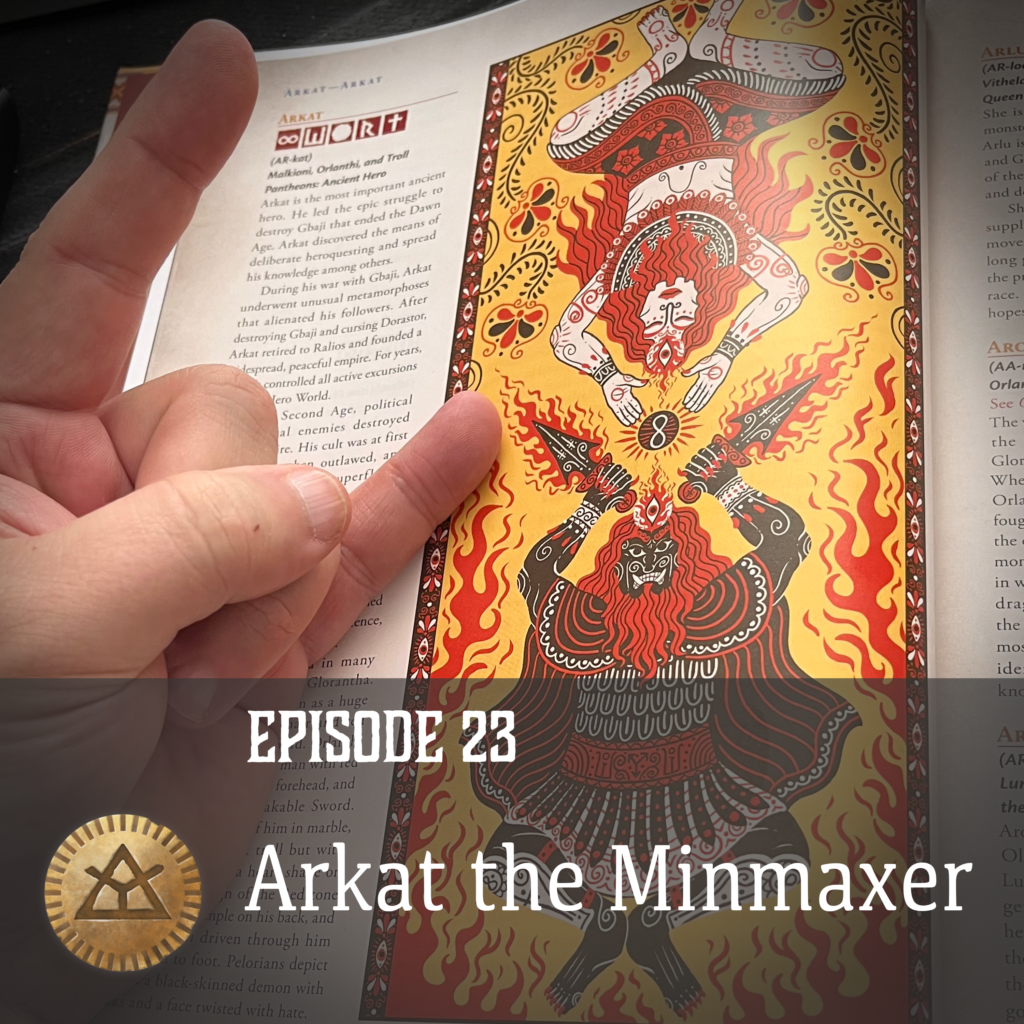
Joerg and Ludo welcome Bud from Bud’s RPG Review, where we see his hands in a typical unboxing set-up, not just doing flip-throughs but also a whole series of explanation videos:
- Bud’s RPG Review YouTube channel
- RuneQuest reviews [1]
- Bud explains… RuneQuest (which, at this time, includes the Lightbringers, the Uz, Illumination, and the Seven Mothers)
[1] It seems that since the episode was recorded, Bud fixed the duplicated RuneQuest video playlist… or maybe Ludo imagined it.
Another place to find Bud is the “Bud and Griff’s Gaming Creepshow” podcast, a “podcast about spooky gaming” (in Bud’s words):
Last but not least, Bud is one of the authors of the Miskatonic Repository bestselling book Viral: A Modern Call of Cthulhu Scenario, with Alex Guillotte. For those of you less involved with Call of Cthulhu, the Miskatonic Repository is the sister community content program to the Jonstown Compendium.
Bud states that his “Bud Explains” videos (which Ludo has faithfully linked from his newsletter) are really for beginners, since delving into the lore of Glorantha can be hard work. He promises more in the future.
Finally you can find Bud on Twitter, if that thing is still going by the time you read this.
Main Topic
Going to our main topic, Ludo says that you will find mention of that guy Arkat in many places, with plenty of lore to dig into. So who is this guy, and why is he cool?
What Does Your RuneQuest Character Knows About Arkat
Bud points out that many of the things Arkat did are kind of hidden.
Arkat is possibly most renowned for being the person who mastered heroquesting and for being the slayer of a god, whom he called Gbaji the Deceiver, but who was known to his worshippers as Nysalor.
Bud remains neutral on whether the deity slain by Arkat was the Deceiver or not.
Ludo gives the context that all of these great deeds happened about 1200 years ago (if you are playing in the normal 1625 time frame). To give a comparison from our world’s history, Ludo suggests a weird Arthurian hero, Jörg interjects that Charlemagne fits the time frame even better. Ludo jokes that Charlemagne was evil because he introduced the school system, but Jörg points out that his evil included the genocide of the Saxons, and that that may be why the peace price of the European Union is named after him.
Getting back on topic, Ludo points out that the Gbaji Wars ended with the blighting and destruction of Dorastor, formerly a beautiful and fertile land.
Bud calls Arkat’s action the rites of cleansing, even though they poisoned the land.
(Arkat did curse the land of Dorastor, and sort of bound the Chaos that had been loosed in the final phase of the Gbaji Wars to this ruined place. The land remained dormant for quite a while until both God Learners and EWF explorers took an interest, which seems to have awakened the land.)
Ludo then talks about Arkat’s star, which appeared when Arkat apotheosized early in the Second Age. Jörg claims that the star vanished since, because the God Learners hid the way.
(Doing some additional research after the podcast, the Guide p.646 claims that Arkat is a prominent constellation in the area of the sky called the Celestial Fields, between the Celestial Forest and the Celestial River.)
(The star map on p. 645 only shows a differently named constellation: the Doves, which is how the Dara Happans name the constellation. They were followers of Nysalor and have no love at all for the slayer of their god, whom they name Gbaji.)
(The list of constellations talks about the constellation of Arkat, stating that only one star was visible there at the Dawn, but that Arkat’s apotheosis caused three bright companions and a number of less bright ones nearby that some claim for the hero as well.)
So Jörg was wrong by remembering correctly that there is no constellation named Arkat on the star map.
Bud then points out that Arkat also is a troll god.
Ludo then sums it up: Arkat was several things to several people, he was some sort of either hero or antihero or evil war general. “He killed a whole bunch of people and did many awesome things.”
The Life of Arkat
Bud starts by telling us that Arkat was born in the elf forests of Brithos, interestingly during the Sunstop… or the Sunspot? Linguistic shenanigans ensue, and come to haunt us.
The Sunstop occurred in the year 375 S.T. (“Solar Time”, after the Dawn) when the Second Council (cooperating with the Dara Happan Empire) created Osentalka, the (presumed) Perfect God, in their capital in Dorastor.
(Several other contributors to the Sunstop include Malkioni sorcerers in Fronela casting a great ritual against the Hsunchen shamans, the Kralori Emperor meditating on a potent symbol – the Dragon’s Eye, and a hundred thousand Aldryami in Pamaltela calling on a good spirit to combat a virulent rot affecting them and their forests. See the Guide to Glorantha p.128 for the wider view. A good introductory read is the history from Cults of Terror, available on the Well of Daliath and reprinted in the Guide.)
Bud goes into detail on Arkat’s birth on Brithos, an island in the western Neliomi Sea that disappeared during the Closing (some say that its disappearance caused the Closing).
Arkat’s birth may have been the creation of the opposite to the newborn god in Dorastor, a balancing force brought in by the universe. The new god was born outside of the Compromise, making the birth of Arkat the opposition of the universe to this insult to Time.
Bud compares this to Argrath being the nemesis of the Red Goddess.
Arkat was fostered by the Aldryami of Brithos, and supposedly illuminated by them at a young age, which Bud thinks is another great irony. About 24 years later he was part of the 4th Brithos Army of Law,
Eventually he became known as the son of Humakt, Arkat Humaktsson.
Progressing through local wars (with the Vampire Kings of Tanisor still as Brithini soldier, then alongside the Seshnegi Men-of-All against the Nieby priests led by Gaalth, then joining the Orlanthi of the upper Tanier River in their fight against Gbaji‘s shock troops, the Telmori who had received Nysalor’s blessing to turn into magical wolves on Wilddays) Arkat became aware of the Riddlers of Nysalor.
In Seshnela, the priests of Nysalor apparently spread poison, or an unhealable disease, and offered healing and protection from it, thereby getting people to worship Nysalor.
Arkat saw and showed that Nysalor had a duality, that he wasn’t just a benevolent god who illuminated people and taught them a different way of thinking, he exposed the deity behind these priests as the Chaos God Gbaji. Arkat made it his life quest to slay Gbaji and free the world from the great Deceiver.
(Much of Arkat’s earliest activities are mentioned in the list of the Kings of Seshnela on the Well of Daliath to greater detail than in the Guide to Glorantha, where p.410 gives details about Arkat’s deeds in Seshnela.)
Skipping far ahead, eventually Arkat managed to invade Dorastor, the homeland of Nysalor, and slew the enemy god atop the Tower of Miracles in the City of Dreams. He supposedly dismembered Nysalor and had its parts scattered and buried around Glorantha.
However, slaying a god doesn’t come easy, and Arkat looked into heroquesting at various points. He brought the Unbreakable Sword with him, the original Death, to enable him to slay a god.
Supposedly when he was on one of his heroquests, he encountered himself as a troll and was wounded by himself, an unhealable wound that he carried with him for his entire life that caused him discomfort.
Also, Arkat is known to have mapped out the Gods’ Realm to enable passage for him, which explains how he ended up so ridiculously powerful.
Before he actually went to slay Nysalor, he underwent the Rite of Rebirth and became one of the Uzuz (the Mistress Troll Race).
There are various pieces of art depicting Arkat as an armoured troll fighting Nysalor.
Once Arkat had killed Nysalor, he created the Autarchy, a.k.a. Stygian Empire, in Ralios and modern Seshnela. Ralios lies west of Dragon Pass, south of Dorastor.
The capital of the Autarchy was Arkhome (on the Nidan river in Rindland, a portion of the ancient Ralian territory of Fornoar now belonging to the modern Kingdom of Seshnela. See the political map on p.417 in the Guide to Gloranha. It was the place where Harmast emerged with Arkat on his first Lightbringer’s Quest.)
Arkat eventually pulled a Thanos move and retired, his work done.
The destruction of Nysalor ended the Dawn Age, making Arkat sort of responsible for starting the cycle of Ages in Glorantha’s History.
Ludo picks up the Thanos comparison and also brings up Colonel Kurtz from Apocalypse Now as another powerful archetype resembling Arkat.
Arkat, The Ultimate Minmaxer
Ludo recapitulates how Nysalor became the god of the Bright Empire, spreading a philosophy of participation and harmony, but on its fringes Arkat figured out that missionaries from the Empire were causing the problems that they professed to solve, resulting in Arkat vowing to destroy Nysalor’s Empire.
In order to do that, he initiated into a series of cults and religions.
(Ludo fails to mention his origins as a Child of the Forest, a bucolic existence in the forest like the happy end for Morag from Biturian’s travelogue, and his illumination experience there.)
Arkat was “initiated” into the Horali caste (his grandfather’s caste) on Brithos, the warrior caste of ancient Malkionism.
Then he moved on to the (Seshnegi-style) Hrestoli Man-of-All, mastering all of the Malkioni castes, and all the power, including sorcery,
Then he went on and became friendly with the Orlanthi, initiating into Orlanth, and then Humakt.
Then he needed anti-Chaos powers and became a troll (through the Ritual of Rebirth, initiating him to Kyger Litor) and joined Zorak Zoran for his final assault on Dorastor.
Arkat basically multiclassed like crazy, making him the ultimate mini-maxer in Ludo’s eyes.
Jörg counters that Arkat’s spiritual experiences resembled serial monogamy – whatever cult Arkat joined, he joined with all his being.
Ludo counter-argues that Arkat kept all the powers, and Bud claims that the reason for that was that Arkat was illuminated. Bud claims that this was due to the illuminates’ immunity to Spirits of Reprisal that would otherwise plague an apostate.
Jörg argues that the benefit of Illumination is rather a compartmentalization of the illuminate’s personality.
Bud continues that Arkat essentially ploughed roughshot over multiple cults, his aim being to accumulate as much power as he could to destroy Nysalor, and that Arkat was right, be cause he did it. (Which is questioned by Jorg.)
Bud feels that this is where Your Glorantha May Vary falls down slightly, when unlike the fluidity of the God Time, things go into the historical record.
What went on atop the Tower of Dreams? Nobody knows, nobody else was there. But everything else is part of the historical record, there are records of Arkat becoming a troll, the whole thing was written down by a troll who witnessed the event (and can be read in the Jonstown Compendium excerpt on trolls provided by the RQ3 Troll Gods box if you are lucky enough to own it).
Bud acknowledges historical bias, but unlike the Gods Age where you can see things from different perspectives – how many versions of the Lightbringers’ Quest are there? – but when it is viewing things from the historical record, that’s really all you got to go off.
Jörg claims that the thing about the Gbaji Wars was a clash of realities.
His personal pet theory is that whenever Arkat looked in the direction of Nysalor, he saw Gbaji, Whenever Nysalor looked in the direction of Arkat, he saw Gbaji, the chaotic Deceiver God.
What Nysalor did (or what actually his creators from the Second Council and Dara Happa did using the Pseudocosmic Egg) was to create a new reality where everything was bright and shiny and harmonious (at least once the dissenting voices of the Heortling Orlanthi and the trolls and dragonewts had been muted), and Arkat was born on the other side of this effect. Arkat brought his anti-Nysalor effect with him, and so realities clashed whenever the forces of Nysalor and of Arkat met.
Jörg draws a comparison to the Glowline (which separates a magical reality full of Lunar glow from the drab mundane reality outside) because the Glowline is a bit of a copy of this Bright Empire thing. (Jörg fails to mention the Young Elementals from the Seven Mothers write-up as his evidence.)
Bud demands to expand that a little more, since the Glowline is something everyone can see (at least on days of the Dark Moon when it makes a difference). Jörg mentions the Dan Barker illustration in the Guide p.724 which shows Arkat and Nysalor, with different skin tones and expressions but otherwise identical faces (or at least beard styles).
Arkat’s Multiple Initiations and Mastery of Heroquesting
Ludo explains how this series of cultic initiations let Arkat experience a lot of “safe” (re-enacted) cult heroquests and gave him a unique experience of arriving at the same God Time events from different quests (including the one where Zorak Zorani Arkat wounded Hrestoli or Horali Arkat).
Arkat was the first heroquester who voluntarily went off-script in his heroquesting, exploring the hero plane seeing connected paths and creating a map.
Arkat greatly innovated the art of heroquesting.
Jörg compares a heroquest to a medieval road map which only shows one linear journey where you reach intermediate spots where you could go elsewhere, leading to your initial target.
Arkat would have followed two (or more) separate heroquests to a Hero Plane location (a Godtime event) and he would have known where both paths leading there came from, and where he could continue from that station.
Ludo compares Arkat’s method to a hex crawl across the hero plane.
Bud offers a different term than off-script: Arkat got to go back-stage, also getting an insight how all of this worked.
Ludo brags about his ChaosiumCon playtest glimpse of the ever-upcoming heroquesting rules for RuneQuest. Bud (jokingly) rejects the notion that such a thing exists.
Ludo goes on to describe how those rules have techniques reminiscent of the sorcery techniques in RQG, techniques like Ranging. Arkat developed these techniques, and later the God Learners put names on them.
Ludo talks about the relationship between Arkati heroquesting and God Learner heroquesting.
Bud points out that a lot what the God Learners did was based on Arkat’s work anyway.
Ludo mentions Arkat’s very specific philosophy that all heroquesting was to be “with respect and humility”.
Apparently, Arkat set up a heroquesting police that was basically patrolling the hero plane and slapping the fingers of any transgressors.
Jörg and Bud point out that the Arkati presence more often manifests as stationary guardians.
Ludo goes on to compare the God Learner heroquesters with Mad Scientists (TM) who got whatever they wanted and destroyed many of the remaining Arkati stationary guardians, exploring the Hero Plane without any ethics.
Ludo imagines playing a Dark Empire heroquesting game where you are the guardians, something Jörg compares to the Time Police. Bud adds that these police would make sure that you don’t mess with reality too much, but that’s the problem. The God Learners effectively wiped these guardians out and made the hero plane their playground.
Jörg points out that when you enter the hero plane these days, you will still find the black guardians at all the major crossings, suggesting that the God Learners failed to eradicate them all.
Ludo approves of their presence for games set in the 1625 era,
Bud claims that the problem about the God Learners is that there isn’t all that much written about them. Bud wanted to do a video about them and was stopped by the scarcity of material.
Arkat Went to Hell
Probably several times, but very prominently involuntarily so when Palangio the Iron Vrok killed and dismembered him in Ralios around 418 S.T. Arkat was sent to a special Hell he could not use his heroic powers to escape from, which since has become a tradition to do to the big bad anti-illumination guy.
That Hell was supposed to be inaccessible, but an Orlanthi hero by the name of Harmast Barefoot managed to get him back.
Arkat had basically two lives. (The Xeotam Dialogue in the Sourcebook p.74 calls this state of being a Kaelith.)
Bud points out that Arkat having been dismembered is what he went on to do with Nysalor. Ludo asks whether that was petty, but Bud calls that the ultimate revenge.
Jörg brings up dismemberment as a proven method to get rid of a god – citing the dismemberment of Umath even before the discovery of Death as proof for the efficiency of the method.
Ludo philosophizes that a lot of people get dismembered in Glorantha, which Bud counters with the predilection of people to lose their left legs in (RuneQuest) Glorantha.
A Hero’s Retirement
Ludo points out that Arkat had fifty years of fighting, and then fifty years of peaceful retirement, during which he sets up the Autarchy (called Stygian Empire by its foes). He spends those years teaching his secrets and benevolently overseeing the lands without much interference.
Bud replies Ludo’s question about the fate of the Autarchy that it fell in the end, to the forces of the God Learners (during the reign of Annmak Peacemaker, in 740 S.T.)
Jörg points out that the Dark Empire was the premier Malkioni (and Orlanthi, and troll) realm in Genertela. It ruled over the entire Tanisor valley (the land ironically called Kingdom of Seshnela in the Third Age) and Safelster, with the capital Arkhome situated in Rindland, the home Duchy of Bailifes the Hammer who founded the new Kingdom of Seshnela.
Jörg nerdplains that Autarchy roughly translates from Greek as Self-Rule, and that that was what he allowed the local potentates to do, the Archons who were basically his disciples who kept oversight over some of those places.
The term Archon still is used for the rulers of Safelster, where a city-state might also be called an Archonate.
Fast-forwarding to the Now of RQG (i.e. 1625 ST), what is the legacy that Arkat left behind?
Bud quips that there is one less god. Or at least Nysalor required a lot of patching together by the Red Goddess, as Ludo points out. Which Bud compares to a jigsaw puzzle with too many parts.
Jörg puts forward that Gbaji was dismembered at the same time as Nysalor, who was cut into 49 parts which the Lunars collected. When the Lunars collected the parts, they ended up with more than 50, and they made sure that they weren’t using any portion of Gbaji when re-assembling Nysalor.
Bud asks whether the Lunars could differentiate between the portions of Nysalor and Gbaji, and Jörg suggests that the Lunars know about Chaos, so he gueses they could. They say so.
Ludo corroborates that when the Lunar propaganda says so, it is probably true. Right?
There are still followers of Black Arkat active on the hero planes, doing things to heroquesters, and (on the mundane plane) to people they suspect of Godlearnerism.
These Arkati can pop up and jinx your heroquests, or even your preparations for those.
Jörg manages to confuse Arkat’s Last Fortress near Kartolin Pass (crossing from Ralios into Dorastor) with Arkat’s Hold in Esrolia, the city at the end of the Building Wall.
Ludo points to The Smoking Ruins which has information and stats on some Black Arkati from that place.
Bud points out that Arkat was in his seventies when he became a troll. Bud ponders whether Arkat underwent the Ritual of Rebirth because trolls are longer-lived than humans.
Jörg counters that Arkat was born as a Brithini, a race that doesn’t age when they maintain their caste restrictions (something Arkat definitely did not do), and age slowly if they did.
Bud mentions the years of war wearing down on Arkat, and his unhealable wound from that heroquest. By normal standards, Arkat would have been an old man yet unable to fulfill his life quest (writing this feels strange the day after the coronation of King Charles III), although by Brithini standards he was still a young man (according to Jörg just about initiation age, really).
Another aspect of Arkat is that as an Illuminate, he should have known better than to pursue his revenge so relentlessly. When you’re illuminated, you understand that Chaos is not always bad.
Jorg interjects that that is why some people claim that Arkat became a Chaos monster in the end in order to overcome Nysalor. Bud asks for citations, Jörg points out that no witnesses survived. (This could be inferred from the upcoming five-fold return of Arkat in Safelster, in the boxed text on p.385 in the Guide to Glorantha.)
Bud reports that the argument has been made that Arkat never became a troll, casting doubt on the reliability of the troll witness of his Ritual of Rebirth. Bud admits that when Arkat returned from his fight atop the Tower of Dreams, he was no longer a troll.
Jörg brings up another pet theory of his, that Arkat might have become a Kitori shape-shifter (in addition to joining the cults of Kyger Litor and Zorak Zoran), the adoptive species imitating the Only Old One capable of taking human, troll and dehori (darkness spirit) shape.
Ludo admits that Arkat did ally with the Only Old One in the Shadowlands, and that he might have picked up a trick or two there. Which would be also more multiclassing, as Bud remarks.
Jörg points out that after the Gbaji Wars, the Kitori were collectively called Arkati by the Orlanthi (at least in History of the Heortling People p.72).
We digress about the Hillbilly nature of Orlanthi, and that an argument (which is what you get when you bring two or more Orlanthi together) might the best collective name for a bunch of Orlanthi (much like a Murder of Crows).
The Illumination Bit
Ludo steers the conversation back to illumination, pointing out that Nysalor was illuminated too. (Cart before the horse, really, as Nysalor was the source for that form of Illumination.)
Ludo is getting more vibes of Anarchy vs. Law/Order than of anti-Chaos vs. Chaos. He feels that the two enemies had opposed philosophies and politics about what to do with the continent of Genertela, with one making everything yellow and bright with great cities and laws and imposed order, and Arkat demanding that everybody should rule themselves (making him the ultimate punk).
Bud mentions his Illumination explanatory video and says that that is the argument against Illumination, and that the Red Goddess is taking the blame for adhering to a difference between Draconic and Nysalorean illumination (which is what the Red Goddess is spreading). Bud claims that when dragons become illuminated, they leave Glorantha, whereas when Nysaloreans achieve illumination, they stay around and use their power of illumination to build up more power, whereupon the universe creates an opposite power, and that where Nysalor was the action, Arkat was the reaction.
Jörg brings up the Nysalor quote “At the Edge of Light, there is always Darkness” as his reaction to learning about the spreading of the disease in Seshnela. Bud quips that that sounds like equivalent of “thoughts and prayers”.
Ludo thinks the dragons have the right idea, but Jörg cannot help to mention that the only dragon he remembers to have left the world was Obduran the Flyer, the only EWF Orlanthi who became a (full) dragon.(Details in History of the Heortling Peoples, p.44, 803 S.T,)
Back on topic, Ludo asks how to put Arkat into your RQG games.
Bud suggests that Chaosium should do an epic campaign, based on the idea that the Lunars put Nysalor back together, and then having Arkat return and deal with it.
Jörg mentions that he contributed to a game like that, the 1995 Freeform Rise of Ralios, a follow-up to Reaching Moon Megacorp’s 1994 How the West Was One, with the core idea that the five prophesied Arkats return.
Ludo asks whether that means that there were five aspects of Arkat coming back from the hero plane, like a troll Arkat etc.,
Ludo points out that when you are illuminated, Chaos is not necessarily bad, and a Chaos Monster Arkat could be useful.
Bud brings up that Arkat defeated the Crimson Bat at one point, and Jörg elaborates that it might have been called the Purple Bat before, a death demon of Rinliddi which Arkat flayed, which is how it became Crimson.
After taking a moment’s pause, Bud calls Arkat a bad-ass.
Bud asks whether there is any other hero in Gloranthan history who has accomplished what Arkat has accomplished. Jörg proposes Sheng Seleris. Bud complains that Sheng was killed, but Jörg replies that so was Arkat. We quibble about stars lost and returning.
Ludo points out that Arkat was liberated by the Lightbringers Quest, and then gives a metaplot spoiler that Argrath is expected to liberate Sheng Seleris with his Lightbringers’ Quest.
Jörg calls Argrath Arkat the Liberator. Ludo rambles on that much like Harmast being an Orlanthi hero performing a Lightbringers’ Quest liberating Arkat from Hell, Argrath is an Orlanthi hero prophesied to liberate Sheng Seleris from Hell, claiming that history repeats itself. Whether because of cycles of cosmic significance or because the designers run out of ideas Ludo doesn’t know.
Ludo points out that Arkat’s story was among the first Gloranthan pieces written by Greg, with the protagonist still called Argat, which only later morphed into Arkat, with the similarity of Argrath (both names meaning “Liberator”) intentional.
Jörg points out that Greg’s Glorantha at the time did not yet know Dragon Pass, When Greg decided to publish his Glorantha stories not as books but as a series of games, he took his character Arkat and put him in that board game called White Bear and Red Moon by a slightly different name.
Ludo stubbornly tries to steer us back towards how to use Arkat in your games.
One possibility might be the presence of pieces of Nysalor (or Gbaji) still lying around in some hiding places, as McGuffins for scenarios, claiming that Arkat might even have taken Nysalor’s own monsters and set them up as guardians of those bits.
Bud interjects that that implies that Nysalor was a thing of Chaos, and he says he wasn’t. Ludo refuses to be Deceived.
Now Bud admits that some say that it was Gbaji who walked away from the Tower of Dreams that day, but Ludo wants to delay talking about the crazy conspiracy theories a little longer.
Ludo points towards Safelster, where each city state may be the guardian of some pocket or snippet of Arkati knowledge, giving way to some sort of secret society/spy game shenanigans, whether in Safelster or carried into the Hero Wars in and around Dragon Pass.
Bud asks whether anybody knows where Arkat was buried. Jörg suggests near Arkhome, but draws a blank whether his body was buried, whether he was cremated, or whether Arkat ascended bodily. After all, Sartar did not leave a body behind, either.
Ludo suggests that he may have asked his followers do dismember his body after he left, hiding them away, and maybe that were some of the extra bits the Lunars found, so that they now have a Frankenstein Nysalor that may contain certain amounts of Arkat, making a Voltron illuminated god.
Jörg suggests that alternatively Arkat may have had a troll burial, becoming a funerary feast.
Bud ominously says “he exists within trolls” (and at least Jörg can hear the idea of hyena skins being sewn together transferred to Arkat and Mistress Race stomachs).
Ludo rambles about the fact that while Arkat ascended as a god, the God Learners installed locks that prevent people from contacting the hero in the God Plane.
Ludo correctly points out that there are still people maintaining these God Learner locks (check out the last paragraph on p.415 in the Guide, the city of Harsad near the ruins of Arkhome). This cripples all the many surviving (or resurrected) Arkati cults that claim they got Arkat’s power. Jörg points out that the greatest of the God Learners, Halwal, who had turned against his compatriots, had attempted to re-unite and return a single Arkat, and even he failed (which may be why he and his opponent Yomili ended up mutually eliminating not just themselves but many of their allies and foes, polluting the region of the Red Ruins to this day).
Ludo explains that when he gets his players into heroquesting, he plans to give them some God Learner or Arkati obstacles. Bud points out that there is supposedly a God Learner alive, as a prisoner of Ralzakark receiving daily torture.
Ludo states that whenever you see something phrased as a rumor, it will be true in somebody’s version of Glorantha.
Jörg repeats the slander that Belintar was a God Learner.
Ludo drops a spoiler for Andrew Logan Montgomery’s Company of the Dragon where your heroquesting players might come across a God Learner who got lost on the hero plane, without any idea how much Time has passed in the mundane world.
Jörg points out that Nick Brooke’s Scenario Duel at Dangerford has a Humakti guardian who might be sort of an Arkati heroquesting guard.
Bud proposes that the Arkati guardians at thresholds in the Hero Plane might not be guarding with death as the alternative. He brings up the Chronicles of Thomas Covenant as having a possible parallel to the Arkati hero plane guardians, as Guardians who aren’t there to necessarily stop you but to prevent you from stumbling into things you aren’t prepared for yet.
And then the God Learners found ways of bypassing a lot of them, which is one of the crimes they committed.
Jörg mentions that one of the guardians removed by the God Learners was a raccoon, the Raccoon Guardian of Tusunimmi Ford, causing some hilarity when telling the story and mis-attributing it (not Cults of Terror, but the Glorantha Book of the RQ3 Genertela Box and subsequently the Guide p.136). Bud’s observation that this sounds like a pipe dream might be accurate given the work environment at The Chaosium at the time this was written.
Glorantha can be more than a bit gonzo, at the same time being this down-to-earth Bronze Age fantasy thing.
Crazy Conspiracy Theories
Bud declines to be first responder to Ludo’s demand for crazy conspiracy theories.
Jörg puts forward that Argrath is Arkat the Liberator, and his Lightbringer’s Quest liberating Sheng is also a way of paying back the cosmic karma to Harmast liberating Arkat.
Ludo asks whether that means that the other four of the five returning Arkats could be player characters, and Jörg agrees. (Played and tested in the 1995 run of Rise of Ralios.)
Jörg suggests that there will be more than five such people claiming to be Arkat. All of them KNOW they are the real deal, but several will be proven to be false.
Ludo’s theory involves the motives of the Second Council awakening Nysalor – to bring Harmony between Glorantha and the Void. Arkat ruined that chance of reconciliation.
Bud asks about the runes of Nysalor. There is definitely light (fire without the dot in the center, aka a circle).
Ludo brags about his brand-new copy of the Prosopaedia for Cults of RuneQuest that he brought back from ChaosiumCon and looks it up. It is Light and Mastery, and there is neither Harmony nor Chaos nor Moon.
Ludo (jokingly?) comes to the conclusion that the Prosopaedia was written by biased people and suggests to ignore it.
Bud finally comes clear that his theory is that Arkat was defeated on the Tower of Dreams, and that Gbaji deceived everybody by pretending he was Arkat, and walking away. That would also make Gbaji the founder of the Autarchy, the Heroquesting police, etc.
One “proof” is that Arkat no longer looked like a troll when he left.
When Ludo casts doubt – after all most that Arkat did afterwards was to settle down on a farm – Jörg suggests that that’s what THEY tell you. Bringing up pluripresence, Jörg states that One of Them (Them being Arkat, or Gbaji) went to Arkhome and settled down,
Bud suggests that that would have been the ultimate deception for Gbaji the Deceiver, deception for deception’s sake, but when Jörg suggests that deceiving everybody possibly included deceiving himself, Bud thinks that is going too far.
Ludo comes forward with another theory – Arkat did win, but only because Nysalor wanted him to win, to dismember him and spread him around all over the known world. Bud objects that the Red Goddess was not illuminated by the body parts of Nysalor but by the spirit of the god in Hell.
Jörg’s suggestion that the dismemberment of Nysalor could be seen as a version of utuma is rejected by Ludo, who wants to have some clear distinction between these two ways towards enlightenment.
Jörg points out that the core point of draconic enlightenment is to make True Dragons out of neotenic dragons, and that human adaptation of that has always resulted in strange things.
Bud refers to Company of the Dragon which has Andrew Logan Montgomery’s essay on draconic illumination, with dragonewts having problems to wake up to draconic reality while dragons spend their time sleeping before finally ascending.
This segues into what kind of illumination did Arkat have.
Jörg dodges this by tracking back where Arkat supposedly received his illumination, giving the aldryami of Brithos as the source, asking what kind they would have had.
Bud goes back into the Godtime, where Rashoran (an aspect or jigsaw piece of the reconstituted Red Goddess) was the source of all illumination. Jörg claims that Rashoran was effectively Nysalor pre-born, or that Nysalor was the reincarnation of Rashoran.
We discuss Rashoran’s credentials (illuminated Chalana Arroy and Humakt, illuminated the Unholy Trio who then killed Rashoran and created the Devil) and his role in the birth of the Red Goddess.
Bud wants to argue that if Rashoran was the earlier version of the Red Goddess, then Nysalorean illumination really is Lunar illumination, whereas Jörg insists that Lunar illumination is Nysalorean illumination. Which one was first, the hen or her egg?
Jörg agrees that the Lunars say that Rashoran was an incarnation of the Red Goddess, and that we know that what the Lunars say is true. They would never deceive us.
In reaction to this riddle, Bud spurts that if the Lunars know that Chaos is not necessarily a bad thing, then it doesn’t matter if their reconstituted Nysalor contained bits of Gbaji, and that their claims of being able to discern what was what was a deception.
Jörg calls that out as vile slander, and probably true.
In this huddle of confusion, bad puns and talking nonsens, we realize that we have reached the targeted length of this episode, and give Bud another chance to promote his presence on the interwebs.
Any further shenanigans (or pre-show banter) are not subject of this transcript.
Credits
The intro music is “The Warbird” by Try-Tachion. Other music includes “Cinder and Smoke” and “Skyspeak“, along with audio from the FreeSound library.
Glorantha Initiation: Michael, Gloranthan Fiction, and Not Worrying About It
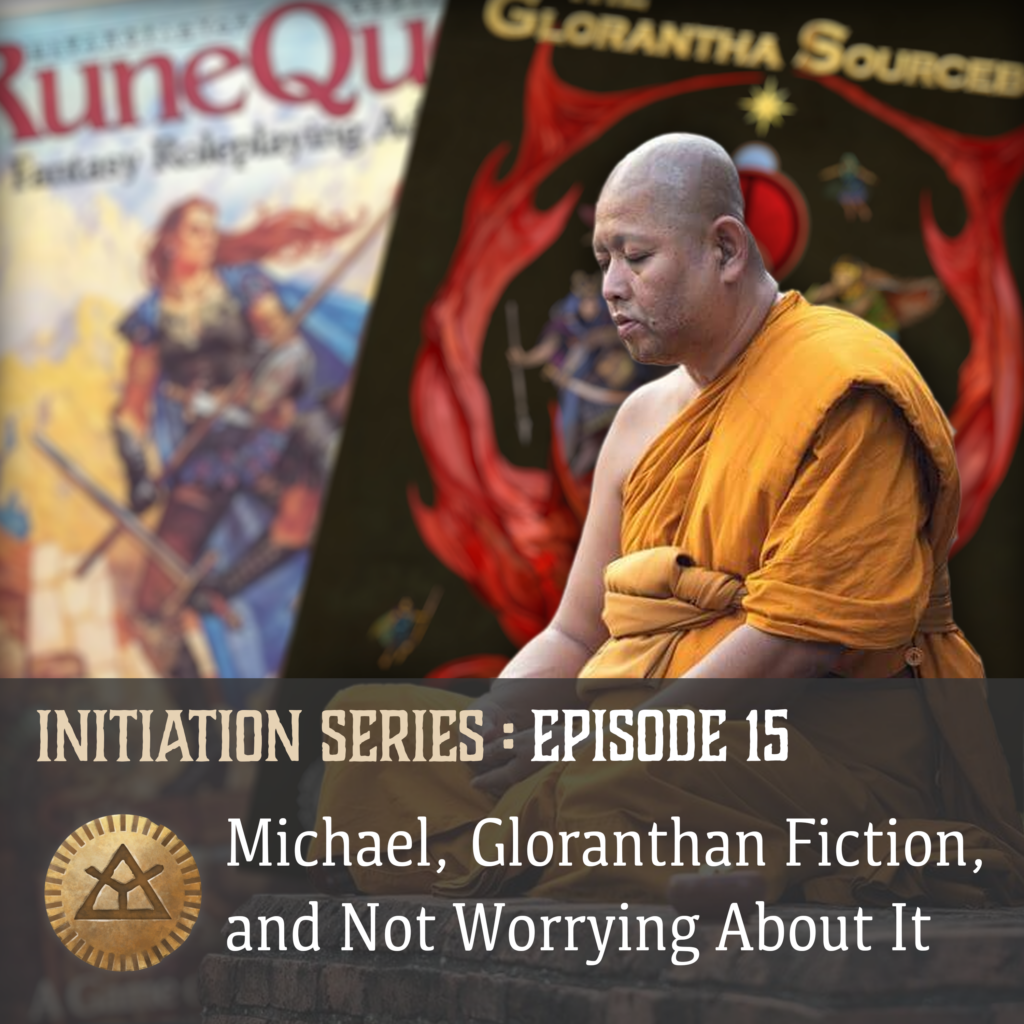
After a hiatus last month we are back with another Glorantha Initiation episode in which we interview a newcomer to the tribe. This time, Ludo is by himself due to some scheduling issue with Joerg (it was Ludo’s fault), interviewing Michael Bernth.
Michael lives in Europe’s first… no, second (probably?) happiest country. He is a multi-skilled designer (among other things) so if you’re working on a Jonstown Compendium book, he might be able to help with some InDesign layout work!
- Michael is on Twitter and Mastodon
- Michael’s portfolio
- Michael’s design company
Show Notes
In this episode we talk about:
- Miniatures of the 1980s
- Comics like Conan the Barbarian (Barry Windsor-Smith’s run) or Prince Valiant
- Ivanhoe (1952)
- D&D Basic and Expert, followed by Advanced D&D
- Going bananas with RPGs: Traveller, Bushido, Golden Heroes, Rolemaster, and more
- Games Workshop’s RuneQuest and Broos miniatures
- Call of Cthulhu, Cyberpunk, GURPS, Delta Green
- Avalon Hill RuneQuest, Sun County, River of Cradles
- The Grognard Files podcast and coming out of the “deep freeze”
- Jonstown Compendium, and in particular the Sandheart series
- Playing in Prax
- Not throwing too much at the players
- How to put all the lore and metaplot events in the game
- Dealing with the metaplot the same way you treat real history in Call of Cthulhu adventures
- Not being so precious about the lore
- Lots of gold lying around in the Glorantha materials… pick it up and do what you want with it
- Playing with new fantasy tropes, different from the usual Tolkienesque stereotypes
- Playing with rich cultures, mythology, and cults
- Glorantha is not about good vs evil or even order vs chaos
- Chaos is great, it can add a touch of horror in your fantasy game
- Where to start? Are there actually too many places to start?
- Lack of knowledge to “hang yourself onto”
- Broos are problematic, Morokanths may need tweaking
- Handwaving rules like ENC, varying crunch based on the story
- Spirit combat easily gets into a dealock, possession can lead to player agency issues, shamanism and sorcery rules are complicated, and… how does heroquesting even work?
- The rulebook has many editing issues, and its index could be improved
- Wishing for spell cards, god cards, and a Gloranthan tarot deck. But overall, wishing for Gloranthan novels and short story collections
- Romulus TV show
…and more!
Credits
The intro music is “Dancing Tiger” by Damscray. The outro music is “Islam Dream” by Serge Quadrado. Other audio is from the FreeSound library.
Episode 22: People of Glorantha: The Lunar Empire
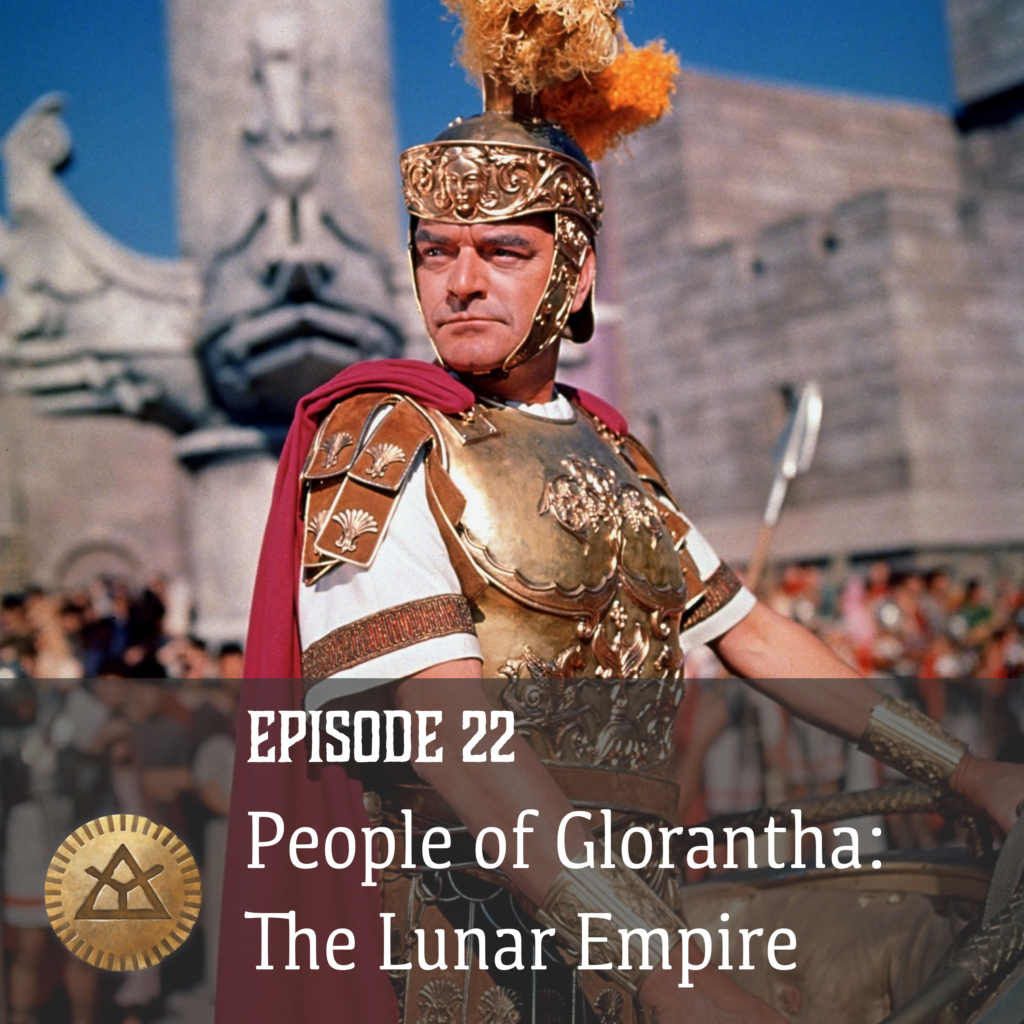
We resume our series on the People of Glorantha with, according to our guest, the very best people that there is on Glorantha. Our guest is indeed Nick Brooke!
Among his many hats, Nick is:
- A community content ambassador for Chaosium, where he promotes fan creations and helps fans put out Print-on-Demand books
- An author and collaborator on many Jonstown Compendium books (Sandheart, Life of Moonson, A Rough Guide to Glamour, Duel at Dangerford, Black Spear, Crimson King, and more)
- His Gloranthan Manifesto is available on the Jonstown Compendium too, although you can get the “naked” version from the BRP Central forums (volumes one and two)
- His old website still has plenty of Gloranthan content
We talk about Nick’s history with the Lunar Empire, which starts with David Hall’s Reaching Moon Megacorp and the fanzine Tales of the Reaching Moon, which had a very pro-Lunar editorial leaning. This was perhaps in response to the Storm Bull leanings of the Pavic Tales fanzine.
Nick talks about the way British people are great for playing evil imperial people. He points to the 2022 RRR movie, although Ludo points out that the practice goes way back, with for instance Ben Hur specifically hiring British actors to play evil Romans.
While players are concerned with Dragon Pass adventurers, the GM often wants to understand the Lunar Empire better, at least to portray the evil NPCs. But Nick reminds us that it’s all just a game in a make believe world, and there’s no need to get upset online. Given the number of threads on the topic that routinely get locked down on BRP Central and elsewhere, I’m sure more people need to hear this.
What the PCs know about the Lunars
We go through the core RuneQuest homelands and Nick explains what is their knowledge and opinion of the Lunars is.
For Sartarites and Praxians:
- They killed your grand-parent, made you pay taxes, and got eaten by a Dragon (good riddance)
- For older RuneQuest players, they were the Roman-like occupiers of Sartar
- Using Romans is a good model for the Lunars… see the many Roman-featuring movies and TV series in existence, including the classic Spartacus movie and more recent TV series
For Esrolians:
- There was a recent civil war between the Red Earth and Old Earth alliances (pro vs anti Lunars)
- Nick talks about the God King Belintar of the Holy Country as the “Pharaoh”, a term used in older RuneQuest material, but that Chaosium doesn’t want to use anymore for obvious reasons (such as the fact that there aren’t any pyramids in the Holy Country). Joerg tells me that at least Nick didn’t say “Pharoah”, as it was mispelled as such in the RuneQuest Companion.
- Nick also quickly mentions some “Old Earth” rituals, featuring the sacrificing of a “year king”, that were “cut” from the Glorantha Sourcebook
- There are parallels between Belintar, who dies and comes back, and the Red Emperor, who does the same
- Nick likes to use Cleopatra and Anthony or Caesar as a reference for Lunars flirting with Esrolian queens. And yes this includes their depiction in Asterix comics
For the Grazelanders:
- They generally love the Lunars because they often employ them as mercenaries and they pay well, although there is a minority of Grazelanders who doesn’t like the Lunars
- The Grazelanders don’t convert to the Lunar Way, they have their fundamental ways
- The current Feathered Horse Queen is a daughter of a Lunar King of Tarsh
For the Old Tarshites:
- They hate the Lunars, but they’re just embittered losers of the old Orlanthi Tarsh Kingdom
- Palashee Longaxe was a rebel leader who, for a time, manage to retake the kingdom from the Lunars, but he was put down eventually
For the Lunar Tarshites:
- They live under the Glowline, and their kingdom is centered on Furthest
- Furthest is a very Lunar city, planned and well designed, a beacon of civilization in the middle of Tarsh
- The benevolent temple of the Reaching the Moon extends the Glowline here
A Short History of the Lunar Empire
Nick takes us on a historical tour of the Lunar Empire:
- The birth of the Red Goddess in Torang (although we’re supposed to say “Blessed Torang”)
- The Seven Mothers and their ability to bypass the Great Compromise
- The Moon Goddess “should” have been in the Compromise… was there a patriarchal conspiracy at play from Yelm and Orlanth?
- At Castle Blue she proved her place in the God Time and ascended in the sky
- The Red Goddess can be seen from most of Glorantha, fixed in the sky as the Red Moon
- Glamour is founded next to the crater left behind when she took a chunk of the earth and ascended in the sky
- The Lunar Empire is governed by the ever reincarnating Red Emperor. Nick talks about whether they’re the same person or not after each reincarnation. Ludo makes a 1984 reference.
- Nick touches upon the evil Carmanian empire, and the Dara Happan patriarchs that were there before. The Lunar Empire has liberated everyone with a much more feminist, open, and egalitarian society.
- At some point, the Lunar Empire almost gets destroyed by Pentan Solar-worshipping noamds. They were led by the “madman” Sheng Seleris, a sort of a magical Genghis Khan. He’s now tortured in a Lunar Hell.
- Nick explains the “wanes” used (or not) for Lunar history.
- After the Pentan invasions, the great Hon Eel reconstructs the empire and invades several southern barbarian kingdoms. Later, the Empire invades even more areas like Sartar, Prax, and for a short time the Holy Country.
- During the RuneQuest character creation (the Family History section), you see all of this progress being undone, as the Lunar Empire gets kicked out of Dragon Pass.
- Nick explains what the Glowline is, and what the Lunars might have planned for Sartar if the Dragonrise didn’t happen.
The Lunar Empire’s current concerns are:
- Financing the Red Emperor’s parties. Nick uses Nero and other Roman emperors as inspiration for this.
- Jar-eel is busy “talking” to the White Moon movement, a bunch of pacifist anti-imperialist hippies.
- The Pentans are back, and almost got into the holy city of Torang. Jar-eel thankfully stopped them, riding the mighty Crimson Bat.
- The Dragonrise in Sartar is only a small annoyance to the Lunars at this point.
The Lunar Empire is organized between the Heartlands and the Provinces:
- Nick goes over the pendantic history of using “satrapy” vs “sultanate” to designate the different administrative regions of the Lunar Hearlands. Once again he diverges from Chaosium terminology.
- Incestuous noble families lead the Satrapies… errr, I mean Sultanates.
- Provinces are former barbarian kingdoms that were conquered and converted to the Lunar Way.
- The Lunars need to deal with the “natural state of rebellion” of the Orlanth cult
- Nick makes fun of the Orlanthi beliefs and hypocrisy
- We look at the difference between an Orlanthi from Sartar and an Orlanthi from Lunar Tarsh
- Nick wants it to be known that the Empire lets anybody worship anyone.
- Ludo is misled by rebel propaganda about how the Dara Happan became part of the Lunar Empire, so Nick explains all about it.
The Seven Mothers
We take a closer look at the Seven Mothers cult, which isn’t very well explained in the RuneQuest rulebook, and might be hard to grasp:
- Nick recommends getting Cults of Prax for the longer (albeit slightly outdated in some places) write-up for RuneQuest 2nd edition
- Nick explains who each mother is:
- Teelo Norri is the outreach cult, with free food and orphanages and such
- Irripi Ontor is a sage and astronomer, like Lhankor Mhy but with better libraries and no silly beards
- Yanafal Tarnils is like a government-backed version of Humakt
- Queen Deezola is for nobles, poets, and civilized people in general
- Jakaleel the Witch deals with mad people (including making non-mad people mad)
- Danfive Xaron is a cult for thieves who get captured and are “rehabilitated”
- She Who Waits… let’s not talk about her
- While explaining all this, we do a small aside about how Lunar taxes fix all the problems the Empire causes… no worries!
- Nick talks about the similarities between the Seven Mothers and the Lightbringers, and the parallels with the Roman vs Greek gods
- Nick explains how the Seven Mothers pacify and convert the people that the Empire conquers. The Seven Mothers are “closer to the people” than the old gods, and have many other advantages to the everyday person.
Dart Competitions
Joerg brings up the Dart Competitions, the Lunar Empire’s sanctioned way of doing spy operations and assassinations between nobles
Unlike the bickering of Orlanthi clans and tribes, these can’t interfere with the general population and the collection of taxes.
There is no “civil war” in Tarsh. Just people losing the ongoing Dart Competition.
Playing Seven Mothers Initiates
We go through a few possible backstories for a Seven Mothers initiate joining a party of Dragon Pass adventurers:
- A Lunar Tarshite whose patron is on the losing side of a Dart Competition in Tarsh or some other province, and needs to lay low for a few years, out of reach from his/her enemies
- Playing someone doing some “groundwork” in Sartar for a noble family’s Dart Competition (although this might require some work to manage that character’s agenda vs the other characters)
- Families initiated into the Seven Mothers cult during the Lunar occupation of Sartar, and you could play an adventurer that comes from these families
- Pelorian traders settled in Sartar or Prax generations ago for business reasons, since commerce between the Lunar Empire, the Holy Country, and Prax has been quite lucrative for everybody. You could therefore play someone who comes from one of those merchant families.
- Playing a Lunar merchant who worships Etyries, the Lunar goddess of trade. Nick even shares his own head-canon for Etyries merchants, as compared to Issaries merchants.
- Playing an Irripi Ontor scholar doing research in Dragon Pass.
The C Word
Nick brings up the topic of Chaos and then tries to run away from the podcast:
- Ludo compares the Lunar’s use of Chaos with the US’s militaro-industrial complex and nuclear weapons
- The Lunar Empire uses Chaos “for the benefit of people”, we are told
- We discuss more Chaos-related matters, including what to do with Chaotic races
Other Lunar Cults and Lunar campaigns
- Nick is looking forward to the “recognition and adoration” that the Lunar cults deserve with the upcoming “Lunar Way” cults book
- Playing the glorious conquests of the Lunar Empire would be fun!
- At the moment, playing a Lunar campaign is tricky and requires a lot of work: you need the Guide and the Sourcebook, and some work to model the Lunar cults into RuneQuest mechanics… but use common sense, and re-use what’s already in the rulebook.
- You can use the Rough Guide to Glamour, Citizens of the Lunar Empire, Life of Moonson, Nick’s Glorantha Manifesto to build something.
- Harald Smith’s Edge of Empire (we had an episode on it) is a great example of building a campaign framework in the Lunar Provinces.
Illumination
Ludo asks about Illumination:
- Nick explains what Illumination is… shortly.
- Illuminated people can use Chaos, and know that the Compromise can be changed
- The Seven Mothers cult is looking for people that would be good for “Illumination training”
- Illuminated villains can be either mad sorcerers or “dangerously sane” people.
Finally, Nick does a mic-drop by reading the Guide to Glorantha, giving the final summation of what the Lunar Empire is.
Credits
The intro music is “The Warbird” by Try-Tachion. Other music includes “Cinder and Smoke” and “Skyspeak“, along with audio from the FreeSound library.
Episode 21: Gamemastering A New Hero

This episode starts with Jörg pronouncing our guest’s name wrongly! We welcome James Coquillat of Chaosium to talk about RuneQuest actual play and gamemastering.
James is both on the digital content team and on the editorial team for Call of Cthulhu. You can find James at the following online places:
- James’ personal website
- The Chaosium Youtube channel, and in particular:
- The Chaosium video interview series
- The RuneQuest Starter Stream (ended)
- A New Hero (ongoing)
- The Stream of Chaos Discord server (invite link here)
Show Notes
James tells us about his gaming and professional career. AD&D 2nd edition, Call of Cthulhu, screenwriting turning into video game production, and finally changing over into tabletop RPG production. Living in Melbourne brought him into contact with Michael O’Brien aka “MOB” (Chaosium’s vice president), Mark Morrison (Chaosium community embassador and part of the awesome Campaign Coins), and other notables from the Down Under roleplaying community. From there to Chaosium was not a big step.
James’s first work for Chaosium was helping with the translation of Khan of Khans. And while that is a Gloranthan game, it took some diving into the Chaosium back catalogue to familiarize himself with RuneQuest and Glorantha.
RuneQuest: Roleplaying in Glorantha was the first experience of both the game system and the world through play.
Ludo asks how much Gloranthan knowledge James had accumulated when he had the courage to present both the system and the setting publicly.
James explains that, to the folks at Chaosium (many of whom have been involved since before there were the Tales of the Reaching Moon in the early nineties), he fits into the demographic of young new players and GMs that they want to target with the new edition of RuneQuest. This is one reason why he was chosen to run the game between himself and his colleague David Naylor, who is a player in the RuneQuest stream along with Bridgett Jeffries, who we interviewed recently.
Jörg asks about how much James profits from the interviews with Jeff Richard (Chaosium’s vice president, creative director, and Glorantha lead designer). James confesses to have led the discussion towards upcoming features in his game every now and then.
Asked about his stumbling blocks with RuneQuest and Glorantha, James describes how coming from the typical Tolkienesque fantasy in most fantasy roleplaying games made the encounter with Glorantha something of a new territory. It was weird to encounter these tropes from the early days of the hobby. The beastmen were strange, not just the ducks but also creatures like scorpionmen or anthropomorphized animals. Chaos was a concept that was different from previous experiences.
To understand the big opponents of the Sartarites, James used the advice to think of the Lunars like the Roman Empire, and of the Praxian beast riders like the Mongol hordes invading Europe. Ludo commiserates that long-time Gloranthaphiles tend to use historical parallels that you may never have heard about before, like e.g. Thracians.
Another stumbling block for James was the multitude of gods that would pop up in the gaming material and the lore.
When asked whether James got to play RuneQuest Glorantha before running it, he explains that he was the GM for his local group.
As a long time Call of Cthulhu player and contributor James was familiar with the Basic Roleplaying system that was based on the original RuneQuest. Features specific to RuneQuest, like the different success levels or Strike Ranks, were alien and needed to get used to.
David Naylor gets another shout-out as being a great GM’s assistant (looking up rules on the fly when needed), and also for running the technical side of the streams.
Ludo asks where to get advice as a new GM if you don’t happen to be able to call Chaosium old-timers like Jeff or MOB. James suggests to start really small, isolating the initial setting enough so that the lore of the greater world is not yet required.
Jörg asks what material James used when he started GMing RuneQuest (for his friends). James started with the core rule books, but things came together when he got his hand on the Starter Set material (before it was published, as James and Dave designed the solo adventure in Book 3 of the Starter Set).
James describes how Dave and he had submitted a scenario for RuneQuest to Chaosium, which had gone through editorial feedback (and which was pending publication) before getting tasked with creating the Starter Set’s solo-adventure. Part of James and Dave’s approach was to make sure that the solo-adventure would work online as well.
James points out that the designers being relatively new to Glorantha was considered an advantage for creating the first contact for many players with both the rules and the setting.
Jörg asks about the ceremonies in the Starter Set’s SoloQuest which do require quite a bit of familiarity with the background, but those resulted from James and Dave rather than direct demands by the editors.
James talks about the feedback he got from his playtesters in his gaming group, including one player whose SoloQuest run ended in the protagonist dying in the decisive combat against Vostor after a long iteration of combat rolls, leading to another mechanic inserted to bring such a gridlock to a narratively pleasing end. That player ended up playing Vostor in the Starter Set scenarios!
James talks about his two previous GMing experiences. The first one was about a village facing the demands of both a Lunar tax collector and a Praxian warband, each demanding half the year’s production (which obviously could not be satisfied for both). The other one was more experimental, riffing on the Apocalypse Now upriver journey into hostile territory. Jörg remembers MOB’s scenario “Hut of Darkness” from Tales of the Reaching Moon which uses the same inspiration.
Ludo shifts the topic to the evolution of the shelves behind James in his videos. James talks about his growing collection, and shares how he moved three times during his work on the Chaosium YouTube channel. One time he dismantled and re-populated the shelf at a new home between a Sunday Call of Cthulhu recording and a Tuesday RuneQuest recording.
Ludo talks about his appreciation of the A New Hero stream and feels empowered by seeing James struggle with some of the crunch of the system while James still keeps the game flow. James talks about dealing with the crunch, again by keeping it focused, with deeper dives delayed while applying the principles of Maximum Game Fun and Your Glorantha Will Vary to the current game.
The New Hero stream doesn’t use published scenarios but uses original adventures. James explains that each of the streams has a focus on one specific product in the game line, and that would be the core rules book after having played the Starter Set scenarios on the previous stream.
The first theme would be the clan rivalry, and feedback from Jeff Richard suggested Greenstone as a suitable starting point for that kind of setting. Greenstone has one of the most important Earth temples in Sartar, which gave a logical backdrop for the characters’ backstory. The proximity of the Upland Marsh and its undead led to a follow-up on that theme, and so on.
Ludo asks about the sources used to research the region. James lists his sources, which included the Guide to Glorantha, the RuneQuest Glorantha Bestiary, the RuneQuest wiki, and the fan-maintained (and often not quite correct) Glorantha wiki for a general overview and for an idea what specifics to look up, and then using his access to the previously published material on the setting.
Ludo points out that the Bestiary is a lot more than just a catalogue of monsters: it also contains a significant amount of world-building, worth a read-through rather than just skimming for single monster stats.
As the only grognard in the podcast, Jörg cannot help but reminisce his experience playing in a Freeform set in the Greenstone region around the time the current tribes were formed, and how the rivals of the resident Orleving clan were the first presentation of clan life in Sartar in the RuneQuest 3rd edition Genertela box, still available in the free collection called “HeroQuest Voices“. These are in-world instructions to young adults in the various cultures and regions of Glorantha. They are excellent as player-facing hand-outs to get an idea about the setting. The individual content is available for download at the bottom of this page.
When asked for advice to get started, James first points to the online version of the Starter Set SoloQuest.
James’ next tip is that the new GM should select the pre-generated characters in the Starter Set that they feel comfortable with, and offer that selection to the players as the group composition will be influential on the style of the game.
James suggests to take the Strike Rank system not so much as a fixed turn order but just as an aid to determine who goes first after all the actions have been announced.
James then suggests that, to get a feel for the style of the setting, look at the real-world inspirations for cults, like ascetic monks for Humakt or fertility goddess and rites for Ernalda. Also look at the religions and try to make sense of interactions and parallels. Just asking whether it is coincidence that there are seven Lightbringers and Seven Mothers can lead to insights, for instance, and comparing it to the Roman re-interpretations of Greek mythology in their own pantheon.
Ludo asks about the Session Zero and determining the style and orientation of the campaign. James talks about setting the mood of the game (like leaving silly jokes at the door for a game of the Alien RPG), along with extra demands when running a game on a public stream. For the New Hero stream, they initially kept it small and focused, while for the Starter Set stream they would just jump in to get the general experience.
Jörg asks about the players derailing the original ideas for the session, and James tells about a whole subplot that was avoided by the players involving a fight against zombies inside a horse stable with horses trapped, and then centaurs coming to the rescue. That did not happen, and neither did the players return to a village on the edge of the Marsh to get more information on the undead, leaving a whole set of small subplots unplayed.
Ludo asks about personal favourite and least favourite aspects of the setting. James starts with confessing his love for the ducks of Glorantha, a concept that initially seemed alien, 1970ish, but resonating with his love for Duck Tales and an early tabletop roleplaying experience with a DIY game called Duckromancer (not the commercially available game by the same name, but a game where you play ducks and have skills like Duckplomacy and other puns galore). He also likes the Mostali, thanks to exposure to an enthusiastic fan at a convention. Stuff James enjoyed less were the big spanning political story arches as those are hard to make a connection with for new players unfamiliar with these struggles.
Ludo talks about how GMs coming from Call of Cthulhu are used to deal with rather ordinary people being tossed into stuff way beyond their pay grades, and how they (might) return from their adventure still as normal folk rather than big heroes. Switching to stories where the player characters are expected to be or become recognized heroes means a change in narrative style. James mentions how his academic background as a screenwriter ingrained all the narratological story-telling tropes, which mean that the hero emerges from a community, and at the end of the hero’s journey returns to that community.
We close the interview with our usual silly questions, like the favourite steed (bolo lizard), favourite culture (Orlanthi over Lunar or Praxian, with Sartar on the Praxian border possibly the ideal mixture), favourite cult (Humakt for the swords and asceticism, Urox the Storm Bull for the bad-ass boisterous guys), trollkin or ducks (ducks, of course), scorpionmen or undead (undead), favourite undead villain (Delecti over Brangbane), most interesting character homeland (Lunar Tarsh), and favourite runes (Death, Water, Truth, Fire).
Credits
The intro music is “The Warbird” by Try-Tachion. Other music includes “Cinder and Smoke” and “Skyspeak“, along with audio from the FreeSound library.
Glorantha Initiation: Lee, Irish Mythology, and Reverential Tones
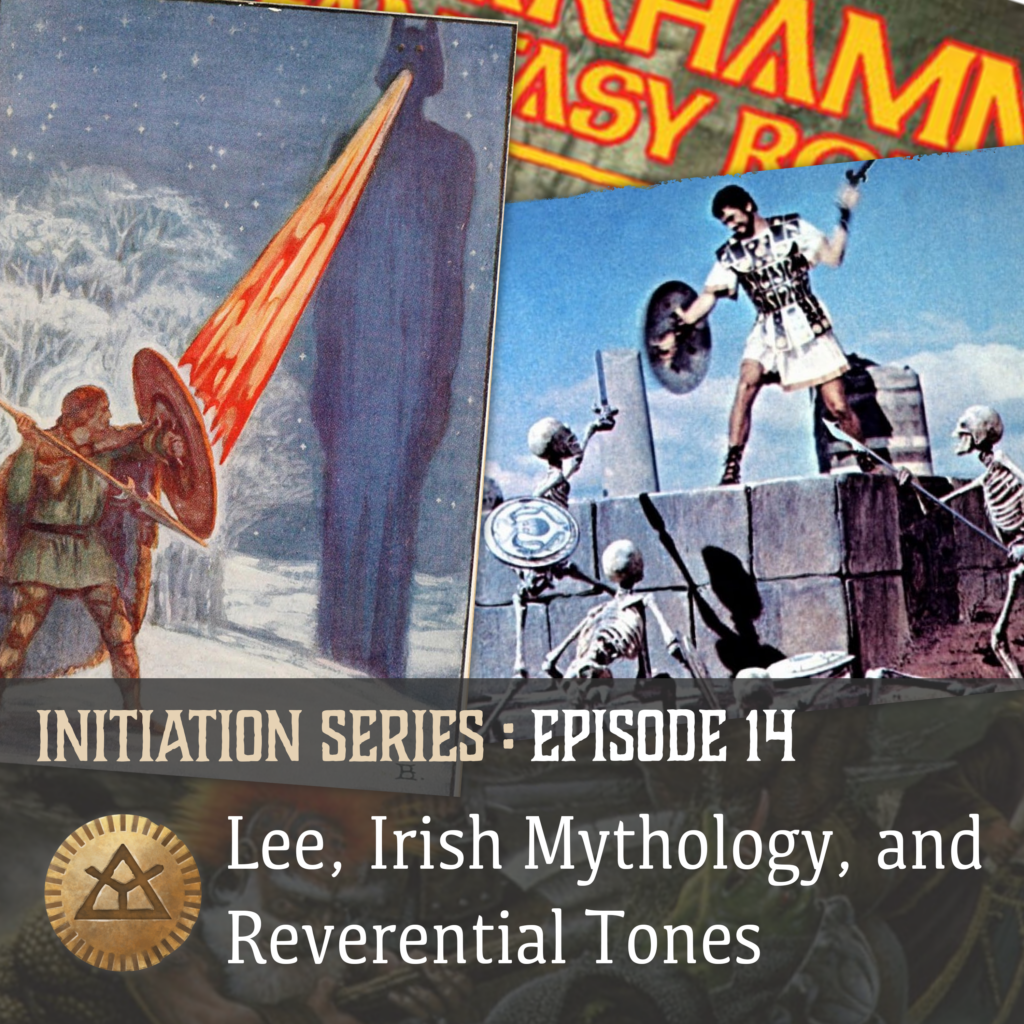
In this episode of our Glorantha Initiation Series, we had the absolute pleasure of talking to Lee O’Connor. He came to Glorantha during the initial pandemic lockdown by way of his love for mythology and the fact that his middle-aged British gamer friends wanted to recapture the joy of their youth by playing RPGs again.
We apologize for Lee’s squeaking and cracking chair, which causes some background noise during the interview.
Where to Find Lee
This is where you’ll find Lee online:
- Personal website, and blog
- Instagram feed
- Twitter and Facebook
- Fionn Mac Cumhaill Graphic Novel
- RuneQuest campaign wiki (the PCs’ village is “Stoneroot”)
- All of Lee’s Gloranthan art is in this Facebook photo set
Lee contributed some art to the Duckpac sourcebooks for RuneQuest Glorantha.
Lee also has some more upcoming stuff for RuneQuest:
- Upcoming black elves book by Brian Duguid
- Upcoming Greydog clan book by Jonathan Quaife
- Upcoming “in-world” historical book by Jonathan Quaife
Show Notes
Here is a list of stuff we talk about in the interview:
- The medieval town of Totnes in Devon (UK) where Totnes Castle is
- Image Comics
- Games Workshop shops (say it three times fast)
- Warhammer and Warhammer Fantasy Roleplay (the latest edition is published by Cubicle7)
- Magic The Gathering
- RuneQuest (spoken in reverential tones by British people)
- Warhammer’s Beastmen and RuneQuest’s Broos
- Call of Cthulhu and the Masks of Nyarlathotep campaign
- Cyberpunk 2020
- Savage Worlds
- Dungeons & Dragons
- Fighting Fantasy books and the RPGs that spun-off from them
- There are no tabletops in buses
- RuneQuest Glorantha Quickstart
- Agon, for playing in mythic Greece
- GURPS Greece
- Savage Worlds’ 50 Fathoms and Pirates of the Spanish Main
- OpenQuest
- Barebones Fantasy
- Jason and the Argonauts
- Cthulhutech: H.P. Lovecraft meets Neon Genesis Evangelion plus Guyver
- Too Good To Be True, a Battletech PbtA system
- The Regiment, another PbtA game
- RuneQuest Glorantha, and the wonderful cover by Andrey Fetisov
- Fionn mac Cumhaill (pronounced Finn Macool, because of course it is), and the similarities to the later Arthurian myths
- The Cattle Raid of Cooley
- Using the King of Dragon Pass wiki for heroquesting ideas
- Father Ted
- RQG Gamemaster adventures
- Understanding the RQG Family History and bringing it in play
- The big Dragon Pass timeline, playing along the metaplot, and whether to bring back Kallyr
- The Duel at Dangerford
- JRR Tolkien and his take on celtic mythology
- The Seven Tailed Wolf
- The Black Spear
- Using King of Sartar for the alternative timelines
- River river, Hill hill hill hill, and the “quadruple redundancy of tautological placename etymologies”
- Gloranthan bad names (Clearwine, Ghosts Around, Nochet)
- RuneQuest Starter Set and Infinity Engine strike rank trackers
- The too many skills of RuneQuest
- The complicated publishing history of RuneQuest and its edition wars
- The modularity of RuneQuest
- Too much bookkeeping of weapon HP
- Babies, adult themes, and X-Cards
- The Glorantha Sourcebook vs The Guide to Glorantha
- D’Aulaire’s Book of Greek Myths
- The Percy Jackson & The Olympians book series by Rick Riordan
- The “Rick Riordan Presents” book imprint with, for instance, The Storm Runner, a middle grade/young adult fantasy book based on Mayan mythology
- Tales of the Reaching Moon
Episode 20: Imther, Edge of the Empire
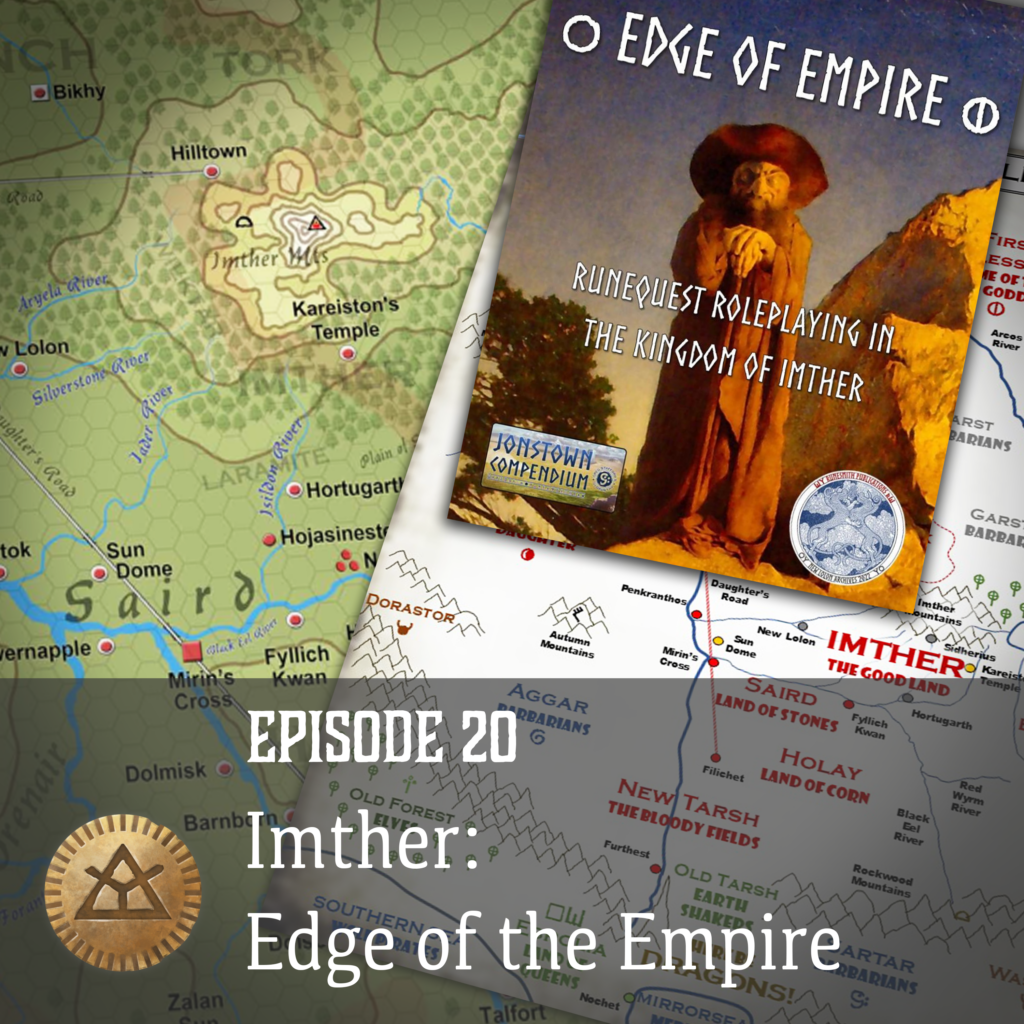
Our guest for this episode is Harald Smith, aka Jajagappa.
You can also find Harald on the Facebook RuneQuest group and Jonstown Compendium Creators Circle group.
Introduction
Jajagappa is the dog-headed psychopomp of Saird, known for his net. Harald grew fond of this deity when diving into Saird, the region north of Dragon Pass.
Harald started in the early eighties, in time for the classic RQ2 campaigns, and followed through the RQ3 era until he sort of dropped out in the late nineties. He resumed his activity around the time the Guide to Glorantha was in preparation, and has been one of the more active posters on the forums since.
When he returned, Harald played a few games by forum.
Harald speaks about different pace in that kind of game, how to apply GM techniques, and the technology that a platform like rpg-geek offers. Some of Harald’s game are still on rpg-geek.
RuneQuest Glorantha games:
- The Broken Tower Quickstart play by post game
- The Quest for Colymar’s Vision play by post game (part 1 of 3, see the end of the thread for links to part 2)
- Into the Hero Wars play by post game (this is part 1 of the sequel to the Colymar campaign, or part 4 of Harald’s overall Dragon Pass campaign)
- Smoke and Fire play by post game (this is part 1 of The Smoking Ruin adventure, and fits again in Harald’s overall Dragon Pass campaign)
HeroQuest Glorantha games:
- Colymar Campaign, the Orlmarth clan play by post game (part 1 of 8)
- Harald notes that you may want to see a full heroquest into the Underworld to rescue the goddess Orane… this was the climax of the game in part 8.
Main Topic
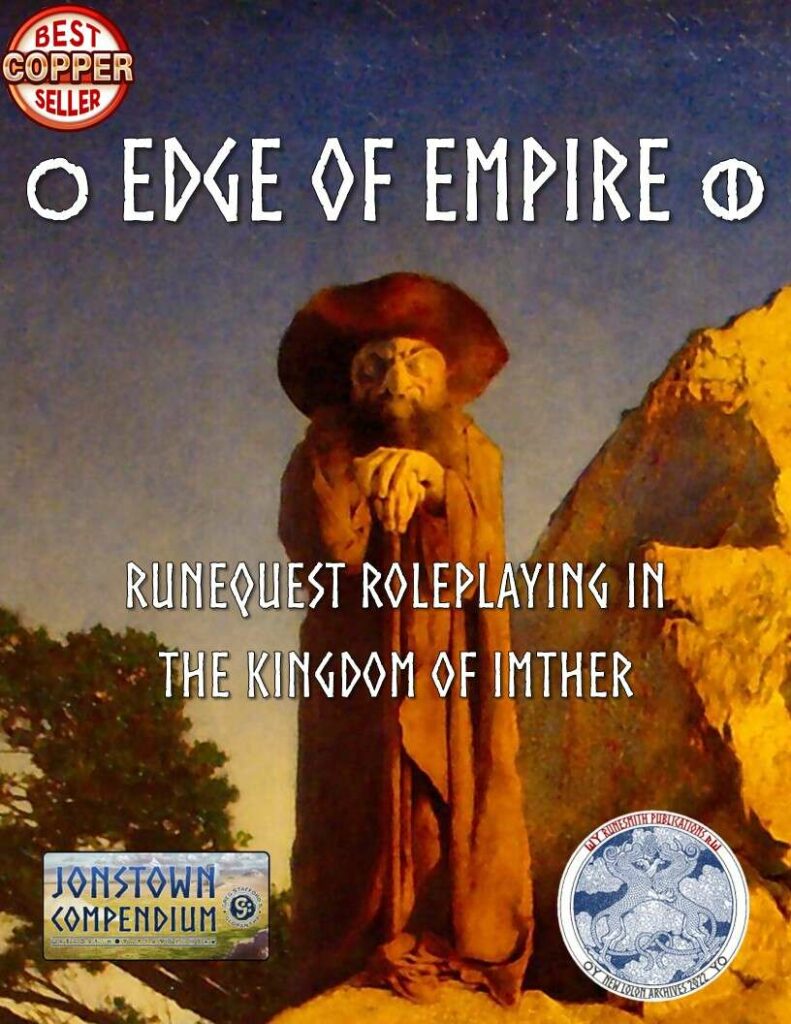
Edge of Empire is a supplement for playing RuneQuest in the Kingdom of Imther.
Harald describes Imther as the smallest of the Lunar Provincial kingdoms, and its position.
Imther has been part of the Lunar sphere for centuries and doesn’t have the sense of being occupied by foreign troops that was so characteristic for Lunar occupied Sartar and Pavis.
The mountains of Imther are also home to a colony of dwarfs which used to trade metal with the King of Imther, but that lineage has died out, and for the trade to resume there needs to be a new king who gains tthe trust of the Mostali.
Another main topic is the interaction with the Lunar Empire.
When the Empire still was young, a hero from Imther by the name of Jannisor nearly conquered the empire, but got betrayed on the bridgte to the Red Moon in Glamour.
This was followed by the campaigning of the Conquering Daughter who esstablished the provincial Kingdoms, and who built the branch of the magical road reaching to Hilltown in Imther. She turned the barbarian lands of Sylila into a Heartland satrapy.
North of Imther is the forbidden land of Tork, a land where Jannisor bound the maddened and chaotically tainted followers of the Mad Sultan, survivors of the First Battle of Chaos, and how violating its fluctuating border may release them.
South lie the provincial kingdoms of Holay and Saird with the Provincial administration, an area where Dara Happan and Orlanthi culture have merged over the centuries. Northwest lies Vanch, another sort-of Orlanthi kingdom whose people are adept at “borrowing” things and customs permanently.
Harald’s version of Imther wouldn’t be complete without the local variants of known cults whose cult write-ups are part of this book.
Most prominent is Khelmal, a local take on Yelmalio with a few peculiarities, and local myths. Then there is Nealda, a local name for the Earth Goddess with local myths in addition to known Ernalda myths.
An important role falls to the trickster gods of Imther, the most important of whom is Orlantio, a variant of Orlanth. There are compelling reasons to keep a trickster in your clan.
Then there is the Imtherian pride in their cheeses, shared by the author. Some of the first published texts on Imther (in Codex Vol.3) was about the cheese.
There are many flavour pieces in the book that help get a sense for the region. There are examples of Imtherian sayings and similar commonly used phrases and references to local myths. There is also the “Lunar Survey” which offers an in-game view on Imther through the perspective of the Lunar empire.
We ask Harald about the history of his work on Imther. He originally picked an area of Glorantha that was underdeveloped to do his own thing. Then he pitched the idea of an Imther sourcebook to Chaosium/Avalon Hill but the timing wasn’t right. Harald shared and developed his work through the Glorantha Digest and the gaming conventions of the time.
This eventually led to two issues of the short-lived fanzine New Lolon Gospel (more here). Harald and Joerg even briefly discuss the different covers of various international printings of the fanzine.
Harald also mentions working with Greg Stafford and Jeff Richard, and having some of his creations canonized.
Ludo asks how the Orlanthi of Imther ended up herding goats and making goat cheese.
Ludo follows with how Edge of Empire has a cool clan creation section with many possible foundational myths for your adventurers’ community. This came from the HeroQuest material, which had something similar.
Harald discusses how he portrays dwarfs in his game. Edge of Empire includes several example conversations to be had with dwarfs, and this showcases Harald’s very particular choice of speech patterns for this obscure Elder Race.
Edge of Empire contains many tools for procedural play. Joerg praises the book as being the closest to Griffin Mountain on the Jonstown Compendium, with Griffin Mountain being the gold standard for sandbox exploration games. Harald says that he wanted to provide the necessary tools for people to design their own campaign in Imther. More “proper” scenarios might follow in further sourcebooks.
Joerg says we should talk about Harald’s cartography work. Ludo says that he is mostly interested in Harald’s amazingly complex map of Nochet. Lots of little buildings and, we learn, other maps about underground waterways (because he had an Esrolian game that required knowing about this!)
You can see the map of Nochet here. Harald talks about the various maps he’s done over the years, some of which are visible on BRP Central.
We go into our usual “wildcard questions”, with a few digressions on Borderlands or the evolution of Glorantha’s canon over the years.
Harald teases a few different campaign books he’s considering writing to expand on his Imther sourcebook. Harald also recommends looking at Peter Hart’s Hydra book for resources on playing in the Lunar provinces.
Some of the art in Edge of Imther is done by Harald’s daughter Rebecca Smith. Check out her portfolio. She takes commissions including characters (B&W or colour) and cover designs!
Harald will be at Chaosium Con 2023, and will even be running a panel on Exploring Glorantha beyond Dragon Pass and Prax.
Credits
The intro music is “The Warbird” by Try-Tachion. Other music includes “Cinder and Smoke” and “Skyspeak“, along with audio from the FreeSound library.
Glorantha Initiation: Bridgett, Bronze Age Tropes, and the Basement Operation
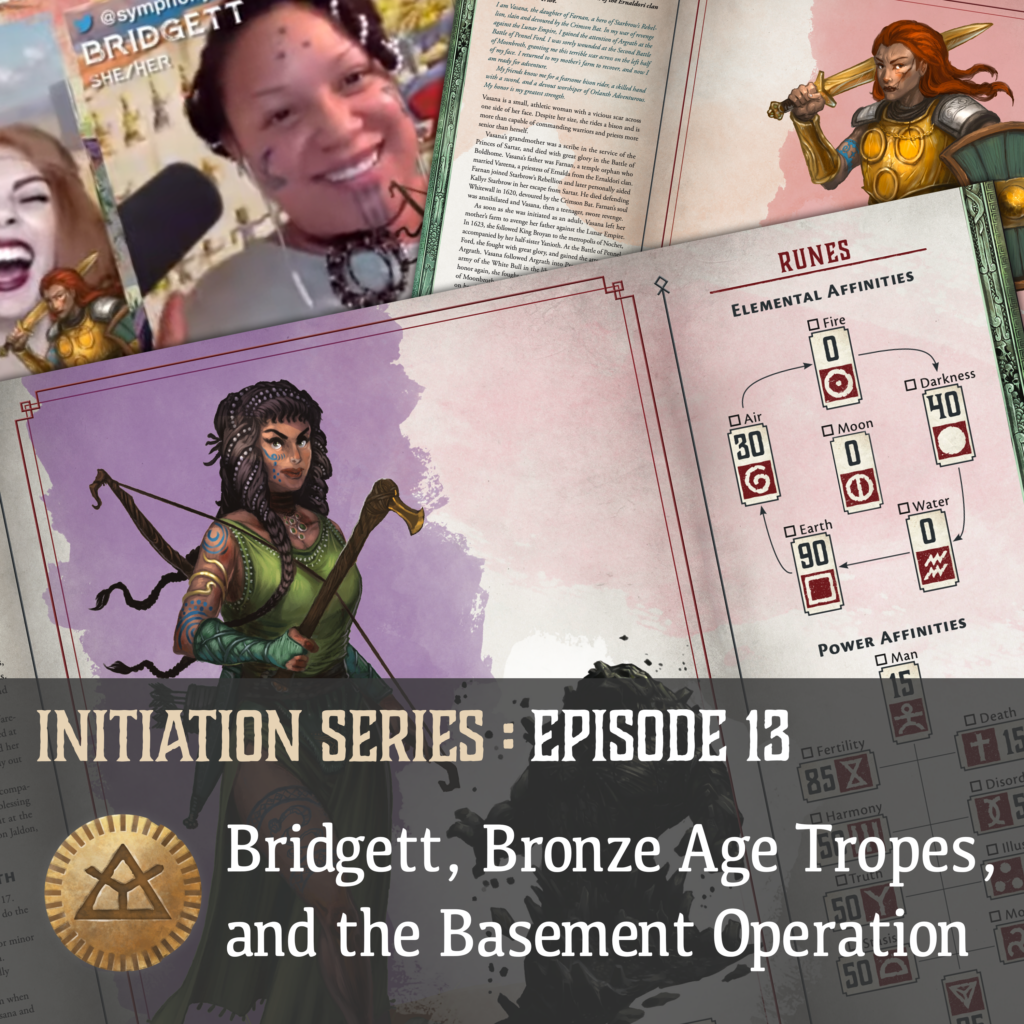
We kick off this new season of the Glorantha Initiation series with the lovely Bridgett Jeffries, aka “the happiest voice in cosmic horror”!
About Bridgett
You can find Bridgett all around the internet, but in particular:
- Founder of Symphony Entertainment
- Community embassador for Chaosium and, just as I write this, promoted to coordinator of events and outreach (congrats Bridgett!)
- Author and contributor to many things on DriveThruRPG, especially on the Miskatonic Repository
- Streaming on the Symphony Entertainment YouTube channel and Twitch channel, the Chaosium YouTube channel, and many others
- Co-host of the Miskatonic University podcast, and appearing in several other horror and gaming podcasts
- Check out Bridgett on Twitter!
- Also check out her Patreon!
Show Notes
In this episode we talk about:
- Playing AD&D, Champions, and Battletech as a covert operation in a basement with middle-aged men
- Chaosium’s RuneQuest Starter Stream, and the New Hero actual play
- RuneQuest 3rd edition, its fantasy Earth, and Glorantha as a separate setting
- Moral ambiguity in Glorantha: nothing is straightforward, everything comes with the “weight” of the lore and the setting
- Activating Runes or Passions to augment rolls is dope!
- Having an assistant GM to help with the rules is great for a game like RuneQuest
- It’s hard to relate to the Bronze Age, compared to other eras… what even is the Bronze Age?
- The problem with gatekeeping by grognards (old fans), and letting newbies discover and play the game in their own way
- Tropes vs lore (see also this essay I wrote on the subject)
- The Rome TV series, Troy, The Ten Commandments, Alexander
- Tropes of the Orlanthi: violence is always an option, no one can make you do anything, follow chosen leaders
- Tropes of the Bronze Age:
- Religion is politics (priest kings and such)
- Cities with temples on hills, markets full of merchants and mules and slaves, philosophers on soapboxes
- Tropes of Glorantha:
- Everybody comes from their own culture, with their own reasons to do things
- Use the Runes as a guide for how cults fit in the world, use archetypes first and lore later
- Spirits are everywhere (shamanism, animism)
- Getting used to magic being everywhere
- Glorantha is flat, the Underworld is below, rivers used to flow upwards!
- The Jonstown Compendium is awesome
- Drawing Earth Runes on your face
- Using the RuneQuest Starter Set‘s art as reference
- The trolls are political refugees
- Exploring Glorantha, your Glorantha 101 YouTube series
Credits
The intro music is “Dancing Tiger” by Damscray. The outro music is “Islam Dream” by Serge Quadrado. Other audio is from the FreeSound library.
Episode 19: Jackals and Ancient Worldbuilding
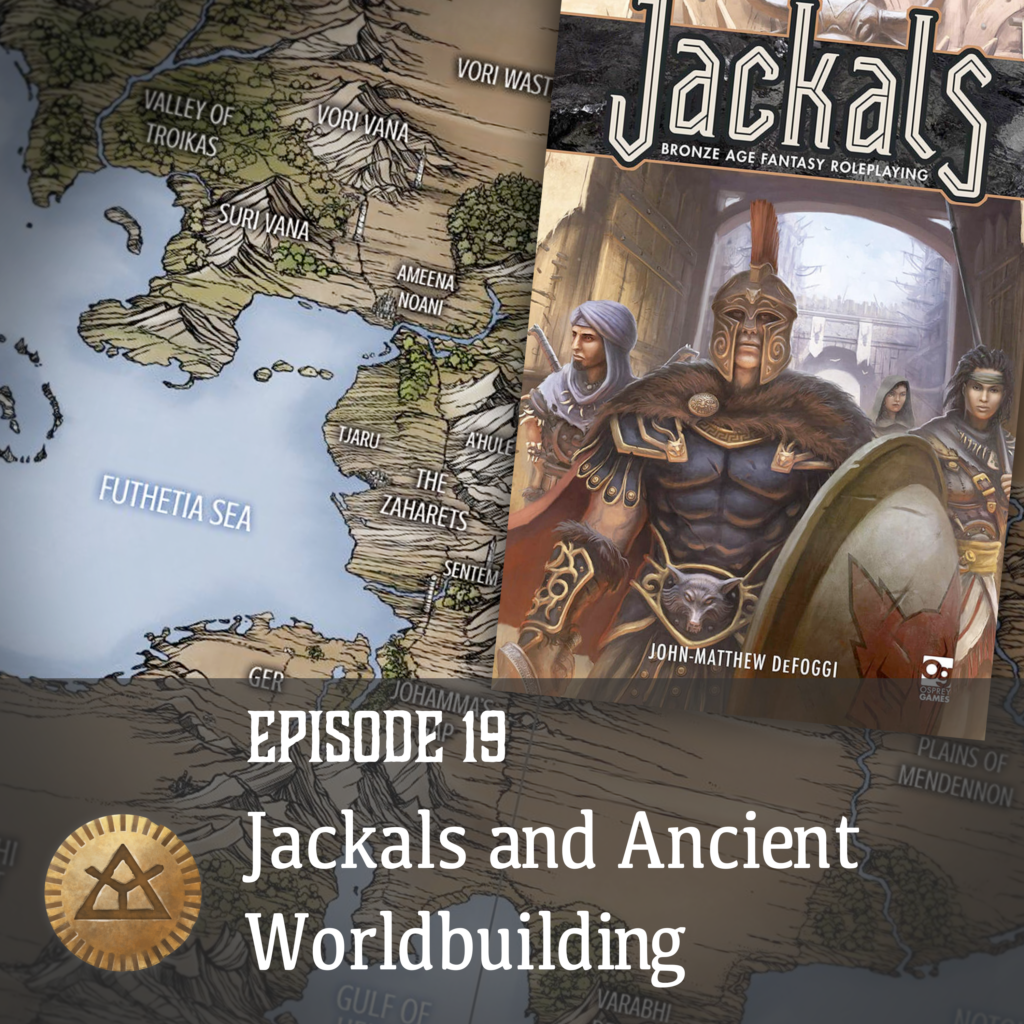
In this episode Joerg is still taking a break, but Ludovic is here to welcome Evan Franke and JM DeFoggi (not to be confused with JM DeMatteis!)
Exploring Glorantha
Evan and JM are probably best known to listeners and readers of the God Learners as the hosts of Exploring Glorantha, the YouTube series that presents Glorantha in an accessible manner to the general public. But they are also part of Iconic Production, which does a lot more stuff! It started as a 13th Age actual play, but they now cover many other games.
Ludovic mentions that subscribing to Iconic Production’s Patreon gives you access to the Exploring Glorantha show notes, which are quite useful as a Gloranthan index when you need to look something up.
Jackals
For the main topic, we discuss JM’s bronze age fantasy game Jackals (available from Osprey Publishing), its worldbuilding, campaign framework, system, and what we can learn and apply to Glorantha gaming!
During the discusion, we talk about:
- The Guide to Glorantha
- Ludovic’s Glorantha Initiation episode
- Jackals and its supplements Fall of the Children of Bronze and Travellers on the War Road
- The Sea People and some memes about the Bronze Age Collapse
- Putting the themes of the game and setting into the system (by the way, you can find Chaos corruption rules in Ludovic’s RuneQuest scenario in “A Short Detour“)
- Pendragon
- John Wick (the designer, not the assassin) and his games 7th Sea and Legend of the Five Rings
- Robin Laws
- The One Ring
- The Jonstown Compendium
- Improving “onboarding” into a fantasy setting by making it look familiar to Earth
- GURPS Greece and GURPS Imperial Rome
- Mythic Earth series for Mythras
- Hellenistika
- Harn
- Approaches to building a fantasy setting: linguistics, mythology, history, cultures
- Tolkien’s Lord of the Rings, and the Dwarf names taken from the Poetic Edda
- The Lord of Spirits podcast
- Joseph Campbell’s The Hero with a Thousand Faces and The Masks of God
- Carl Yung
- James Frazer’s The Golden Bough
- The Stafford House Campaign
- Don’t read complicated books just to play game… find out by playing
- Adapting Jackals’ campaign framework to Glorantha:
- Resettlement of Dragon Pass and PenDragon Pass
- Griffin Mountain
- The Tournament of the Masters of Luck and Death
- Theyalans at the Dawn
- Resettlement of Pavis
- Using Jackals’ Clash System in Glorantha
- Call of Cthulhu’s 7th edition
- John Wick’s “Stafford did it first” rule
Where to Find Evan and JM
- Strange Owls games
- Space 1889: After Kickstarter
- Amboria
- Darkly Bright Press and Akboritha
- Escalation! Magazine and the upcoming Red Moon & Warring Kingdoms issue
- 13th Age Glorantha
- Rising Moon Rescue actual play
Credits
The intro music is “The Warbird” by Try-Tachion. Other music includes “Cinder and Smoke” and “Skyspeak“, along with audio from the FreeSound library.
Episode 18: The Travels of Biturian Varosh (Part 5)
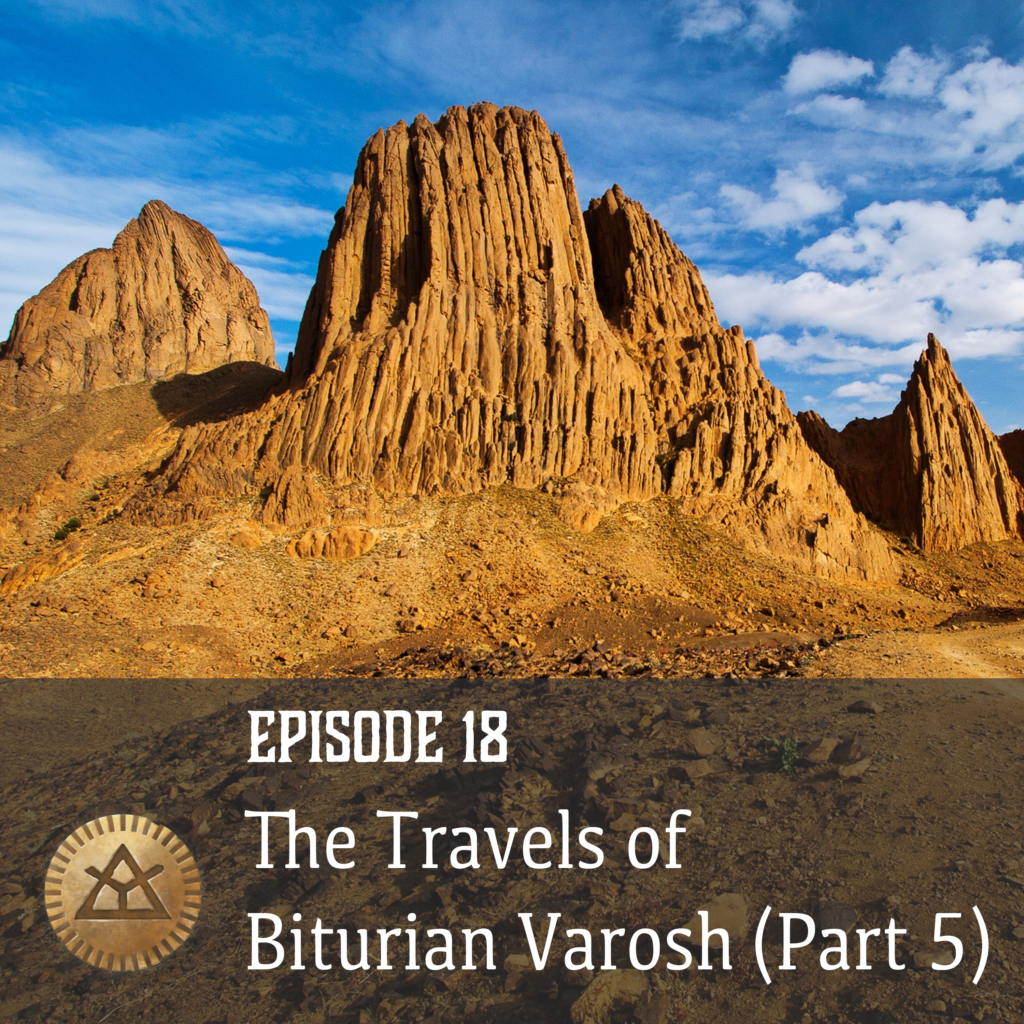
Drew Baker is back on the show to accompany Ludovic on the last leg of Biturian Varosh’s travels. Sadly Joerg could not make it this time, and stayed behind in Pavis to rest.
Introduction
Drew introduces himself and talks a bit about the upcoming book 4 of Duckpac, the last in the series about playing Duck characters in RuneQuest Glorantha. The three first books are available here:
- Duckpac Book 1: Myth, Legends, and Lore
- Duckpac Book 2: Adventurers
- Duckpac Book 3: Redfeather Dreaming
Appropriately for the topic at hand, Drew also wrote “Highways & Byways“, a book on travelling across Dragon Pass. All the other books by Drew can be found here.
Ludovic mentions that the Glorantha Initiation Series has reached the end of its “first season”, so to speak, but that other interviews with newcomers to Glorantha will be scheduled soon.
Drew mentions New Pavis: City on the Edge of Forever, by Ian Thomson and friends, which is a reprint of some of the materials from Ian’s old “Pavis & Big Rubble Companions“, which are hard to find these days.
Main Topic
As this is part 5 in our series on Biturian Varosh, Drew and Ludovic tell the story so far.
You don’t need to be an old grognard from the 1970s to get Cults of Prax: it’s available in Print-on-Demand and PDF from Chaosium.
Kyger Litor
Ludovic tries to bring up the fandom in-joke about Kyger Lytor having had more write-ups than any other cult somehow… (RuneQuest 1st and 2nd editions, Cults of Prax, Trollpak, and then in RQ3’s Gods of Glorantha, Trollpak, and Troll Gods, and I might still be missing some other ones)
Where is this Trolltown that Biturian goes to? It’s not on the Argan Argar Atlas or the Guide to Glorantha, so we speculate a bit (including the fact that it might be just about too small to show up on those maps). We also take a quick tour of the region, which has been developed with new landmarks since Cults of Prax was written.
We take a closer look at the troll population in this settlement, and how trollkin are treated.
Speaking Old Pavic to reduce the Bargain skill… it depends on the language rules in play.
How is Bladesharp called in practice in Glorantha? Biturian probably uses God Learner shorthand or Tradetalk terms. Ludovic mentions Austin Conrad’s head-canon about Tradetalk terminology and its use in non commercial contexts.
We looking at the items that Biturian trades with the trolls… and conclude that the trolls are French. Not the Morokanth, which Drew pictured as French because of the RuneQuest 3 Gloranthan Bestiary cover for some reason:
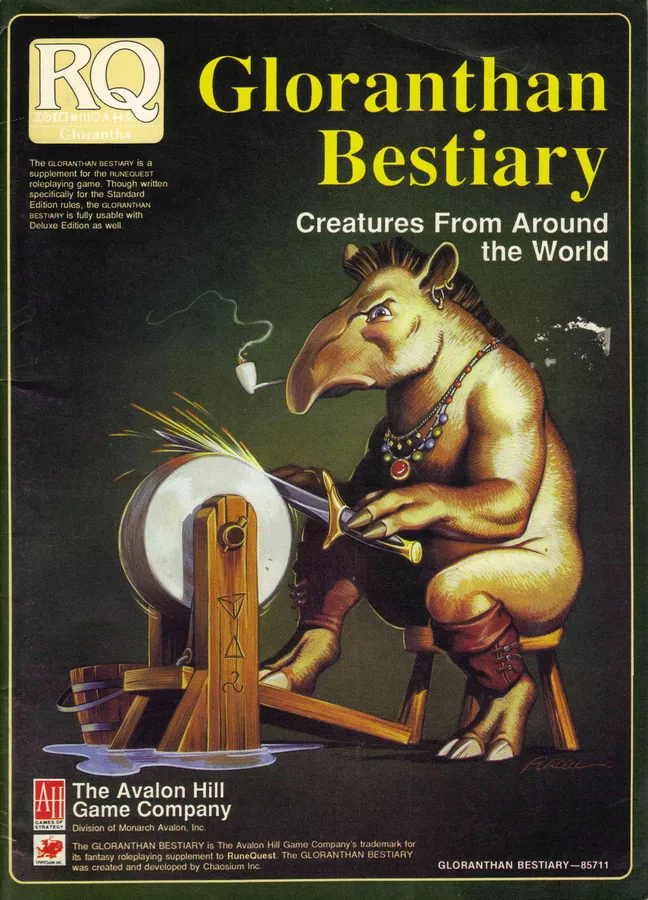
Drew has a theory involving framing trolls for Orlanthi rebel activities.
Next we look at dragon teeth and figure out what size those might be, depending on what kind of teeth they are.
What’s up with animal tails? Ludovic has a “completely bonkers conspiracy theory”. Drew has a much more reasonable one.
The Kyger Lytor priestess is on a heroquest, of course… is everybody heroquesting in this story?
Which ancestor do you get when you trade the Summon Ancestor spell? Drew and Ludovic exchange opinions.
A bunch of trollkin get trampled, which is both awesome and sad.
Zorak Zoran
We revisit the question of whose ancestor spirit shows up when you cast a spell you got from someone else. Ludovic also assumes that Biturian got lucky by not getting a malign ancestor or a weak one.
Biturian is packing good healing magic for RQ2 rules… but healing a severed arm is a lot more accessible in RQG.
Drew thinks about the poor Chalana Arroy (from the last episode) who went on a heroquest with Biturian’s spells inside a Truestone… assuming that things didn’t go very well since she had to cast all these spells for Biturian to get them back by now.
Drew does some forensics on the combat between Biturian’s camp and the trolls, making fun of Biturian’s motivations in the process.
Drew has a problem with Rurik, who is (of course!) heroquesting. Ludovic makes up a stratagem to get more out of Rurik.
What has made the Zorak Zorani to attack the camp? What is Rurik doing around here? Ludovic and Drew have theories.
We look at Biturian’s use of the Lock spell and, again, have a quick thought for the poor Chalana Arroy adventurer.
The Zorak Zorani blood vengeance is mentioned, along with the tricky prospect of having to explain to berserker trolls that Biturian didn’t technically kill any troll.
Aldrya
We reach the Redwood Forest, which was unnamed back in Cults of Prax, but is featured in the Argan Argar Atlas maps.
Drew spots an error in the dates, which is also present in the Cults Compendium. Ludovic mentions some typos in the new PDF version of Cults of Prax, possibly from OCR gone wrong.
Ludovic talks about the bow seeds and how cool it is that Aldryami grow their tools. We actually have an episode on the Aldryami and everything else that’s cool about them.
Drew goes over the increasing foreshadowing of Morak’s true nature by way of the Aldrya cult’s limitation for lay members, which indicates that Morak is most likely a Beastfolk.
It is implied that Biturian and Norayeep eloped, possibly back at the Pairing Stones.
The Beastfolk can be found outside of Beast Valley in elf forests so it makes sense they would be Aldrya lay members at the very least.
Drew has another cynical theory about Biturian’s motivations here, as Morak is taken by the local Minotaurs.
Epilogue
We chat about the travel logistics of Biturian, and his wedding costs.
Drew puts on his “Joerg hat” to mention the “Biturian is on a heroquest” theory, but Ludovic doesn’t buy it… although he is intrigued by the “inception” aspect of a heroquest inside a heroquest.
We take a look at Vareena Coweye, the Bison Rider chieftain’s wife, her role in the wedding, and what magics she could be casting.
Drew goes back to the wedding costs in detail, because, of course, he has crunched the numbers for you! We compare these costs to Biturian’s gifts to the Bison Rider chieftain’s wedding (which we talked about back when the podcast was named “Wind Words”). Ludovic theorizes that the Bison Rider tribe paid for the whole of Biturian and Norayeep’s wedding in return.
Drew thinks that the elves will scam the Bison Riders with their deal on freed elves vs bison tails.
Outro
Drew tells us what became of Biturian in the RQG timeline, and quotes Greg from the letters found in the Stafford House Campaign.
Episode 17: People of Glorantha: The Hsunchen
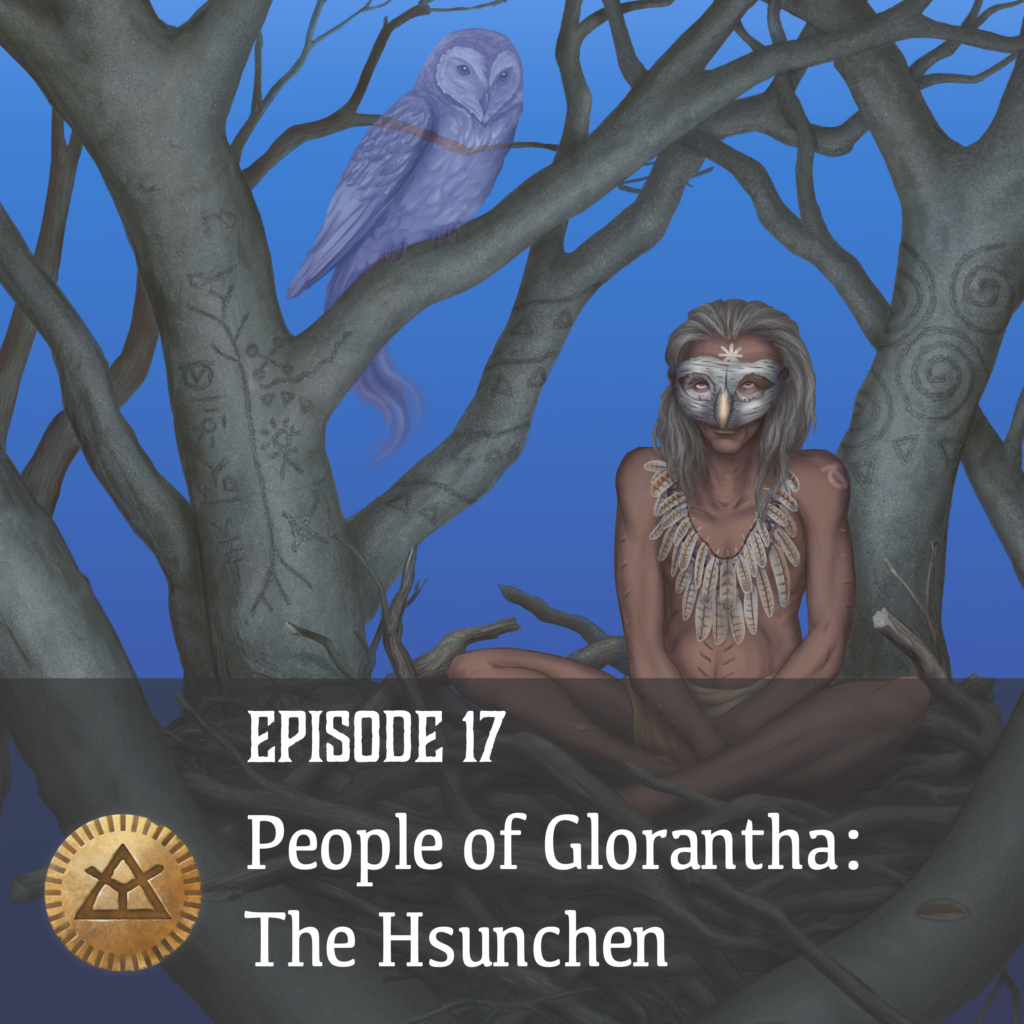
We are back into Gloranthan anthropology (more or less) for this episode, with our guest Brian Duguid, author of Children of Hykim. By virtue of having literally written a book on the subject, Brian is an expert in the Hsunchen, the stone age people who are each associated with a tribal totem animal.
This topic might be rather unfamiliar to newcomers to Glorantha, since the Hsunchen are only mentioned briefly in the core RuneQuest books — mostly in the entry for the Telmori Wolfbrothers in the Glorantha Bestiary.
Joerg wasn’t available for writing these show notes so they are a lot shorter and less detailed than usual.
In this interview, we talk about:
- Brian’s path from playing RuneQuest in his youth, going through a deep-freeze, and coming back to Glorantha in the post HeroQuest / Guide to Glorantha era… and the massive amount of materials that this brought upon fans.
- Who the Hsunchen are, and what the average RuneQuest adventurer might know about them.
- What does a “stone age culture” looks like.
- Who is this Hykim, and what do Hsunchen myths look like.
- Hsunchen magic and the problem with RuneQuest’s Transform Self spells.
- Bringing Hsunchen NPCs into your adventures set in Dragon Pass, and sending your PCs out into Hsunchen lands.
- Portraying Hsunchen NPCs.
- Playing Hsunchen adventurers, and the themes and locations of a Hsunchen campaign.
To learn more about the Hsunchen, the main two sources are:
- The Guide to Glorantha (especially Volume 1): it’s pricey but it’s a giant pile of awesome information, and a great source of ideas for any gamemaster. The PDF version is a lot more affordable, and the one I personally use almost all the time by virtue of being searchable.
- The Children of Hykim (of course): it’s non-canonical (for whatever that’s worth to you), but not only does it give detailed information on many Hsunchen tribes, it also provides rules for creating and playing Hsunchen characters.
Glorantha Initiation: Chris, Lived-in Worlds, and Grounded Campaigns
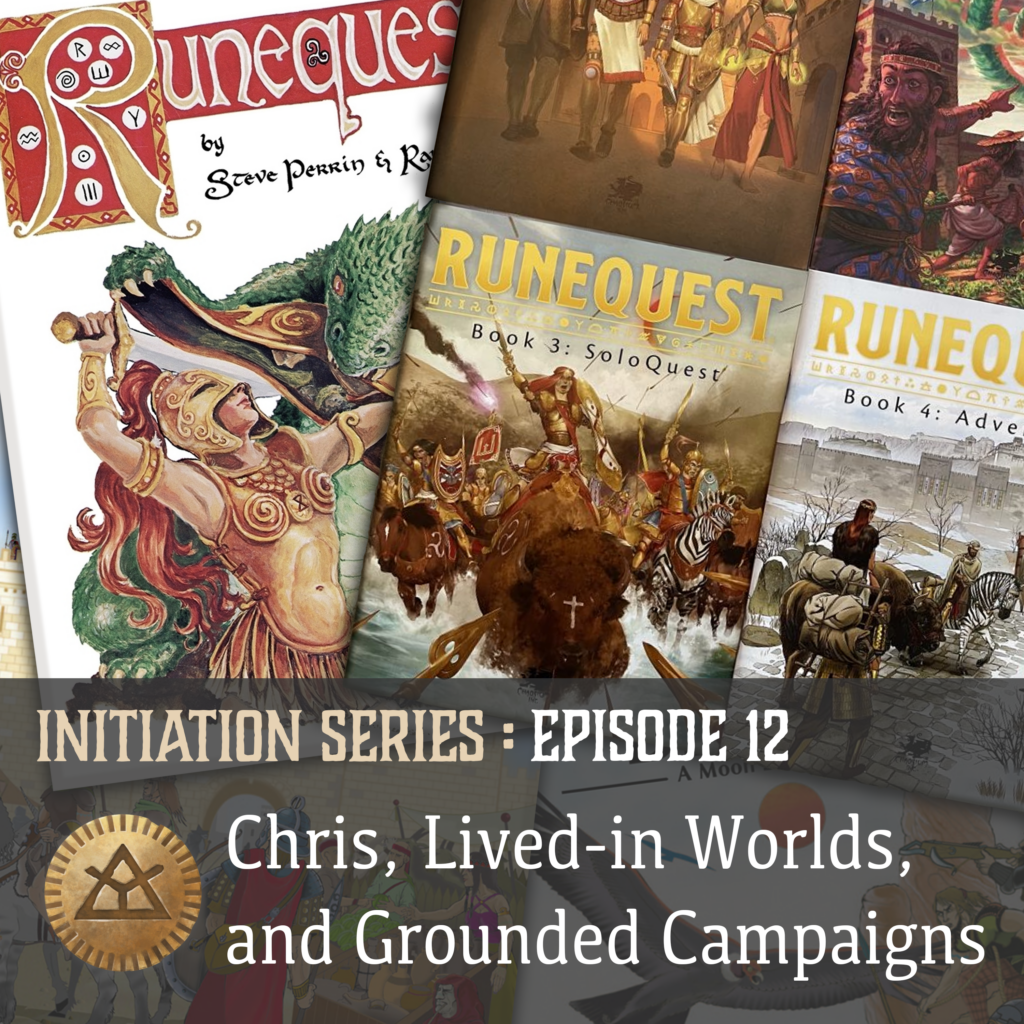
This twelfth episode of the Glorantha Initiation series brings us to the last of the interviews we recorded in the fall of 2021! We are talking to Chris, who discovered RuneQuest 2nd edition just last year and, only a few weeks later, upgraded to RuneQuest: Roleplaying in Glorantha! He doesn’t have an ongoing Gloranthan campaign yet but we talk about his sudden love for the setting, playing soloquests, and his plans for a future game.
Things mentioned in this episode include:
- BECMI red box D&D
- RuneQuest 2nd edition softcover and PDF reprint
- “Glorantha Classics” book collections, bundling RQ2 material
- Grounded and lived-in worlds
- The Mystara setting for D&D (more also here)
- BRP Central forums
- Telling smaller stories, about the simple villages and their farmers and crafters
- RuneQuest Weapons & Equipment sourcebook
- HeroQuest Glorantha (now out of print) and the new version of its narrative system, QuestWorlds
- The Red Cow campaign for HeroQuest Glorantha: The Coming Storm and The Eleven Lights (also out of print)
- Sartar: Kingdom of Heroes for HeroQuest Glorantha (guess what, it’s out of print too)
- Toning down the superheroes with BRP rules
- CSI vs James Bond
- Campaigns are TV shows, one-shots are movies
- Traveller (the latest Mongoose edition) and Traveller (the classic version)
- Mercator, a Traveller hack to play in the Roman Empire (scroll towards the end of the page)
- Men of the Sea, for HeroQuest 1st edition (out of print)
- Simplifying NPC stats by using the same standard numbers
- Tunnels & Trolls (physical and digital)
- RuneQuest Starter Set, with its soloquest playable online
- Traveller Starter Set (out of print, but the digital version is still available)
- “Alone against” series for Call of Cthulhu
- Solo games and journaling games: Thousand Year Old Vampire, The Broken Cast, Secrets of the Vibrant Isle
- Khan of Khans Gloranthan family board game
- Magic World (it seems gone from Chaosium’s website, but still available on DriveThruRPG)
- The D20 OGL
- Risus the Anything RPG
- GhengisCon in Colorado
Episode 16: Ernaldan Adventuresses: Blood, Sex, and Rock’n’Roll
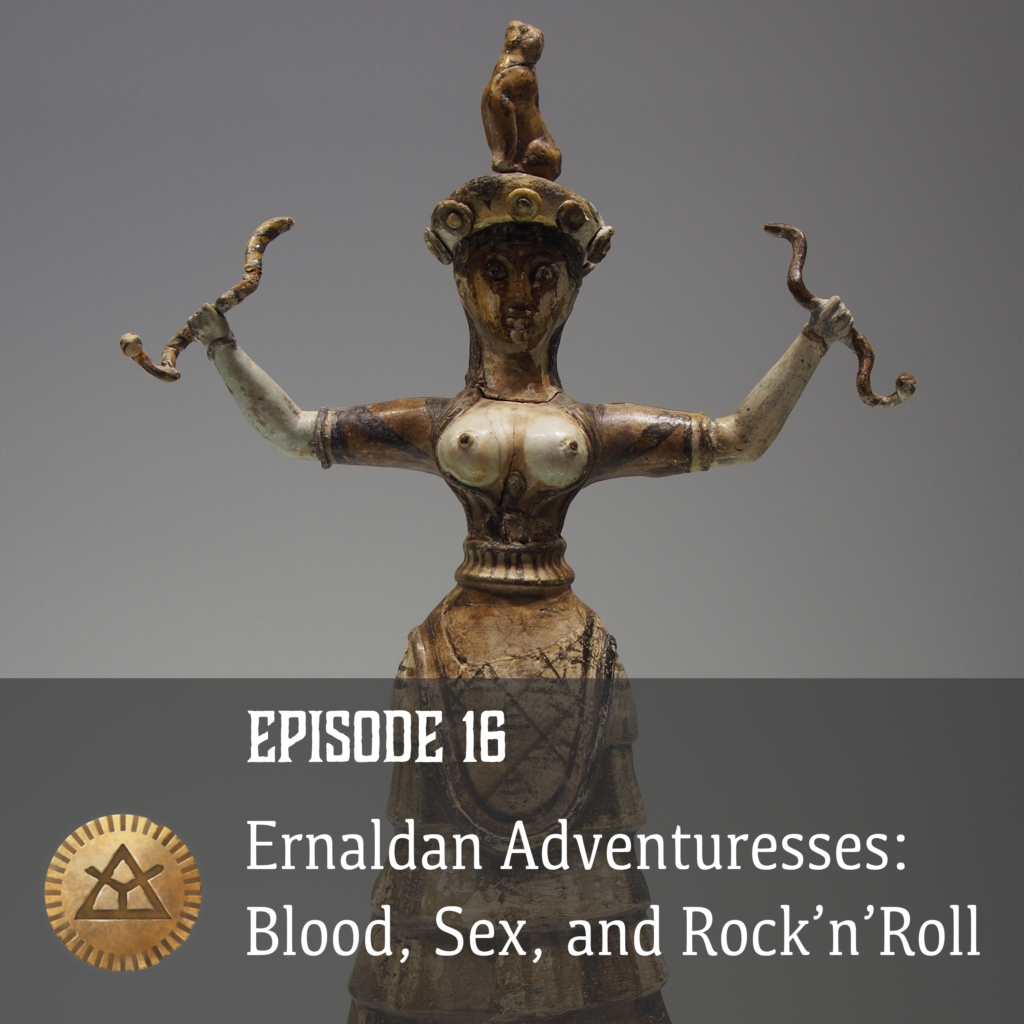
For this episode we welcome two guests: Katrin Dirim and Claudia Loroff.
The Guests
Claudia is part of Jeff’s house campaigns with notable characters like Gina Gravedancer in the White Bull campaign, Yanioth, and the snake-dancer mystic in the HeroQuest Glorantha examples. Claudia is also the author of an upcoming Gloranthan cookbook. It is about 95% done, and is a travel guide accompanying Yanioth and Sorala, from Boldhome via New Pavis to Wintertop.
The difficulty level is kept rather low. There are recipes for starting your own yeast or sourdough, although you can buy finished starters. The travelogue also takes down their experience, like pub crawls, feasting with Argrath, etc. Kitchen hardware includes a fire-pit, a big cauldron (preferable out of enchanted iron), and the usual cutlery.
Katrin is the sole illustrator of the upcoming Prosoaedia, with two pieces in the Starter Set. Katrin is also prominent in the Jonstown Compendium, as in History of Malkionism, Six Paths, some pieces in Corn Dolls, and a major contribution of map-like illustrations for the travelogue narrative and numerous smaller pieces in Martin Helsdon’s upcoming book on ships and sailing around southern Genertela. That book will also feature quite a number of illustrations by Mark Smylie. See links at the bottom of these show notes.
Ludo talks about the Aztec-like style of representations of deities for the Prosopaedia and the pantheon maps.
Main Topic: Ernaldan Adventuresses
Today’s topic is about Ernalda, the Queen of the Gods.
Claudia as the professional Ernalda player does a short presentation of the Earth goddesses.
We learn about the in-house brainstorming sessions between Jeff Richard, Claudia and Neil Robinson about how to make the Cult of Ernalda playable for adventuring. The Cult has been around for a long time – she only finds mention as associate cult in Cults of Prax, but her cult was the first to be published for the third edition of RuneQuest, in booklet 5 (the short introduction to Glorantha) of the deluxe boxed set. This was presented in the same long cult format that was used by both Cults of Prax and Cults of Terror (and in the other RQ2 products with cult descriptions).
Ernalda and the accompanying Dendara would remain the only full cult write up for a few years, followed by Kyger Litor in the Trollpak reprint and the expanded other Troll Gods (and Kyker Litor again) in that box, and the three major Elder Races cults in Elder Secrets: Mostal, Aldrya, and Kyger Litor (yet again). The RQ3 Renaissance brought us updated cults of Yelmalio, the Lightbringers from Cults of Prax, Zola Fel, Cacodemon and the Cults of Terror reprint Lords of Terror.
Claudia advocated a course for playing Ernalda cultists that she dubs as “Blood, Sex and Rock’n Roll”. Ernalda is about sacrifices of animals, with the meat being used for feasts giving back to the communities, and her rites also include quite a bit of sex as a healthy community requires a steady supply of children.
Ernalda is at the heart of the Orlanthi communities. Claudia points out that initiates and even more so God Talkers and Priestesses of Ernalda are welcome in any Orlanthi community.
Claudia stresses the importance of the Charisma spell and how her characters tend to solve a lot of problems using the skills Sing and Dance for ritual support of other players or in worship. For conflicts, there are war songs, battle cries, and war dances, possibly intoxicated on drugs or ritual drinks.
In the new treatment, Ernalda becomes an active deity rather than the damsel in distress.
We go through the other Earth goddesses:
- Babeester Gor is the always angry death-wielding daughter of Ernalda. Fairly easy to play, but possibly a bit one-dimensional.
- Maran Gor , the Earth Shaker goddess, who still remains a challenge for an interesting character concept.
- Ty Kora Tek, which lets you play a necromancer in Glorantha. Ty Kora Tek is the twin sister of Asrelia, only mentioned as an associate cult in the core rules. She is the caretaker of the souls of the dead, an Underworld goddess who welcomes the dead as they let go of their mundane lives and rest in her halls waiting to be reborn. This makes her an important part of the cycle of life. Ty Kora Tek provides a good afterlife for the dead, as long as their descendants commemorate them with sacrifices and rites. Her role starts with the proper burials of the dead, putting their ghosts to rest, etc.
Claudia points out one problem with all the Earth pantheon cults – all the cool spells are usually rune magic. While you need to be careful about spending your rune points, the spells tend to be kick-ass – Claudia riffs off about Earth elementals, Command Ghost, and others.
Ludo addresses the gender (or sex) limitations of many of these Earth goddesses, at least at the top ranks in the hierarchy.
Katrin re-tells the Making of the Storm Tribe and how Ernalda manages and manipulates all those disorganized and selfish Storm deities, giving them a common foe to unite against. At the end of these events, Orlanth asks his wife how the foe knew about where the meeting was to take place, and Ernalda tells him not to worry about that. Which Orlanth wisely does.
Ludo asks about the relationship between Ernalda and Dendara, and Katrin points out that Dendara (who is mainly the wife of Yelm) is mainly the goddess of wives, whereas Ernalda is the Queen of the Gods and the representation of the Earth without which nothing works.
Ludo points towards Esrolia as the center of her cult’s power, but Claudia stresses her importance already in the more male-cult dominated Sartar. In Nochet, she is the absolute ruler, and can dictate what to do, while in Dragon Pass she has to be a bit more roundabout, reminding kings as well as ordinary people that her blessings come with a cost (sacrifice and worship), and that she can become a bit ugly if neglected.
Ludo asks about the importance to have those female avenger cults like Babeester Gor or Maran when Ernalda has all those husband protector cults she can throw into the breach. Claudia reminds us about the scarcity of worshippers of these cults in Sartar. Esrolia may see a slightly higher proportion, or at least significantly higher absolute numbers because of its much larger population.
Maran Gor has her special temple in the Wintertop area, the Shaker’s Temple. Maran is the goddess of the wrathful earth and of earthquakes, with her worship mainly as propitiation to keep her from destroying or disrupting everything. Babeester is the Earth avenger, which is a rather narrow field.
Babeester Gor is also the lost daughter, standing for a lot of things that Ernalda doesn’t do or encompass. Babeester is angry most of the time, something that Ernalda rarely is.
Katrin gives an example how to make worshippers of Babeester Gor less boring or stereotypical, by stressing the investigative aspect of chasing down offenders. Her hot pursuit of such criminals makes her a possible choice for playing a detective. Ludo talks about “Sherlock Holmes with an axe”.
Ludo compares Babeester Gor’s birth to parents losing their temper, and only to regret the outburst five minutes later.
Claudia emphasizes that roleplaying opportunities can be made where others don’t see them. She talks about planning a role-playing session around a funeral feast with mysterious deaths, in the style of Agatha Christie.
Jörg sums up some of the ideas as having Babeester Gor as a James Bond-like provocateur with a license to kill where husband cults may balk at the prospect.
Ludo asks about how to attract more female players to Glorantha, and whether the cult of Ernalda is the vehicle to do that.
Claudia talks about the male and female archetypes available in RuneQuest and Glorantha. She mentions the considerable initial hurdle to overcome when entering the setting, and how having some of these gender limitations may help a player new to Glorantha to identify with the character.
Once you have made your entry into the setting, you can play around with breaking the expectations of archetypes and requirements.
Claudia tells how almost dying in childbirth gave her a different perspective on motherhood and parenthood in the setting.
Katrin agrees that while some aspects of Bronze Age life and how Glorantha works may appear stark and disturbing, dealing with those can make the experience of the setting richer.
Claudia recounts how she played in the Esrolian campaign around (future) queen Samastina, and how the party made sure that the character got pregnant from an important political marriage, and how Claudia’s Ernaldan priestess helped make sure that she became very pregnant, actually resulting in twins being born. There also were processions where the pregnant queen would emphasize her pregnant belly to the onlookers with gold dust, etc.
On a less exalted level, having a big feast in the village when asking for the blessings of the gods, slaughtering the sacrificial animals and making good dishes out of the meat.
With Ty Kora Tek, it is surprising how many ghosts you can control or lay to rest, gaining quite a bit of oomph out of that.
It is OK to be relegated to a support role in battle situations when you lead the social interactions, which can take up more of the game than actual combat.
Ludo brings up the political game, with intrigue, creating a social as well as an information or even spy network, with lots of minions and followers.
Claudia points out that you will find an Ernaldan shrine or better in even the tiniest village, which allows players of Ernalda cultists to have some sway or, at least, contacts anywhere they go.
Jörg points out that Ernalda is the wedding planner of basically everyone, and the networks of exogamous marriages will give you a female kinswoman in every other tribe.
Claudia emphasizes the role of Ernalda as the wise woman, allowing a player to inject her ideas as divine wisdom into the community.
Katrin talks about that little Ernaldan babooshka you will find in every village without whom everything would cease to function.
Ludo laments that RuneQuest combat can hog a lot of game time, making it hard to keep non-combat type characters engaged in such segments.
Claudia suggests being creative about skills and their application, like challenging Jar-eel using her dance skill, hindering her enough to be able to attain a heroquest station objective despite her opposition. This is well beyond the normal scope of the skill, but in the situation (in a magically different environment) it gave her character a handle on the situation. (But then, that is more of a Questworlds mindset of how to use interestingly named skills.)
The rules system is a guidance, not something set in stone.
Claudia also advocates to leave the healing to characters other than the Earth worshippers. We also learn about why Yanioth has a beast rune of 75%.
Katrin points out that there are better things to do than “I hit ‘em with my sword” for three hours. In one of her games, a Chalana Arroy cultist had their snake familiar entangle a combatant’s legs to take them out without actual bloodshed.
Claudia enthuses about Command Swine when facing Tusk Riders.
Jörg points out that all those monstrous swine were ultimately sent against the people of the region as punishment for neglecting the goddess, showing the ugly side of the cult.
Claudia admits that her earth worshippers tend to have some skill with axe and shield, but that is often more fun to stand back and use your skills in a more creative way. Rather than swinging a sharp implement for hours, she prefers supporting the fighters, cheer-leading them or raising the onlookers as a support force to overwhelm the opposition.
Ludo compares the role of Ernalda as a support character with multi-player video games. Claudia points out that while that may be the case in combat situations, the Ernalda player will often take the spotlight in social interaction, possibly having been the matchmaker for a local, being the first to get access to dirty secrets etc., likely side-lining the combat types.
“There is always another way”: Ludo asks about situations where an Ernaldan character would have spoiled a perfectly fine opportunity to have a battle.
Claudia recalls one game that had been very battle-heavy, to the extent that the entire party decided it was too dangerous, leaving the challenge unanswered. That made for a very short game as the GM had prepared mainly for that conflict.
Other GMs including Jeff experience again and again how a game unfolds very differently from what they prepared, often because of group dynamics, so that may actually be “the other way”.
Sometimes this can come about from real world influences. Katrin reminiscences about a case where a player had to leave abroad for two (weekly) sessions, returning to come into the chaotic aftermath of an attack on their community, gracing the other players and their characters with a scathing “I leave you alone for two weeks, and that’s what happens!”
Heroquesting for and with Ernalda and female archetypes: Claudia gives us a small peek into the playtesting of the new heroquesting rules, using Greg Stafford’s old maps of the hero plane (quite likely something like the “spiral map” that is shown in Arcane Lore) which had aspects of the earth pantheon. Meeting Aldryami, stone trees, doing “not very kids-appropriate” adult interaction, playing with the archetypes and the runes and passions. In the end, runes, passions and rune spells are the major elements that you use in the hero plane rather than mundane skills or average spirit magics.
Carrying children into battle? Putting the peace into a battle scene? Or rather putting Darwinism into action, survival of the fittest? Claudia retorts that Ernalda likes (watching) a fight, then marrying the victor. “Marrying for a year and a day is fine, it’s enough.”
Ernalda has very weird children? “They are all beautiful”. Then Katrin mentions how difficult it was in the catalogue of the gods to fit all of Ernalda’s children into the diagram.
Ludo asks how pregnancies and having kids works out inside the game. Claudia reports how some aspects of real life arrangements getting the grandmother to look after the children crept into the game once, still being easier in game than it would be in real life.
“All the interesting magic is rune magic”. Does Ernalda have a big advantage in that regard? Claudia advocates to go for the throat, dropping the rune spells for good effect, and enjoying failure when it happens as those moments can be the most memorable (and the most fun, at least in hindsight).
Claudia’s favourite spells for earth worshippers:
- Earth Elemental
- Command Ghost (slay first, interrogate later)
- Inviolable
- Charisma
How does use of Charisma work out in the game? Ludo points out that the skill boost is likely minimal, but Claudia answers that you don’t need to roll skills, and just play to the story.
Katrin reminds that RuneQuest is not a game of slow attrition, but of few periods of high tension and glossed over dull everyday life.
Claudia also confesses that the GM may award the players regaining the rune points as a reward.
Jörg asks how to make getting back the rune points fun in the game, and Katrin’s suggestion of sacrifice and rites gets appropriated by Claudia’s “a roll in the field”, which leads to the question how much of a veil you drop onto the resulting sex and drugs and rock’n roll. Unsurprisingly, it depends on the people you play with.
In conclusion, Claudia talks about her two images of Ernalda – one is the voluptuous, broad-hipped fertility goddess, the other are the Minoan snake-dancers. Katrin confirms that those curves are a necessary feature when she is drawing Earth characters.
And with that, we conclude our episode.
References
While quite a few of the projects mentioned above still need to get published, here is a list of works already that feature Katrin’s stunning art prominently:
- The History of Malkionism by Nick Brooke, illuminated by Katrin Dirim, with extensive bonus material on the art direction
- The Six Paths, a sourcebook on gender among the Heortlings, by Edan Jones, art by Katrin Dirim
You can see Claudia play her Ty Kora Tek necromancer, Gina Gravedancer, in the White Bull actual play series.
Credits
The intro music is “The Warbird” by Try-Tachion. Other music includes “Cinder and Smoke” and “Skyspeak“, along with audio from the FreeSound library.
Glorantha Initiation: Juan, and the Most Unlikely Glorantha Book to Start With
In episode 11 of our Initiation Series, we chat with Juan Ochoa, an illustrator that fell in love with Glorantha with the most unlikely book you could ever start with. And he wishes he had started with King of Sartar instead!
Other things we chat about in this episode:
- The one RPG shop in Columbia
- Having a player buy more books than the gamemaster
- Running Glorantha with the crunch of RuneQuest, or with FATE, or with Mythras
- Playing in the west to avoid the “Argrath Cinematic Universe”
- How to deal with diverging from the metaplot
- Tekumel and Middle Earth as very linguistically developed settings
- The Hall of Blue Illumination, a podcast on Tekumel
- Note: this interview was recorded before “the news” about MAR Barker… if you don’t know what I’m talking about, it won’t take you long to find out
Where to find Juan’s art:
Credits
The intro music is “Dancing Tiger” by Damscray. The outro music is “Islam Dream” by Serge Quadrado. Other audio is from the FreeSound library.
Episode 15: People of Glorantha: The Tusk Riders
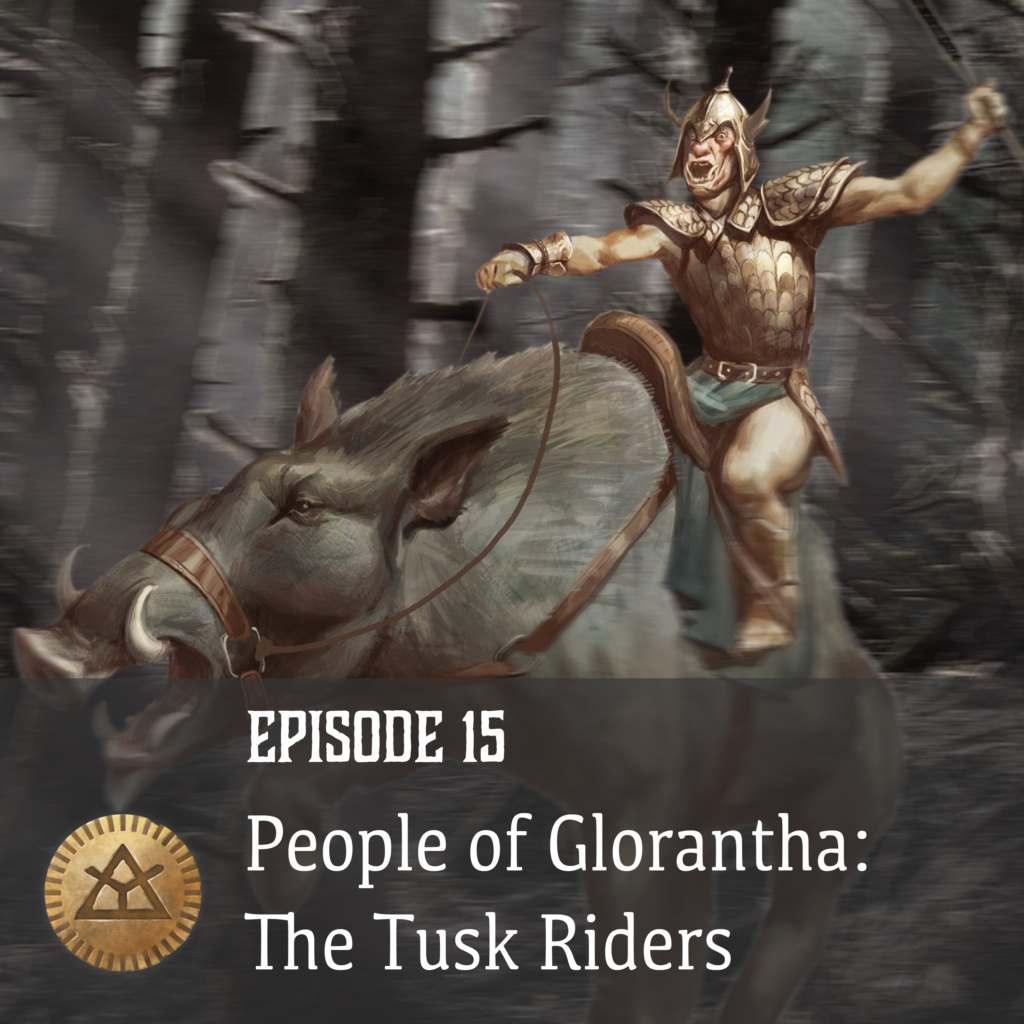
Our guest for this episode is Dom Twist of the Beer With Teeth writers’ (and gamers’) collective, known for his contributions both in a couple of Chaosium publications (Pegasus Plateau‘s Crimson Petals, and Weapon and Equipment Guide) and for various Jonstown Compendium publications by Beer With Teeth (including Dregs of Clearwine, Cups of Clearwine, Stone and Bone, and Rocks Fall).
Dom is another returnee to the podcast, debuting in episode 4: Writing Adventures in Glorantha.
This episode was recorded in early August 2022.
News
More up to date updates are available from Ludo’s weekly Journal of Runic Studies newsletter.
The Weapons & Equipment Guide made its debut in hardcover at GenCon after a previous PDF release late in 2021. Dom points out that this is going to be the last publication with a PDF release before the printed product. Ludo refers to a statement of Rick Meins reported (and commented) in issue 59 of the Journal of Runic Studies.
Ludo reports on the dates for the next Chaosium Con, which will happen April 13 to 16, again in Ann Arbor, Michigan.
Dom talks about his plans to go to Continuum 2023 (first time it changed to annual turnover) and Dragoncon.
Children of Hykim by Brian Duguid is out on Jonstown Compendium.
We discuss the rune point cost of turning into a totemic beast.
Dom is enthusiastic about the quantity and quality of the Jonstown Compendium and the RuneQuest: Roleplaying in Glorantha releases.
The first volume of Duckpac was out at the time of recording, but by now there are already three of the announced four volumes available.
Chaosium interview with Jeff Richard on game balance.
Main Topic (“It is boaring”)
Ludo presents Dom as the person referred to us as an expert on these guys.
We assume that listeners have at least the RuneQuest rulebook and Bestiary, but Ludo does a 20 seconds presentation of the Tusk Riders
Public Knowledge
What would the average Gloranthan know about the Tusk Riders?
Jörg points out the chance of the adventurers parents having participated in the Boar Hunt of 1606, and Ludo mentions the one of 1622 that adventurers could have participated in themselves.
Dom states that in the eyes of the average Gloranthan of the region, the Tusk Riders are evil: they raid, not just for food and loot, they also want to capture and torture people for their magic.
Dom explains that each Tusk Rider is paired with one of these giant Tusker boars, pretty clever beasts totally dedicated to their riders.
Dom compares them to Sir Ethilrist’s Black Horse cavalry.
The Tusk Riders are heavy cavalry who move unimpeded through forests
We talk about gaining the alliance of a large number of Tusk Riders by sacrificing an entire unit of militia as sacrifices to the Bloody Tusk.
Jörg points out that they breed like pigs, too, replenishing their numbers within very few years.
Ludo talks about what happens to their captives, whose spirits remain enslaved after being tortured to death. We speculate how much of the details of this are known to their foes, and how much of the in-world lore about the Tusk Riders is factual and how much is hear-say or superstition.
We agree that the Tusk Riders are bad to the bone, and thus an excellent foe or boogeyman to throw at adventurers, whether in person or whether just as rumours.
Publication History
Ludo brings up their exonym “Orcs on Porks”, at least among roleplayers.
Dom reminisces about orcs in RuneQuest and other systems.
Jörg boars with the publication history, beginning with RuneQuest 1st edition which already had stats for most of the creatures mentioned in White Bear and Red Moon/Dragon Pass and Nomad Gods.
In White Bear & Red Moon (WBRM) they already had that alliance requirement of sacrificing a unit of soldiers, and a couple of other traits later realized in their expanded descriptions.
Ludo points out that there were Tusk Riders that could be hired as mercenaries or used as adversaries in Snake Pipe Hollow, one of the early scenarios for RuneQuest.
Dom mentions the Judges Guild RuneQuest scenario Broken Tree Inn, located near Snake Pipe Hollow and thus near the Stinking Forest, which features them too.
The Tusk Riders get a fuller description in 1981’s Borderlands campaign, with a full page on their culture and history, and as antagonists in one of the seven scenarios.
Dom relates his recent experiences encountering Tusk Riders as opponents for a player character of his, in the Borderlands campaign, pointing out the enmity between his Daka Fal shaman and all the Tusk Riders stand for.
Jörg points out that the text passages in the earlier publications often were re-used verbatim in later publications (WBRM; Wyrm’s Footnotes 3 in the Guide to Glorantha, the NPCs of Borderlands in HeroQuest’s Pavis: Gateway to Adventure, RQ3 Elder Secrets in the RQG Bestiary), which on one hand is nice that the newer material contains most of the information the older publications had, but limits the actual amount of text written on the Tusk Riders.
Ludo speculates about why the Ivory Plinth poem gets recycled again and again (Wyrm’s Footnotes #3, Wyrm’s Footprints (the “Best of Wyrm’s Footnotes” by Reaching Moon Megacorp, under an Issaries license, mostly with material that went into the Sourcebook), the Guide to rGlorantha, and the RuneQuest: Roleplaying in Glorantha Bestiary). Jörg muses that the poem makes fleeting mention of so many places and events that were never explained that this is the only way to preserve them. Dom points out that the poem was created by Greg Stafford, and that Greg himself was not a stickler for remaining absolutely true to what he produced years ago, unlike some other contemporary brand.
Troll Pak riffs on the half-troll connection and introduces their role in the troll civil war during the Inhuman occupation.
King of Sartar expands on that conflict, and The Smoking Ruins scenario book further expands on this.
Coming into Glorantha with the current RuneQuest rules, already the first scenario in the GM Screen pack features them.
Dom points out that the presence of Tusk Riders cannot be ignored by responsible leaders or problem solvers, as they are certainly going to come and take captives and plunder, if they haven’t already done so and you need to free their victims, or at least release their spirits.
Theory Crafting and Fake History
Ludo leads into this by pointing out that we don’t know the canonical situation, and that the Tusk Riders themselves when talking about their past are known as liars making impossible boasts.
Dom mentions the human hero Aram-ya-Udram, a human hero who boumd a Darkness Spirit to him. After the Dark Night Ermaöda sent the God-Pig Gouger to exact vengeance for improper worship or even blasphemy.
Here’s a work-in-progress picture of Aram by Loic Muzy for the Cults of Glorantha book:
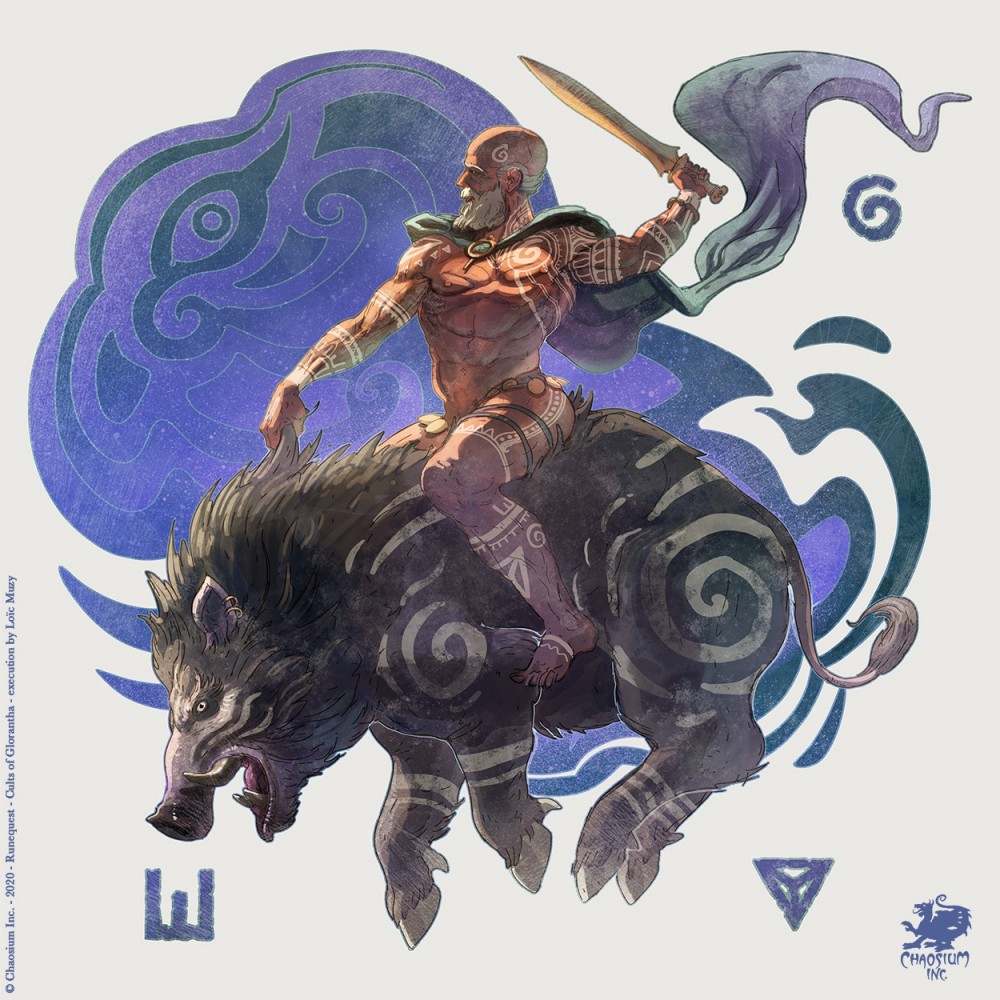
Dom speculates that already Aram heroquested to turn his people into the half-trolls and worshippers of the Darkness demon.
Dom teases a follow-up scenario for Defending Apple Lane while talking about Red-Eye, the divine /demon pig residing in or around Pig Hollow in the Colymar Wilds.
Ludo spoilers Defending Apple Lane (but you’ll have to listen to the podcast to hear this)
Jörg protests that Dom is maligning good old Aram-ya-Udram, who was after all the human representative on the World Council of Friends in the first century after the Dawn, and a civilized man.
Ludo offers a (in his words) half-assed theory about the Aramites, Tusker-riding humans living in the region of what would become the Ivory Plinth, an ancient ziggurat temple in the Stinking Forest (then still known as the Tallseed Forest).
Then some people disrespected the Earth, becoming complacent stopping proper worship of Ernalda, getting punished by sending Gouger to take revenge. Aram tricks Gouger, using his Darkness Demon, slays the God Pig and sets up his tusks at the Ivory Plinth.
Ludo theorizes that Aram’s people lost their agriculture, becoming hunter-gatherers and mercenaries riding the Tusker boars that could be tamed thanks to Aram’s feat slaying Gouger.
Later, during the EWF, the human Tusk Riders approached some Mad Scientist working in the EWF to make them more powerful
Ludo riffs on the Tusk Rider claim that once upon a time they had 12 kings each ruling their kingdom, and suggests that the experimentators had 12 experimental specimen of Aramite stock who somehow escaped the experimentators, taking bloody revenge (to loan from the Akira anime/manga) and starting the half-troll Tusk Riders we know today.
We digress shortly on the Remakers – Ludo suggests gene-splicing, Joerg advocates classical stitch-up chimeras like Frankenstein’s Monster or Doctor Moreau’s Island.
Ludo points out that according to one source, the Darkness spirt bound by Aram and used to slay Gouger disappeared into a void of Chaos, and that bringing back that spirit as their God of the Bloody Tusk may have corrupted them.
Dom thinks that that corruption has more of a Chaos feel and points out that there is a know Void of Chaos right on the edge of the Stinking Forest, below Snake Pipe Hollow. Dom points out that we know for a fact that in the EWF there were these experiments which resulted in the Beastmen, but thtat there were other ways the Beastmen came to be, and with the heroquesting going on in those times everything could be true to some extent, or made to tbe true.
Ludo wants his players to stumble on an old experimental complex of the EWF experimentators, with numbered holding cells destroyed, apparently from within, and gruesome victims of that escape fossilized in some way or written records made by the experimentators.
Jörg points out that the list of Dawn Survival Sites in the Guide (or History of the Heortling Peoples) also mentions a Tusker-riding nobility among the Harandings at Marlothenyi, in northern Esrolia.
Those Harandings feature in the original Lawstaff Quest (first presented in King of Sartar and used as a scenario in the Orlmarth campaign in HeoQuest’s Sartar: Kingdom of Heroes), where their king Harand Boardick pawns a son to his troll ally Jago Zaramzil to gain their support in his attack on Arrowtop Mountain.
They also lived right next to the Entruli of Maniria and Slontos, descendants of the Pig Mother, and possibly the people Harand’s mother came from.
Jeff put up some stuff on the Well of Daliath that indicates that Aram was helping Lalmor of the Vathmai (an Entruli clan or tribe living in or near Esrolia) bring the Lightbringer Ways to the Entruli.
The Entruli king had done some rather unspeakable things which caused his city to sink below the Mournsea, and some other cities to be destroyed. Jörg speculates that this was the transgression against Ernalda which caused Gouger to rampage against those cities, continuing to destroy human habitations as the God Pig moved east into Esrolia and beyond into Dragon Pass. Jörg speculates that Aram’s companions hunting down the God Pig might have been a warband of Haranding nobles who followed the pig all the way to the Stinking Forest, and then settling down there without any gardeners of farmers, making a living as mercenaries, hunters and gatherers.
The timetable is a bit messed up, but that isn’t that unusual in Gloranthan history.
A literal reading of the Dawn Sites documents suggests that Gougers tusks were already in place at the Dawn, which means that Aram slaying the God Pig would have happened in the Silver Age, or even earlier. But then, Ernalda went to sleep some time around the arrival of the Chaos Horde to fool Nontraya and his hordes of the Dead and didn’t really have the means to send an avenging pig or complaining of not receiving the correct worship until after the Dawn.
Jorg boaringly goes on to list the named leaders of the boar riders throughout history.
There was the leader of the center of the Orlanthi contingent at the Battle of Night And Day, Old Swine Dezar, leading 150 Tusker-riding warriors into the battle.
There was the Great Living Hero of the EWF in the Machine Wars, Varnakol the Mangler, a boar rider who had tusks and two named axes, whose enemies preferred death by his axes to being captured by him.
And finally there was Karastrand Half Troll, “leader of the boar-riding trolls of the Rockwood Mountains”, during the Troll Civil War in the Inhuman Occupation. Karastand claimed imperial human ancestry-
Jörg has the wild theory that the son given up by Harand Boardick in the Lawstaff Saga got adopted and reborn as a troll and fathered a lineage of boar-rider trolls in the Rockwood Mountains, and that that lineage and the (already EWF-modified) Aramites around the Ivory Plinth crossbred, making that half-troll ancestry true at least for this leader and his siblings, possibly as an adoption ritual similar tto that Pain Centaur spiel that Ironhoof used to adopt the Pure Horse Folk survivors of the Battle of Alavan Argay to found the Grazeland pony breeders.
Ludo wonders how this could be brought into a game (where Jörg assumed that any Sage worth their ink and/or facial hair would happily collect such information).
Making Games More Boaring
Next we start talking about using Tusk Riders in games.
Dom suggests that the Tusk Rider ritual to turn captives into one of their kind is not limited to humans but that it also works on trolls.
Jörg mentions the thread on BRP Central on Tusk Rider adoption. Dom points out the Tusk Rider adoption story-line in the xomputer/mobile game King of Dragon Pass, and using that in your own campaign.
Dom quips that they are sort of the Hells Angels of Gloranha, coming to beat people up, take their stuff, riding hogs.
The BRP Central thread had a suggestion that someone might quest to return the Tusk Riders to their less unpleasant human form, although we wonder who would go for that trouble.
Dom poins out the Sons of Anarchy TV show which is about a criminal biker gang, and how that could be used for some Tusk Rider plots, and that the Tusk Riders should be intelligent and clever opponents.
As they have low charisma, the leaders of a warband will lead by intimidating their followers, and by providing results.
Ludo points out how the Tusk Rider antagonists get decent tactics, acting intelligently. Dom suggests that they wish to harvest the most magical of their opponents, and that they lure them into their kind of territory by abducting dependents.
Dom points out how binding enemies’ spirits creates a magic economy for the Tusk Riders that forees them to capture other people to become powerful, which they need to survive in Tusk Rider gangs, especially as leaders. All that stolen magic makes them strong and unpredictable magical foes.
Dom describes how hit and run tactics may be used to make their opponents cast expensive spells, only to sit those out until they expire, and then hit again. They have the magic of their bound spirits in severed hands or tails to power their spells, and may use their Tusker as an allied spirit, too.
For capturing foes, they may use lassos or similar, then dragging their victims through the forests which cannot be healthy.
Ludo asks about how to stage the hit-and-run using RQG rules (like e.g. the chase rules), or whether to handwave (which is how Dom prefers to run such things, more narratively). Dom points out how the Tusk Riders are vulnerable to missile fire when doing that, as their major tactical flaw.
Ludo describes how he had the characters of his “we all play children” campaign happen on the site of a Tusk Rider massacre, and then catch up with exhausted Tusk Rider survivors of that combat, playing them dumb to match the abilities of the underage characters.
Dom describes how he ran a sequel to Defending Apple Lane where the sister of the leader of the first attack (who lost quite a few minions, and leadership) comes not so much to take vengeance but to harvest those interesting magics of the player heroes, preparing ambushes and traps for luring them into pursuit after capturing some dependents in the hamlet.
Ludo explores where Tusk Riders typically set up their bases.
Dom suggests that a Thane of Apple Lane who successfully dealt with Tusk Riders and possibly Red-eye multiple times may become a status target for ambitious Tusk Rider leaders or wannabes.
Speaking of typical boons earned by player characters Im the official adventures, Jörg asks how Dom would handle a conflict between hippogriff-riding heroes and Tusk Riders. “Into the woods” would be the Tusk Rider reaction to such opponents.
Dom goes on to describe the Stinking Forest as a war zone where Tusk Riders, trolls, elves, dwarfs and giant spiders may slug it out, allowing any playee heroes to experience crossfire situations.
Ludo talks about how there might be secret shrines to the Cult of the Bloody Tusk very close to area deemed safe by the player heroes, with pilgrimages bringing victims there. Jörg suggests to use the Broken Tower as a possible holy site for Tusk Riders, sparing the GM a lot of prep time.
Ludo talks about somewhat “friendlier” Tusk Rider neighbors that will take ransom payments, or engage in clandestine trading, which Dom brings back to the plot hooks that can be lifted from Sons of Anarchy.
Dom mentions the problems that might arise when a party healer (possibly the NPC follower) gets taken by Tusk Riders. Do you want to face Tusk Riders with powerful healing magic, or the Sleep spell? Tusk Riders are one of the few non-chaotic Gloranthan foes who would have no qualms killing Chalana Arroy healers.
Jörg brings up the possibility of using the Tusk Riders as a playable race. We talk about how to play characters who are bound to torture people to keep up magically, and how this needs buy-in by the players, and careful off-screen handling of the unpleasantness.
Dom mentions the scenario that a gang of Tusk Riders who may have plagued you the past few seasons offering their services as mercenaries
Dom spiced up his Tusk Rider threat by having them carry newly minted Lunar Tarshite coins, to trigger player character paranoia. Dom expands how an able Lunar commander might send out a special operations team (effectively a player character party managed by the GM) to stir up feuds and banditry in the rebelling province of Sartar, with Tusk Riders a good choice to spread terror and distraction.
As time runs out, Jörg thinks that we have boared people enough, and Ludo hopes we made people loathe / love them as much as we do.
Credits
Cover image by Cory Trego-Erdner.
The intro music is “The Warbird” by Try-Tachion. Other music includes “Cinder and Smoke“, “Skyspeak“, “Stomp“, and “Sjaman’s Dream: Fire“, along with audio from the FreeSound library.
Glorantha Initiation: Chris, the Weird Magic, and the Importance of References
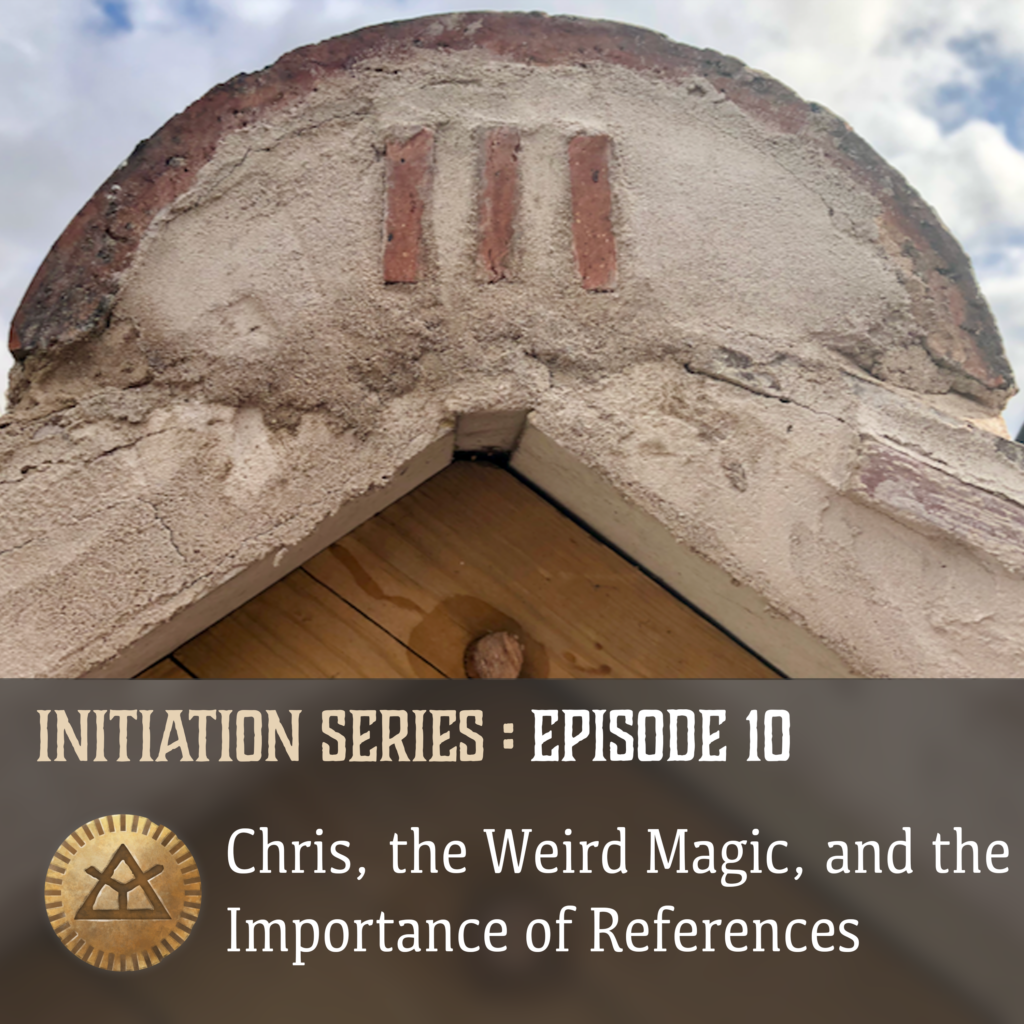
Episode 10 of the Glorantha Initiation Series is with Chris Webb, who played RuneQuest 2nd edition once in the early 1980s, and gave up after saving Gringle’s Pawnshop from baboons. Him and his friends played without cults or magic because it was too weird and obscure.
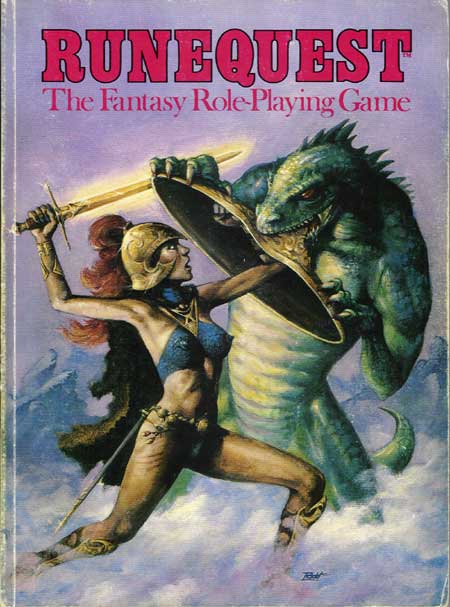
This was with the British version of RuneQuest, which was a boxed set containing Apple Lane and a few other supplements in addition to the rulebook.

Much later, Chris was brought into a game of RuneQuest Glorantha by his younger brother Jonathan Webb, which you might know as the main author of the excellent Praxian police procedural campaign Sandheart.
During this episode, we discuss the following various things:
- The importance for a fantasy setting to have references players can fall back on
- Cults as football teams
- Playing outcasts, children, or other characters that “allow” players to not know much about the campaign’s setting
- The “house version” of the RuneQuest rules, and the value of being introduced to a game by someone who already knows how to play it
- The difficulty of reading and using the RuneQuest Glorantha rulebook
- Griselda’s tales and White Dwarf magazine
- The most powerful spell in RuneQuest!
- The Grogmeet online convention and the “Grogpod”, also known as The Grognard Files
- The Good Friends of Jackson Elias podcast
- Rules light RPGs and emergent settings: Troika!, Into the Odd, Ultraviolet Grasslands, Mausritter
And finally, Chris talks about putting Runes on a roof… well it actually happened recently!
Credits
The intro music is “Dancing Tiger” by Damscray. The outro music is “Islam Dream” by Serge Quadrado. Other audio is from the FreeSound library.
Episode 14: Nomad Gods (Part 2)
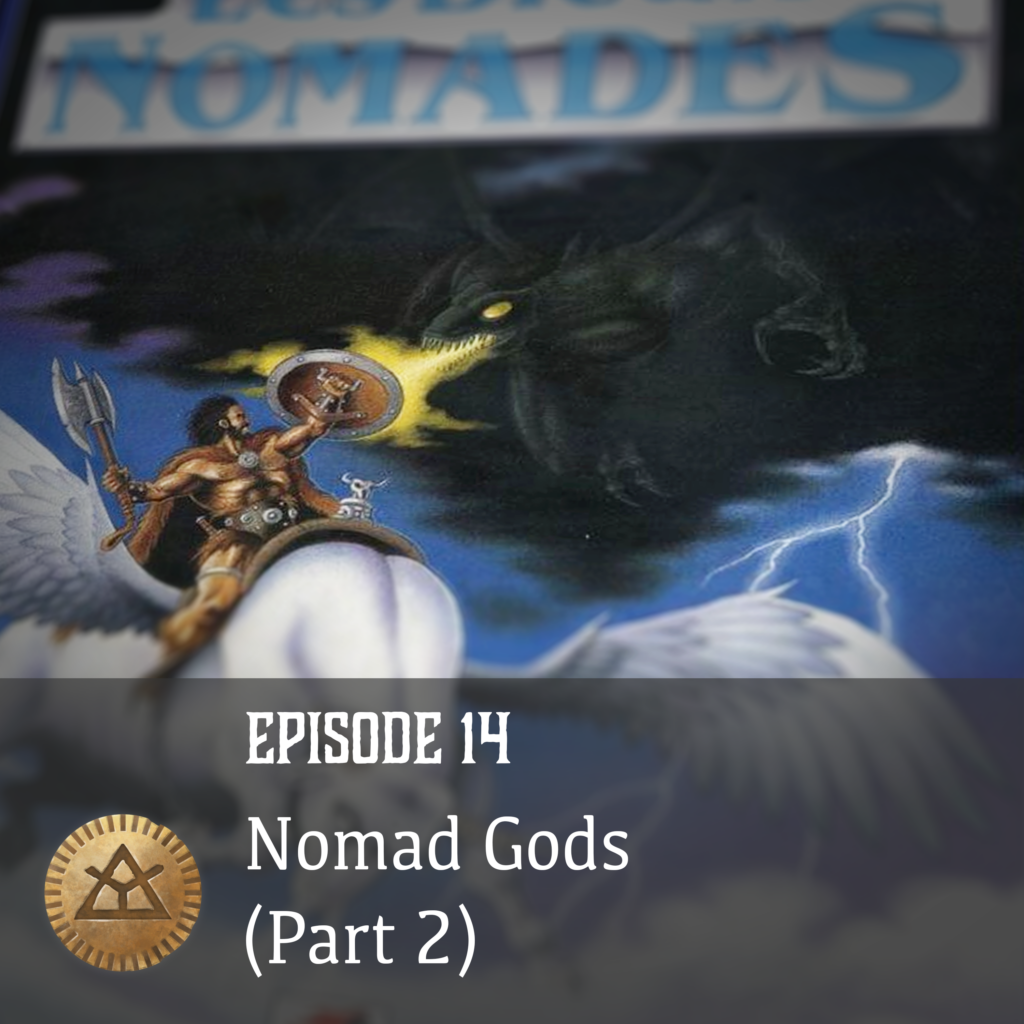
In Episode 14, the God Learner podcast returns to its exploration of the Nomad Gods, with David Scott from Chaosium.
News
The “Write Your First Adventure” summer workshop has started, with a RuneQuest course by Nick Brooke.
Pirates of the East Isles is out, with some art and minor spoilers by Ludo.
The Red Deer Saga (incorrectly mentioned as “White Deer”) is now available in print.
Volume 1 of Duckpac was indeed released shortly after our recording, and is now Silver Best Seller!
Dates for Chaosium Con 2023 have been announced. You can read Ludo’s report on this year’s convention.
More current news are available in our newsletter, the Journal of Runic Studies.
Nomad Gods: The Magic Game
David gives a one minute summary of Nomad Gods.
Ludo discusses the availability of the game in print, and we mention the VASSAL virtual tabletop version again.
Trying to talk about Les Dieux Nomades, Jörg is lost in memories, and gets confused about which convention he bought it at. We go into a rabbit hole while trying to find when this game was released — if that sounds boring, you can skip ahead or use the time bookmarks (only supported in good podcast players).
We mention Nick Brooke’s fan translation of the French rules terms on his website, here and here. Nick also created a beautiful printable map with all the features of French map, but with a hex overlay that fits.
David mentions the colourful counters of Les Dieux Nomades, as can be seen on Boardgamegeek.
We talk a bit about the problems when names are translated, failing to recognize the translation, and being out of alphabetic order. Note that Jar-eel the Razoress in French is “Jar-eel la Tranchante”.
Ludo gives a shout-out to the illustrations, before we talk about the rules.
David explains the difference between the counters for Nomad Gods where there is no range factor (for spirits of magician units) but a reflection factor telling whether a counter could attack neighbouring counters in spirit combat using the magic factor or whether it could fight back rather than just soak up damage with the magic factor. But then, there are units with a range factor of zero in Dragon Pass, too, and there are a few spirits that remain on the board and can attack neighbouring hexes with their magic, too, so it is more a case of different terminology than different rules.
David relays what Greg Stafford told him: “It was one of the flaws of the Praxians that they were tied much more to the spirits than they were tied to the deities, the greater gods.”
This focus on spirits and animism is the result of the great destruction from the Gods War in Prax. That’s why each major tribe has a shaman counter, and each shaman has a fetch.
RuneQuest emulates the worship of deities as spirits by giving a chance of contacting a god or goddess when reaching out to the spirits.
David points out that Cults of Prax sort of maps Nomad Gods in that a lot of Nomad Gods is in the structure of Cults of Prax.
There are unpublished descriptions by Greg Stafford about how the tribes move their herds, with a shaman at the front looking into the spirit world to look for the best magical grazing, etc.
Jörg suggests that Praxians are more versatile in rune magic through spirit cults, but again that is described as the flaw of the Praxian access to magic.
Heroquesting to spirit cults delivers lesser boons, while the spirits are more likely to be allies than patrons.
The concept of the fetch as the other side portion of the shaman is introduced here, and carries over into the RuneQuest rules (which were first published a year after Nomad Gods).
We find out more about the social position of shamans, but shamans are described as “crazed and rabid people, more than a little mad from their contact with the gods.” David puts that statement into context with Greg Stafford’s later experiences and practices in shamanism, and blames it on older concepts and misconceptions of 19th century anthropologists about shamanism.
David makes clear that a shaman is someone who is in charge of when they have contact with the spirit world and when not, so while there are times when talking on the invisible iPhone is appropriate, this happens at the shaman’s choosing and not at the spirits’ whim. Somebody constantly beset by spirits is not a shaman, or at least not a successful one.
Ludo mentions Mircea Eliade’s “Techniques of Ecstasy” as a good source on shamanism, a book that is not readable (from cover to cover) because of the learned document containing many examples. It’s considered good to dip in for specific items though.
As a source for shamanism and spiritualism, David recommends Sheila Paine’s “Amulets: a world of secret powers, charms and magic.” Any book on symbology would be good.
Shamans work with the spirits, and spirits have their own agenda, and that may be different from mortal expectation.
We talk about the Soul Winds, a devastating weapon of mass destruction that may cost you your tribal shaman, and that requires alliance with one of the Great Spirits (the Wild Hunter, Malia, or Oakfed). David suggests that this is better suited to the boardgame than to the roleplaying game.
We meet the various categories of spirits of Prax. David points out that most of these have appeared and are going to appear in the new edition of Cults of Glorantha.
I talk about the five elements having something of a balance in Les Dieux Nomades, but not in the original game.
We discuss the Lunar spirits in that game. David points out that there was a list of Lunar spirits in Wyrm’s Footnotes #4, page 49. It’s available in PDF from Chaosium, although might as well get the bundle of all 14 original issues.
The original Nomad Gods counter sheets contained a number of “mystery counters” including those of the Lunar spirits Book of Dale, Twinstars (also in the Dragon Pass boardgame) and the Watchdog of Corflu (one of the pieces which the French illustrator for Les Dieux Nomades got terribly wrong).
David goes through the list, and the discussion lands at the Medicine Bundles of Prax, plunder items useless for an individual but powerful on a clan or tribal level. David goes into what Medicine Bundles are, who would have them, and explains the mutability of their appearance as they fade in and out of existence. A Medicine Bundle embodies magical power, but the objects in the bundle are an embodiment of what it does rather than the actual things.
We arrive at Tada’s Grizly Parts, huge treasure-type artifacts that can be converted into magical units that can be summoned from Tada’s High Tumulus. We speculate about their appearance and size. Tada’s cudgel is a giant club, but Greg also said it was Tada’s penis. The description has a number of double entendres.
In Prax, Malia is a spirit of Darkness rather than of Chaos (although the way the Disease units work is similar to Chaos magic). David associates the three runes of Malia with deadly diseases (Death), minor diseases (Darkness) and plague (Chaos).
The Spirits of Earth are the spirits of the Paps, a family of their own, and presented as subcults of Eiritha in Cults of Prax.
The Horn of Plenty get special mention as one of the Seven Great Magics of Prax.
Then there is the collection of the “Other Spirits”, with a number of unaligned special spirits.
The Horned God is the entity that teaches shamanism and chooses shamans. It is a spirit that doesn’t have a cult. (Jörg’s speculation is that it is the Fetch of Glorantha.) All spirit cults are subcults of the Horned God. If the Horned God provides anything in RuneQuest terms, he provides Discorporation.
We talk about the Bad Man, the Chaos enemy of the Horned God, and the many masks of the Bad Man encountered in shamanic initiation.
Hyena is “an odd creature”, a spirit made by Genert so that his body parts would not fall to Chaos.
Ludo gets enthusiastic about the Three Feathered Rivals.
David talks about the structure of spirit cults in RuneQuest, and talks about the concept of Spirit Societies, and how they would work in RuneQuest. A spirit society is a collection of culturally similar spirit cults. In RQG, there usually is a greater spirit and a number of other spirits belonging to that group. Some are grouped by elemental runes, like they were presented in the boardgame.
Spirit societies are led by a charismatic shaman that doesn’t have to belong to the spirit cult.
A spirit society allows you to have a shared rune point pool for the spirits in the society. The Water Spirit Society would be headed by Zola Fel, and under Zola Fel you would have River Horse, Dew Maid, and Frog Woman. Your first rune point goes to the big spirit, and then you need to spend one rune point to each spirit cult whose magic you want to be able to cast.
The spirit societies are mainly pan-tribal, although each tribe that has a special strength in one rune will have a great portion of that elemental spirit society.
The one extra benefit from joining a spirit society is that you can learn the rune spell of Discorporation when you join a spirit society.
David point out that there is no spirit society of the Spirits of Air because these spirits are part of the Orlanth cult, which is why there is no shared rune point pool for these spirits.
Also there are two groups of spirits of Fire, one being the Burners led by Oakfed, the other the Star Gazers led by Pole Star, a spirit who has two magical places in the Wastes – Pole Star Mountain in the north and Star Crystal Mountain further south.
All spirit cults generally give one rune spell each, rather than the list of rune spells a theist cults give. The spirit cult of Pole Star gives Captain Souls (in the Red Book of Magic).
David points out the difference of Kallyr’s Starbrow ability which is different from the spirit cult, or the Pelorian forms of the cult (Dara Happans, Pentans).
You can read more about David’s take on Spirit Societies on BRP Central.
Spirit societies are all very minor, so minor that people looking from the outside wouldn’t even notice them.
The Daka Fal shaman may well also run the local spirit society. A shaman is not just working with one particular thing, but will also be a member of other spirit cults, and possibly in charge of the (tribally appropriate) spirit society.
We are talking about examples of published RuneQuest shamans. Jörg brings up Blueface as one example of a very powerful shaman, but being a very early example David describes him as rather weird, with several heroquest abilities rather than shamanic abilities. A “Hunter-Brother Dog-Shaman-Priest” who should have a greater range of spirits.
David suggests the example from Heroes Magazine 2.04 (the last issue of that Avalon Hill house magazine). On page 15, the Basmoli shaman Leona has a good backstory. Here is a snippet from Leona’s stat block:
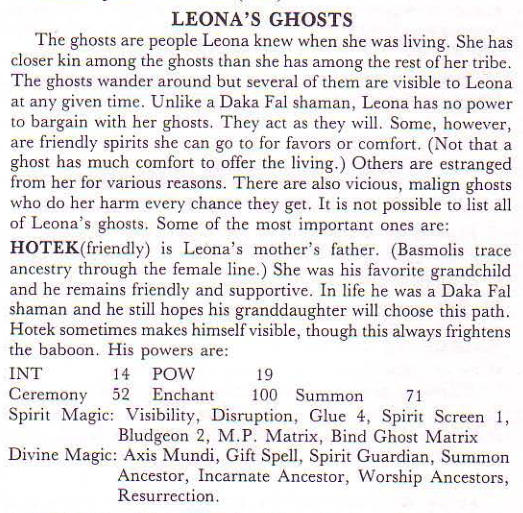
David likes the details of the spirits given, and their origins, like Hotek, the shaman’s mother, and her grandfather as another of her spirits, her dead daughter who was being groomed to become a shaman when she died, and a grandmother who was a shaman.
The one criticism David has with the article is that shamans aren’t loners but strongly bound into their communities.
Leona is slightly insane and not quite a functional shaman because she has lost control over some of her spirits, a damaged shaman.
Ludo asks about the Wild Hunter (Gagarth) and the White Princess (Inora). The White Princess lives in a castle in the middle of the Dead Place, in the Winter Ruins. (Echoes of Elsa are undeniable…)
The Dead Place on the game board map doesn’t much look like anything, but is shown as heart-shaped on more recent maps.
Creatures of Chaos include Thed, Cwim, the broos, and the Pieces of the Devil. Ludo praises the Gene Day illustration of the broos.
David mentions his Q&A on Cwim on the Well of Daliath. Cwim is designed to be attacked by armies rather than by small parties of adventurers. Heroquesters can kill these monsters, but they do it in a different way. Average adventurers can try, and then run.
David talks about seeing Cwim from afar, and changing your route to avoid it. Cwim is the randomizing element that causes the migratory routes of the clans to change. Cwim usually is in the Wastes as the tribes usually ally to keep Cwim out of the sacred land.
Ludo comments on the effects of Chaotic magic in the board game (automatic elimination of an adjacent unit) as “ouch”, which David said sums it up nicely.
We digress to the various types of Gorp presented in River of Cradles. Gorps are “the gelatinous cube of Glorantha”, and are the spawn of Pocharngo, the Chaos god. Various types include “micro-gorp, glue gorp, exploding gorp, regenerating gorp, zoomers (a lot faster than normal gorp), breeders, paralyzing gorp”
We discuss nasty uses for Gorps: Gorp as garbage disposal? Gorp in a bottle labeled as a potion?
The Devil’s Hand is a huge nasty monster. Jörg shows his age when his comparison with the Dreadful Flying Glove from Yellow Submarine was a bit out of context for Ludo, who was listening to metal and progressive rock when he was young.
We return quickly to the Eternal Battle and what lies inside, and possibly beyond.
You can once again see the counters on Boardgamegeek, or in the VASSAL module. The counter sheets serve as art direction.
The magical scenarios serve as training exercises instituted by Jaldon.
Rather than looking at the text of the prehistory and history of Prax (which admittedly is well known to most players of RuneQuest), Ludo riffs off on the map of the Wastes which is as much (or rather as little) to scale as is the Crater map in White Bear and Red Moon.
Jörg points out that the myth section in the local game of Nomad Gods becomes the world wide foundational myth about the Chaos War. David paints Prax as the final battleground where the last deities perish and descend to Hell to join the Ritual of the Net.
The list of the pieces shows some of the William Church silhouettes at larger scale. David emphasizes the great art pieces by Gene Day which may justify buying the pdf even if the board game doesn’t interest you at all.
David goes into advertising mode, advertising the PDF we’ve been reading for 8.95$.
Jörg vainly wishes for a confrontation between Sor-eel’s Lunar forces and the Praxians, not necessarily at Moonbroth but the march on the Paps and Pavis.
Glorantha Initiation: Scott, Grognard Jokes, Too Much Lore, and Letting Players Fill in the Blanks
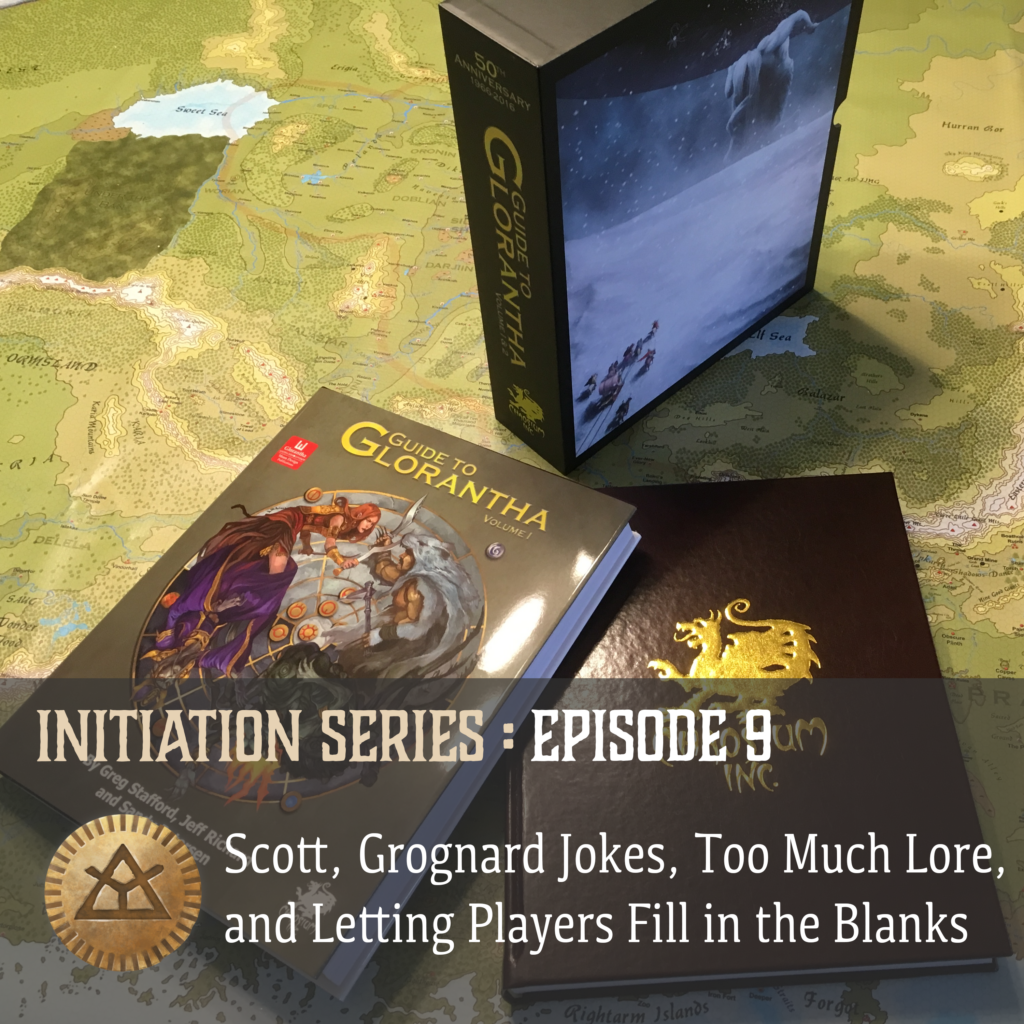
We talk to another Scott this month for our Initiation Series. This one was recorded back in November 2021, which is why we still mention the very imminent release of the RuneQuest Starter Set.
Scott is a newcomer to Glorantha who couldn’t wish for better guides to navigate Strike Ranks and Sartarite tribes.
Some of the things mentioned in this episode include:
- D&D BECMI
- RuneQuest 2
- Bud’s RPG Review YouTube channel
- Pookie’s Reviews From R’lyeh blog
- The RuneQuest Quickstart (free in PDF), which contains the adventure “The Broken Tower”
- The Glorantha Sourcebook and the giant Guide to Glorantha
- The King of Dragon Pass video game
- Wyrm’s Footnotes
- The Duckduckgo search engine (Ludo’s primary search engine!)
And now, for some super professional links to Scott’s many places:
- HailOrcusdorkus on Twitter
- Orcusdorkus’ RPG Shenanigans YouTube channel (including his “completely unprofessional unboxings”)
- The Titterpigs podcast (with Keith, from Rollingboxcars)
Episode 13: Practical Ancient Warfare
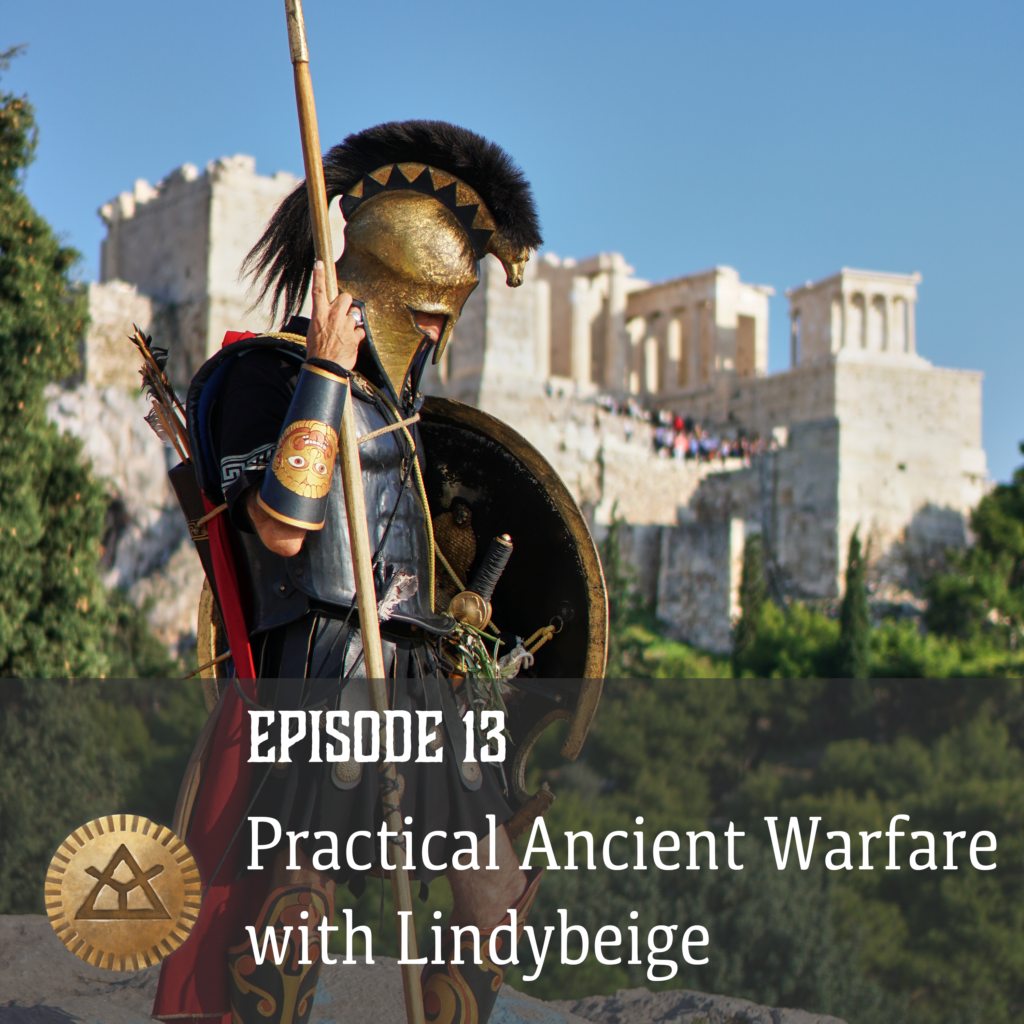
Our guest for episode 13 is Nikolas Lloyd, the multi-talented host of the Lindybeige YouTube channel.
News
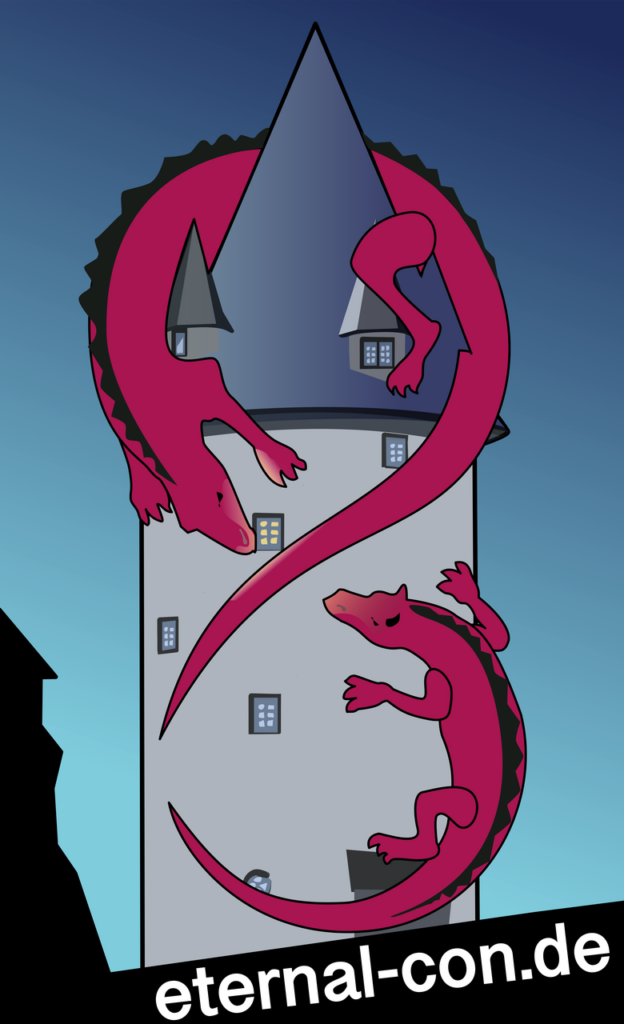
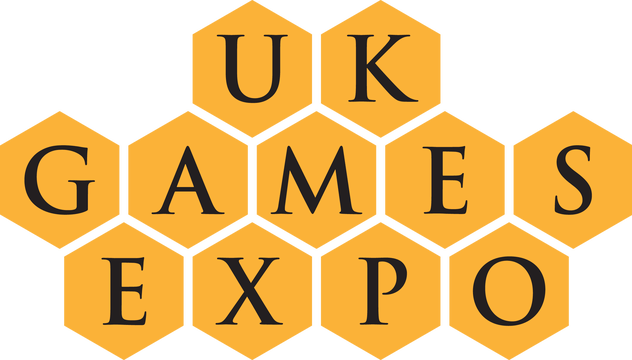
Jörg mentions Eternal Convention at Castle Stahleck in Bacharach, Germany, and the UK Game Expo which both just ended at the time of recording.
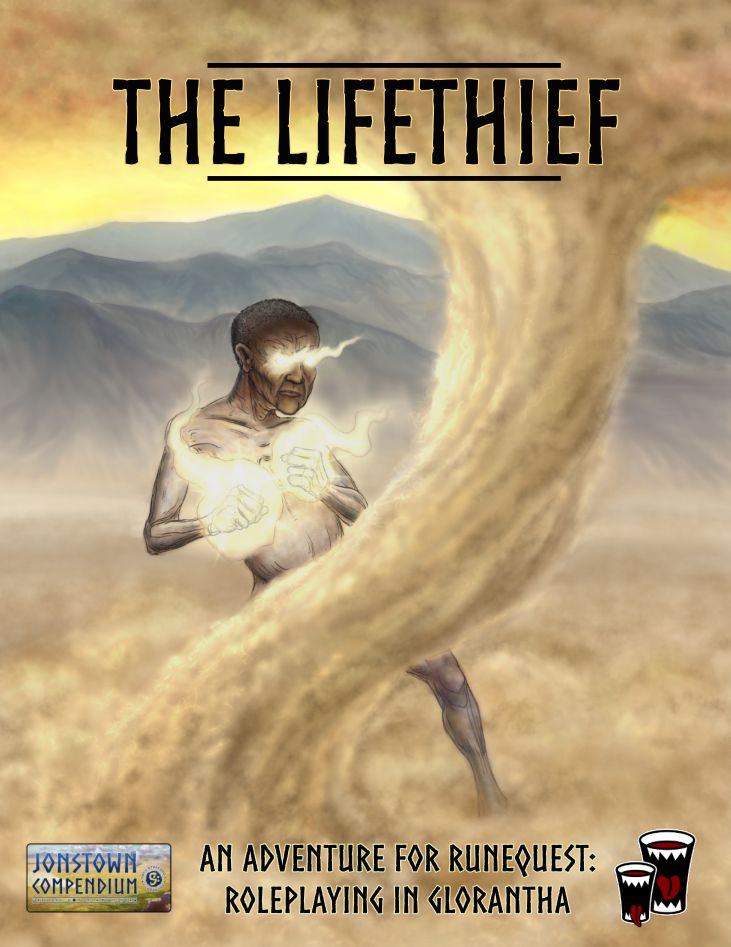

On the Jonstown Compendium we had The Lifethief, a scenario by the Beer With Teeth collective, and an overview map of the Jonstown area by Mikael Madsen.
Practical Ancient Warfare
There are more than 600 videos on the Lindybeige channel, many of these dealing with “lots of swords and spears”, and quite a few clarifying questions that arise from playing RuneQuest in Glorantha.
Lloyd started roleplaying at age 12 or so playing the typical dungeon raids and realizing the plot holes like why are there monsters hiding behind doors to jump at exploring adventurers guarding treasure chests. A few years later he came across RuneQuest and appreciated its approaches and how they helped playing in a more believable world.
We forgot to talk to him about his legendary “Prax Warrior” video, too, which you can see here:
(the story behind this video is explained in its description)
The praises of RuneQuest in its second edition are sung. They are still the same great points as in Lloyd’s series of videos on D&D from eleven years ago. Part one is below, but check out part two and part three too:
Lloyd talks about the Dragon Pass board game, and how he never managed to find opponents to play the full game with all the magic, the alliances etc. We also talk briefly about Glorantha: The Gods War, for which Lloyd made an extensive video review:
Ludo talks about the realism of combat systems and melee weapons, and the strike rank approach in RuneQuest. Lloyd describes the “dagger vs. pike” situation, and offers a house rule assigning a different weapon strike rank for fist range fighting.
The reality of disengaging aka running away without getting stabbed in the back, which seems to be a lot easier in real life than in most rpgs.
Ludo brings up the footwork rules in GURPS, and we talk about using terrain, maneuvers, and magic, especially spells like Lightwall that enable a side to regroup without the opponent knowing about it.
Lloyd mentions how keeping track of all the magic that may enter a melee can be a challenge for a GM in RuneQuest.
We talk about the usefulness of shields and parrying missiles, and house-ruling those situations.
Lloyd discusses the importance of the GM’s eye-contact with the players in role-playing and how playing online takes a lot of that unspoken communication away even in a video chat.
We discuss active use of shields in combat, character expertise over player expertise,
On the topic actual experience of fighting in a shield wall, we learn that individual prowess matters a lot less. Lloyd discusses the death-defying attitude in re-enactment battles and suggests that facing the same situation when it is your life on the line may involve a lot more visceral fear. As you might expect, you can learn more about shield walls on Lloyd’s channel:
Lloyd talks about group coordination topping individual melee expertise, the importance of maneuvering and initiative, and how one can make a difference in group combat even without actually stabbing or slashing at the foe just by positioning yourself.
The ideal fight should not be a slogging match where you stab the other guy but to achieve an objective like crossing a bridge or capturing a flag.
The tendency to fight to the bitter end seems to be ingrained in roleplaying combats, and the fear of a certain type of players (and game systems catering to their style) to lose the items that make them effective.
Jörg asks about the practicalities of offering ransom in the middle of a melee. The answer seems to be to let go of your weapons, raise your hands and shout the amount of money that you are worth, but without any guarantee that the opposing side will accept that, even if that is the accepted outcome. In the end, this is up to GM discretion, table consensus, and dramatic effect.
Talking about setting a scenario in a major battle, Lloyd mentions about his work on a book on the Trojan War for D&D 3.5 but the D20 license was discontinued and adapting the project D&D 4th edition. He discusses a couple of approaches, like having the outcome sort of pre-determined.
If the side the player characters fight on is going to lose, the objective of the game is not to win that battle but how the unit of the players performs, whether they distinguish themselves in the battle or what losses they suffer.
There is the possibility of pushing the player characters into the situation that decides the outcome of the battle, but that can often be contrived and needs some setting up.
Lloyd talks about giving the players an objective other than winning the battle, like a detached raid around the battlefield against the train or camp of the foes to recover a maguffin.
We discuss actually playing out the war-game inside a roleplaying session, and Lloyd says that this approach needs a lot of practicing and necessitates a couple of bad games before getting the hang of this.
Lloyd talks about the constants in ancient warfare, with the basic concepts remaining the same like spears, shields, or signalling through shouts, insignia, drums or horns.
The difference made by magic on the battlefield is a lot higher than any technological differences. Also magical development may replace technological development.
Are old people in Glorantha really healthy? What is the availability of high powered healing or restoration magic?
How do people allocate their magical resources? Ludo introduces spreadsheets for administration of available magics.
Reputation as a spring-board to drama.
Skill proliferation vs. nifty new skills, on the example of a “read battle” skill (which sounds like a good interpretation of how to use RQG’s Battle skill).
Are different weapon type skills necessary? Lloyd suggests a general melee skill independent of the weapon type.
What is a “broad sword”?
Bronze weapons, and limitations real world bronze has.
The importance of tin in the Bronze Age, and using its control and supply chain as plot hooks.
Ludo mentions Lloyd’s video series on slings, the first one of which is here:
Contriving situations where groups of five characters can make the difference, again and again and again…
Lloyd points out that skipping ahead to avoid tedious routines of standing watch etc. so that the bad guys don’t catch up with the players is giving out unintended information that no, the bad guys aren’t going to show up now.
He talks about doing flashbacks to establish still unknown relationships, and how “you can’t die in a flashback” may spoil the suspense for some players who prioritize survival.
Ludo suggests to have players roll the doomed assault of NPC fighters and experiencing their deaths in between playing their less combatant main characters.
There are two main types of action scenes: fights and chases, and most role-playing games dedicate entire chapters on combat but hardly any space on chases. And even if you have rules for chases, those might be about catching and fighting the opponents and not overtaking them in a race.
More about Lindybeige
You can find Lindybeige:
- On his website (with a little bit of RuneQuest stuff here)
- On his YouTube channel
- And probably out there in a field waving pointy things around!
Credits
The hoplite picture is Creative Commons. The intro music is “The Warbird” by Try-Tachion. Other music includes “Cinder and Smoke” and “Skyspeak“, along with audio from the FreeSound library.
Glorantha Initiation: Scott, Novelizations, Baboons, and Too Many Cows
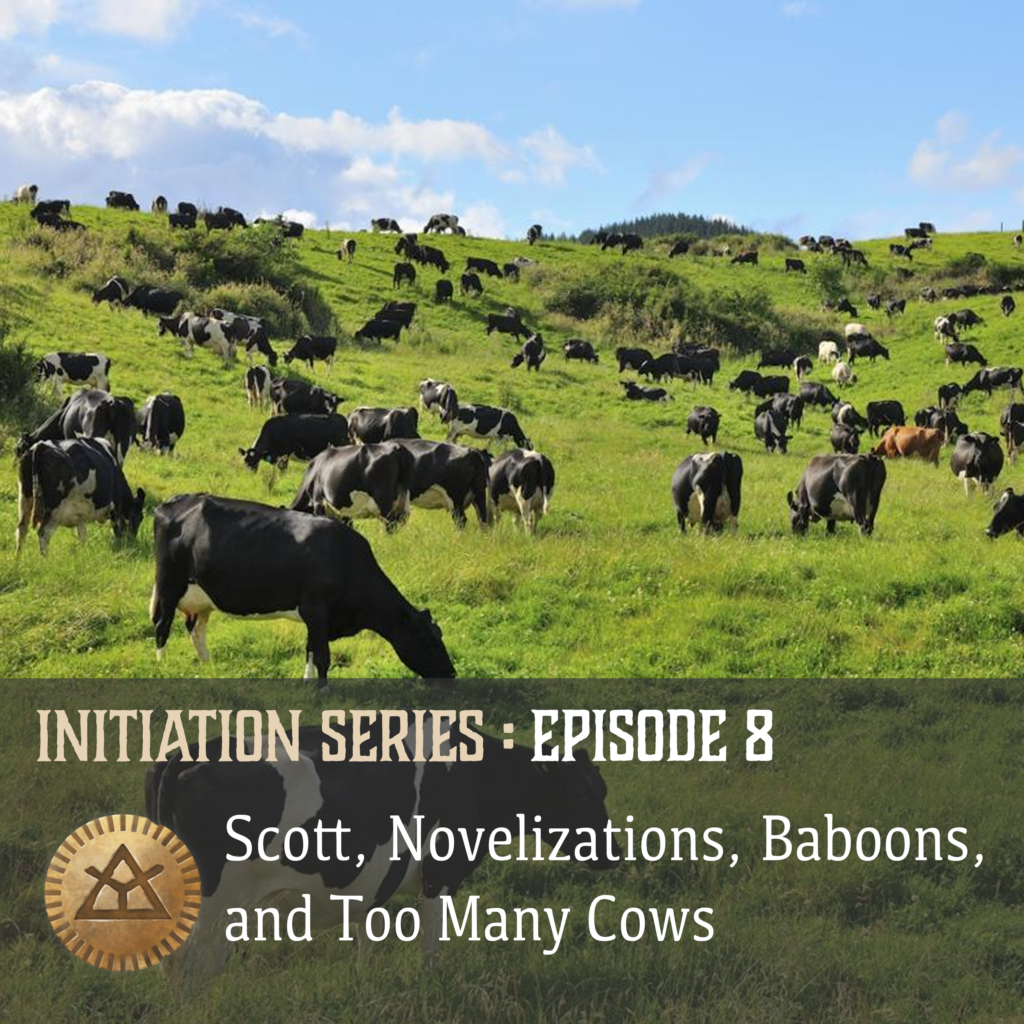
The new Initiation Series interview features Scott Rinehart, and was recorded back in October 2021. Scott is new to Glorantha, having only played in a couple of one-shot games, but he has flipped through the new RuneQuest slipcase books, and the Glorantha Sourcebook.
Things mentioned in this episode include:
- Rankin/Bass animated films “The Hobbit” and “The Return of the King“
- Dungeons & Dragons Basic Set (second “Moldvay” edition, 1981)
- RuneQuest 2 reprints, financed through a Kickstarter campaign
- Cubicle7’s The One Ring (which is now discontinued… the second edition is now with Free League)
- The Prince of Sartar webcomic
- King of Dragon Pass and Six Ages video games
- Empire of the Petal Throne and novels set in the world of Tekumel (see also the Tekumel Foundation)
- John E. Boyle’s Queen’s Heir, a Hittite fantasy novel originally supposed to be set in Glorantha
- The Griselda short stories set in Glorantha
- Cults of Prax and the travels of Biturian Varosh (which we started covering in our old podcast, and continued with the current podcast most recently here)
- The RuneQuest Quickstart, including the adventure “The Broken Tower”
- Lou Zocchi’s rant about dice manufacturing
- The Grognard Files podcast
- Elfquest, and the Elfquest RPG
Episode 12: People of Glorantha: The Aldryami
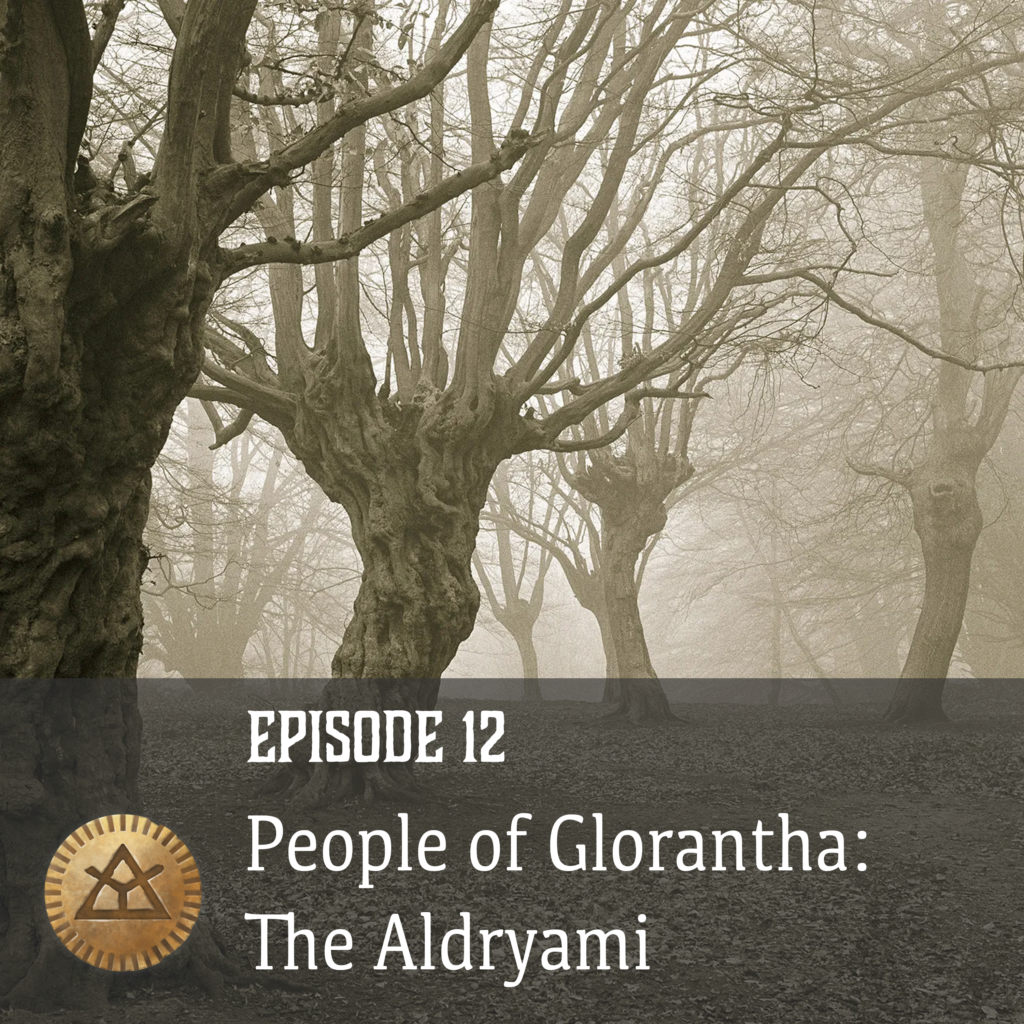
Shannon Appelcline is our guest for the 12th episode.
Shannon tells us about his entry into the roleplaying genre, which features the typical games of the early eighties. RuneQuest became one of his main systems when he joined the Erzo game by Eric Rowe, a long-running campaign set on Eric’s own universe, but he also started exploring Glorantha. In the 1990ies , Shannon joined the Chaosium staff.
Shannon’s Glorantha credits include articles for Tradetalk magazine and Ye Book of Tentacles (a series of fundraiser books for the German RuneQuest convention). Shannon also organized RuneQuest conventions in the nineties, and his improvised “Hero Wars” logo made for the 1998 convention ended up on the product.
We talk about the upcoming Elf Pack for RuneQuest: Roleplaying in Glorantha (the manuscript has been handed in, which means that a series of time-intensive steps need to follow).
Three Generations of Elf Pack
We learn about the incarnations of Shannon’s Elf writings, starting with a coverage of all elf forests of Glorantha for the HeroQuest (1st edition) line of Issaries Inc. But due to delays, Greg Stafford taking a sabbatical teaching English and studying shamanism in Mexico, the Issaries line closing down, and HeroQuest 2nd Edition taken in license by MoonDesign, this first manuscript was never published.
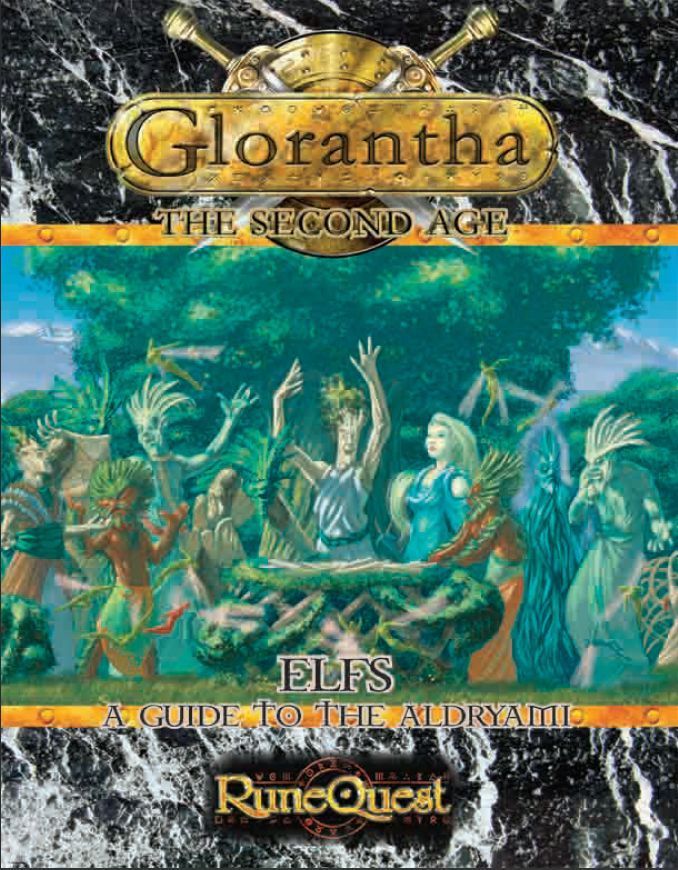
Around that time, Mongoose published their “Glorantha – The Second Age” line, and unwilling to see some other authors contradicting more than 1000 pages of material, Shannon contacted Mongoose and offered to write the elf supplement for them. Despite usually working with in-house writers, Shannon managed to convince the company. The result was Elfs: A Guide to the Aldryami, written in just three months – a short time compared to the other two manuscripts, but very long for a Mongoose RuneQuest book.
About the current version of Elf Pack, we learn that it is (mostly) focused on the Dragon Pass area, like the rest of the latest RuneQuest books.
Designers & Dragons
Shannon’s major contribution to the hobby is his history of roleplaying games titled Designers & Dragons. An original massive 2-volume book expanded into the current form which has four books, with one book per decade. It is available in print from Evil Hat (or translated into other languages, like German or French), with additional volumes with somewhat different focus added over the time.
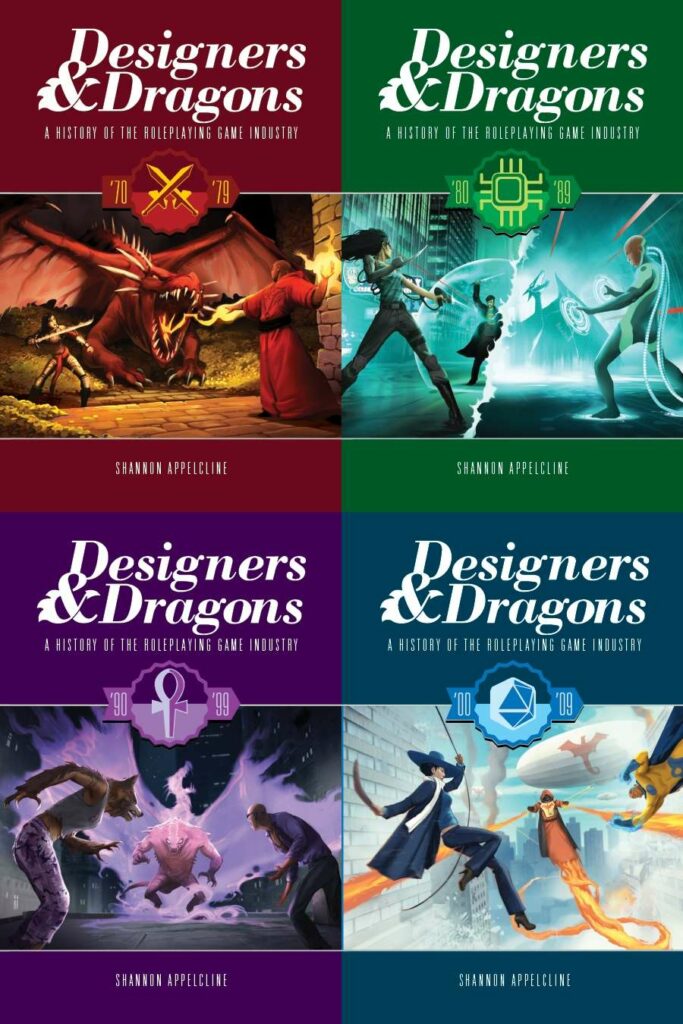
It’s also available here:
Shannon has a few more volumes in the works, including “The Lost Histories”, two volumes of stuff that did not go into the first four volumes.
Shannon talks about Reaching Moon Megacorp as one relevant example of Gloranthan publications.
The 2010s volume is about to be collected, as a certain distance is required to make sure no trends are overlooked: Shannon talks about how his volume on the 2000s missed the Old School Renaissance movement.
Another ongoing project is four volumes on the TSR histories talking about all 100+ TSR publications (OD&D, 1st ed. AD&D and Basic D&D) for the D&D Classic website on Drivethrurpg.
Last but not least, Shannon is working on a publication history of Traveller for Mongoose.
We also mention a recent article on rpg.net on the many editions of RuneQuest, Traveller and Talislanta, part of Shannon’s Advanced Designers and Dragons series there which adds current events, eulogies, and occasional glimpses into the work-flow.
News
Ludo makes the shout-out for the Journal for Runic Studies, his weekly newsletter/blog series, and our most recent episode on Newcomers to Glorantha featuring Diana “Berra” Probst.
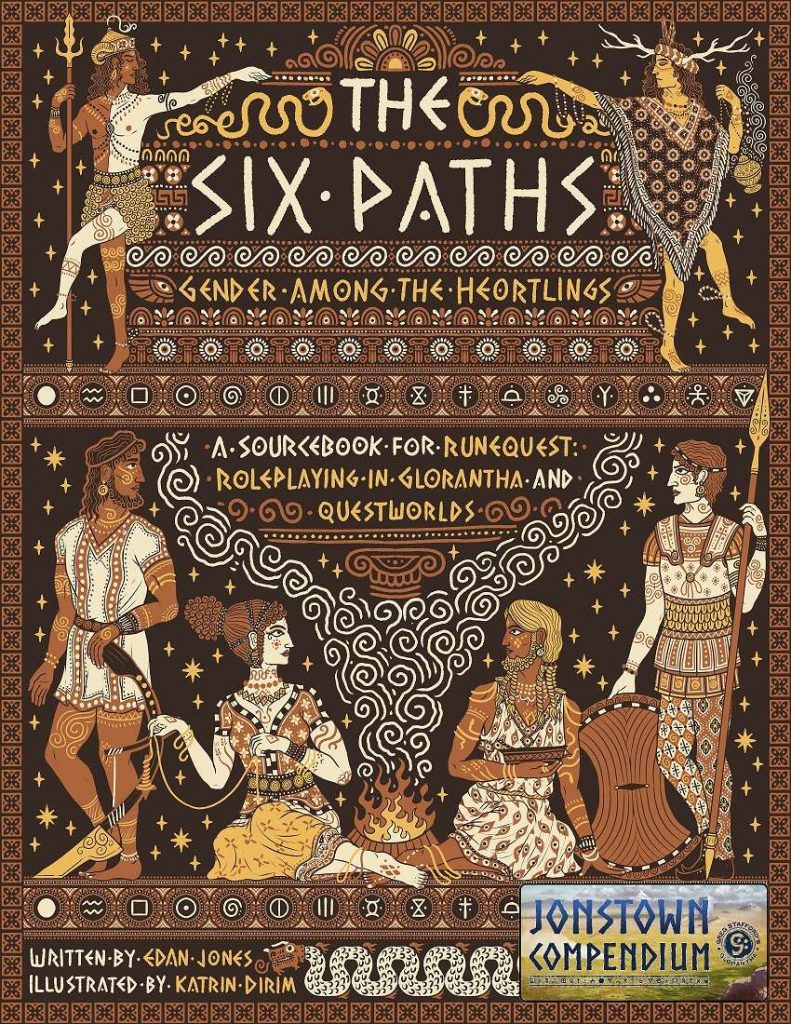
The Six Paths by Edan Jones (aka Tindalos) and Katrin Dirim on Drivethrurpg, already as Print-on-Demand softcover.
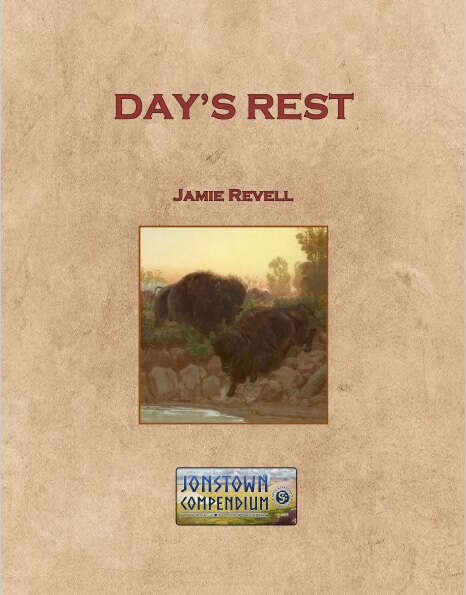
Day’s Rest by Jamie Revell is also out.
Aldryami: The Elfs of Glorantha
This is not an “Aldryami 101” episode, we assume that listeners have, at least, access to the Glorantha Bestiary. For a full newcomer presentation of the Aldryami, you can of course read the Bestiary, or watch the Exploring Glorantha episode on the topic.
Elf Culture
Elevator pitch: Plant people in tune with their forest interacting with it in a collaborative way where they really are all one
Comparison with Tolkienesque elves in standard fantasy (literature and rpgs) and the difference in appearance.
Evolution of elf depictions for RuneQuest: Gaunt faces, spiked ears – that’s about the main common denominator of early elf artwork, with increasing treeishness as the time proceeds.
Different elf types matching certain types of trees or forests.
Is there space for “elfs” based on other plants?
Shannon mentions vampiric trees sucking up nutrients or sap from other trees in the network.
Undead as seen by elfs – petrified trees, trees hollowed out by insects, vampiric ones.
Vine elfs – Shannon wrote a myth why those aren’t around any more.
Elder Races pantheons may tend to be smaller than human ones.
Elf deities shared with humans
Seedings of generations of gods by primordial ones.
The Elf “Secret” – Elfsense, the ability to pick up the experiences of plant beings around them.
The importance of Aldrya, who upholds the forest
Elf Philosophy
Balance: Growth balanced by Taking
Cycles: Reincarnation, though without memory of individual experiences (but then those are held by the forests)
Making the myth matter in the game
Lots of myths not included in the Elf Pak manuscript
Myths as patterns for a heroquest (another word for an adventure)
A preview on the upcoming scenario “The Great Graft”, set in the Stinking Forest
The first Pruner among the elfs
Playing an Elf
Four major Passions:
- Loyalty to Forest – find out the goals of your forest
- Devotion Grower – further Growth, spread life
- Devotion Balance – realize that every single elf is your brother, and all the other races are too, even though they may have the opposite job
- Devotion to Cycle – things that are killed will return, and so will you if you die.
Different psychology of Green and Brown Elfs
Elf emotions being spread out into the forest, delaying a reaction.
Green emotions (communal) vs. Red emotions (individual) vs. Black emotions (anti-community).
Five forests of the Dragon Pass region:
- The Old Woods (easternmost region of Arstola) – dissidents from mainstream Arstola, lost the site of the Great Tree when probably Arkat cut it down at the end of the Dawn Age
- Tarndisi’s Grove – about the smallest an elf forest can become
- The Stinking Forest
- The Vale of Flowers (including the normal trees of the Flower Wood)
- The Dryad Woods – including an adventure about the Forest of Wondrous Beasts
Not included, but Shannon elucidates on it: the Redwoods of Dagori Inkarth/Prax
Bringing elfs into the game:
Rootless elfs – elfs cut off from Elfsense
Rooted elfs – elfs pursuing the goals of their forest
Elfs are long-lived and have long-rooted plans
Range of elf-sense – a quarter-mile outside of the forest they lose contact and are left alone with their emotions etc.
Purpose-grown material or even individuals
The role of rootless elfs in elf society – a constant source of pity
Flamals seed came to rest on the three elements. Those that fell on Gata (Earth) became the Green, Brown and Yellow elfs, those that fell on Sramak became the various types of Murthoi or Blue elfs, and those that fell on fire became the lost White Elfs of the peak of the Spike. Those are the true elfs.
The Hybrid Races were born out of the moment of Balance between Growing and Taking, and that’s where the Red Elfs are grouped by the true elfs, right alongside the humans and other non-autotrophs.
Lesser aldryami races – Runners, Pixies, Sprites
The role of the dryads in elf society – demi-gods, something akin to the Mistress Race uz.
First encounter in an elf forest – usually an arrow.
Kings and queens of elfdom, nobility of the elfs, are more of a diplomat caste than rulers.
Vronkali were the ones who learned to Take in order to survive. The Mreli chose to accept death rather than give up their natures, and got re-awakened after the Dawn.
Hostility between elfs and other Elder Races.
Does the Cycle come into the destruction of the world in the Gods War? Shannon counters with Grower being reborn as five entities, finally Voria to restart the Cosmos.
Elfs and the Man Rune – individuality as the primal sin, the unfortunate outcome of the Green Age ending.
Intra-elf conflicts: God Learners call it Aldrya’s Woe, the elfs call it the Planting.
Credits
The intro music is “The Warbird” by Try-Tachion. Other music includes “Cinder and Smoke” and “Skyspeak“, along with audio from the FreeSound library.
Glorantha Initiation: Diana, Amber, Constructive Cosmology, and Tea Bribes
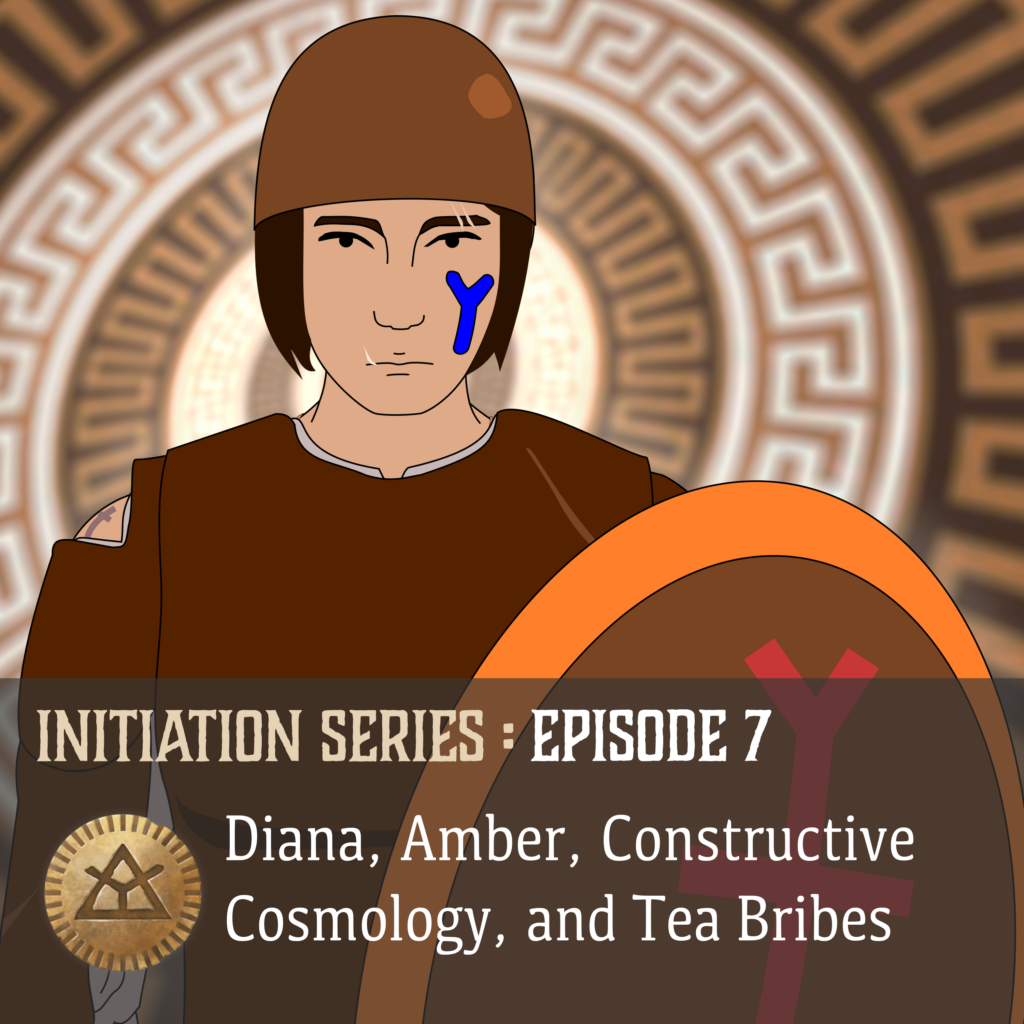
This episode was recorded in November 2021.
For this Initiation Series interview we welcome back Diana Probst, the totally biologically human member of Beer With Teeth, which we already had on the show with some of her collaborators in Episode 6: Gamemastering RuneQuest.
Diana talks about her obsessive approach to RPGs and RPG settings, and her early years playing Amber Diceless Roleplaying and its offpsring Lords of Gossamer & Shadow, from Jason Durall (now line editor for RuneQuest). She mentions the “fractal gaming” of Glorantha, and the “constructive cosmology” that she engages in with her RuneQuest groups, including inventing many things related to the cult of Humakt and general YGMV approach. We also brush upon her move from a rules-light narrative system to a crunchy simulationist system.
In the last stretch of the episode we talk about physical play aids, stolen webcams, and tea bribes. To wrap things up we usually go into short and simple “wildcard questions” but the first one sends us on a giant digression about Gloranthan sports and “dwarf spotting”, so we figured we wouldn’t ask a second one.
Other things mentioned in this episode:
- Road to Amber MUSH
- Ice Shinty
- Custom drowning rules
- Diana’s group’s campaign log (note that wikidot is currently down after a massive hack.) Episode 8 has the first ice shinty game. Episode 18 has a damaged dwarf.
- Diana’s art patreon
- Beer With Teeth website
- Beer With Teeth titles on DriveThruRPG
Episode 11: The Travels of Biturian Varosh (Part 4)
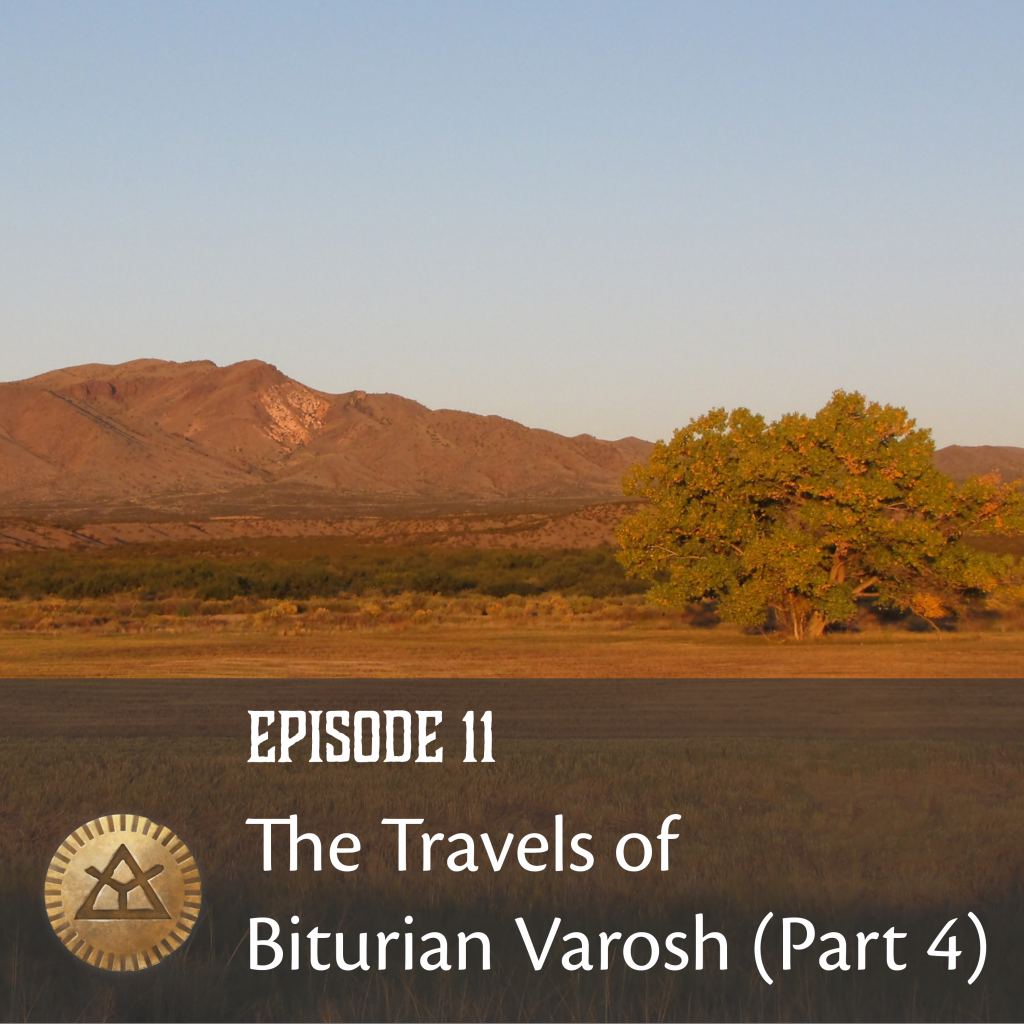
For this episode of the God Learners podcast we welcome back Drew Baker, who followed Biturian Varosh with us back in episode 5. Drew is doubly qualified for this task since he just released a new Jonstown Compendium item called Highways & Byways which is a travel reference for Dragon Pass and its surroundings.
News
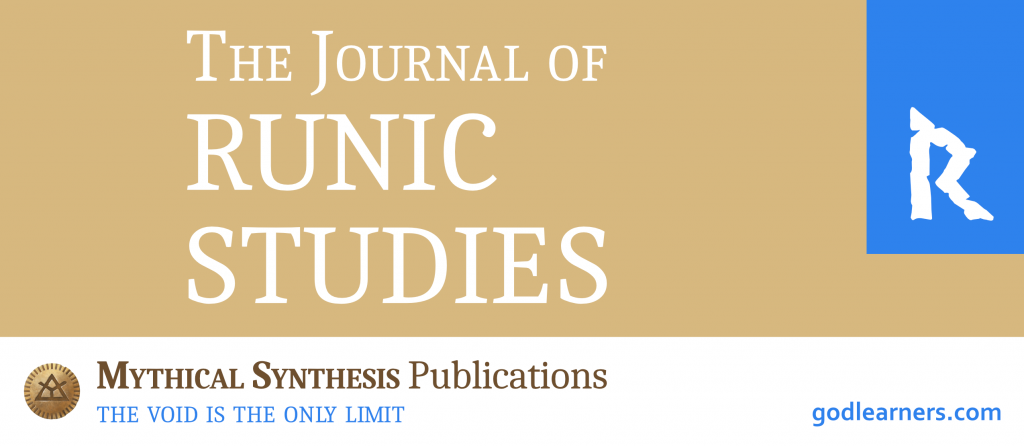
Ludo advertises our Gloranthan newsletter, The Journal of Runic Studies, and briefly mentions having gone to ChaosiumCon. Ludo’s full report is available here.
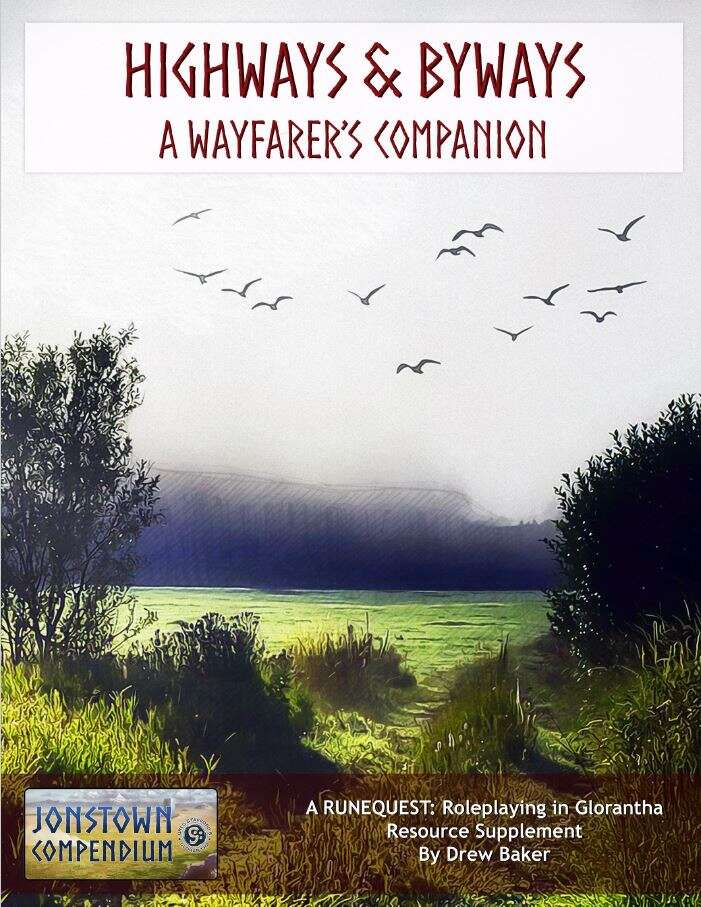
Next, Joerg and Ludo run a short interview with Drew about Highways & Byways: where the idea comes from, what it contains, the fun of reconciling various Gloranthan maps with different scales, and the possible fictional explanations for things changing from one map to another.
Ludo mentions the Dumb Cuneiform website in passing, where you can order your own cuneiform tablet.
Drew mentions his Call of Cthulhu adventure The Reading of a Will. You can see all of Drew’s community content here, such as the QAD series which provides plenty of stat blocks and mechanical information for RuneQuest.
Main Topic
We catch up again with the Travels of Biturian Varosh, from the classic Cults of Prax supplement. This short story was scattered across the book to help picture what life in Glorantha might look like.
In the first segment, Biturian and Norayeep search for healing herbs in order to make a little bit of money. We talk about the rules for Plant Lore, the utility (or lack thereof) of D12s, heroquesting, and Humakti ghosts. Drew mentions the Old Men Play RuneQuest podcast and video series.
The second segment brings us back to Pavis, where we share theories and consternation about what’s going on with Biturian and Morak at the local Lhankor Mhy temple. We talk about slave bracelets, horned children, sex rituals, and more weird stuff.
In the last segment, Biturian goes to the Pairing Stones and witnesses an Orlanthi initiation, including (finally!) some spirits of reprisal.
Before heading out, our three hosts share their thoughts on this penultimate leg of Biturian’s journey.
Credits
The cover image is by Greg Goebel. The intro music is “The Warbird” by Try-Tachion. Other music includes “Cinder and Smoke” and “Skyspeak“, along with audio from the FreeSound library.
Glorantha Initiation: Wayne, the Snakepipe Incident, Riding Bisons, and YGMV
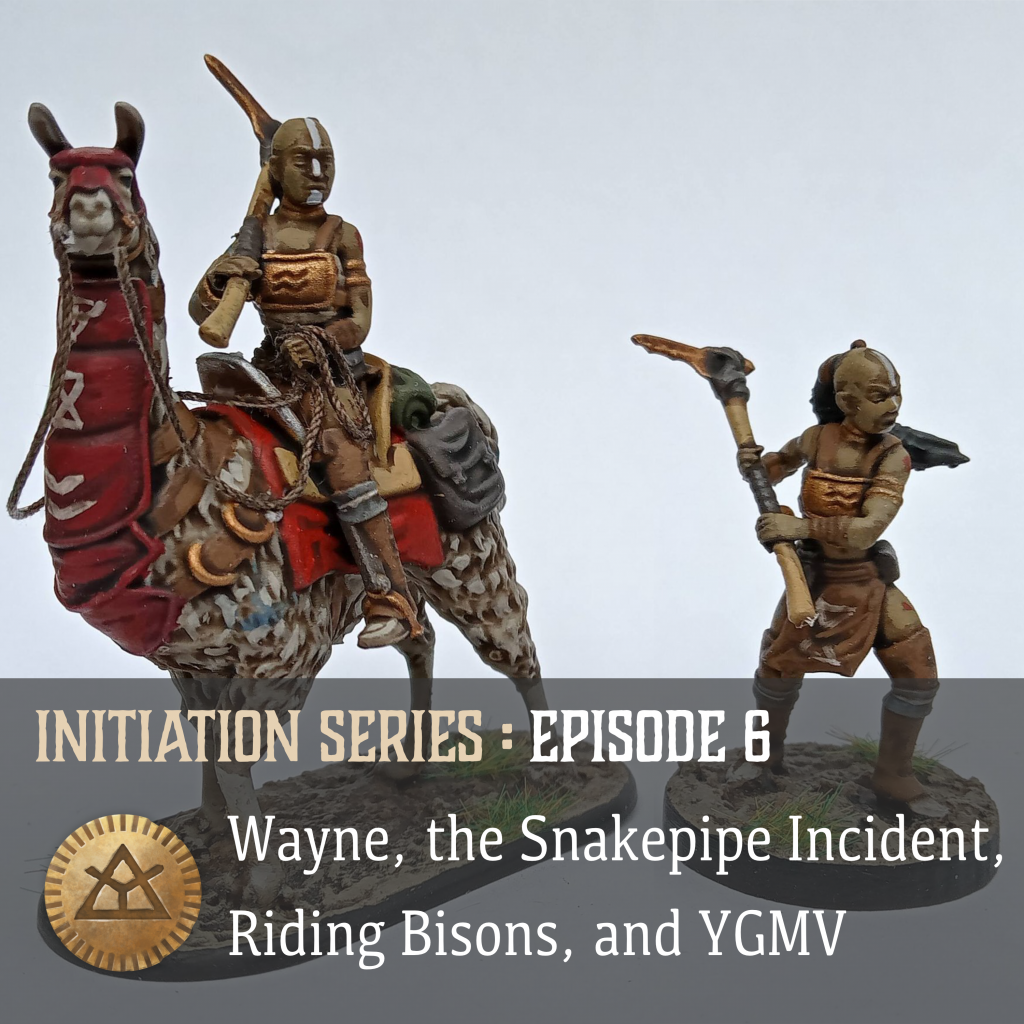
For episode 6 of the Glorantha Initiation Series we welcome Wayne Peters, who played RuneQuest once in the 80s and hated it. More than 30 years later, Wayne returned to Glorantha with the Broken Tower, the adventure from the RuneQuest Quickstart. He talks about riding Praxian mounts, making miniatures, YGMV, ducks, silly location names, and more!
- Wayne Peters on Twitter
- Picture of Wayne’s High Llama rider miniature
- Andy (Wayne’s GM) on Twitter
Things mentioned in this episode:
- Snakepipe Hollow
- RuneQuest Quickstart (includes The Broken Tower)
- Borderlands
- Pavis & The Big Rubble
- Chaosium’s Cult of Chaos program
- The Prince of Sartar webcomic
- Les Enfants de la Flamme (French campaign from Studio Deadcrows)
- Sandheart: Tales of the Sun County Militia
- The Armies and Enemies of Dragon Pass
- Harn
- GURPS Banestorm
- SketchUp modelling software
- Matthew Cole’s New Pavis
- Mouse Guard
- The High Llamas
Episode 10: Out of the Suitcase
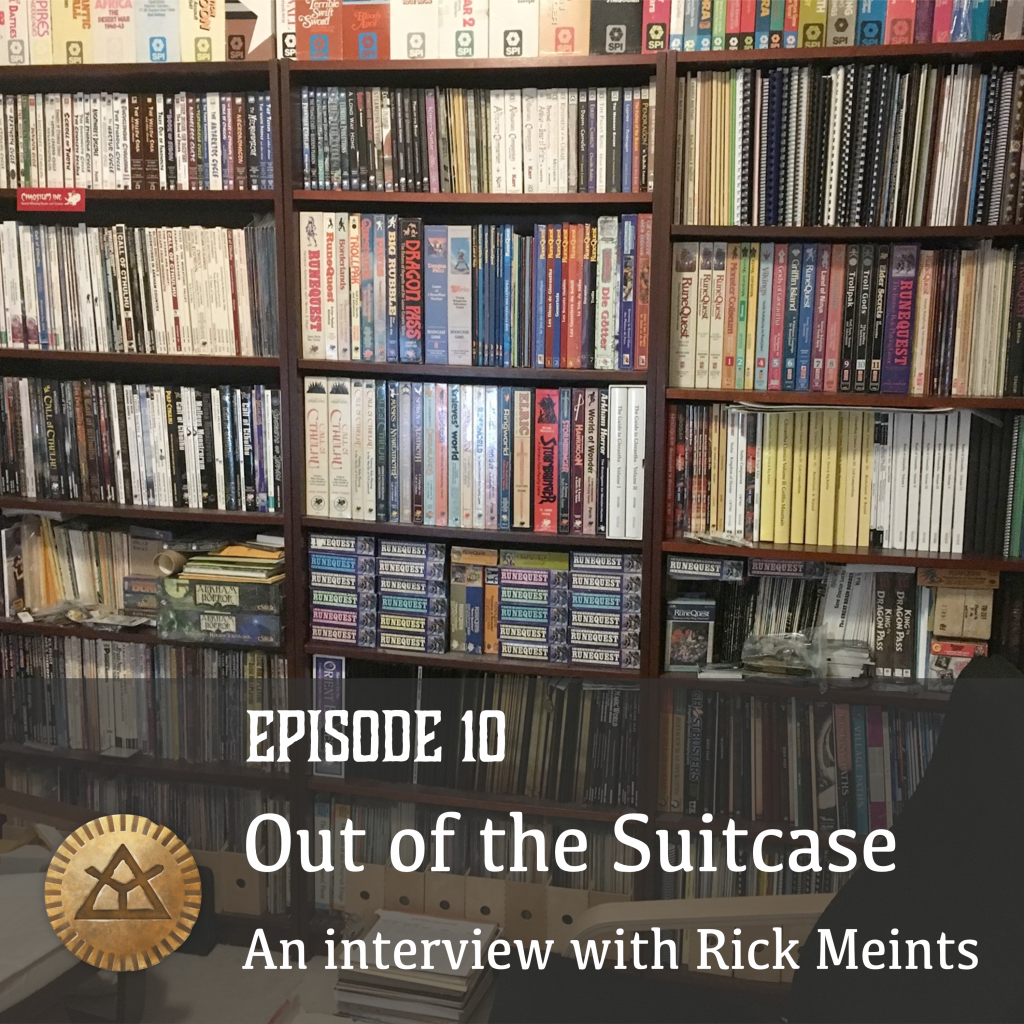
In this month’s episode of The God Learners podcast we are very happy to welcome Rick Meints, the president of Chaosium. He’s here to talk about collecting Gloranthan books, ChaosiumCon 2022, and more.
News
In the news section, Ludovic plugs the Journal of Runic Studies, our weekly newsletter. It features everything directly or indirectly related to Glorantha that we could find over the previous Red Moon cycle.
Joerg talks about the impending return of some of Ian Thompson’s Pavis materials by way of the Jonstown Compendium, Chaosium’s community content program on DriveThruRPG. These “remasters” might include things like the Pavis & Big Rubble Companions and/or A Rough Guide to Pavis.
From there we launch into a digression about Rick’s exhaustive collection, including the Pavic Tales issues pictured above. Some items from Rick’s collection will be available for sale at ChaosiumCon’s collectors auction.
Ludovic mentions the RuneQuest Starter Stream where James Coquillat leads new-to-RuneQuest players through the first two adventures of the RuneQuest Starter Set.
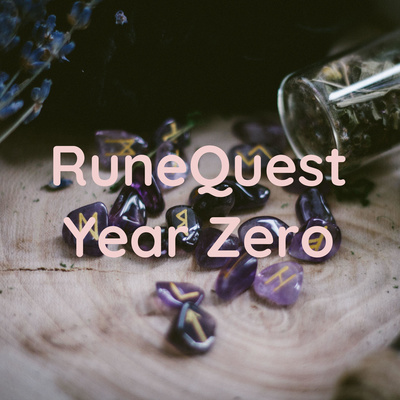
Then Joerg mentions RuneQuest Year Zero, a limited-run podcast by Baz Stevens in which he delves into the RuneQuest Starter Set without much prior knowledge about RuneQuest and Glorantha. Along the 11 episodes of the show, Baz shares what he likes and doesn’t like about the rules, the setting, and other material found in the box.
The Jonstown Compendium has been quiet in the past few weeks. Rick once again has all the books available in POD so far already, and plugs Nick Brooke’s index as a good way to stay on top of the publications (the 2021 index is here, the 2022 index is here).
Main Topic
For the main topic, we start with Rick’s path from the automotive industry to the presidency of one of the most beloved RPG publishers in history. Ludovic then shares his own shorter and weirder path to Glorantha.
During his time as a Chaosium fan, Rick had an unofficial “subscription” to all released products. Ludovic asks if any official subscriptions might come to Chaosium but sadly the logistics don’t make that idea viable at the moment.
Next, we talk about Rick’s MIG book, the Meints’ Index to Glorantha. It previously had two editions, and a third edition is being finalized and printed. The next version is bigger, in colour, and includes all the Glorantha material released in the 21st century.
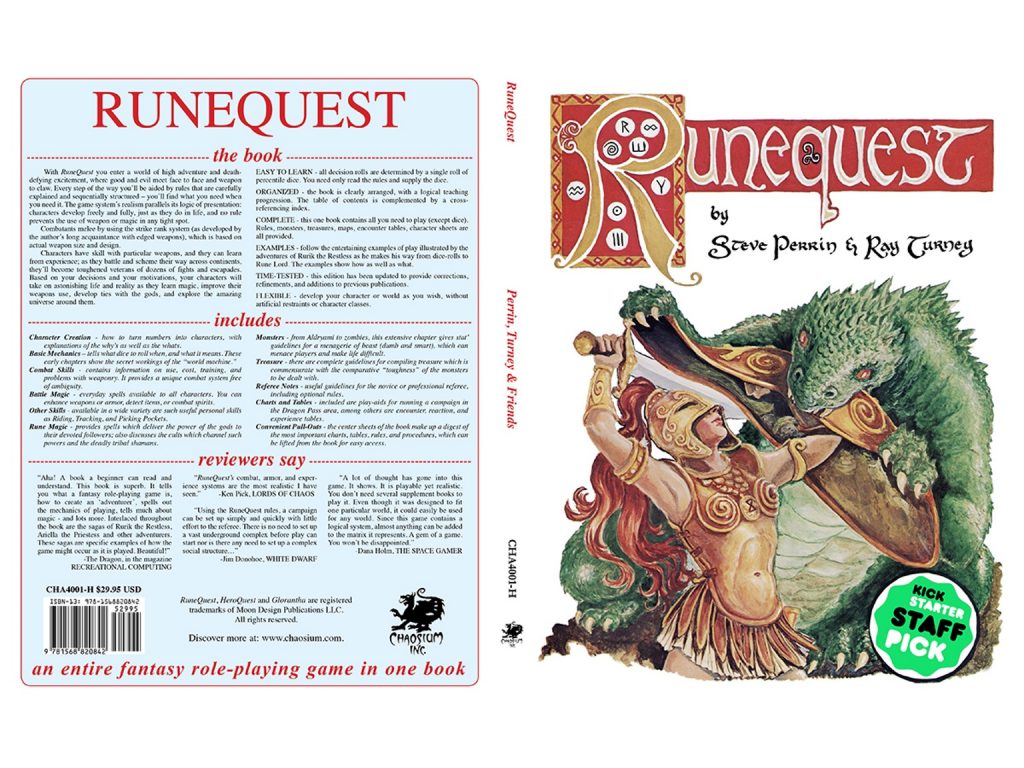
The back cover of MIG2 already had a format similar to the back cover of RuneQuest 2nd edition (picture above). MIG3 will even look more similar, from the book size to the colour scheme.
Here are some MIG3 pages Rick shared over the last few months on social media:
Rick also explains how the write-up for old material has gained in depth, thanks to his access to the Chaosium’s archives, and to his time spent interviewing many figures of the early RuneQuest eras.
Ludovic asks Rick about foreign licensees, which have been previously off-limits for the MIG since Rick can’t read them and it wouldn’t fit in the page count anyway.
We go on for a bit about the various styles of foreign RuneQuest covers, while Rick once again grabs a few books from his shelves to illustrate the point. MIG3 will have a small appendix dedicated to these foreign editions, but not much more.
Next, we talk about Wyrms Footnotes, why it hasn’t come back, and why it probably won’t, since most authors now get their Gloranthan writing fix through the Jonstown Compendium. This leads us to chatting about how great the Jonstown Compendium is, and how happy Chaosium is with their community content programs in general. Ludovic is a bit sad that the whole OSR zine revival passed by Chaosium without them paying much attention to it, but is also happy that they put their energy and resources into a good quality community content program.

And while we talk about Chaosium’s “master plans” (or lack thereof), Ludovic asks whether Chaosium intends for Glorantha and RuneQuest to be synonymous for the foreseeable future, or if Glorantha will indeed stay a bigger franchise that encompasses other game systems. Of course, 13th Age Glorantha is out of Chaosium’s hands, but Rick reveals that Chaosium does have the intention of having some Questworlds Glorantha books, even if some of it might only be conversion guides for using RuneQuest adventures in Questworlds.
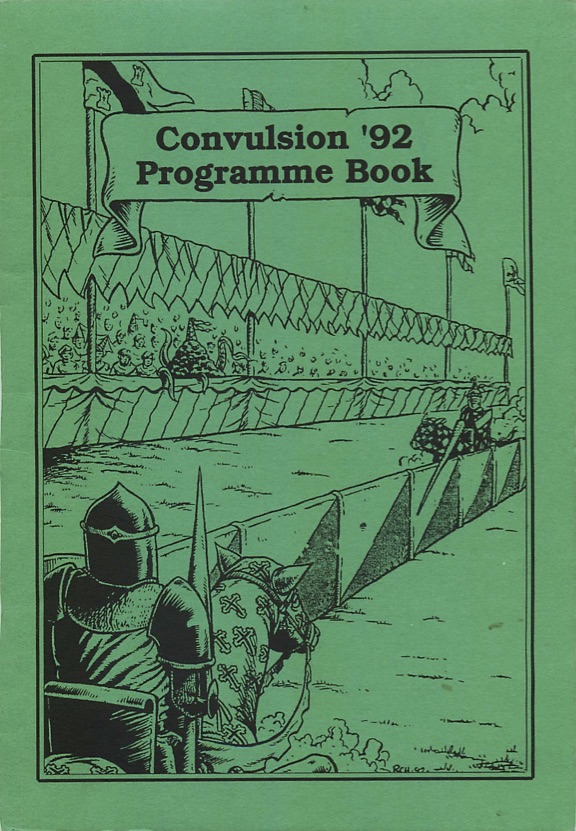
There is a digression on Cthulhu Live and Gloranthan free-forms. Rick did include free-forms in MIG3, but shares why LARP books generally sell poorly. Ludovic talks about the opportunities of RuneQuest splatbooks that could sell more, but Rick reveals that Glorantha isn’t conductive to this because all the “character classes” (i.e. the cults) are too woven together to be handled independently. This is why the upcoming Cults books are so big and taking a long time.
We chat for a bit about the difficult task of juggling between the old cranky fandom of Glorantha and the desire to attract new people to the setting. Chaosium has, of course, the RuneQuest Starter Set for the latter, but also a few other ongoing projects, such as the Glorantha video-game still being developed, plus other initiatives such as VTT integration, which is taking longer than Chaosium intended.
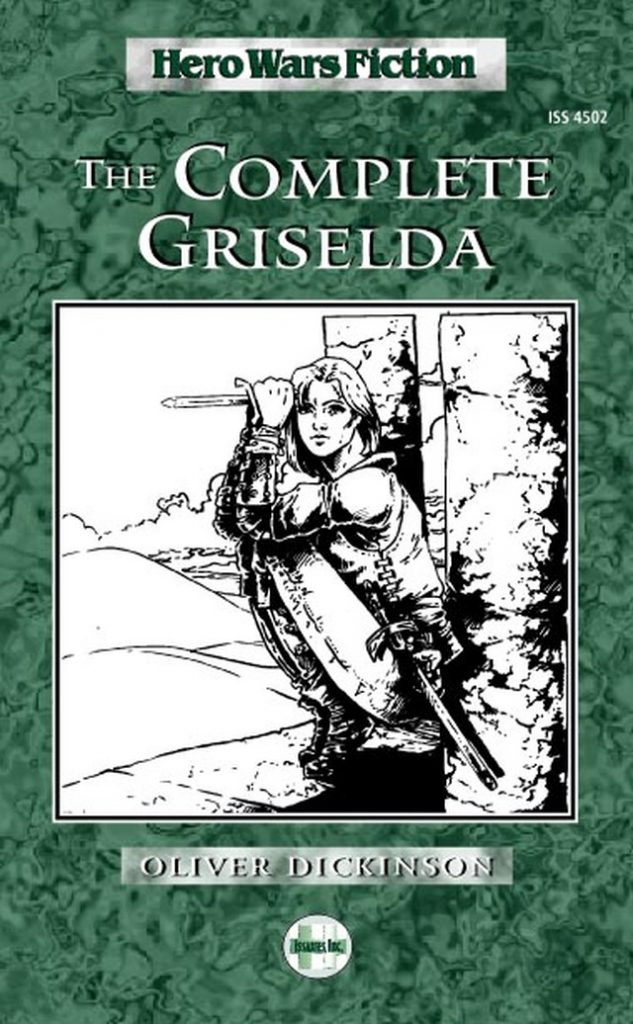
Joerg asks about Gloranthan fiction, which is another good possible entry point. Although Rick would like to publish something, there just aren’t many (if at all) authors pitching Gloranthan stories to Chaosium. In the meantime, there’s old fiction such as Griselda’s tales still available.
Joerg also asks about the return of Gloranthan board games, which might prove to be another effective entry point for new people. Rick gives a small update on those, and what the design direction is. He also mentions the board games that never were, like the Tournament of the Masters of Luck and Death and Shadows Dance games.
Ludovic moves on to rare collector’s items, such as the RuneQuest playtest documents, the Roots of Glorantha series, or the Greganth Atlas (picture above), asking if these things would ever be available in some form or other. This is tricky to do for various reasons outlined by Rick, but he does reveal some upcoming booklet called “the Stafford House Campaign”.
The cover can be seen in the first picture above. This booklet contains Greg Stafford’s “Dragons Past” columns from a couple 70s and 80s magazines. These articles tell the story of his RuneQuest campaign. Rick also found in a binder a few unpublished stories about Greg’s Holy Country campaign.
As for other rare collections of Greg’s notes, a lot of that content is making it in a more polished and playable form through the new RuneQuest Glorantha line anyway.
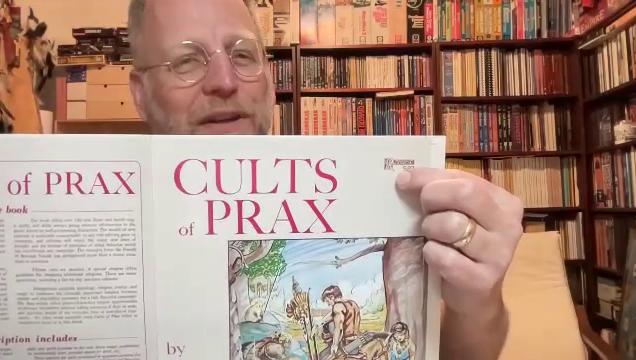
Finally, Ludovic asks one of his burning questions about the “SP” denominations found on RQ2 supplements, and in particular why he has two PDFs of the Sea Cave labelled SP7 and SP8 respectively. Rick reveals the simple solution by pointing at the first edition cover for Cults of Prax (seen above).
Credits
The intro music is “The Warbird” by Try-Tachion. Other music includes “Cinder and Smoke” and “Skyspeak“, along with audio from the FreeSound library.
Glorantha Initiation: Steinar, Sandals, Internet Memes, and the Elmal Rant
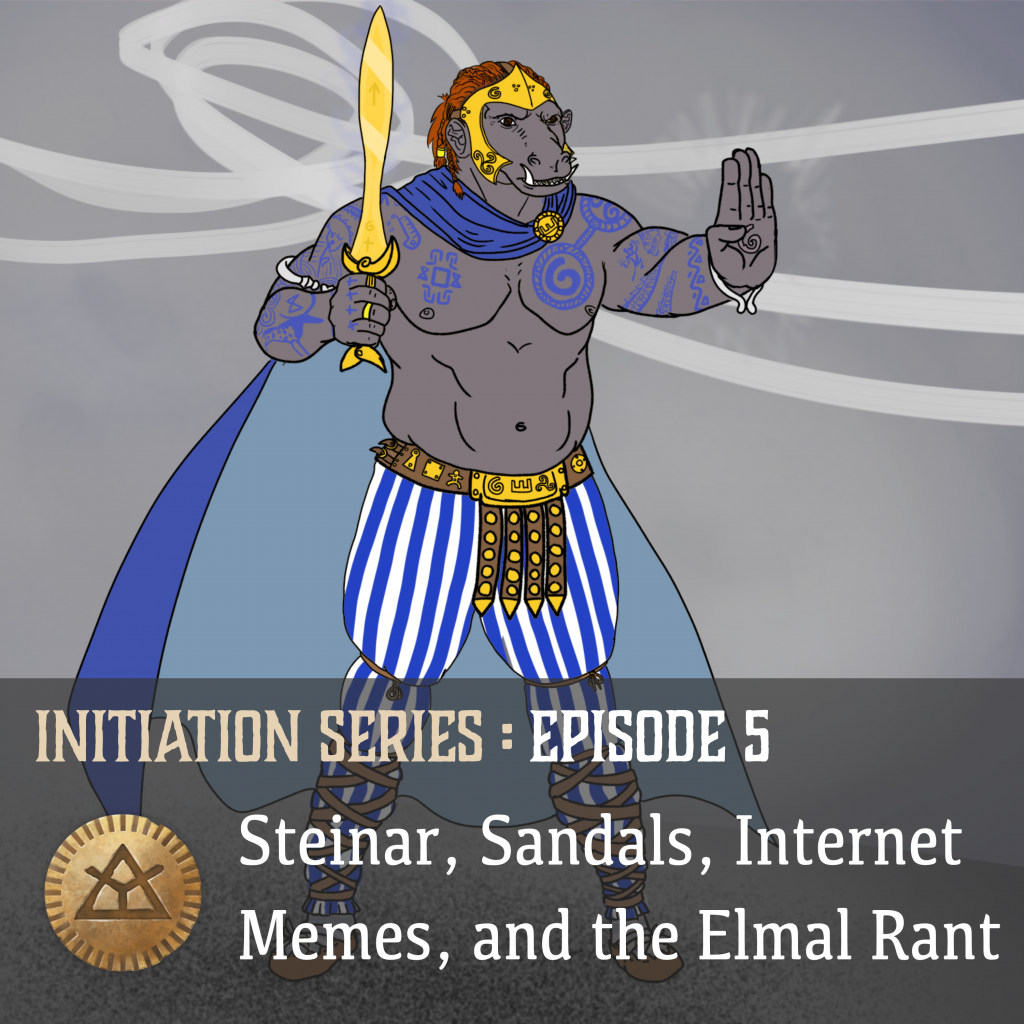
In this new episode of the Glorantha Initiation series, we welcome Steinar, aka Felix, aka Coffeemancer. We talk with him about convincing players to try RuneQuest, getting started with King of Dragon Pass, stealing Lunar officials’ sandals, and adapting funny internet memes to Glorantha. Also: Steinar gives us his “Elmal rant”!
Mentioned in this episode:
- The BRP Central thread that drew Steinar out of Pinterest anonymity
- Steinar’s “coffee-stained sketchbook“
- The Duel at Dangerford
Here are examples of Steinar’s art, although there’s a lot more to it than these stupid memes:
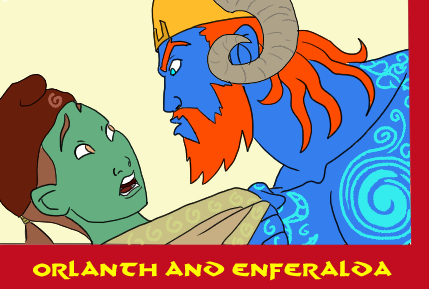
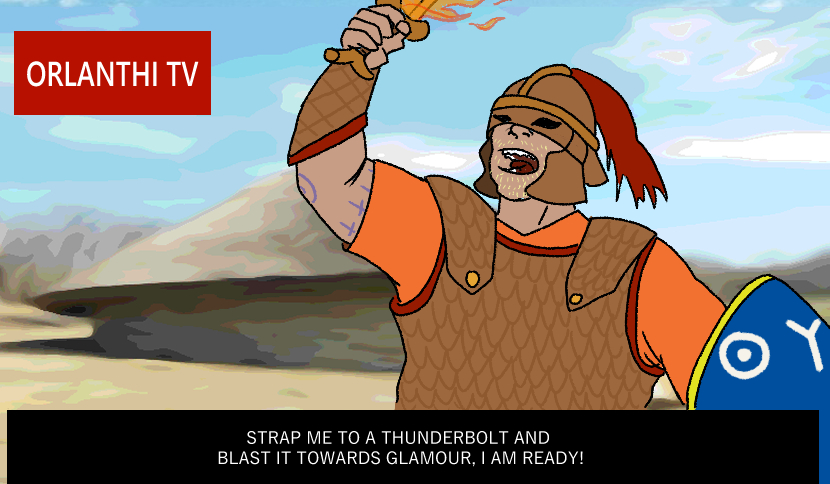
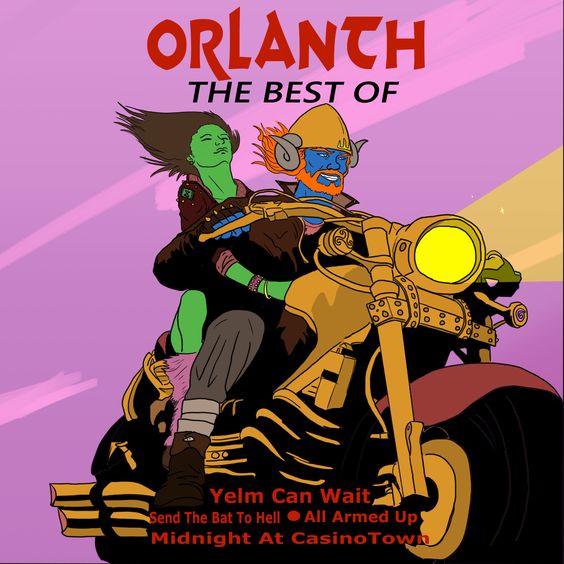
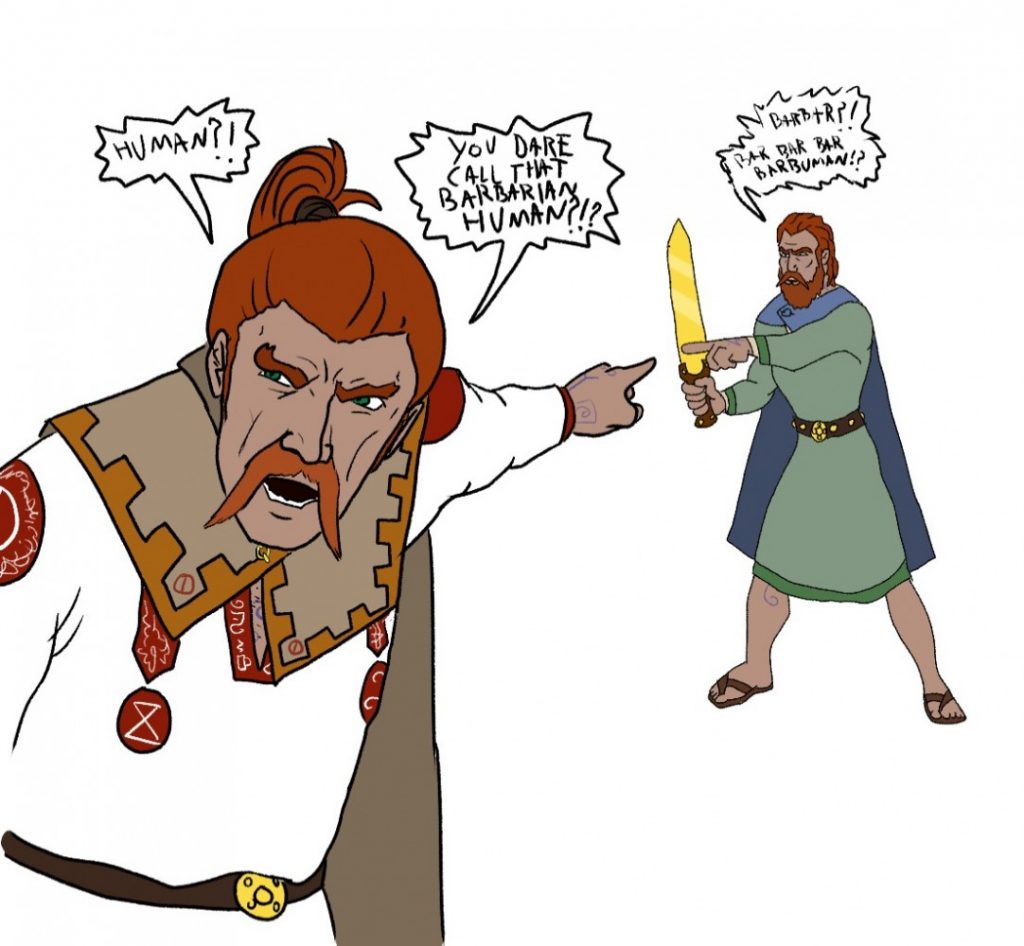
Episode 9: Nomad Gods (Part 1)
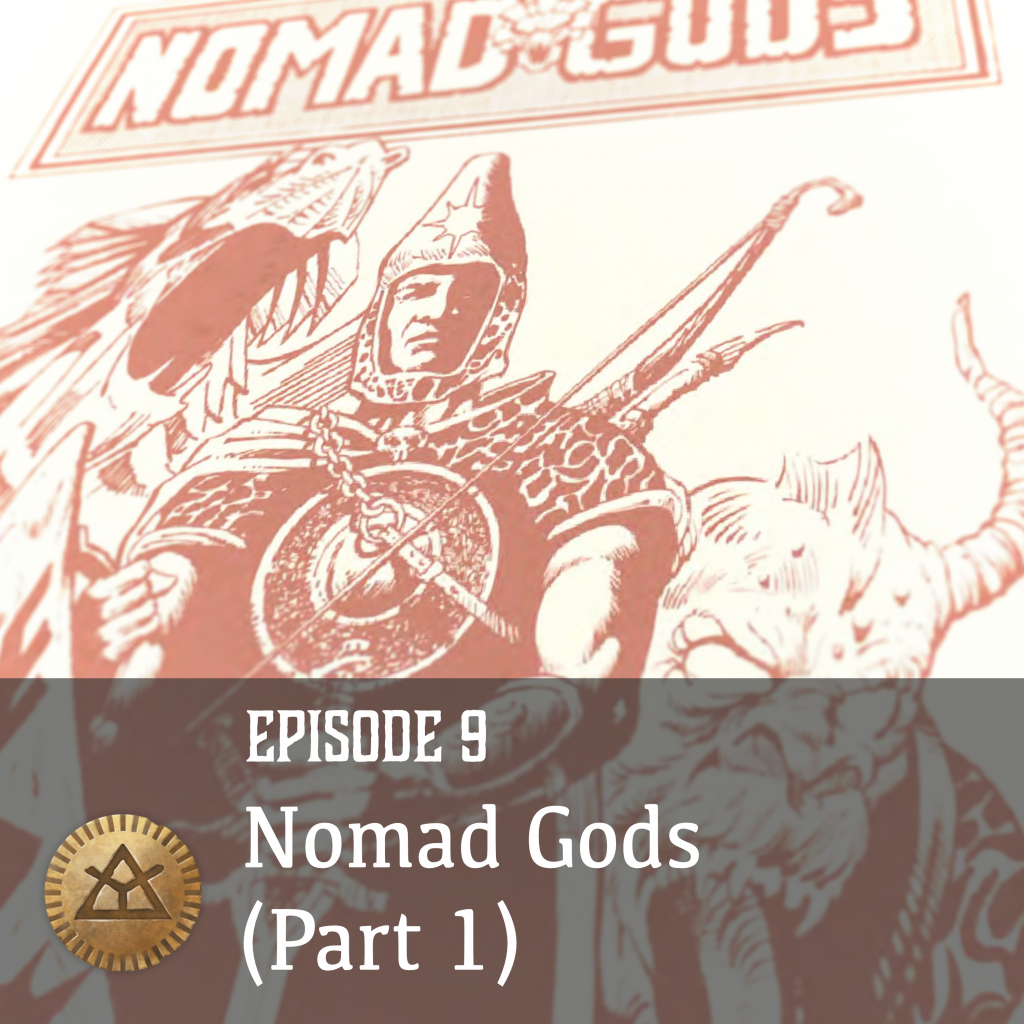
We apologize for the tardiness on this episode: we are not used to Earth’s weird calendar where one month is surprisingly shorter than the others. Plus, Ludovic was busy with work and with writing two convention scenarios for ChaosiumCon. It also didn’t help that this episode was a lot heavier on the editing than usual.
Without further excuses, this month we welcomed Chaosium’s David Scott again. This time he was present wearing his “Prax expert” hat in order to chat about Nomad Gods, the 1977 board game designed by Greg Stafford.
News

In news, Ludovic mentions that his first Jonstown Compendium item it out. A Short Detour is a RuneQuest adventure with a complex moral dilemma, and a (hopefully) insightful appendix on everybody’s favourite Gloranthan power.
As always we also mention the Journal of Runic Studies, our weekly newsletter of Gloranthan news. If you’re not subscribed by email or RSS, do it now!
Joerg gives a shout out to other podcasts and streams:
- The Exploring Glorantha videos from Evan and JM (which Joerg incorrectly credits as “JD”… sorry JM!), including this interview of Rick Meints.
- The Vintage RPG podcast’s episode on RuneQuest.
- Chaosium’s official RuneQuest Starter Stream, which is up to its third episode at the time of writing.
Ludo mentions that his French edition of RuneQuest has arrived (you can read and see more about it here). After fumbling around to remember the name of the artist who did the French slipcase art (it’s Joann Sfar), David takes us in a tangent about foreign RuneQuest editions’ art, starting with Oriflam’s cover for Dorastor:
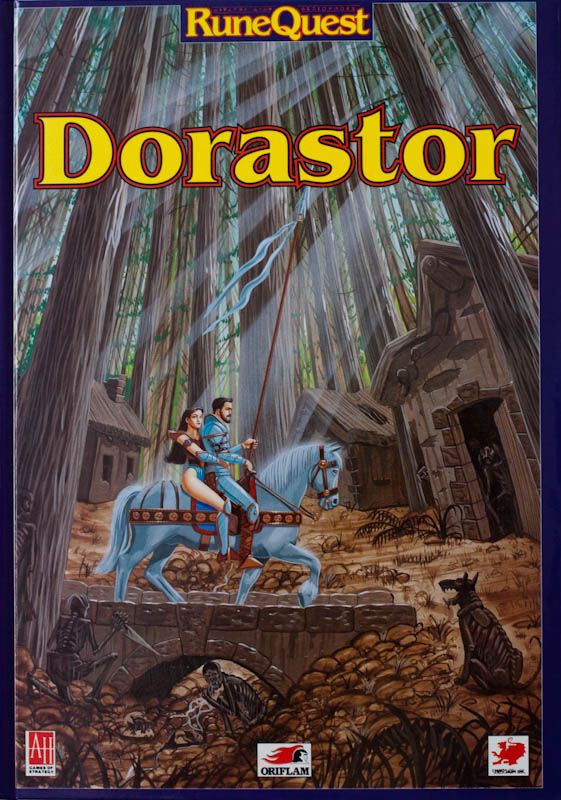
Once again, we have difficulty to remember the name of the artist (it’s Hubert de Lartigue). There’s more information on the Well of Daliath.
Joerg also mentions the German art for Apple Lane:
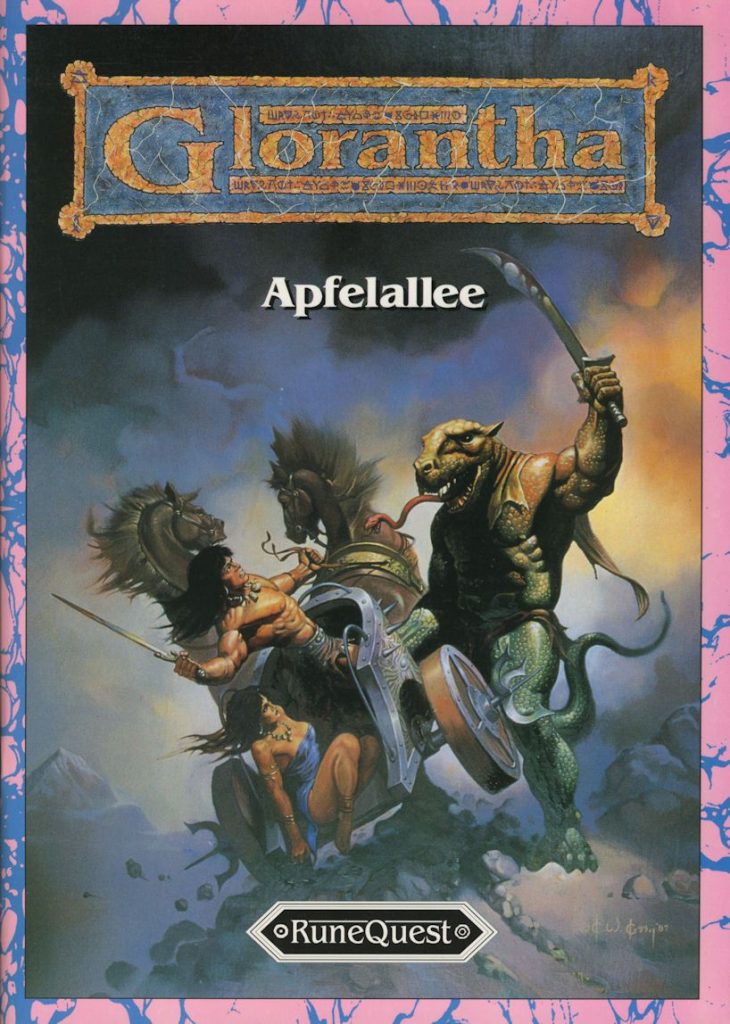
Speaking of the Well of Daliath, our tangent takes us to another tangent to celebrate this very useful resource for Gloranthaphiles. David Scott is the principal maintainer, but receives help from volunteers. We discuss how the timeline of Dragon Pass and the Prosopaedia are Ludovic’s most frequently visited pages.
Main Topic: Nomad Gods
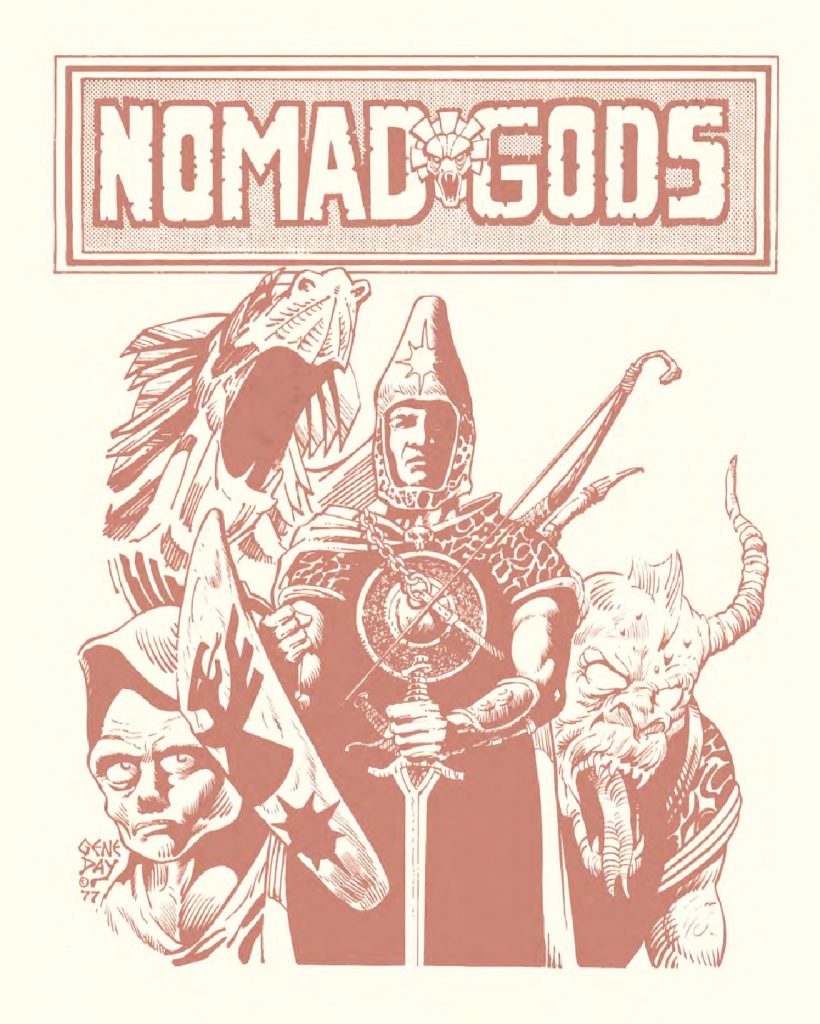
We start talking about Nomad Gods, as promised. To follow along, listeners who aren’t rich or old enough to own the game can purchase the PDF of the rules booklet from Chaosium for a bit less that $9.
Many pictures (including pictures of the board and the counters) are available on the BoardGameGeek page for Nomad Gods.
Assuming you have the rules (or make them up), you can also play Nomad Gods on Vassal, using the appropriate module. There’s also a module for Dragon Pass.
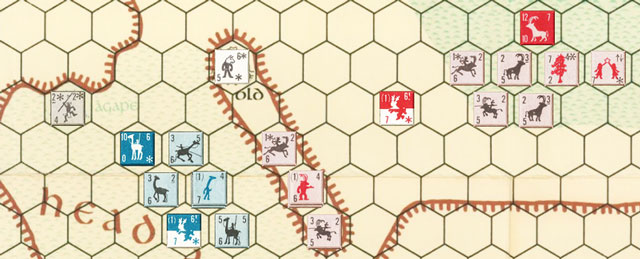
David runs us through the process of extracting the map and counters art from the module file, which is a simple ZIP file with a different extension.
Here’s the map of Nomad Gods:
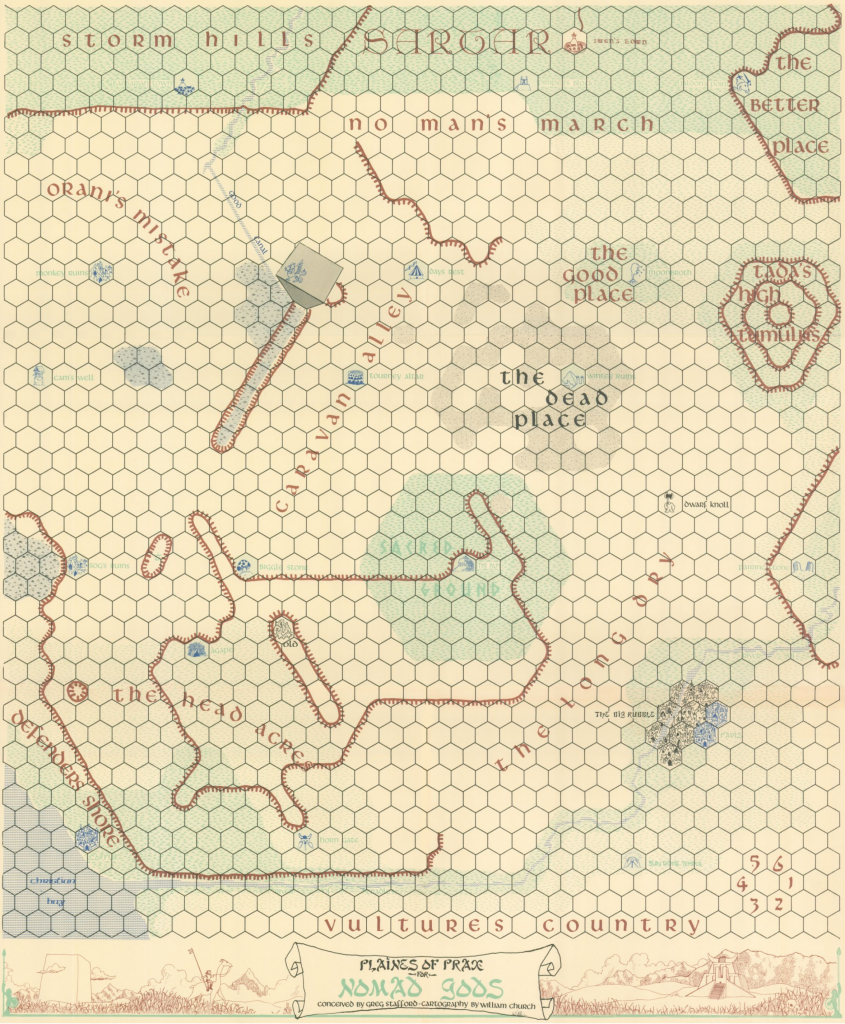
Then we start looking at the art on the counters. David shares some photos of early prototype counters:
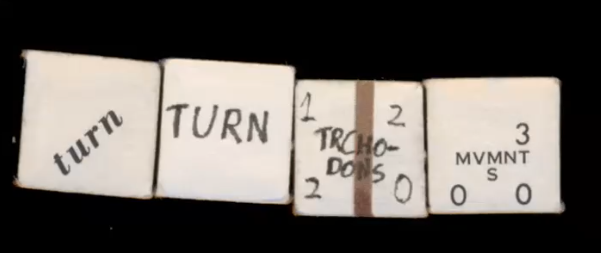
And then we look at some pre-production chits of the alchemical transformer (left) and Jar-eel (right).
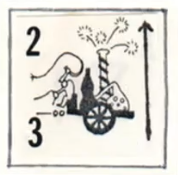

We can’t show the assembly boards with chits on grid paper, or lunar units with the red filter sheet taped over them, but you can probably imagine how, errr, “crafty” it looks like. The result can be seen below in the finished product, and it looks similar to how most other wargames of the time looked like, as far as I can tell:
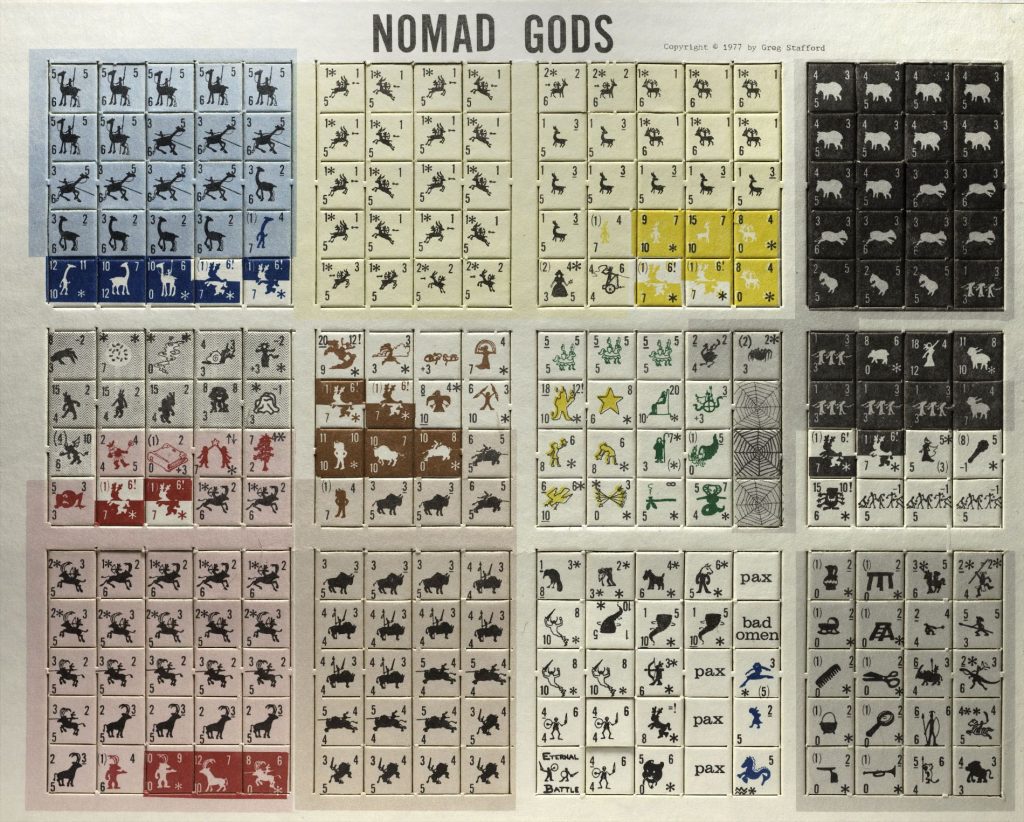
Next, David talks how Greg was still “exploring” Glorantha at the time, with many names just thrown on the map as nods to his friends (refer to the map above). These locations were only further developed when there was a roleplaying game to do that, and this of course happened with RuneQuest and Cults of Prax. The sound you hear at this point is David unfolding and re-folding his Nomad Gods map!
Where did names like Orlanth came from? Where did the many places in Prax come from? We don’t know. The creative process is a mysterious thing.
David recalls how “amazing” these 1970s wargames looked like: they came in ziploc bag, as shown below:

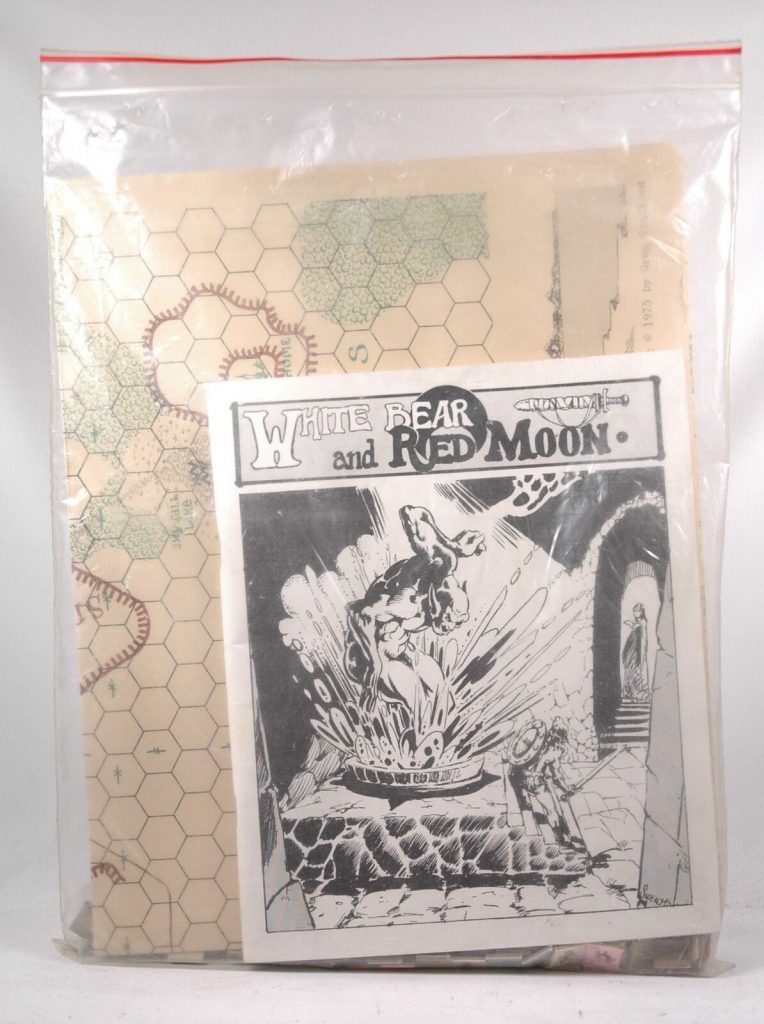
David talks to us about his first fantasy board game, Divine Right, from TSR.
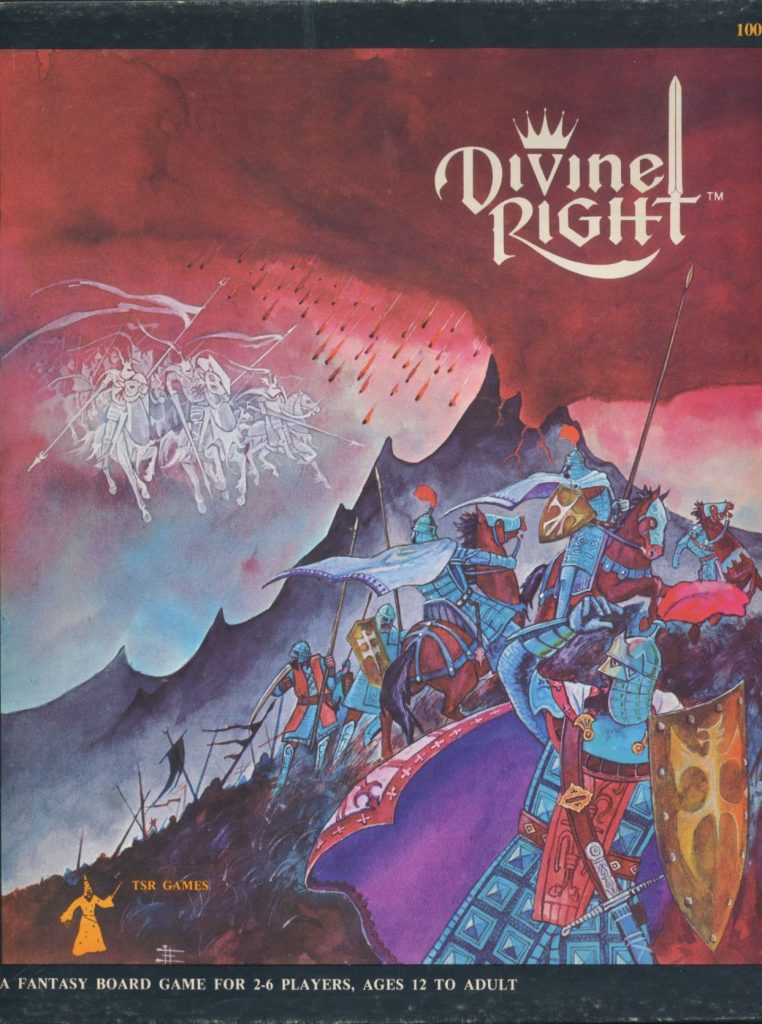
The game map looks very much like the Dragon Pass map:
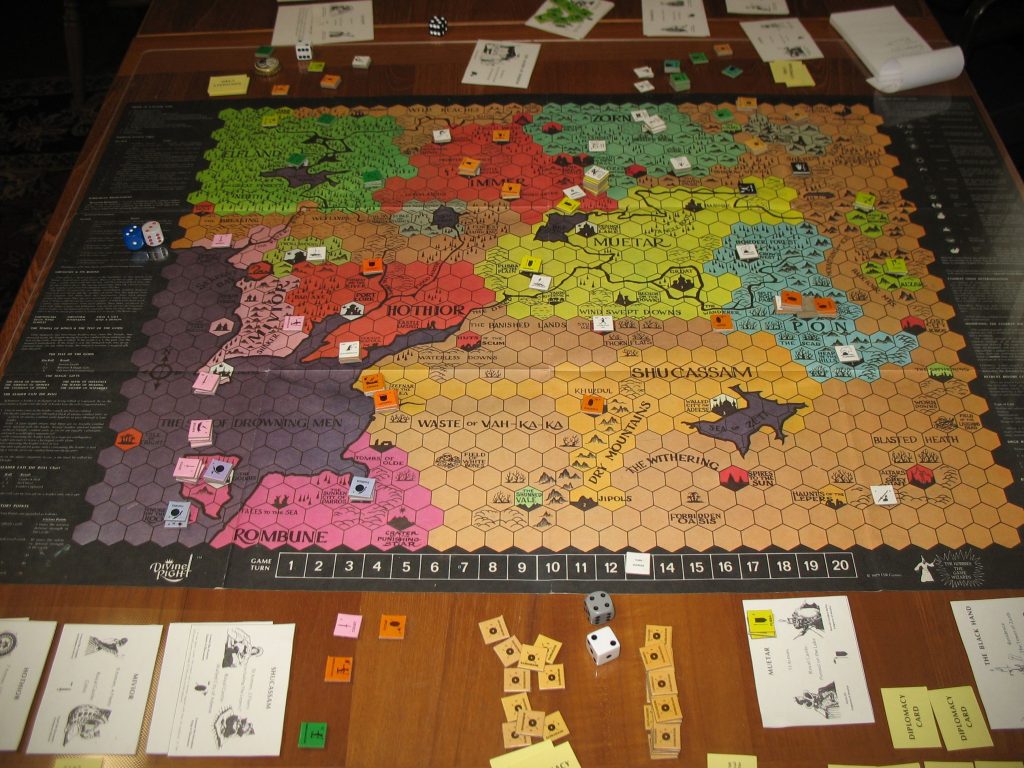
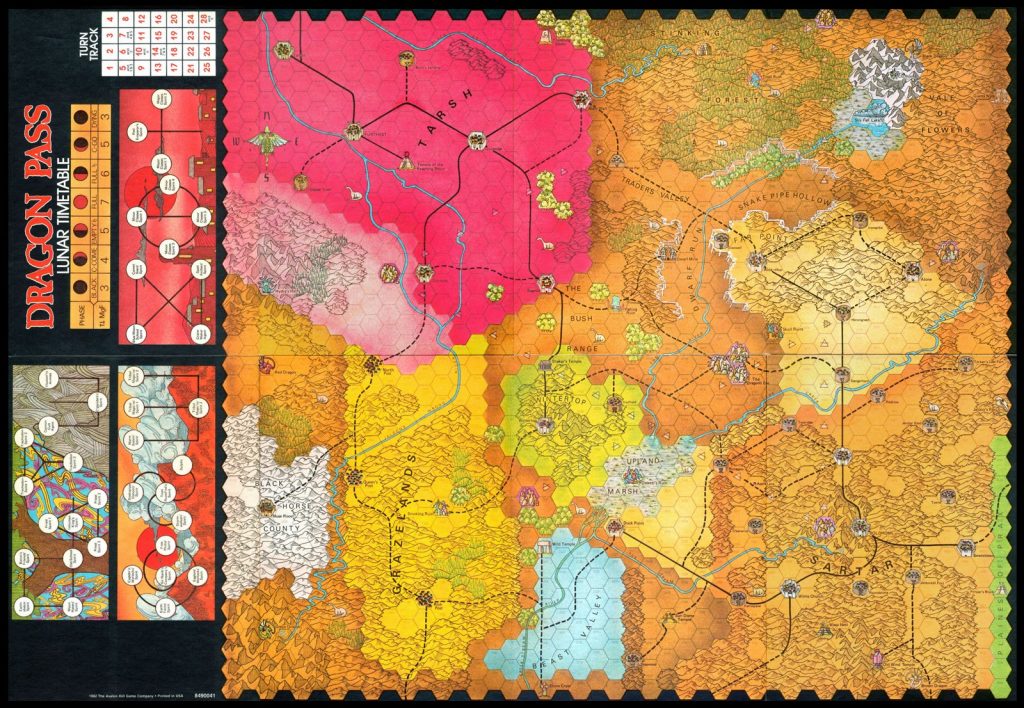
Some of the setting lore in Divine Right (sorry about the blurry Zoom screenshot):
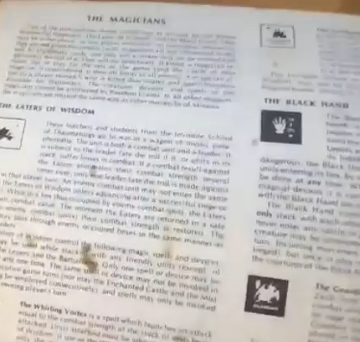
Divine Right’s NPC cards look like this, with the random cards to apply to them:
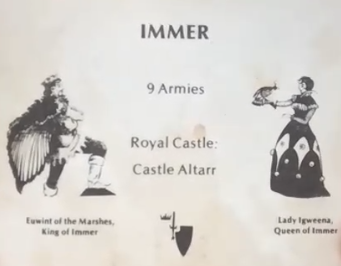
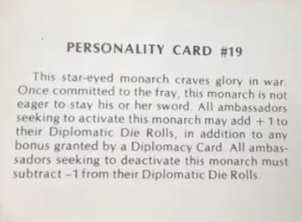
We finally start looking at the Nomad Gods booklet. David runs us through the names in the credits (and how they’re tied to Glorantha).
Joerg and David talk about the difference of rules between the editions. Ludo asks about the spelling of “Plaines of Prax”, or the reason for making the map sideways (with North pointing to the right)… apparently we don’t know!
We talk about the mythology and history of Prax, as presented by the rulebook, and how it’s still guiding the design of Prax nowadays.
There was supposed to be a third board game (advertised in the Nomad Gods booklet!) but this third game never happened. David shares anecdotes about it, and mentions Greg’s Holy Country game, which explored the themes of that unpublished game.
We look at the art pieces found across the pages. The cover can be seen above at the start of this chapter of the show notes. The Zebra Riders and the big battle spread are shown below:
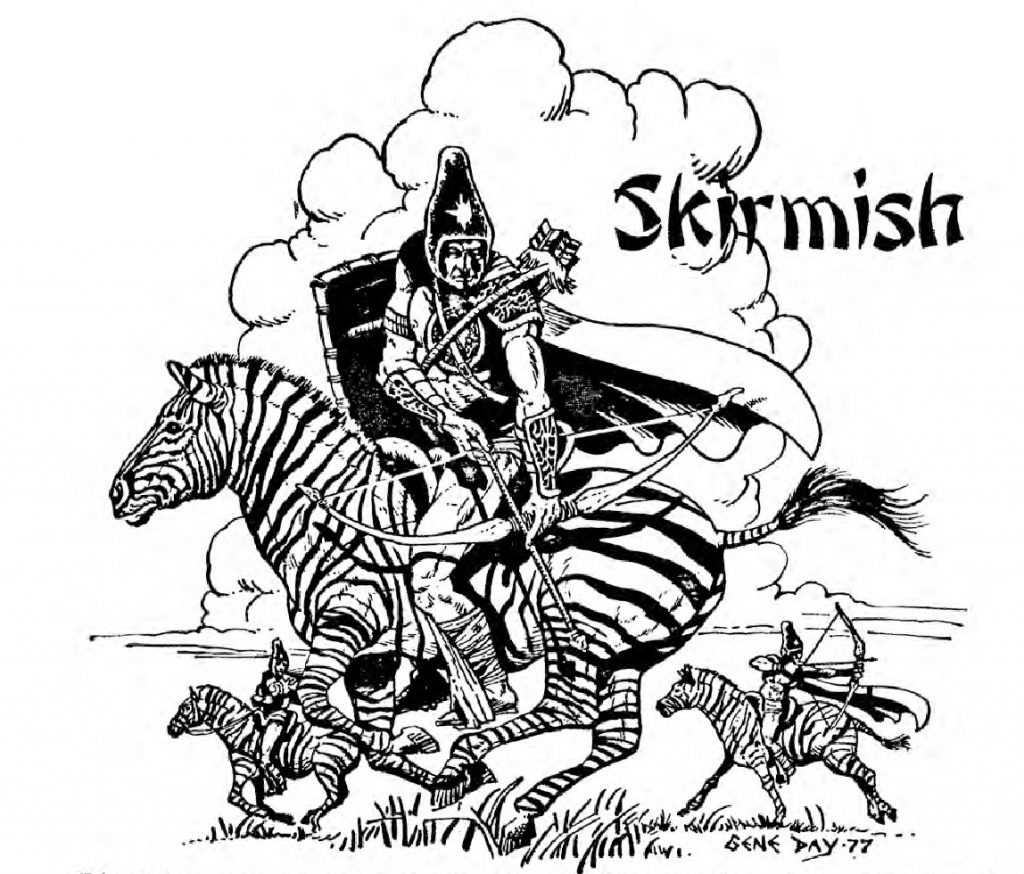
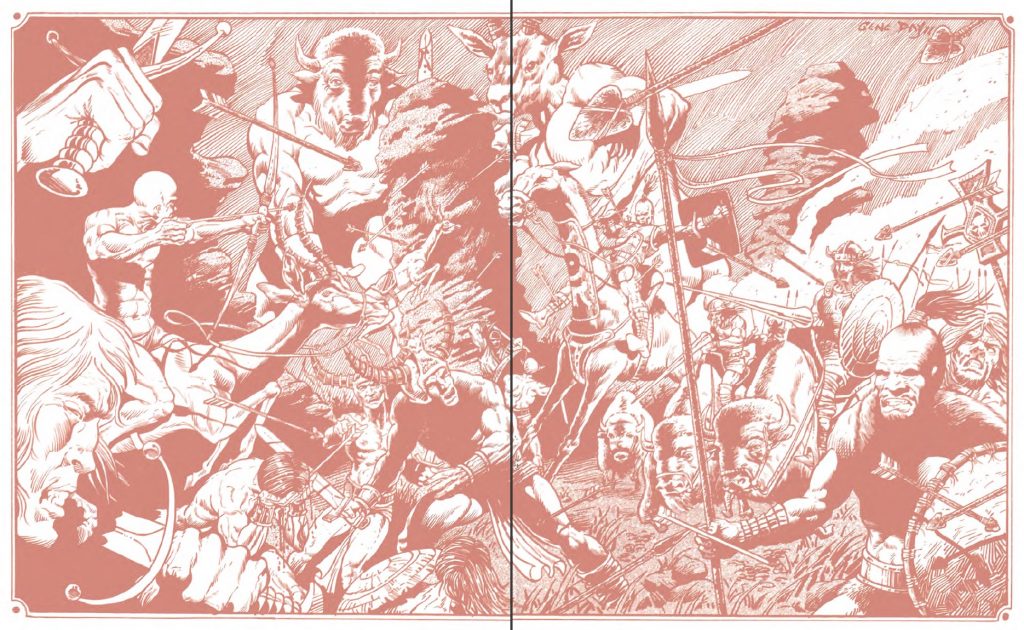
For the weird-looking sci-fi picture of Argrath, the greek-inspired Ronance, and other illustrations we talk about, you’ll have to get the PDF of Nomad Gods! Nomad Gods is where we get many first looks at things like the Devil, Broos, Dragonsnails, and more.
Ludo talks about using board game rules, scenarios, and events as ideas for RPGs. This sends us on a tangent about Jaldon Toothmaker, one of the main figures of the board game. Did he really gnaw through the walls of Pavis? David has a theory.
Nomad Gods has a big recurring theme of dead gods and heroes who can be called back when the Praxian tribes need them.
Unlike White Bear & Red Moon (and Dragon Pass) where you play the Hero Wars, Nomad Gods has a more artificial setup, where you play practice drills, tournaments, and such.
Moving on to the counters’ stats, Ludo mentions how some of these can be used to drive faction play or tribal history, but David says those stats are probably defined like that only for game balance.
The hexes on the map have different properties in terms of resources, from the fertile grounds of the Paps to the desert of the Dead Place. We also go through the landmarks, and how they are represented on the board, compared to what we now know of them.
As we look at the five major tribes of Prax, our discussion goes into the matter of the Covenant, and what little we really know about it. We debate whether the Morokanth are omnivores or mostly vegetarians. Ludo’s Glorantha seems to align with Sandy Petersen’s on that topic, but Chaosium is going with Greg Stafford’s wishes. David explains why, and what it means for the Morokanths’ role in Prax.
Speaking of Morokanths, David talks about the Most Respected Elder, the current of which is a Morokanth. David explains how to run games that really make use of the nomadic lifestyle. Joerg asks how to include the Eternal Battle to life in Prax.
David starts talking about spirit cults and theism in Prax, and how Praxian mounts really survive on the chaparral: it’s a secret that’s not written down anywhere but Greg told David, and David now tells us! (although he has shared it on forums before so it’s not exclusive)
Ludo asks about the Zebra Riders. David gives a not-so-short version. He also explains the cycle of representation of tribes in the Most Respected Elder position. Then, as we look at the other “independent tribes” of Prax, David reminds us that apart from the Rhino Riders, all these tribes are pretty tiny. Ludo mentions the Cannibal Cult, and David gives the actually-short version of what they are.
As we reach the beginning of the “Magic Game” section, Ludo tries to wrap up the episode but fails utterly. We launch into a discussion of Sartarite games vs Praxian games, and what the role of Praxians is in the Hero Wars. We share some ideas for Praxian campaign frameworks, and David talks about the “big events” that could happen there. Eventually, Ludo manages to wrap up the episode for good.
Credits
The intro music is “The Warbird” by Try-Tachion. Other music includes “Cinder and Smoke” and “Skyspeak“, along with audio from the FreeSound library.
Gloranthan Initiation: Skulldixon, The Unnecessary Severed Leg, and Ducks
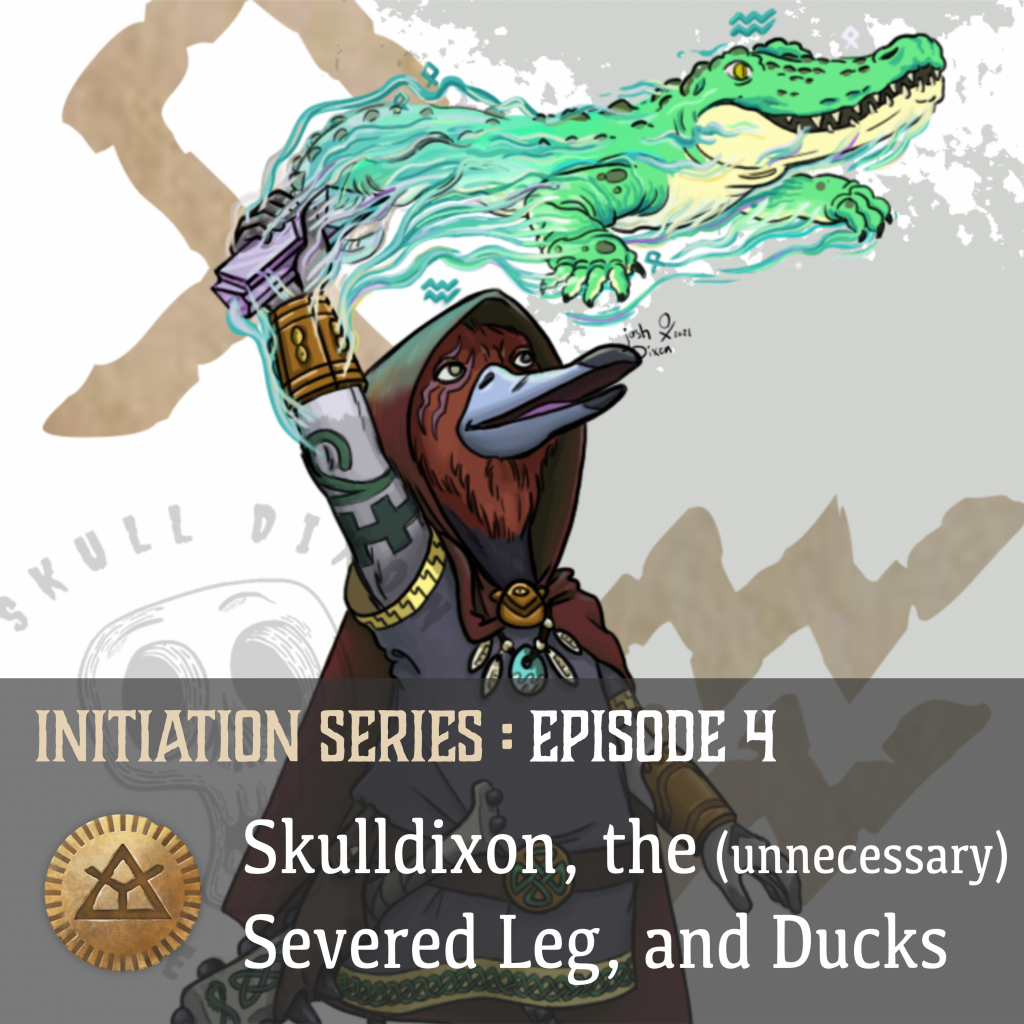
For this fourth episode of the Initiation Series, we chat with Discord regular Skulldixon, which is apparently how everybody actually calls him except for his parents. Skull (let’s call him Skull for short?) talks about his campaign, all the numerous things he likes about Glorantha and the RuneQuest system, how to deal with mountains of lore, and more.
Of course we also talk about Skulldixon’s art (which features such pieces as the ducks above) and his own RPG products, all of which can be found on his website, and on DriveThruRPG. The cover image for the episode is of course also by Skulldixon, and used with permission.
We also mention:
- Kraken chapbooks are currently unavailable due to licensing around the trademark “HeroQuest”. More information here.
- Robin’s Laws of Game Goodmastering, available from Steve Jackson Games, among other fine places.
Episode 8: The Early Days of Glorantha (Part 1)

We are joined on this trip down memory lane by Doc Cowie, Doc sums up his credits as “40 years RuneQuest player, published one scenario”. Ludo also gets Doc to talk about his custom-made bronze shield depicting Chalana Arroy fighting Chaos, made by Type 40:
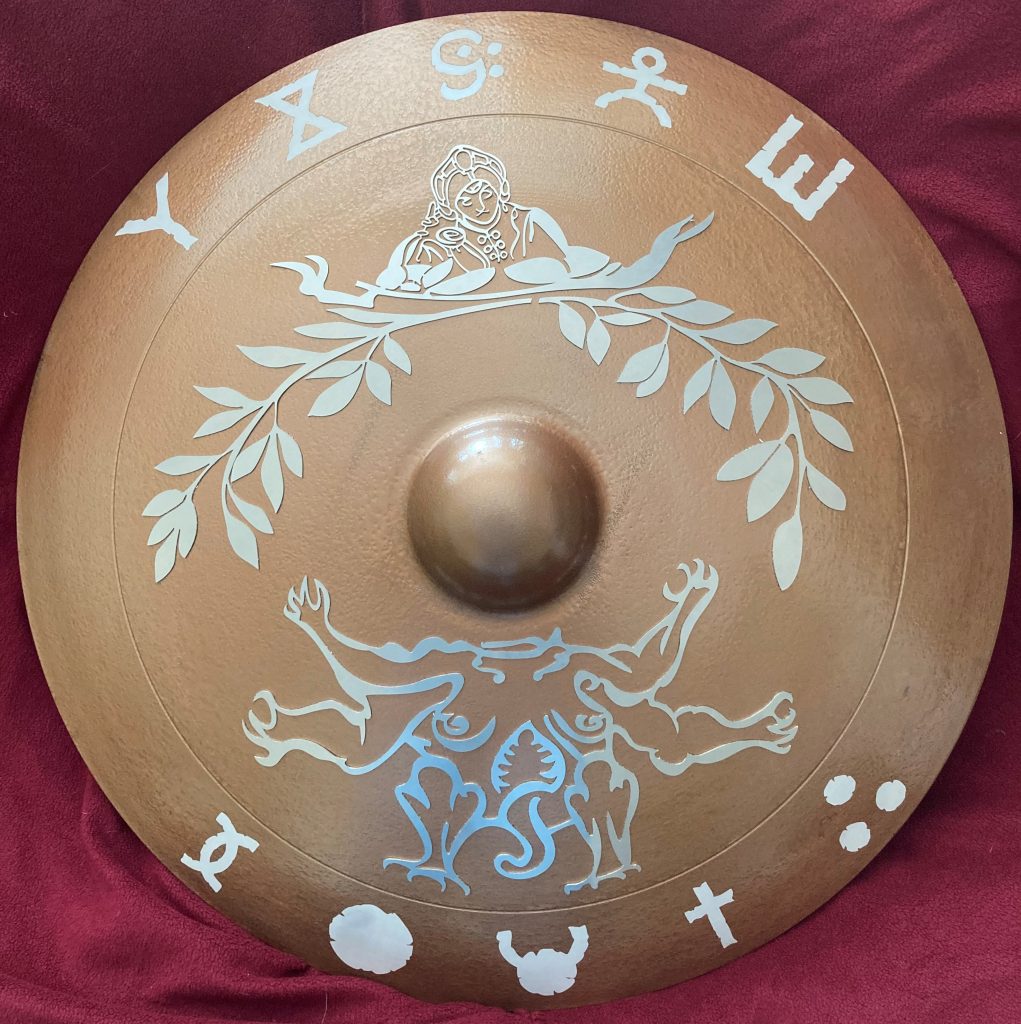
The RuneQuest shields were originally high-level stretch goals of a crowdfunding campaign, although they had a different design:
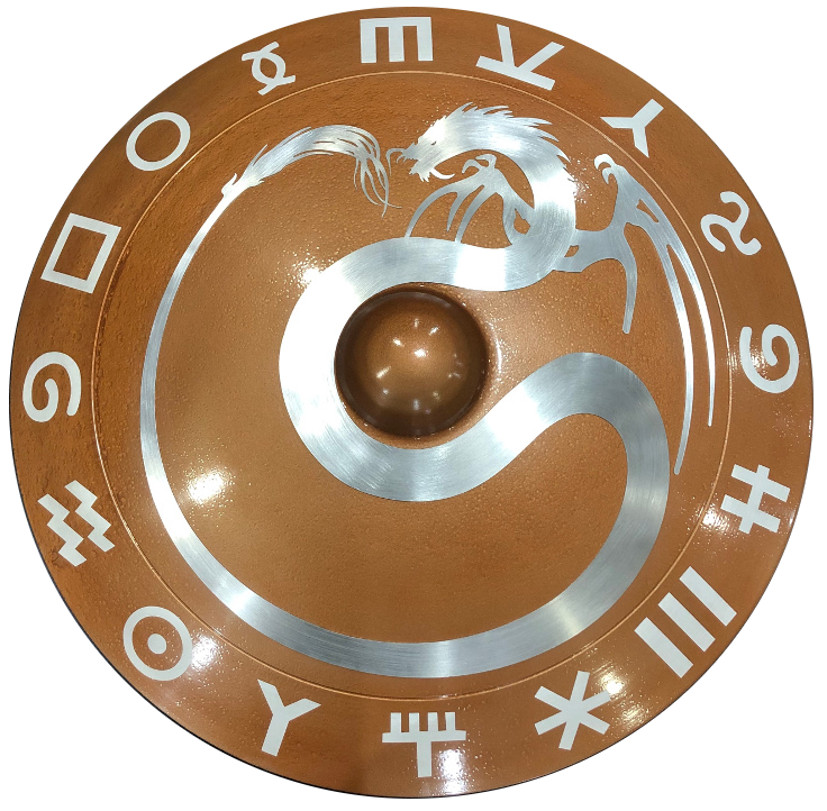
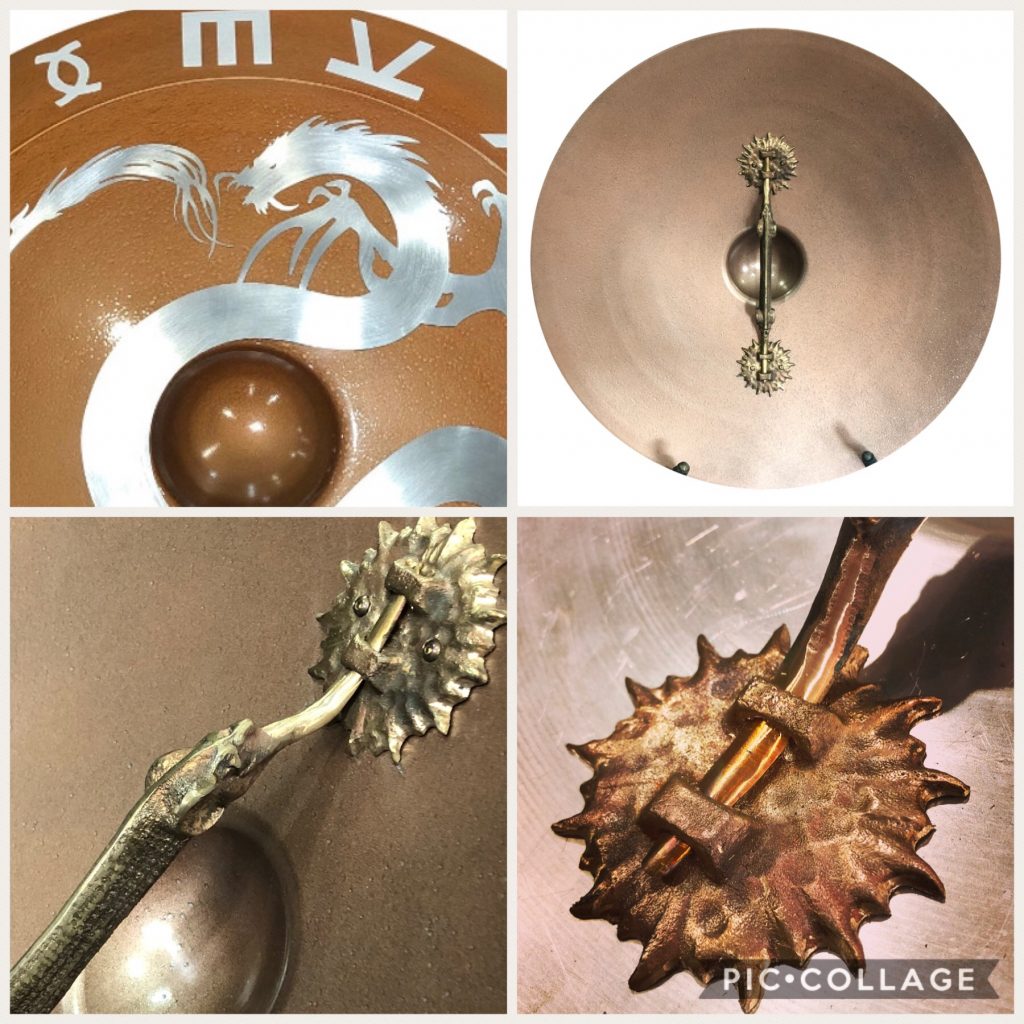
News
The corrected Weapon & Equipment Guide pdf has been released, fixing some of the initial oopsies.
Jeff’s interviews on the Chaosum Youtube channel on the 2022 RuneQuest plans.
The Early Days of Glorantha
Doc offers a very UK-centric perspective of how one would encounter and learn about Glorantha.
The first big UK release was “The Lair of the White Wyrm”, a RuneQuest scenario in White Dwarf in 1979.
Doc holds up his Games Workshop edition of RuneQuest 2, which he acquired at age 12.
Doc had actually picked up Cults of Prax at the Games Workshop store before acquiring RuneQuest, and remembers how he was awed and overwhelmed by that tome..
Doc outlines the competition of D&D and AD&D: There was Tunnels&Trolls and Traveller, and there was RuneQuest.
Doc recalls being intimidated by the entire concept, and kept it on the “mystical and somewhat obscure” pile of games.
Having played and enjoyed the Apple Lane scenarios (Gringle’s Pawnshop and Rainbow Mounds), the game went into a hiatus because his group was unsure what to do with this game beyond those published scenarios.
Griffin Mountain (the Games Workshop edition, again) came as a revelation what to do with RuneQuest. Doc recounts how their group distrusted the cults, and how their group had a Zorak Zorani troll and an elf in the party, with the two characters being good friends.
We discuss the sophistication of early teenage boys tackling a fantasy setting, roleplayer elitism and an instinctive “Your Glorantha May Vary” stance as the GM.
Doc recounts his experiences as regular GM until one of his players started to run a Pavis and Big Rubble campaign, alternating with Doc’s Griffin Mountain game.
Dpc pulls out his stack of photo-copied reference sheets, hand-outs and index cards.
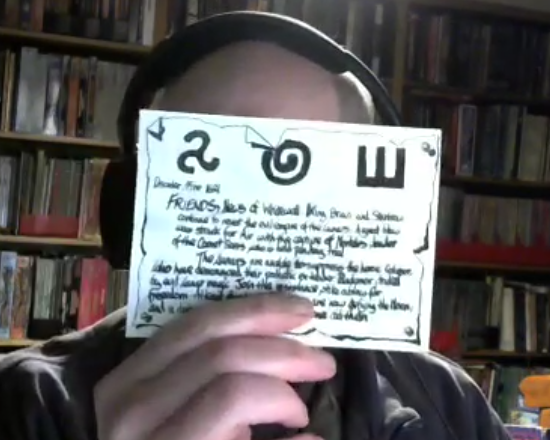
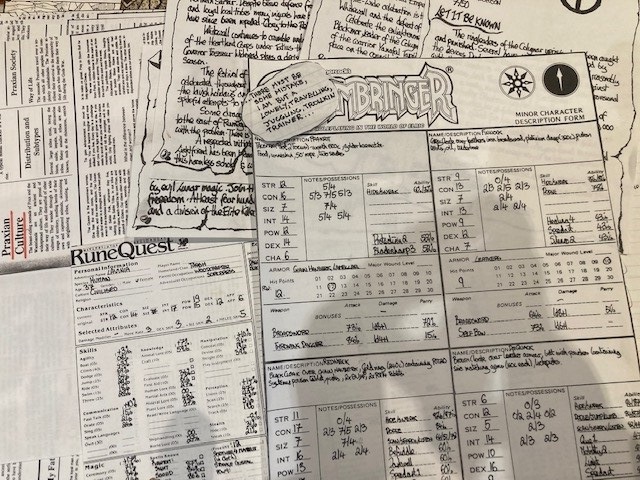
When asked about the timeline, Doc confesses a God-time like timelessness for his Balazar campaign, with the only future event that mattered being the Cradle Scenario as the immense finishing piece for a Pavis-based campaign, always looming, never played.
Then came a disappointing hiatus when there weren’t any players of RuneQuest at Med-School, although a game was picked up again after a year or so.
We briefly touch upon the Dragon Pass boardgame, and then we go on to Doc’s almost traumatic experience of the first Convulsion which left him with the impression that everybody knew everything about Glorantha and that he sucked at RuneQuest.
He did meet Greg Stafford, though, and while he feared the “You’re not playing Glorantha as it is meant to be” boogeyman hiding behind the door,
Doc actually lent Issaries Inc some money to get the Hero Wars started, and with Hero Wars actually and finally providing some rules for heroquesting, he got interested and bought the material.
What re-ignited the Gloranthan fire was the Guide to Glorantha kickstarter (of 2013, fulfilled in 2015)
“I have Passion Glorantha 90%, but Knowledge Glorantha 40%.”
Doc goes on to enthuse about having played HeroQuest with Ian Cooper (who is currently in charge of the Questworlds successor line) and how that lends itself to go on mythical exploration.
Ludo brings up MAR Barker’s Tekumel and how he encouraged people to find out what is in Glorantha. Doc regales us with a private conversation with Greg Stafford, and how he reacted to Greg’s offer to explain a thing about Glorantha, and Doc felt he didn’t really have a question to ask. Instead, they discussed rearing children in a shamanic culture, and how myth contributes to that.
The weight of information behind Glorantha helps making it real and solid, even if you don’t apply that much of the vast amount of information.
From his current game, Doc tells about finding an actual bone of a god and making a magical dagger out of that, or finding an iron hauberk and giving it to the Earth Temple because it felt right, rather than one of the characters using it – something that would not occur to any player in a Dungeons and Dragons game.
We talk about everybody having magic and how that affected the way the game and its setting felt, and how people felt about playing that.
Ludo mentions the Year Zero Podcast with the impression that “everybody is playing a cleric.”
We talk about the impact of RuneQuest 3rd edition and how it was a disaster for the UK game scene.
Jörg gets to waffle a bit about his initial experiences starting with third edition RuneQuest and the Vikings box.
Doc sums t up that however much aspects of the rules might annoy him, there is still that way that certain outcomes make you feel which bring back the love you feel for the system.
Credits
The intro music is “The Warbird” by Try-Tachion. Other music includes “Cinder and Smoke” and “Skyspeak“, along with audio from the FreeSound library.
Glorantha Initiation: Erin, SCA, Runemasters, and Old Fandoms
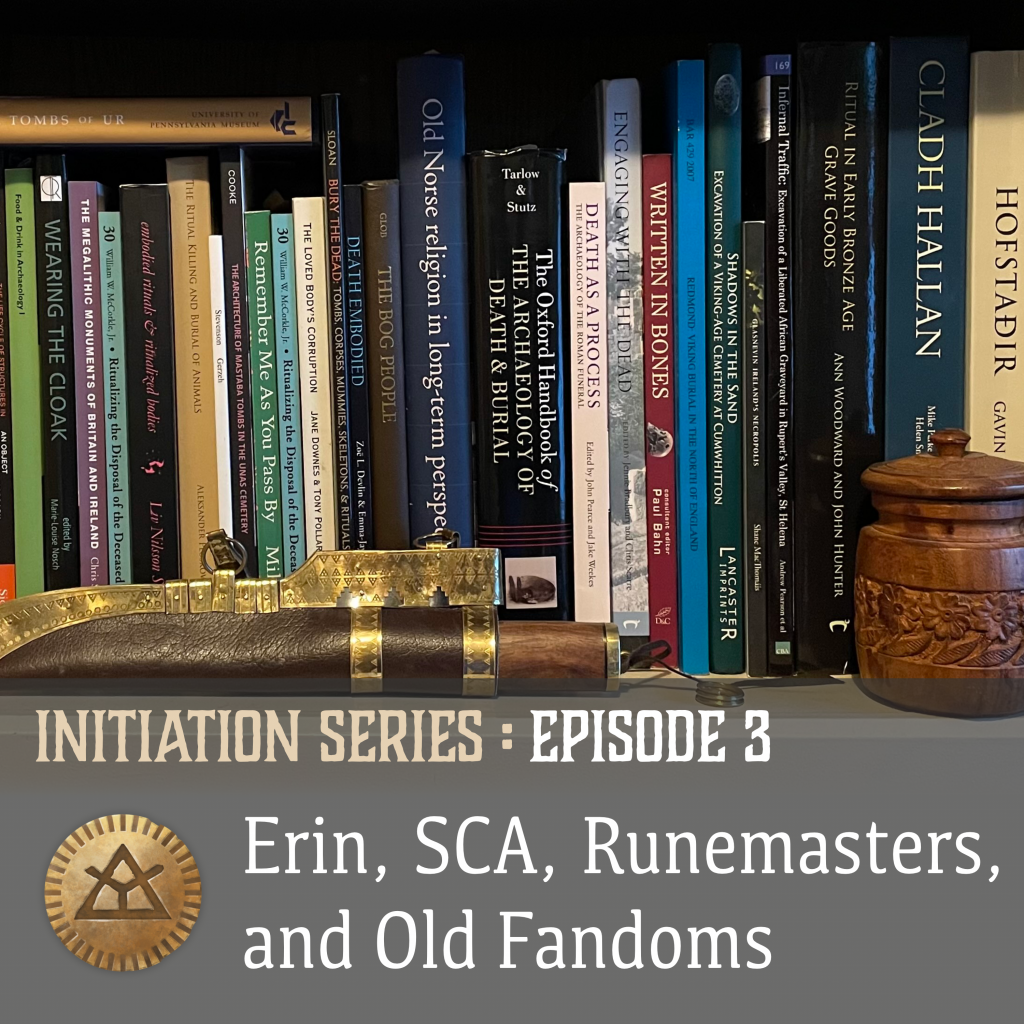
For our third episode of our Initiation Series, we interview Erin McGuire, who was only supposed to play RuneQuest for one night, but hasn’t stopped for the past couple years, and is now possibly an heir to the throne of Sartar. These things happen, you know.
Throughout the episode we talk about this campaign. You can read the vast amount of game logs and lore information that Erin’s group has gathered on their Journey of Heroes wiki. In particular, you can read the crazy Gloranthan archeological articles that Erin has written, such as the Excavations Notes on Harbour Street Tower, the Skokkrafell Monolith, or a study of Rites of Passage in Ancient Esrolia. Note the bibliographies. Amazing, I tell you.
Erin is part of the Beer With Teeth collective, who has published numerous supplements for RuneQuest on the Jonstown Compendium, and now works with Chaosium on “official” books.
Erin is also part of the Society for Creative Anachronism, which most of the creators of RuneQuest were also part of themselves a long time ago.
Episode 7: Adventures in Jonstown
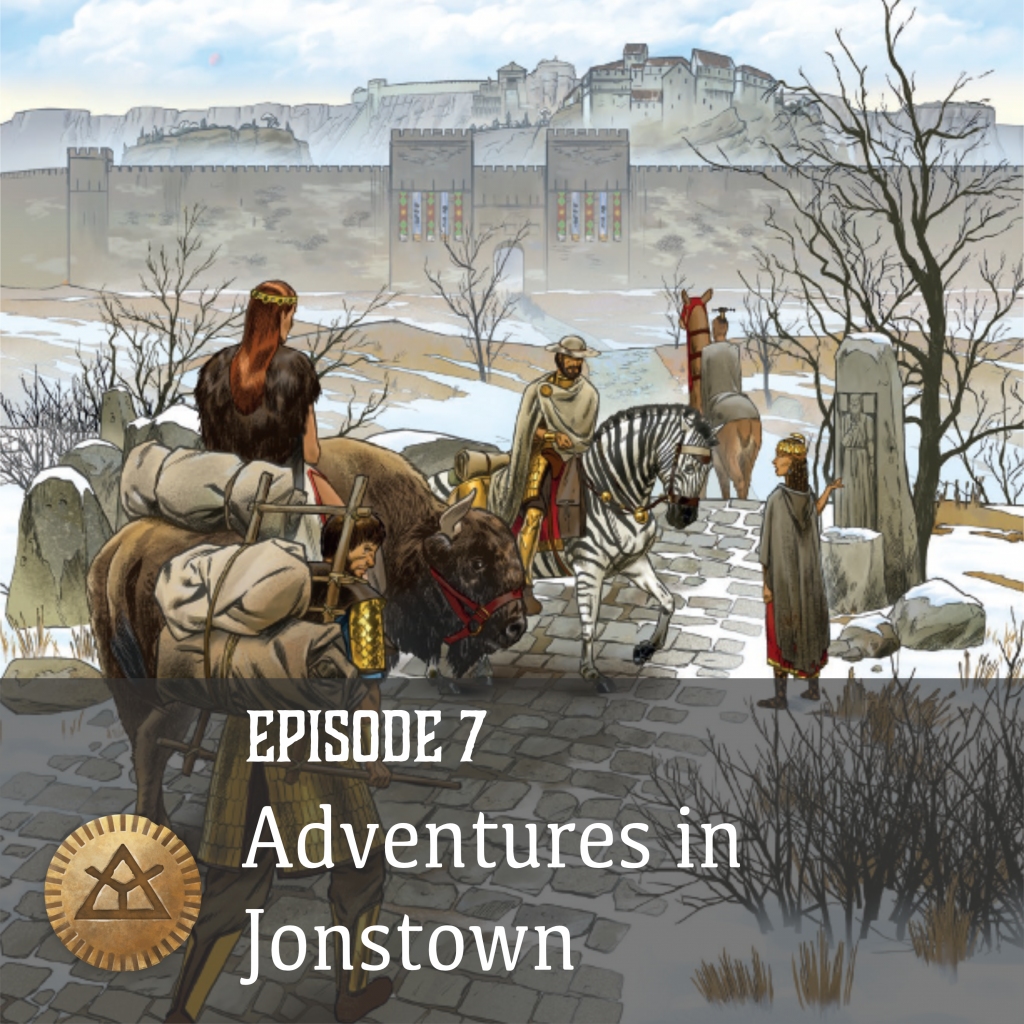
Ludo and Jörg are joined by Diana Probst, aka Berra from Beer With Teeth, bravely entering a realm of unreal time before sunrise.
News
Episode 2 of our Initiation to Glorantha series was released, and teasing upcoming interviews, including Diana’s
Ludo is chuffed about his review of the starter set making it onto the Chaosium blog.
The PDF of the Weapons and Equipment Guide is out, and it’s up to the listener whether to believe Diana’s tale of how her name appeared on the cover (There is no take-over of Chaosium’s Glorantha line by Beer With Teeth, according to Diana: “Too much work”).
The concept of providing your standard RPG lists of sharp and otherwise deadly items in context with the culture is what makes this a Gloranthan product,. Saying that it has been a dive into a Gloranthan midden might be mis-interpreting Ludo’s experience.
We discuss Chaosium’s naming sense for their Gloranthan products. Gamemaster Screen Pack for a scenario book with a sandbox was underselling the product, and the Weapons and Equipment Guide is really an introduction to the material culture of the world.
The New Gamemasters Month starts this January, a guided seminar teaching new game masters how to actually run a roleplaying game. Chaosium contributes with the RuneQuest Starter Set.
New on Jonstown Compendium we find To Hunt A God, the final volume of Austin Conrad’s Myth of the Month.
Diana is teasing that Beer With Teeth are about to deliver a manuscript to Chaosium supporting the Starter Set.
We mention Dario Corallo’s cardboard minis for the Rainbow Maps scenario, the Holyday Dorastor products The Seven Hills (containing eight scenarios) and two short christmas-themed ones, Krampuslauf and Joulupukki.
The Gloranthan West gets some attention, too, with the first in a series of map PDFs of Gloranthan regions starting with Kanthor’s Isles, and then there is Nick Brooke’s art-book illustrated by Katrin Dirim explaining The History of Malkionism.
(As always, you will find the complete listings of Jonstown Compendium new releases in our weekly Newsletter/Blogpost Journal of Runic Studies)
Main Topic
Adventures in Jonstown
In our main topic we aim to explore how to take the RuneQuest Starter Set and get more scenarios out of it.
Jörg praises the resources the city has to offer to adventurers (player characters), like the library.
Diana points out that by having played through the scenario the adventurers will have built up a reputation in the city,
We discuss how rather lengthy training efforts can tie an adventuring party down (e.g. ability training, which takes two seasons), and that the city of Jonstown can offer scenarios to do on the side without lengthy travel that would interrupt such training.
Ludo points out that the background information in the Glorantha Book (book 2 in the box) is designed to be given to both gamemasters and players, which means that all the information in that book contains hardly any narrative spoilers.
We discuss the motivation and background of the City Rex of Jonstown, Orngerin Holdfast, and his possible future.
Diana describes her modus operandi for preparing a gaming session. “At first I panic because it is only half an hour until the game.” and how she gets inspiration out of the headings of the book, and considers what would happen if one of those things have a problem, one that the adventurer party can be pointed at.
Jörg suggests to use the efforts to get the tribes to work together and form a cohesive military as the backdrop for inter-personal conflicts or even inter-tribal politics, using any of the NPCs in the book as a catalyst for the adventure. That could be top-down, as Ludo points out, or there could be minor street level events escalating.
Diana wants to involve the adventurers in the preparation for such an assembly and joint training.
Ludo suggests to look into the factions of the city and explore their agendas for scenario hooks and a web off intrigue.
Ludo mentions the Cherry Ridge groves with its medicinal jerret cherries tended by the Chalana Arroy cult (p.57), and how anything happening to the cherries may involved the local clans. He also reminds us why your characters will want to stay on the good side of the Chalana Arroy temple.
We talk about Birne’s Squeeze, already mentioned in the Colymar Adventure Book, as a place where you can expect bandits. How do these bandits become your problem? Your players might hire out as caravan guards in the region. Traders with unusually valuable goods may hire more guards than usual, but then there may be a risk that there might be bandits among those new hires. Might even the player characters, or they might join up to investigate what that caravan really is transporting.
A Life of Crime vs. Heroic Adventuring
Ludo talks about sorting his scenario hooks into “Below” hooks dealing with criminal or lawless agendas, and “Above” hooks with possibly more heroic stuff or politics out in the public.
There might be spies or spying for the Lunars going on.
Diana confesses that she often lets herself be surprised when it comes to criminal or covert activities in her games.
Ludo brings up the good old player suspicion of perfectly non-descript throw-away or “soup” characters that may derail your entire prepared plotline, and advocates to confirm the players’ story instincts. Diana suggests using a roll on the player characters’ POW to decide how right they are.
Jörg suggests using NPC record sheets as discussed in the Passions episode to develop such characters more or less on the fly.
Ludo maligns the Hornos brothers as the ultimate crime bosses, and how they might be the crime lords behind all underworld activities in Jonstown. Diana proposes a more political dark secret tied to their collaboration with the Lunar occupation forces and administration, and of course their massive profits from trading Lunar war booty.
Ludo brings up the problems plot possibilities that might result from having acquired somebody else’s heirlooms through some of those deals.
Diana points at Lyserian Goodspeech, the former City Rex under the Lunar occupation, and how he avoided being sent into exile because his tribe threw their full support behind him.
For the grognards, Jörg points out that all the traders in Jonstown would have been associates of Gringle, the pawn shop owner from Apple Lane who had gone missing following the demise of the former Thane of that hamlet.
At the very least, the connections to the Gamemasters Screen Package with its description including the hamlet of Apple Lane are a good tie in if you prefer to run published scenarios.
The circumstances of Gringle’s disappearance are described in the old HeroQuest/Questworlds demo PDF Return to Apple Lane.
You All Meet in a Pub, or in a Bathhouse?
Gaining a connection with regular residents of Jonstown, putting names and faces to the generic stats provided in the book.
Socializing can happen in the pub, in public baths, in the Chalana Arroy hospital, joining the militia.
Ludo expounds how relatively harmless militia duty may lead to favors that residents of the city may owe your adventurers.
Jörg points to the police procedurals on TV where militiamen (well, cops) come to interfere with plots of some of the high and mighty, possibly putting them in their bad books.
Diana talks about how crafters (and really all economic activities) come under the scrutiny of the guilds, and that suitably skilled adventurers may be offered (or demanded) a guild membership, which opens up another social circle of interactions and vested interests. Ludo mentions how the guilds (or the sages, or other temples) may act more easily as quest-givers if one of the adventurers is already a member of that organization.
Jörg points out that all the provided adventurers fail to mention any spouse or permanent love interest, and how providing some may connect the party to the place and give family or in-laws as another possible source of quest-givers or plot hook anchors.
Diana describes how she brings up marriage, childbirths etc. in the Sacred Time review of the year meta-session where the regular income and spendings of the characters are determined. She also uses marriages as rewards for adventures. (Keep in mind that temporary marriages are a big thing in Orlanthi society! Having a spouse for a year will not tie you down interminately!)
Ludo suggests that sufficiently notable characters might be pushed by their superiors towards political marriages to further some agenda. Even if it is over by next sacred time, that extra connection can be valuable.
We digress on discovering possibly unsavory skin care habits of new spouses, and being walled up upon discovery of those…
Ludo brings up the Noir Detective story genre, or the old chestnut of getting your clothes stolen in a bath, possibly mistaking them for somebody else’s ones suspected to contain plot hooks.
Diana rejects any and all accusations of planning forward her adventures. Instead, she uses NPCs the characters have a relation with and who they judge to be politically astute. Whether correctly so remains to be discovered. Between Jorjera Latish and Orngerin Holdfast, Diana reckons one is politically astute and the other may or may not take her their leads.
Introducing Plot Hooks
Ludo lists patrons and quest givers (potentially any of the important people mentioned in the book).
Diana suggests to look at the player characters’ passions, starting with Love Family or Loyalty Clan or Tribe which everybody gets. You can introduce plot-carrying NPCs as belonging to one of these target groups, or map the role of plot-carrying NPCs to an existing NPC contact in your game.
Diana offers “Miraculously, whatever the character is good at is exactly what the tribe wants of them.” Ludo counters with “These people are disposable.”
People from the place you stay at may serve as quest givers.
Amid pronunciation debates Ludo points to the opening in Wulfsland created by the majority of Jomes Wulf’s followers abandoning the former Maboder lands, and all the neighbors and kin of the previous owners may vie for.
Ludo suggests a plot line where the adventurers escort a group of people intent on re-settling those lands, only to find squatters or rivals with a similar claim having arrived before them, or about the same time.
Jörg points towards plots in the city that were formerly owned by the Maboder, starting with their tribal manor. We discuss things that may be found in their abandoned manor (or that of the Cinsina who left the Jonstown confederations a few years later), and that their portion of city plots may have gone to the Lunars, who aren’t here any more. (Many of their tenants still are, though, and may be looking at an insecure future.) Diana brings up buried hoards in some of the houses, left by people having to leave in a hurry.
Ludo suggests to have characters with “Hate Lunar Empire” protect and escort people still loyal to the Lunars moving out.
We discuss the ongoing trade volume with the Lunar Empire and the travel opportunities joining a trading caravan to Tarsh or just the still Lunar-occupied Far Place.
We discuss spying done by people in these caravans, and whether or how often traders of the Etyries cult will travel to and through Jonstown, bringing their Lunar goodwill habits to an audience that may be unwilling to accept that. Scribes and sages are information gatherers anyway, and might be used by opposing powers. And then there is Eurmal.
Diana suggests that if you play a spy game, create a bunch of eligible candidates and randomly determine who dunnit. Jörg brings up the Paranoia RPG’s concept of everybody following two secret agendas, and we riff on potential secrets within secrets plots.
Diana tells about a murder mystery where all player characters thought they had killed the victim (which actually had not been killed at all, but disappeared).
The Darkness Within Jonstown
Ludo suggests to use another common passion, Hate Trolls, and the fact that the Torkani tribal mansion houses trollkin for an involved crime investigation to hand to the militia, where the head librarian and known glutton with a sweet tooth Garangian Bronze-Guts gets a nightly visit by trollkin which doesn’t go undetected, while at the same time somebody else filched a scroll with possibly dangerous information, but definitely one a senior member of the temple cares about. Now the trollkin who did break into the library get identified and falsely accused for the scroll theft, and it is up to the militia how to deal with this.
(What is it about the sweet stuff, Ludo? Even the tale of a visit to the Block made you talk about sugar cubes…)
Ludo explains his prep work for something like this, giving the real theft maybe a paragraph or two in preparation, and improvising from there. Diana points out that this is fine for your personal game if you are an experienced gamemaster, but if you want a scenario you can hand over to a GM inexperienced with the setting or the rules, you will need to note down some alternatives for possible courses of action.
Ludo talks about keeping the pacing, so if your player adventurers interrogate the trollkin, they ought to learn more than just that they did steal the sweets. Possibly they saw a robed (or prominently bearded) person sneaking away during their escape.
Jörg suggests an alternative where the real culprits, or some other party desiring the stolen object, assumes that the player characters have the lead, asking enough leading questions during an uncomfortable interrogation that the players can pick up a lost trail.
Diana talks about NPC defenders of the story arc, and to place them as companions and plot-drivers with a group of inexperienced player investigators.
Diana outlines how she manages her NPCs in a fairly simple spread sheet, and how to find stuff in that.
We return to the trope of the players ignoring all the plot hooks and following the harmless NPC they feel is suspicious, and the resignating gamemaster yielding to the collected wisdom of the table and making that NPC a bearer of the plot.
But in the end, keep it small and as simple as you can get away with.
Ludo talks about the Schrödinger’s Reward, where a job well done as much as a job catastrophically failed at will lead to the same follow-up adventure, either to atone for the failure or because of the show of competence.
Jörg suggests to give the adventurers low-level contacts in all the institutions that might come up in their upcoming shenanigans to have at least one boot inside the door, and Diana suggests to have the adventurers bask in their fame for a job reasonably well done, getting offered free drinks as well as free plot hooks when they visit their pub or bathhouse.
Diana tells a tale about infant ducks (durulz) coming to take a look at the famous people (the adventurers) who might be able to heroically help them out.
Diana talks about taking inspiration from looking at the maps.
Ludo elaborates how reading about the system of food distribution among citizens inspired him to look for ways how people could abuse that system for their own advantage, whether through fraud, forgery, manipulated weights… and then goes into the dangers of having too many opinionated intellectuals in a small place.
“The dog ate my homework” and what kind of ideas just mentioning that can trigger.
Joh Mith is a valuable NPC because of his wide-ranging connections outside of Jonstown, and some of those may be enemies with a hostile agenda.
Creating characters from Jonstown using the RuneQuest Wiki simplified character creation rules offers a way to bring in replacement characters.
We discuss a few possible follow-up scenarios on the Jonstown Compendium, and talk about some of the smaller Beer With Teeth scenarios that have ties to some of the adventures in book 4 of the starter set.
- Rocks Fall might tie in with the third scenario of the Starter Set
- Stone and Bone as a possible follow-up to the second scenario of the Starter Set, or near Birne’s Squeeze
- Vinga’s Ford is suggested for the Apple Lane region, but that’s just west of Jonstown
- A Tale of Woodcraft could be set near Tarndisi’s grove just south of Birne’s Squeeze
Other community content scenarios or sand boxes set in the region:
- Monster of the Month Petty Spirits 2 has the Bookwyrm, a monster certainly attracted to the library of Jonstown
- The Red Deer Saga exploring the Namolding clan living between Jonstown and Apple Lane, whether as a bundle or as single products that will give you a discount when you buy the bundle
- In a Merry Green Vale explores the Lysang clan, another Tree Triaty clan severed from the Colymar on the road from Jonstown to Apple Lane
- The Duel of Dangerford describes a battle of Dangerford different from what happens in the solo scenario, a year later. It might cause a few continuity kinks, but is another exciting opportunity to encounter Lunar forces in full panoply while giving the player adventurers agency.
Apologies if we missed any other pertinent Jonstown Compendium content – we advise our listeners to visit there and discover things for themselves anyway.
Credits
The intro music is “The Warbird” by Try-Tachion. Other music includes “Cinder and Smoke” and “Skyspeak“, along with audio from the FreeSound library.
Diana’s Post Credits Bonus
In a last minute recording, Diana reveals what project Beer With Teeth is working on for Chaosium. Their manuscript is ready to hand out, but the book is likely a long ways away.
Glorantha Initiation: Russano, Eurmali Goblins, and Inspiration
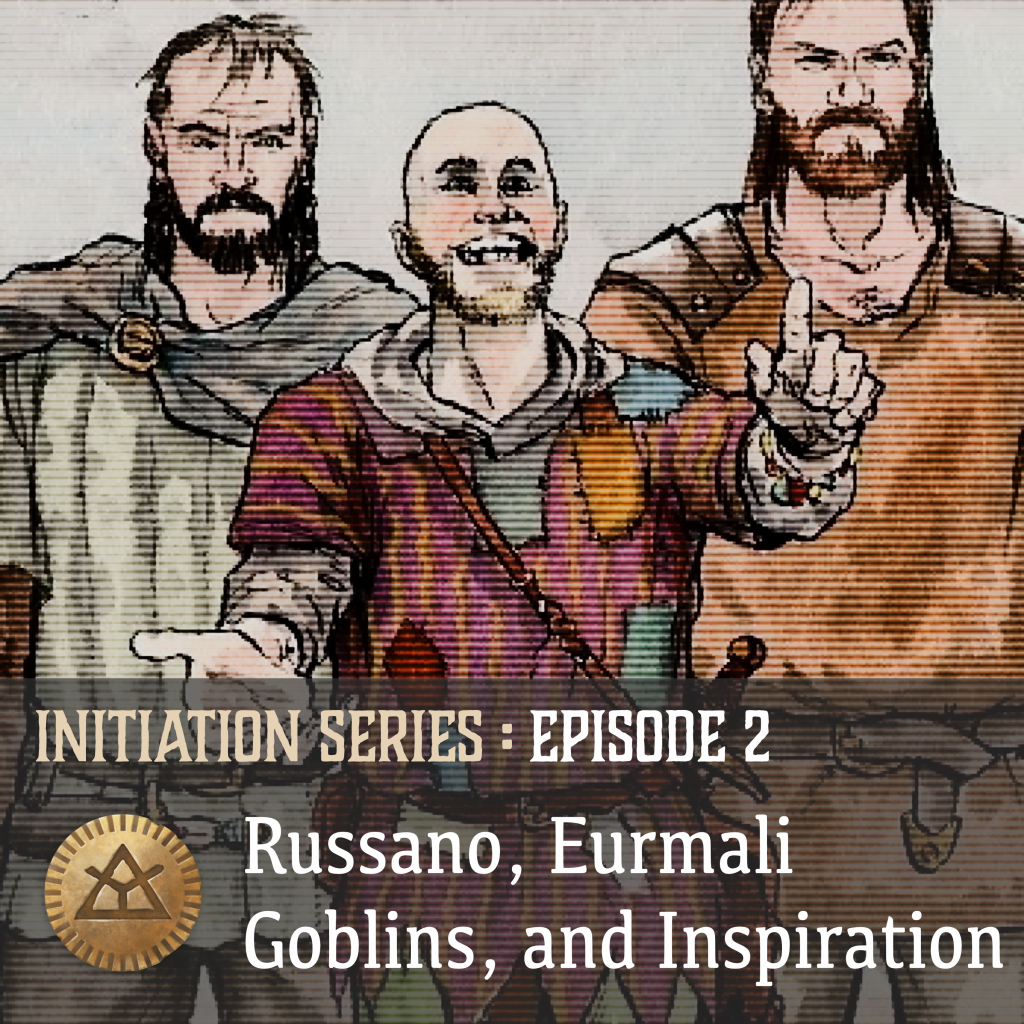
On this second episode of the Glorantha Initiation Series, we interview Russano Greenstripe.
Russsano discovered Glorantha with King of Dragon Pass, a game by A-Sharp, available on pretty much any platforms you’d want to play on.
If he could start a Gloranthan game, Russano would pick QuestWorlds as a ruleset. In the meantime, he has brought Eurmal to his in D&D game. We also discuss 13th Age: Glorantha, available from Chaosium. The core system is available from Pelgrane Press.
D’Aulaires Book of Greek Myths is available on Amazon and most probably in your friendly local bookstore.
The music album Carmen Miranda’s Ghost is on YouTube.
Information on Greg Stolze’s REIGN is available here, including access to PDFs and Print-on-Demand of the first edition. Information on GODLIKE is available from ArcDream. Unknown Armies is available from Atlas Games.
Visit the Wyvern’s Tale in North Carolina!
The (unofficial) Chaosium Discord is found here. The Cult of Chaos Discord is for members of the (free and easy to join) Cult of Chaos.
Archives of old Gloranthan discussions are on Tapatalk (such as here), but there’s also a lot on Chaosium’s Well of Daliath. The old mailing lists are archived here by a good Samaritan.
Episode 6: Gamemastering RuneQuest
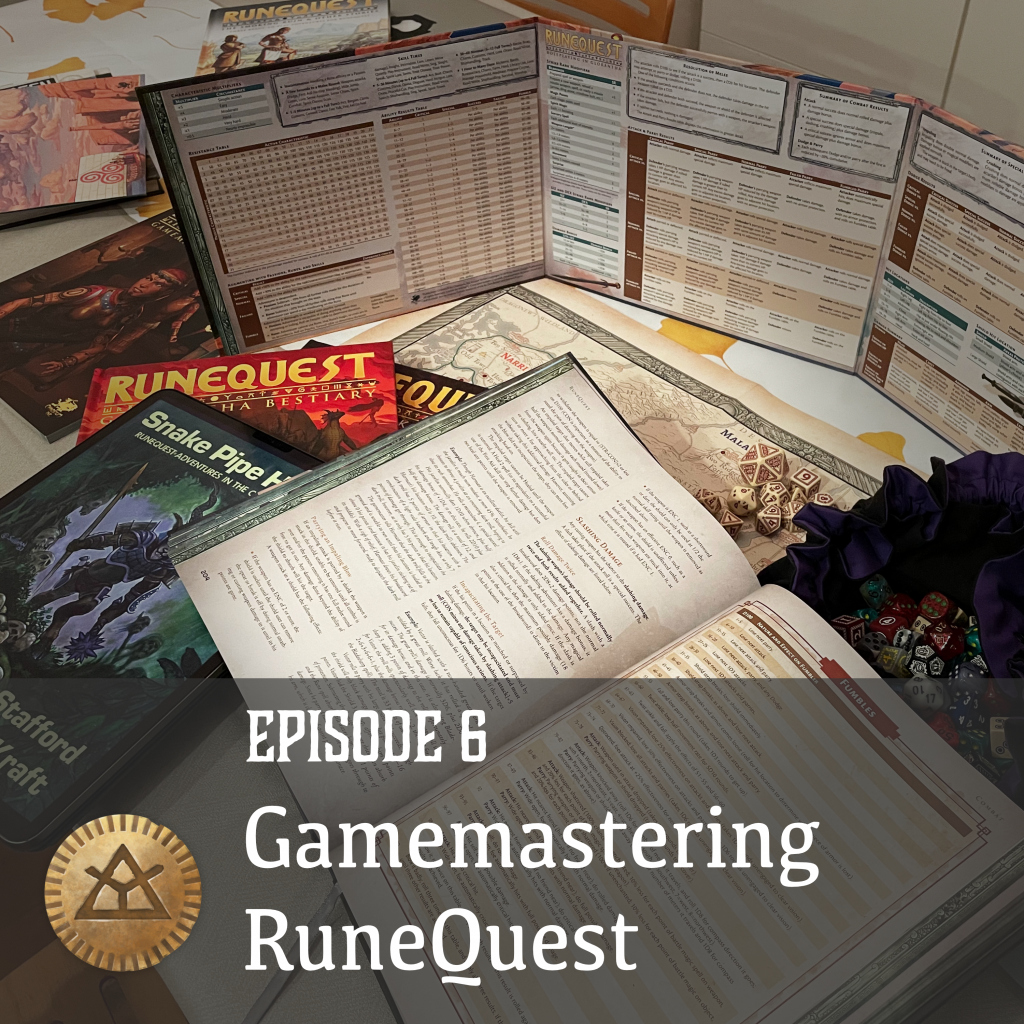
This topic was actually suggested to us by our guests Jon Webb and Neil Gibson.
Jon Webb is the initiator and an author of the four volumes of the Sandheart series, following the challenges of the militia of a remote Sun County hamlet. Also featured on the Chaosium Blog.
Neil Gibson returns after gracing us in our first God Learner Podcast episode, with ducks in the pipeline.
News
Starter Set out in the Wild
We talk about the solo-quest and the scenarios. Jon needs to maintain his innocence for a while until his GM has presented those scenarios, while Neil has already spoilered himself.
Neil talks about working on a solo-quest.
Jörg points out that the solo-quest is available online on the Chaosium website.
Equipment Guide
We discuss the fantastic cover of the upcoming Equipment Guide.
Ludo talks about a rather reserved reaction to receiving an equipment book.
Chaosium Convention
April 2022 in Ann Arbor: ticket sales have started on Chaosium’s website, and other than Ludo none of the panelists are planning to attend due to distance and distancing.
We speculate on Chaosium Conventions elsewhere, and Neil reports that 2022 is not going to have an Australian one due to the pandemic.
Main Topic – Gamesmastering in Glorantha
Jon confesses that listening to episode 1 and talking about different styles of play gave him the idea for this episode.
Types of Campaigns
Ludo addresses the amount of crunch GMing RuneQuest brings compared to other games, and how that can become tricky at times.
Neil talks about his current campaign using the Sandheart books, how entire sessions can go on without combat as he uses the scenarios in the series and encounters or player-driven activities in between, and a mix of scenarios – both dungeon-bashing and bouts of negotiation and diplomacy.
Jon (unsurprisingly) has similar experiences, and mentions how Call of Cthulhu altered his GMing style, and how that may have changed his gaming group as well. He also talks about giving his players complete freedom as both he and his group dislike railroads, and how deadly combat will be (both in Cthulhu and RQG).
Ludo addresses lessons from horror and investigation rpgs, finding solutions to problems like pacing and mood and how to have the story progress.
Jörg has a railroad through the stories in his sandbox, with the players ignoring the rails, and how his games are character-driven both in the sense of character background and in the players’ ambitions for their characters. And how that can make pre-written scenarios harder to use.
Neil observes that the White Bull campaign run by Jeff Richard appears to be very Argrath-driven (as the titular NPC patron).
Ludo goes off-script discussing how the meta-plot can ground the characters into the world.
Neil expounds how being followers of Vega Goldbreath, in opposition to Count Belvani,
Making big changes to the timeline.
Subsystems in RuneQuest
Ability rolls, simple skill rolls, opposed rolls, chained rolls
Jon shies away from repeated rolls on the same skill, e.g. Track.
Neil tells an anecdote about rolling to disembark, and how a fumble doing that carried over into the combat.
Ludo plugs one of his Runic Rants articles on opposed rolls, ties, etc. and how a tied roll will change the playing field to different skills.
Jörg breaks a lance for repeated rolls analogous to combat. Ludo mentions extended contests and how a ticking clock will be a diminishing resource.
GM-Screen Usage
Neil talks about how playing online replaces the GM screen. There are rolls that the GM does rather than the players.
Jon values the brutal honesty of the rolls, even if it leads to total party kills.
Ludo talks about dice-driven games, and when he overrides the dice for the sake of a good epic story. RuneQuest with its Old School vibes can go either way.
Jörg talks about player-initiated combats vs. scripted combats, and how the scripted ones may be a lot less deadly or a bit harder as there may be ways to reinforce the story – to a certain degree. Also, turning a hopeless situation into a “barely survived as prisoners” situation (as in many a James Bond movie).
Another option is invoking heroquest conditions at a point, where the more magical environment may offer new options, and how the change in environment makes the appearance of a deity less of an ex machina. New complications may bring new options to resolve a situation.
Players rolling GM rolls – shifting the blame to the players
Leaving the gritty details like the hit location after a successful opponent’s hit to the player with the affected character.
Split parties open up the players whose characters aren’t involved in a conflict to roll the other players’ opposition. Also, in big combats, players would take over other players’ characters’ opponents and roll against them.
Ludo talks about opportunities to flip dice rolled behind the screen before revealing.
Phantom rolls, or how to stoke player paranoia with leading questions.
Rules Discipline
Diligent book-keeping and adherence. But YGGPMV – your Gloranthan game-play may vary. And game fun rules.
Not all opponents need to be at full health at the start of a combat, either.
Neil asks for name generation on the fly. Ludo comes prepared there, with lists of names, and possibly lists of personalities and motivations, too.
“Bor-ees Jan’s Son.”
Neil and Ludo use spread-sheets of all the NPCs, color-coded for attitude etc.
NPC passions, or NPC morale.
Jon advodates two modes of play – non-combat free-flowing or round-based, where only combat-related information is used. He also avoids rolling for interactions between NPCs, narrating those.
Neil laments the occasional loss of finely crafted monsters to dice luck, and we discuss ways around it, as in “monsters have mothers too”, or “it’s the same monster but with a moustache”. (Which may apply to the monster’s mother…)
When to roll, when not to roll
“If you win, the NPCs win, if you lose, they lose.”
Distributing rules mastery to the players.
Limiting players’ time for questions.
Statement of Intent. Changing intent (resulting in delays, or at lowered chances of success).
Battle Map vs. Theater of the Mind
Preparing maps for Roll 20 and similar, or for tabletop combat.
Clutter in the scene.
Different scales on battle maps.
Strike Ranks in the game as a hindrance? Strike rank tracker (as in the Starter Set).
Paired-off combatants when all player characters are engaged vs strict sequence of strike ranks.
Speeding up combat
Rolling all dice at once.
NPC actions and motivations.
Not having to look up rules details (like spells, criticals) in the middle of combat.
Disengaging from combat
Conflicts with plenty extras
Party Death, Party Size
Divine Intervention reducing character deaths.
Occasional rune levels and their influence on the game,
Reaching rune level, frequency of experience checks.
POW or CHA 18 as hard goal on the way to rune level.
Lack of ambition enjoying the human side vs, career-oriented character concepts.
Skills lacking skill check boxes
How strictly do you play “next season” between adventures to resolve experience checks?
Gloranthan holidays as reasons to refuse the call to adventure, votive figures.
Reusable rune magic for all as slightly reduced motivation to make it to rune level.
Regaining rune points from associated worship.
Sanctifying for rune points from your own ceremonies.
Tips for managing danger or threat levels.
Occasionally getting the match wrong after 30 years of GMing.
One trollkin with a critical head-shot will topple any balance.
Playing monsters sharper or dumber.
Overplaying your monsters.
The whack-a-mole monster where a monster offers few occasions to hit it.
Monsters beyond accidental kills by lucky rolls.
No clever last words…
Where to find our guests
The Sandheart books:
Tales of the Sun County Militia: Sandheart Volume One
The Corn Dolls & Fortunate Sun: Sandheart Volume Two
Tradition: Sandheart Volume Three
The God Skin & Mad Prax: Sandheart Volume Four
Neil calls for volunteers for his work-in-progress, a duck soloquest. Contact Neil on the RuneQuest & Glorantha Discord server (@BOLG), on other discords like the Chaosium Discord, or failing all those via our email [email protected]. You might know Neil’s work from episode 1, like LEGION.
Credits
The intro music is “The Warbird” by Try-Tachion. Other music includes “Cinder and Smoke” and “Skyspeak“, along with audio from the FreeSound library.
Glorantha Initiation: Ludovic
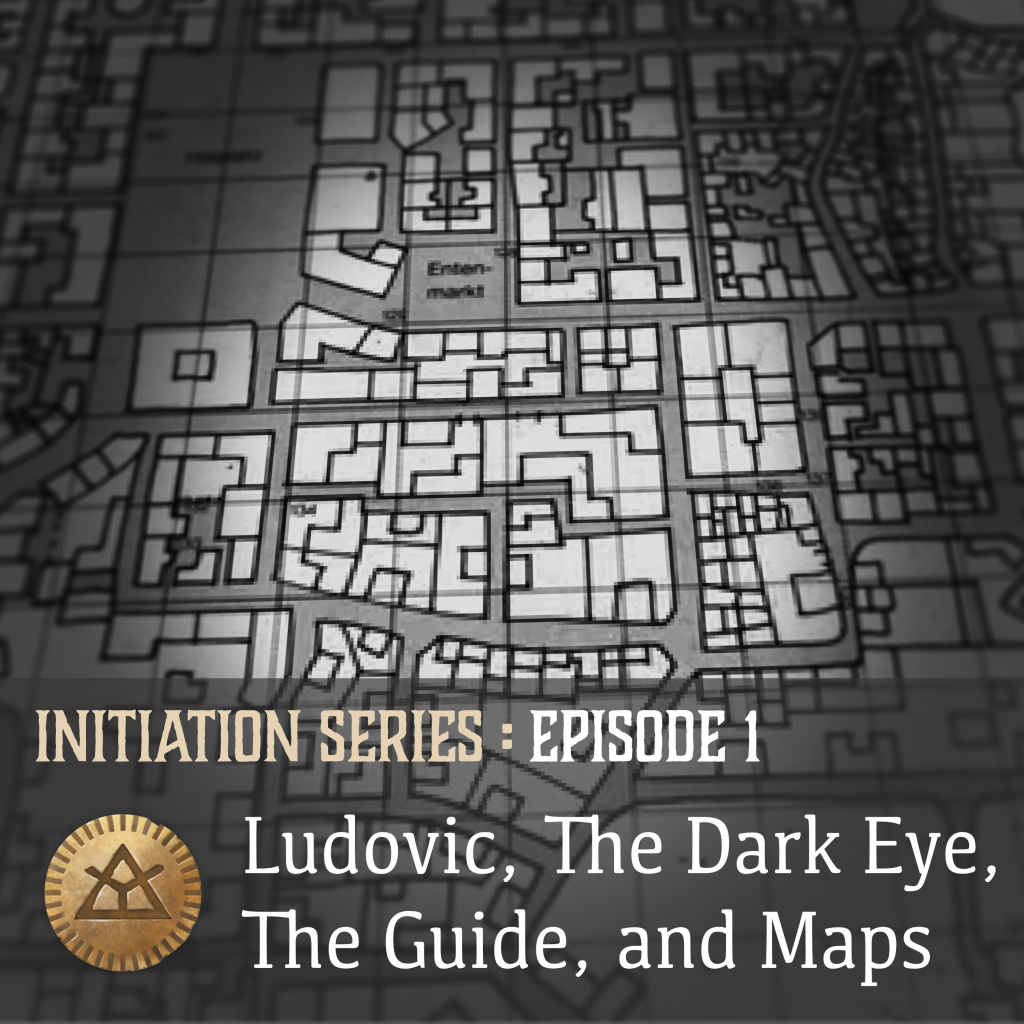
This is the inaugural episode of the Glorantha Initiation series, where we talk to members of the tribe who recently joined the God Learner studies. The God Learner Podcast wants to investigate how people comparatively new to Glorantha experience the world, what are the rewards, what are the hurdles when approaching this setting.
To test the concept and the questionnaire we plan to use on our volunteers, Joerg interviews Ludovic, who actually only discovered Glorantha around the time the new RuneQuest: Roleplaying in Glorantha was released.
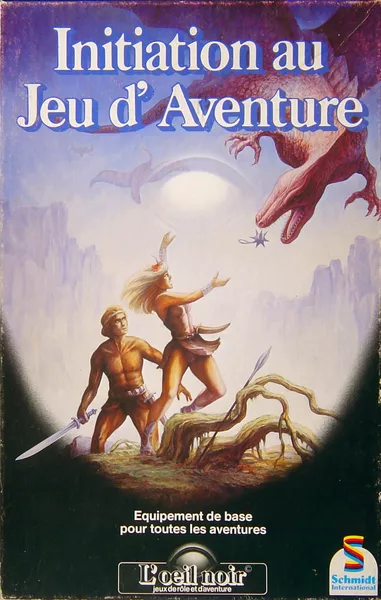
Ludovic’s first roleplaying game was The Dark Eye, also known as L’Oeil Noir in France.
The Havena city box also had a big early influence on him. For more nostalgia, see Ludovic’s “RPG DNA” article.
The French HeroWars and Glorantha books whose covers Ludovic talks about are visible above.
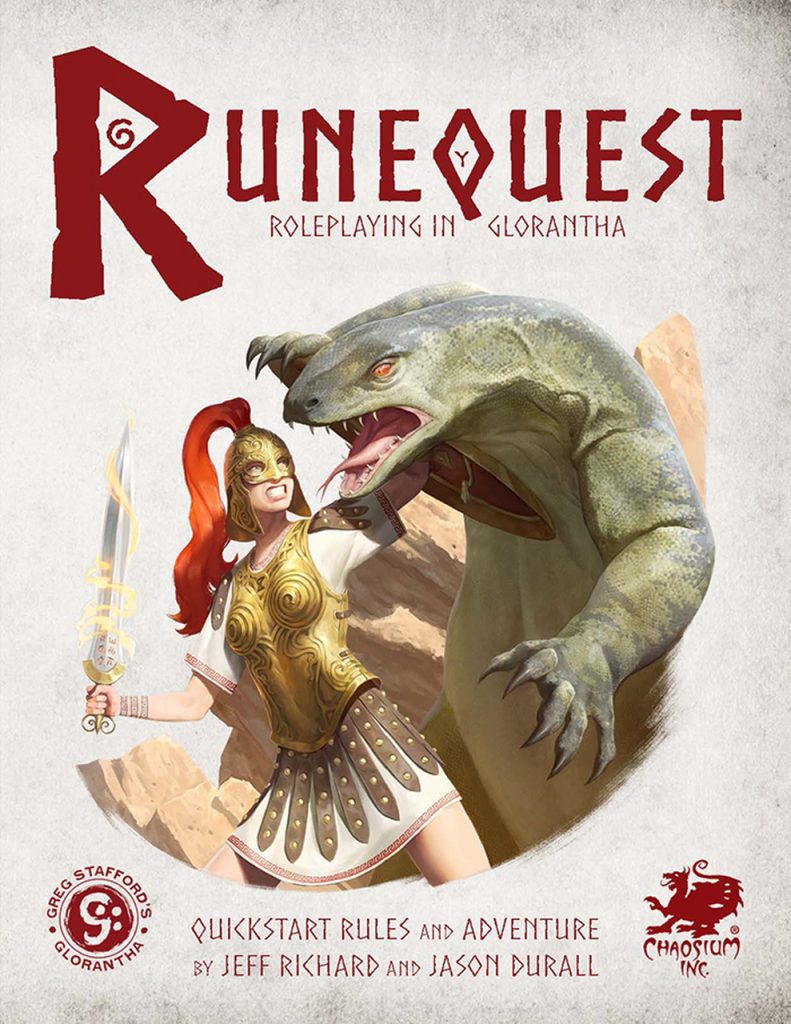
The Broken Tower RuneQuest Quickstart is available in print and POD here. It’s also available for free in PDF here.
You can find Ludovic all around the interwebs. For more information, see his God Learner wizard profile.
Episode 5: The Travels of Biturian Varosh (Part 3)
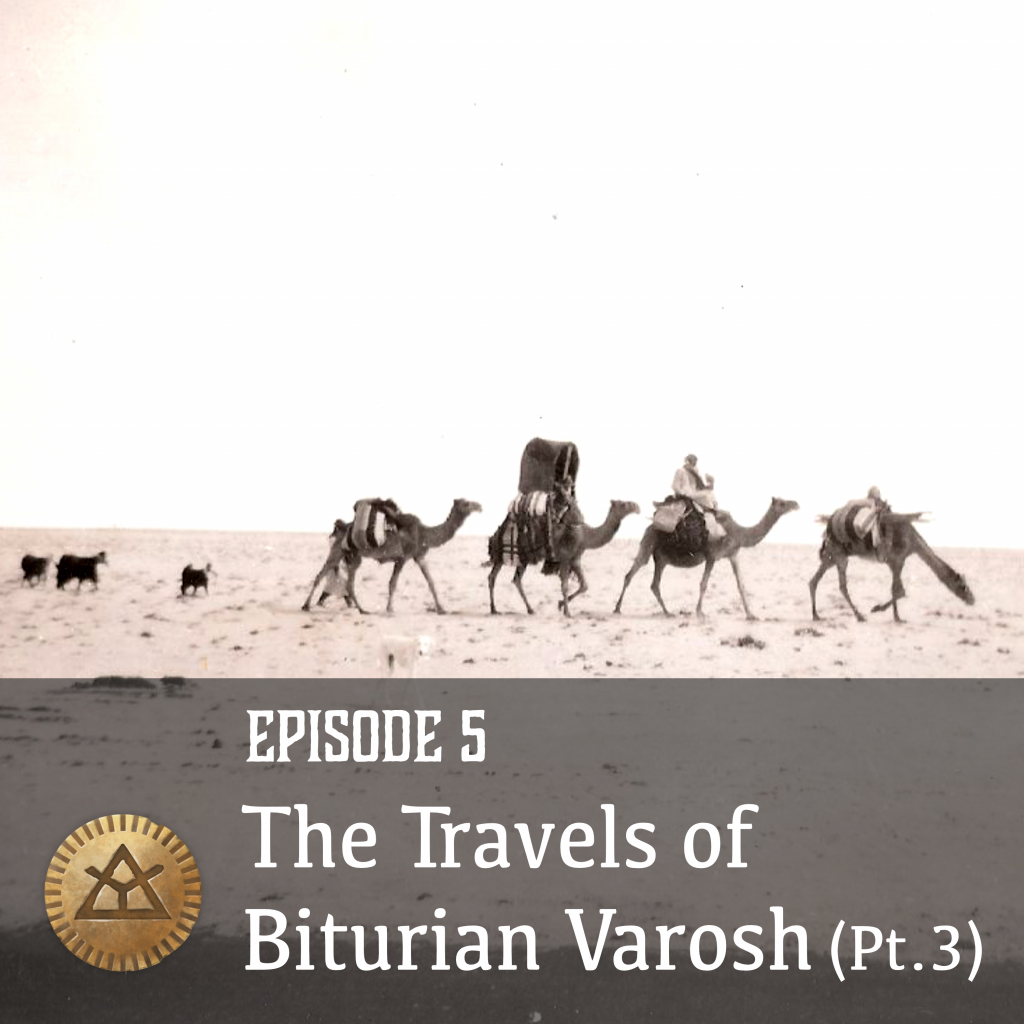
Our guest for this episode is Drew Baker, author of a series of products on the Jonstown Compendium, including the QAD (Quick and Dirty) series (available as the omnibus edition “Pimper’s Block“), the Rubble Redux scenarios Insula of the Waning Moon and Insula of the Rising Sun, and Alogo’s Caravan – Riding Animals of Dragon Pass..
Announcement: The Gloranthan Initiation Interviews
Announcing a series of interviews with people comparatively new to Glorantha, sharing their experiences and their perspectives on the setting and the games surrounding it. We’ll be posting these between our main episodes.
News
Jörg boasts of his recent visit to the Kraken Convention, a gaming retreat held annually at Schloss Neuhausen, a chateau in the German state of Brandenburg,
The What is New About RuneQuest panel video is mentioned, as well as the fact that some copies of the Starter Set were available, something Jason Durall blogged about, too.
Jörg mentions a game he played – coincidentally with our Finnish fellow Dayzatarin Tähtien Alla podcaster Juha Rutila (Finnish language only). That game was Turning Point, by Phil Vecchione and Senda Linaugh. It is still in quickstart phase, but totally playable.
The release date of the Starter Set was announced – it is the 10th of November 21, or 11-10-21 which add up to a significant number.
Katrin Dirim received the 2021 Award.
Drew tells how Jeff putting out the definitive map both screwed up and bettered his Glorantha game, and gives a huge shout-out to Jeff’s preview notes.
Drew puts forward an idea how the changes in the Sartar Map may be blamed on the rise of “an eight kilometer long reptile” “swallowing half of the east part of Sartar”.
The Black Spear campaign by Nick Brooke, lavishly illustrated by Mike O’Connor, takes you on a highly mythical road trip into Prax towards Pavis.
Main Topic: The Travels of Biturian Varosh
Pavis (Pavis Cult)
We start with Ludo summarizing the sidebar stories in Cults of Prax and the previous travels of Biturian.
We start off with a theory why there are universal names for spirit magic spells – Ludo blames the God Learners, Drew blames mercantile standardization at the hands of the Issaries Cult, while Jörg points out that the God Learners promoted the cult of Issaries in the Second Age.
Drew turns our attention to the phases of the moon for Biturian’s interactions with the lunars at Moonbroth.
The perennial debate about pronunciation of the city of Pavis, and we get into the history of the place, including the mecha-battle between the Faceless Statue and Waha and the giants.
Drew points out that Biturian spends the Winter Solstice on fhe road, possibly in the neighborhood of Tada’s High Tumulus.
We talk about the best travel times in the Wastes, and how that assessment may vary between Praxians following their herds and travelers from Dragon Pass. Jörg sows confusion about Praxian seasons (checking this afterwards, yes, there are rains in winter, but summer fertility lasts into Fire Season, while Winter doesn’t provide for the herds yet.
We discuss raiders dropping down from bridges on boats going underneath, and we wonder about the falling damage for 25 meters in RuneQuest. Jörg suggests bungee jumping (Vanuatu style).
Drew is wondering about Biturian’s motivation for researching into Morak’s nature.
Biturian is getting a couple of apparently profitable opportunities in Sun County and Corflu, but with hindsight wisdom we speculate whether those were planted sabotage.
We get into almost a Clue situation about who ambushed who in that neighborhood ritual headed by a priest of Pavis.
We speculate about where exactly in Pavis this ambush would take place, and why it would be an auspicious day.
We also talk about the ale economy in Pavis, and how curfew could spoil a festival aftermath.
Sun County (Yelmalio Cult)
Biturian arrives at Sun County and gets coerced into the role of the Lightbringer for a deadly Yelmalio ritual, the Three Blows of Anger.
Drew badmouths the Yelmalio cult as petty for the non-marriage rules of the Yelmalio priesthood.
We discuss how this “this world” heroquest is set up, mention mythic identification, and we discuss how the preparation for that myth could have been done better, ignoring the HeroQuest Surprise element of such an undertaking.
We’re discussing the fate of Rurik, from his bad run as boxed text example character in RuneQuest first.
We discuss the problems of divine intervention landing a character at very low power, and how that can retire character.
Then we high-tail out of Sun County to the newest marketplace in Prax, the recently built port of Corflu.
Corflu (Issaries Cult)
The Corflu Issaries market is actually run by the Etyries cult, but still serves as the example of the Issaries cult.
We discuss the origin of the name Corflu and why Biturian had to sit out the entire season at that dismal market.
The arrival of a Wolf Pirate ship scares the entire port, and we speculate on the female pirate’s motivations and mode of transport, and how poor traders the Etyries priests are to shun away from her.
A gang of Baboons gets rich from removing the carcasses of the beasts of burden dying from that plague, and Jörg speculates whether these could be the same baboons showing up nearby at the start of the River Voices scenario in River of Cradles.
We discuss the (impossible?) task given to Garzeen to re-assemble Genert by the sister of Prince Hrestol, and how it is obeyed even by the Etyries priests.
We speculate about the red glow warnng off Kethaelan ships from the port of Corflu, and whether it may have had to do with the re.animation of the Watchdog of Corflu.
We then take an inventory of Biturian’s assets, and wonder why he wouldn’t sell off the slave bracelets on Norayeep which probably surpass the value of a slave by a magnitude.
Conclusions?
We discuss the impact of the example character stories, and how many of the episodes have an undercurrent of heroquests happening to Biturian – a heroquest magnet.
Credits
The intro music is “The Warbird” by Try-Tachion. Other music includes “Cinder and Smoke” and “Skyspeak“, along with audio from the FreeSound library.
Episode 4: Writing Adventures in Glorantha
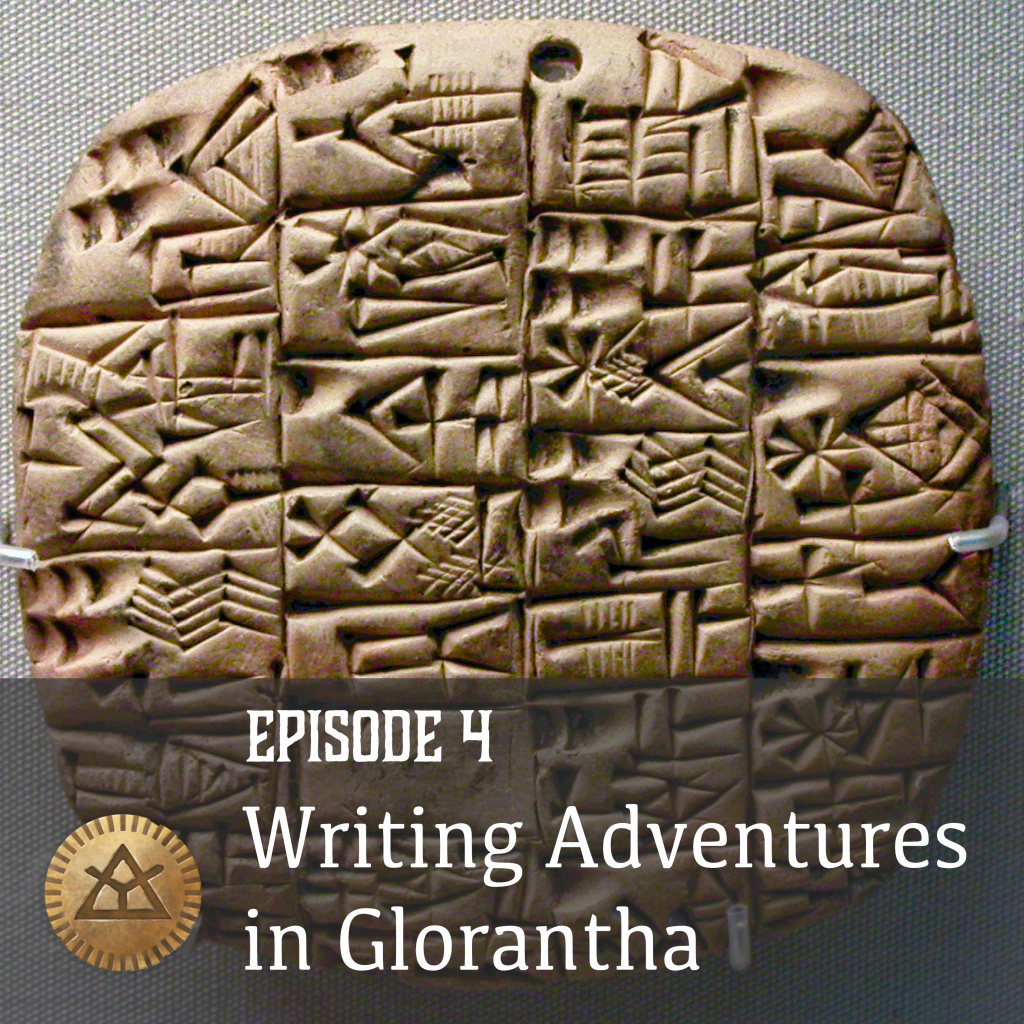
This episode’s guests are Beer with Teeth, at time in character:
- Erin (aka Varanis, a noble of Sartar lineage)
- Dom (aka Rajar, a huge Storm Bull axe fighter)
- Diana (aka Berra, a tiny Humakti warrior)
We also learn about their original GM Tom who is at fault, and about Kris who is the resident visual artist.
Why Beer With Teeth, and how they arrived at the logo.
Current Glorantha games played: one in the classical era, meant to end with the Cradle, one in the current timeline which had Kallyr come back after the Battle of Queens, and another such game run by Diana, currently digging into their characters’ previous history.
The campaigns combine published stuff and “making stuff up”.
Keeping several games’ plot-lines aligned when different GMs and parties advance at different paces.
Ludo talks about his games, and Dom discusses Cthulhu.
Using the Ars Magica trick of guest Gming in the main game (GMed by Tom), which is how
“A Tale of Woodcraft” came about – drawing plot cards.
Diana adds how Crimson Petals (Pegasus Plateau) came from that guest slot GMing
Ludo plugs our Newsletter “Journal of Runic Studies”
News
The Starter Set first observed in the wild at GenCon
Links to 3rd party unboxing videos, Andrew Logan Montgomery’s review.
Glass Cannon play-through as an example how the RuneQuest rules may be tough for newcomer GMs and players.
On the virtues of starter sets.
The GM has to decide which aspect of the rules you pick for a given situation, and what you ad-lib rather than sticking to the rules.
About the complexity of the RQ rules – at least as initial hurdle.
Hero Wars/HeroQuest being too niche and not suitable for many old school RuneQuest players.
Erin mentions the “training wheels” for the Witcher system, and would like to see something similar for RuneQuest.
Diana proselytizes by “grabbing random people from the internet”.
Erin tells how she got drawn into the game: “Just for one night!”.
Print version of Cups of Clearwine
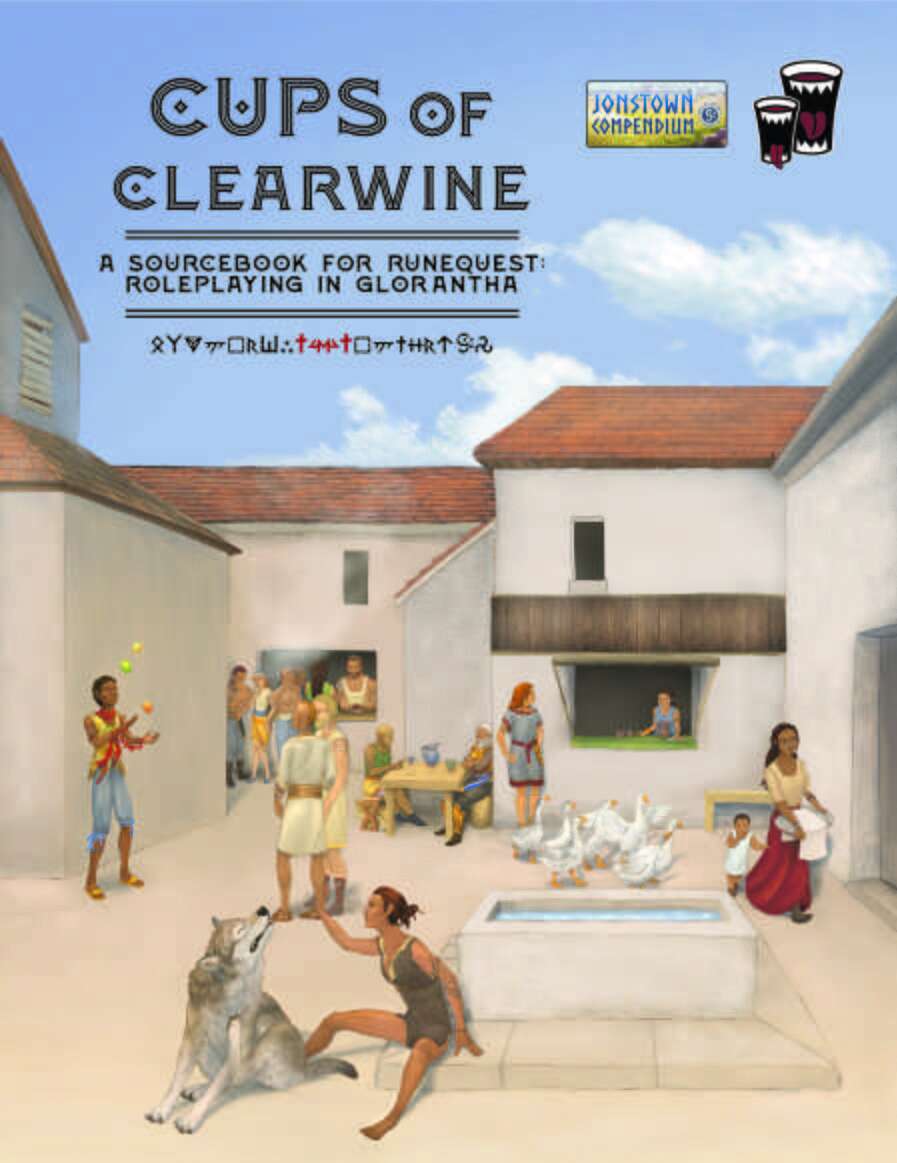
The elf-skin version of Cups of Clearwine makes our guests quite chuffed.
Jallupel Goodwind – The Whirling Moon
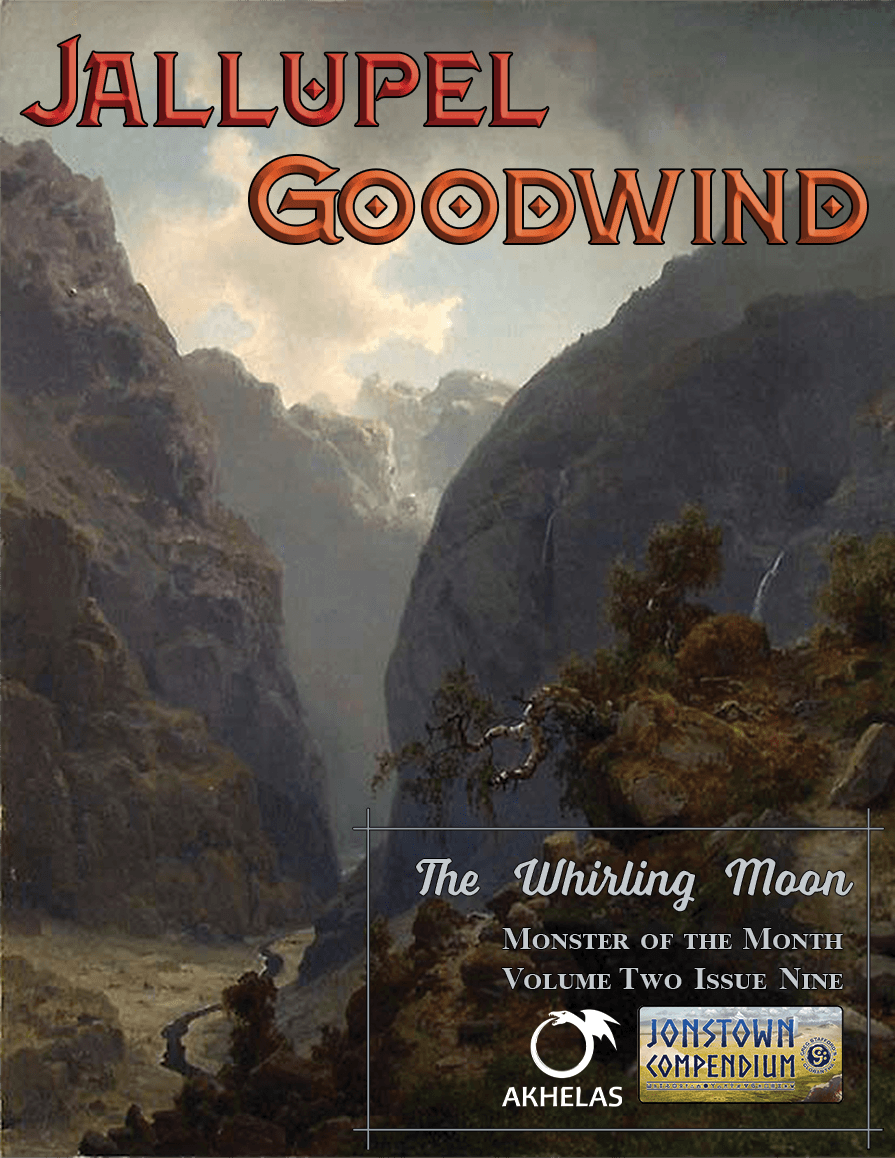
Myth of the Month Vol 2 issue 8 by Diana writing for Austin Conrad/Akhelas, including a scenario.
Preview of the Battle rules in the White Bull campaign
Use of passions, but also lots of rolls on the Battle skill.
Jeff Richard’s previews on Sartar Campaign material on Facebook
Erin learning stories and background, Jeff’s posts on Facebook.
Main Topic: Writing Adventures
Dom tells about his cooperation with Diana to create the interim scenario in their main campaign as guest GMs.
Erin talks about disappearing into those deep rabbit holes of research, and that writing game scenarios is somewhat different from writing stories.
Dom shares his (complete) notes from which he meant to run that scenario – about seven hand-written lines covering half an A4 sheet.
Diana tells how her lack of familiarity with GMing RuneQuest led her to pre-write a large range of tasks and challenges, and how that happened to be quite close to Chaosium’s submission guidelines.
Ludo points out investigative methods (like John Tynes’ concept of the Investigative Sandbox).
Nudging players rather than imposing railroad.
Diana talks about player characters working their way up from followers towards the movers and shakers.
Dom thinks in terms of cool scenes that he wants to inflict on the players which strangely are going to happen where the player characters walk.
Foreshadowing, plot hooks, or red herrings?
Introducing minor things that become useful hints later.
Red herrings created by players may be turned into plot hooks.
Prophecies – heroes fighting against one another, a test of strength of truths.
Themes
Adventures vs. arcs. Personal arcs and passions.
Lethality in the game
NPC stats.
Adjusting opponent ability, numbers and smartness to the player party.
Resurrection is always an option, both for departed player characters and NPCs.
Playing NPCs smart.
Creating NPCs as communities.
How much does the past reach into the design process. How much archaeology?
Finding something old (e.g. in Clearwine, which has history and pre-history), as items, or as shards and in middens.
Populating houses in Clearwine drawing a terrible map and then using “RuneQuest Cities” results as inspiration. (RQ Cities is really a reprint of Midkemia Press’ “Cities“, which is still available in all its OSR glory).
Pre-defining tension between the NPCs like in Dregs of Clearwine.
Erin foreshadows another Clearwine book.
Researching ancient technologies – charcoal-making, glass-making.
Family structures in Bronze Age society – multi-generation households rather than core families.
Researching Bronze Age
Erin riffs about how writing game material offers her an opportunity to make stuff up rather than sticking to facts (and citing all the sources).
(If you don’t know it, The Motel of the Mysteries is a book about creative interpretation of archaeological finds. The pdf linked is a very short version for educational purposes)
Suggested reading lists cut, and Dom’s woes GMing for experts in their fields playing characters with those skill sets.
Erin plugs Ritual In Early Bronze Age Grave Goods by John Hunter as one of her inspirations.
Dom talks about his role as the Glorantha grognard in the Beer With Teeth collective.
Cave walls with bronze bands – “yes, you are walking in the body of a dead god here”.
Glorantha is about magic, myth and belief, and conflicting truths may be tested against one another.
As the Game Master, your presentation of Glorantha defines the setting for your campaign. Your Glorantha will vary, possibly between campaigns you run.
The sense of community, manifest as the wyter entity, is a unique trait of the setting.
Use of Runes as hooks to pull player characters in
Runes creating personalities that lead to motivations, e.g. in The Gifts of Prax.
Horses with character (expressed as runes, though not with magic associated).
Making a campaign unique by changing one (major) feature in the setting for that campaign, like e.g. “Argrath is dead”.
Kallyr survives the Battle of Queen in the Beer With Teeth campaign, and the potential for story and conflict inherent in this.
Links
- Beer With Teeth website
- Beer With Teeth on the Jonstown Compendium
- Diana Probst on the Jonstown Compendium
- Diana Probst’s YouTube Channel
Credits
The intro music is “The Warbird” by Try-Tachion. Other music includes “Cinder and Smoke” and “Skyspeak“.
Episode 3: Passions in RuneQuest
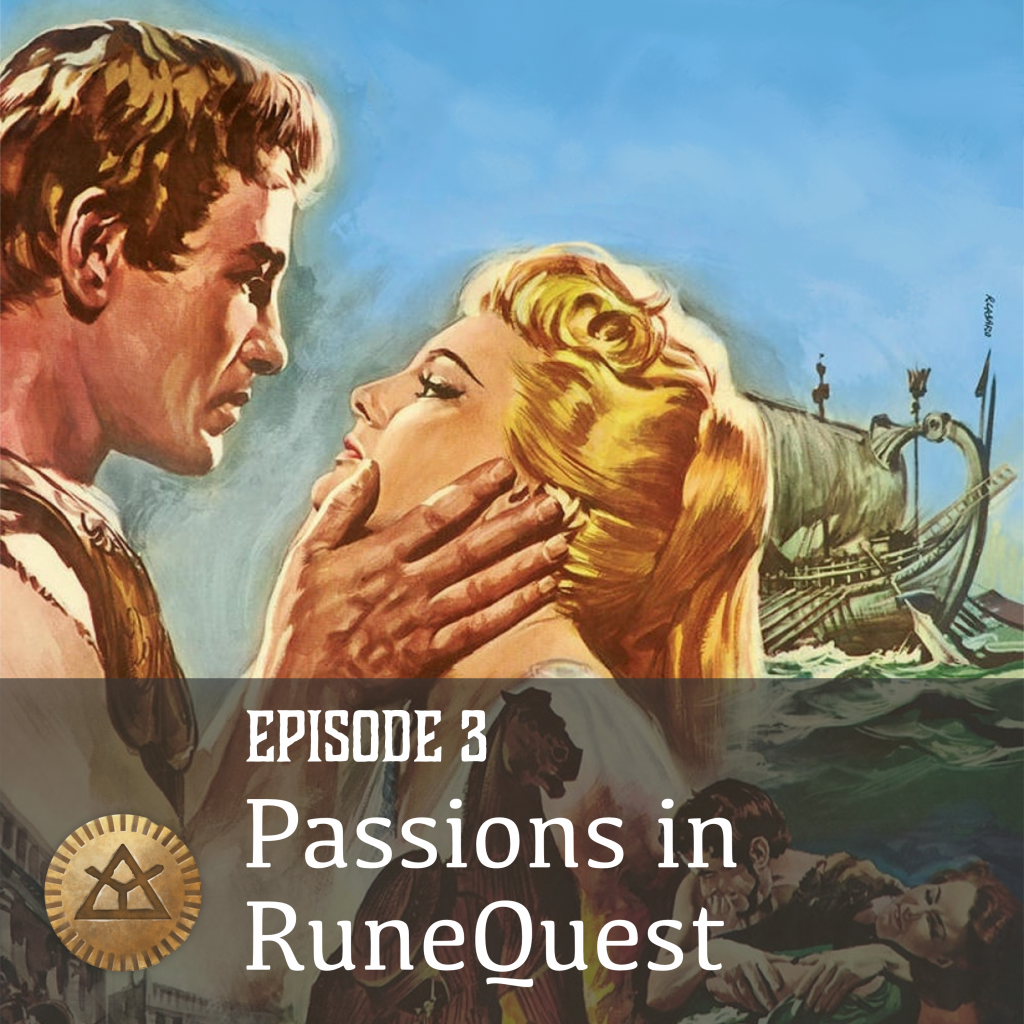
Our guest this (long!) episode is David Scott, who wears a number of Chaosium hats – among others convention presence, rules Q&A, and the web archives.
David talks about his work on the Well of Daliath – a collection of material posted on glorantha.com, slowly reconstructed from backups when stuff didn‘t migrate that well across platforms, and also chronicling current notes on Glorantha.
We hear some tales of woe about material lost to entropy, whether from natural disasters or from migration of the website.
News
Our only item this time (other than a shout-out to our newsletter) is the good bye to Steve Perrin, and the reactions of the community.
The Chaosium blog has links to a series of six blog posts by Steve on designing RuneQuest.
George R.R. Martin’s obituary on how Superworld shaped his career, Steve’s role in the first ever monster manual, and then there is Shannon Appelcline’s overview over Steve’s credits in the industry.
Remember to subscribe to the Journal of Runic Studies for weekly Gloranthan news.
Main Topic
We look into the introduction of personality traits into RuneQuest and other rpgs.
The first published version was 1981 in Griffin Mountain as the NPC record form (which Chaosium also put into the Thieves World box that was released the same year). However, David was able to track this development back even earlier, in (mostly) unpublished notes of Greg, and (other than to ultra-collectors, also unpublishable notes).
We cannot show you the glimpse into the “Unpublished RuneQuest” material David gave us, but we can attest that what we saw were scribbled notes (in more legible hand-writing than mine) without any grand revelations.
David shows us a few glimpses into the evolution of RuneQuest character sheets, and talks about the synergies between John Sapienza‘s character sheets, Steve Perrin‘s grasp of mechanics and Greg Stafford‘s desire to build his world.
A first fusion of skill percentages and numeric values for personality traits and passions:

The prototype of the NPC Record Form that made it into publication:

David then gives us an insight into Greg Stafford’s process into bringing these traits and the runes into the game RuneQuest, and Gloranthan gaming in general.
Greg’s concepts of people being hard-wired for mythology and certain types of behavior. One book Greg suggested to David is “Our Kind” by Marvin Harris.
Ultimately, the personality traits became an integral mechanic in Greg’s King Arthur Pendragon. David Larkin shows Greg’s research as annotations in Le Morte D’Arthur in his Pendragon designer’s notes.
The game mechanics for dragonewts (as NPCs) in Wyrm’s Footnote #14 (in 1982) were another step in the process of getting game mechanics out of this.
The quest for HeroQuests as a game mechanic led to Greg working on the Epic System – or Glorantha the Game – even during the years of the Avalon Hill publication of RuneQuest.
“The maddest character sheet anybody has ever seen for Glorantha” from the development process for Glorantha the Game:
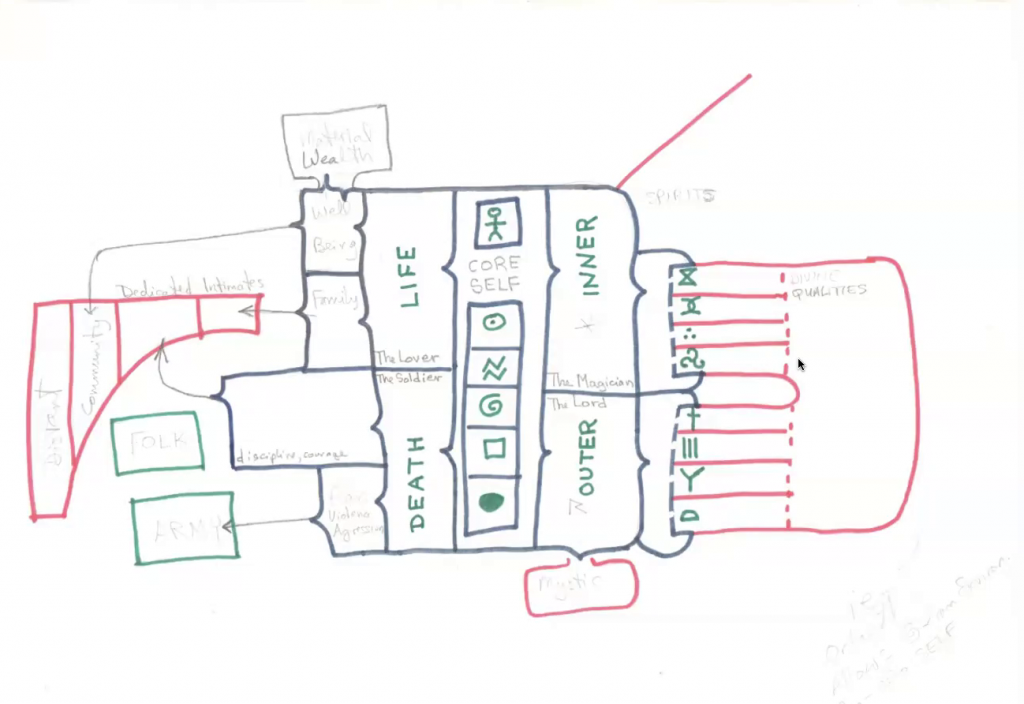
The more coherent and elaborate pieces of this process made their way into the “Arcane Lore” volume of the Stafford Library, which still is a collection of almost random notes and concepts.
Robin Laws’ concept for Hero Wars (later HeroQuest, nowadays Questworlds) then was a game where basically all abilities were traits.
Personality traits in gaming praxis
We address the reluctance of players to let personality traits dictate their roleplaying of the characters. David talks about three types of gamers’ reactions to this mechanism – newcomers, curious old hands, and set-in-their-ways grognards.
We touch on conflicting passions (rather than just opposed traits), like “Loyalty (Leader)” and “Hate (Leader)”, and the roleplaying potential in that, and how not to roll this gives the players the freedom to steer their characters.
The example characters of Vasana (the leader who has “Hate Lunar Empire”) and Vostor (an AWOL Lunar soldier disillusioned with the Lunar army looking out to join Vasana’s band) are used in David’s demo games to illustrate how these things play out.
We touch upon how Hate Lunar Empire is different from hating individual Lunars, and how the Storm Bull’s Hate Chaos does not make every Lunar in sight a target for their berserking.
We also talk about the situation of Lunar converts in Sartar after 1625.
Augmenting with traits and passions
“Can I use my Mobility Rune to fly?” and credibility checks.
Use of “Loyalty (Leader)” to get things from a leader, and other uses, and use of automatic success in roleplaying situation.
What to do as a GM when a necessary success doesn’t show up. How to deal with failure.
Opposed rolls with the same degree of successes (plugging this little treatise).
Using the moon rune to augment spirit magic casting.
High scores in passions or traits – GM calls
Allowing players to reduce such high traits
Traits derailing the game.
Traits are not meant to be played as mental illness.
Runes and passions in heroquesting.
Casting massive amounts of rune points manifesting the deities.
Acquiring new passions in-game
Taking loyalty to the leader, or to another patron the character might want something from.
David gives a great example about a Lhankor Mhy initiate from his campaign who took loyalty not to the Colymar tribe, but to the Colymar lawspeaker Hastur, and how he would go about shifting loyalties from one temple to another.
And with that, Joerg reminded Ludovic of bedtime, and we postponed questioning David for a later podcast.
Episode 2: On the Road

Returning to our tower for our second episode of the God Learners Podcast, we meet Austin Conrad, the author and publisher of the Myth of the Month on Jonstown Compendium aka Akhelas or Crel.
We digress badly even before we get into the news or our blurb for the Newsletter. (Spoiler: we keep rambling. Surprised?)
The News
Don’t forget to subscribe to the Journal of Runic Studies! Get your Gloranthan news in your inbox, RSS reader, or browser!
We start off with the report that Jonathan Tweet has submitted his text on the project tentatively named The Dragon’s Eye.
We discuss the art previews, especially the 20 heads of Sartarite folk, and digress about skin coloration. The name of the orange-skinned hero Jörg failed to remember is Binstarnif Awe.
Virtual Tabletop integration for the RuneQuest Starter Set with Fantasy Grounds appears to be imminent. Of course, we still need to wait for the Starter Set box to become available in the distribution centers around the world for the pdfs and probably this material to be released.
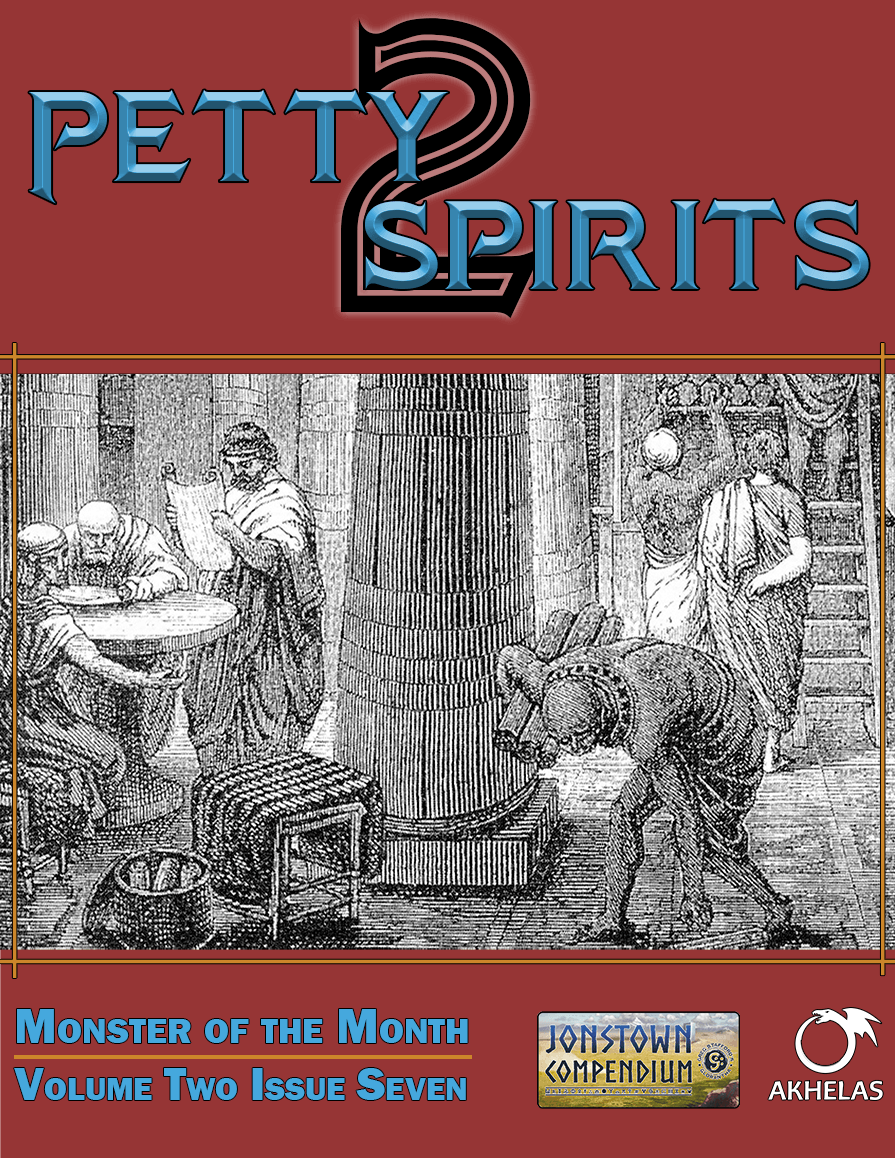
Austin talks about his newest Monster of the Month project, Petty Spirits part two. (Link to part one), and gives us this preview of the book wyrm by Laura Galli:
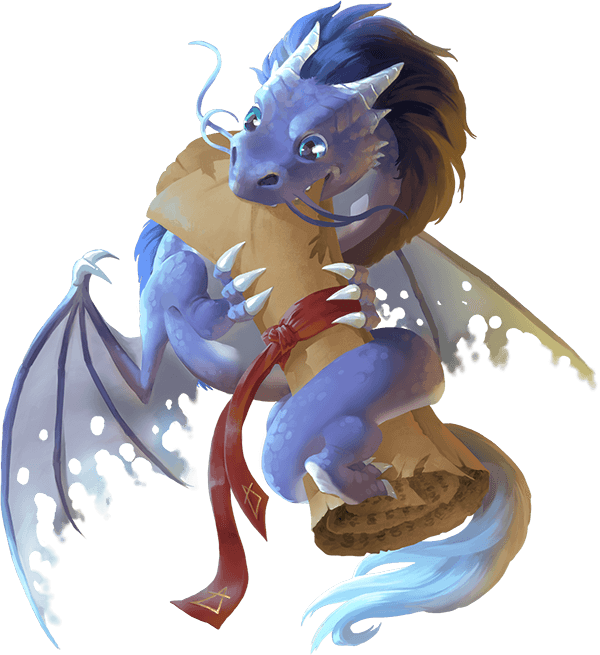
More leaks of the upcoming Sartar material or Jeff’s research for that include rather detailed breakdowns of three clans – the Ernaldori, the Varmandi, and the Hiordings, and the Guild of Bronze Workers in Boldhome, covered as well on BRP Central in more convenient format. We struggle to stay on topic, which leads us to researching where a group of dedicated volcano worshipers could erupt one…
Austin’s index of the Red Book rune spells by the runes has made it into the official pdf collection, and we ponder how far one can take recursive indexing.
And then, 24 minutes into the podcast, we digress into our main topic:
Travel in Sartar
So who is traveling across Sartar and Dragon Pass, and for what reasons?
Austin points towards the maps in Nick Brooke’s index to Jonstown Compendium scenarios, originally published on BRP Central.
Reasons to Travel
Digression: How common are metals in Glorantha?
Messages across long distances: people carrying them, or spirits carrying them.
We discuss the roles of Issaries in myth and in the world, as Issaries is a primary travellers’ cult.
Travel preparations should include sacrifices to the gods of the road, or to ask the omens.
Pilgrimages as This World HeroQuests, and rites of purification and ritual preparation while on the way. Austin brings up herms and how disrespect to these could ruin a political career in Athens.
Tourism in the Ancient World, and in Glorantha, and penning travelogues to make your sightseeing a business expenditure. The names of Pausanias and Herodotus get dropped.
Travellers in service of other travellers: work crews clearing roads, or trailblazing new magical paths.
Family reunions as another excuse to take to the roads.
Means of Travel
Austin addresses the tragedy of lack of boat traffic on rivers or bigger interior bodies of water, at least for the core region explored now.
After we recorded this, Jeff Richard leaked a map showing the main roads and navigable rivers in Kethaela and southern Dragon Pass.
Pack animals and mounts
Donkeys, mules, Praxian beasts, or horses? Dinosaurs? Or bugs?
Do you use encumbrance rules?
Human porters as an alternative to pack beasts, and size and composition of travel groups.
Wheeled transport – Ox carts for heavy cargo, odd draft beasts for less heavy stuff.
Road encounters
Bandits and how they might shy away from people in armor and certain tattoos.
Size of bandit groups – organized crime, rival clans attacking traffic on roads controlled by your clan.
Reimbursement for being raided on a clan’s lands?
What are the terms for using the kings’ roads?
Spirits and ghosts, like in Vinga’s Ford.
Wild animals, and Austin calls for a volunteer to write up a scenario on insurance fraud.
Jörg mentions smugglers’ correspondence on clay tablets.
Running out of gas – can a traveller graze a caravan beside the road?
Children and alynx sidekicks as internal source of trouble and tension… “Are we there yet?”
Natural disasters (other than kids)
Frequency of encounters (or more specifically bad stuff): One encounter per hex travelled? Or a narrative approach similar to Robin Laws’ narrative difficulty
Hospitality as a means to slow your travels
Where do you sleep tonight? Hospitality as a boon. Austin explains Xenia, classical Greek guest friendship which creates lasting light bonds between host and guest
We talk about the official or unofficial ambassadors of clans or tribes in some distance, and we natural talk about going to Nochet.
The Cult of Geo as the state-supported fast food or motel chain, and then we can’t help discuss Apple Lane.
Replacing mounts or pack animals, and how that could get thwarted by players having formed attachments to whatever they own.
Are there horse shoes in Glorantha?
Public baths, and how they are an opportunity to get players out of their armor.
Adventure possibilities in visiting private hosts rather than inns.
Gift-giving as guests, and how to twist that into more adventure hooks.
Credits
The intro music is “The Warbird” by Try-Tachion. Other music includes “Cinder and Smoke” and “Skyspeak“.
The featured image is by Bernard Gagnon.
Episode 1: A Visit to the Black Alynx
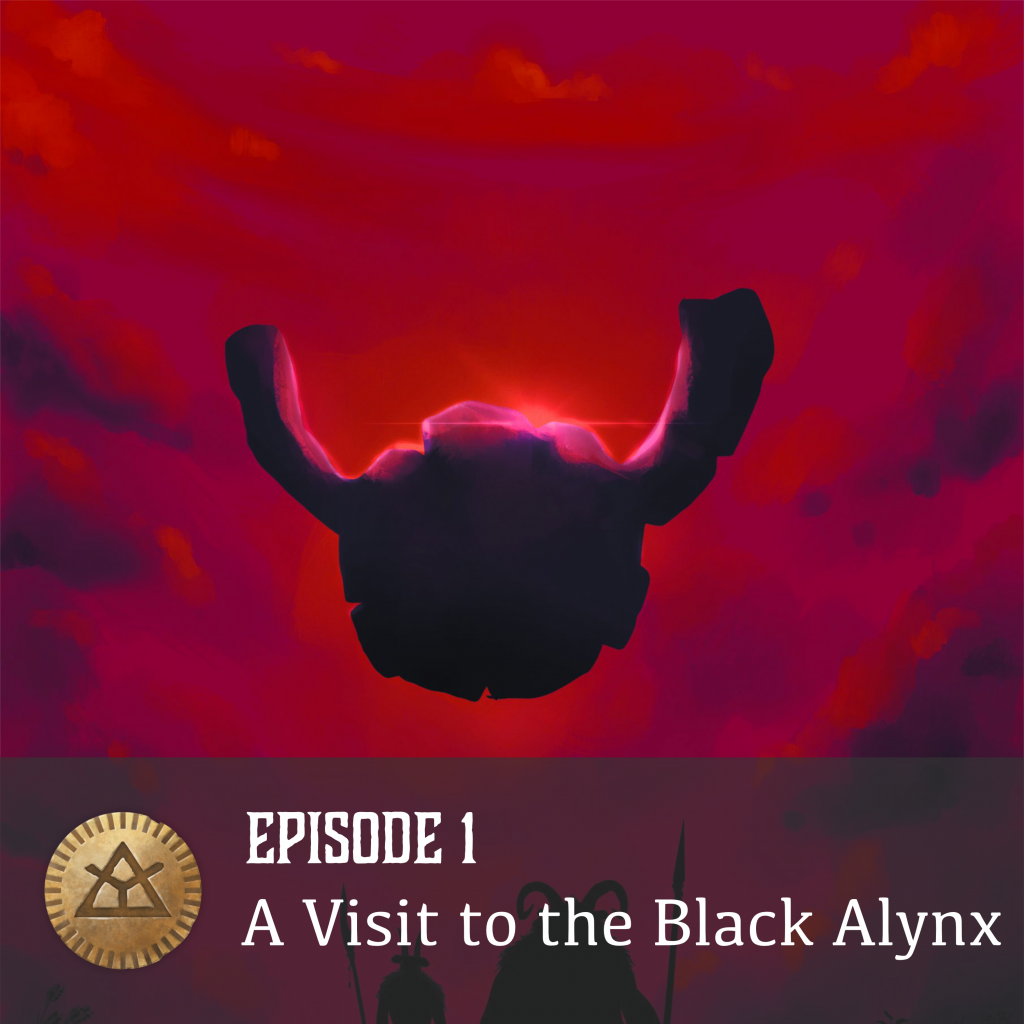
For our first episode of the God Learners Podcast we are visiting Neil Gibson, proprietor of the Black Alynx inn in the seedier parts of Jonstown. Neil’s podcast “Tales of the Black Alynx” had a series of interviews with creators of the Jonstown Compendium, but it is missing one significant contributor – a certain Neil Gibson, author of “LEGION”. We are aiming to amend this omission…
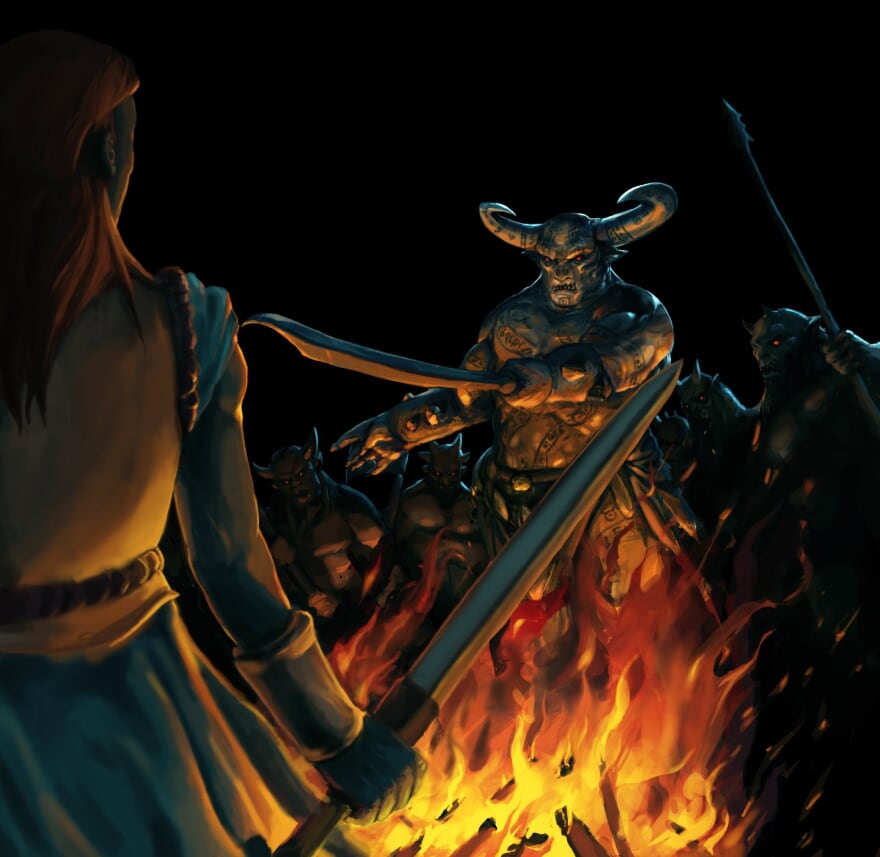
Recent News Items:
The Red Book of Magic is available as a hardcover now (at the point of writing this, not yet in Austrailia).
And if you like the great cover by Mark Smylie and want it as a print or on any number of useful items like mugs or shower curtains, Chaosium’s Red Bubble store will take your money.
There have been plenty of postings by Chaosium with previews of the art that is going into the Gods of Glorantha books.
Loic Muzy has contributed 170 pieces of art, among these a portrait of each of the 100 cult deities. There is a huge piece by Agatha Pithié depicting the monomyth, or at least an impressive number of important scenes from it, and the Prosopaedia will be illustrated by Kathrin Dirim.
There is a thread with many preview pieces on BRP Central.
In recent time, Jeff Richard has also shared numerous previews on his current Glorantha developments on Facebook, and because of the fleeting nature of Facebook streams, these posts have been documented in other places, among others in our newsletter.
Jeff shared a list of foundational documents of Glorantha lore, and a list of some other publications which are strong but not infallible influences on the current Glorantha canon, among other places on the Well of Daliath. While we’re at it, we talk about our own research and inspirational sources.
We are talking about the imminent price raise of high quality Print-on-Demand books from DriveThruRpg, including those of the Jonstown Compendium, and a sale on such books before these new prices hit the platform.
We talk briefly about the change in the portrayal of Sartar from a land of rural clans with heroic but rather hidebound hill dwellers to that of a cosmopolitan crossroads of trade and magics with vibrant cities full of architecture that you expect from ancient civilizations.
We talk about real world information on the Bronze Age and related periods.
Interview with Neil Gibson
We ask Neil about his beginnings in roleplaying, and Neil tells how the switch from D&D to RuneQuest changed the way of playing.
We learn about his experiences exploring the Big Rubble and the Elder Wilds with RuneQuest Second Edition, his path through other systems like Call of Cthulhu, Bushido, and Car Wars, how his roleplaying career took a hiatus when Gloranthan RuneQuest disappeared, and how his enthusiasm was re-kindled with the publication of RuneQuest: Roleplaying in Glorantha.
Neil relates his efforts roping in his children, and his online experience on early Sunday mornings, a RuneQuest third edition game set in mythical Wales, and plans to run a local RQG game from the Starter set.
We talk about Legion Games and “LEGION“, Neil’s first offering on the Jonstown Compendium.
Ludo meant to cite Jason Durall, not Steve (Perrin?)
Neil talks about the fun he had creating these broos, and gleefully presents the fun that can be had with diseases carried by broos, including a few new ones he published there.
We talk a bit about NPC collections as roleplaying supplements, and how they evolved from mere repetitive stat blocks into collections that give us motivations, interaction with other NPCs, and scenario hooks.
Neil reveals how LEGION was created as a practical application of creating a script to produce stat blocks for another project he has in the works.
LEGION is in fact the first of quite a few publications in the Jonstown Compendium by Legion Games, a company that Neil created with Drew Baker, the author of the Rubble Redux series and a number of other Legion games supplements. Neil and Drew have some projects in the pipeline, too, including a board game.
Legion Games has a bundle of all their products to date out in pdf.
Other than broos, Neil is in the process of preparing a collection about an even more vile foe: Ducks. (But then that remark may have been quackist.) The ducks are to avoid the Disney tropes and the pure comic relief approach, and will detail two quite different populations of ducks – downtrodden ones in Dragon Pass, and fairly successful and proud in Esrolia. Neil has roped in a new artist for this project, Thomas Connell, who offers a preview of the Duck style on his ArtStation page.
Neil continues working on his campaign putatively titled Into the Wastes, planned as a series of three books, the first named Flower Girl set around Bullflood in western Pavis County, the second in Indagos a little further to the east, and finally an exploration of ruins of Genert’s Garden in the Wastes. The books are planned to provide some gazetteer of the places, scenarios and plot hooks.
We talk a little about publishing on the Jonstown Compendium, how the earnings from sales mostly bolster the war chest from which illustrators are hired to increase the quality and appeal of the products, often after the initial release.
Neil has his own podcast, The RuneQuest Project, available on all the major podcasting platforms. Starting out with actual play episodes, about a year ago Neil switched to a series of interviews with publishers on the Jonstown Compendium, starting a series titled “Tales from the Black Alynx”. Neil is planning to pick up some interviews, and plans to go after the artists now.
Neil talks about his most anticipated releases from Chaosium for Runequest, the Sartar box and the Starter box in particular.
Finally, we ask Neil for his personal runes. With Neil’s choices the only cult we could think of is a revelation of the God Learners…
Credits
Images in this post are courtesy of Legion Games. The intro music is “The Warbird” by Try-Tachion. Other music includes “Cinder and Smoke” and “Skyspeak“.
Interlude
In this short interlude, Joerg and Ludovic announce their return to Gloranthan podcasting with a new name!

Shortly after this airs, all of our website and social media presence will migrate to a new place. Visit the God Learners for more information… if you get the “Coming Soon” page, it means we are still heroquesting deep into the bowels of the internet!
Wind Words 8: Glorantha has Talent, and Contests
Intro
Episode 8 airs with a few weeks delay compared to our usual rhythm, as we wanted to feature our Glorantha Has Talent?-contest in this episode. We found the wait worth the while, and so did our judges.
Herald’s Podium
While we have moved the complete coverage of news about Glorantha to our Wind Whispers newsletter, we still pick a few items for our voice reporting.
Glorantha Fan Awards 2019 and 2020
In memory of Greg Stafford passing away in October 2018, Chaosium announced the laureates for Gloranthan fan activity for last year and this year, Congratulations to Martin Helsdon and Nick Brooke!
RuneQuest Classic (second edition) titles available as Print-on-Demand
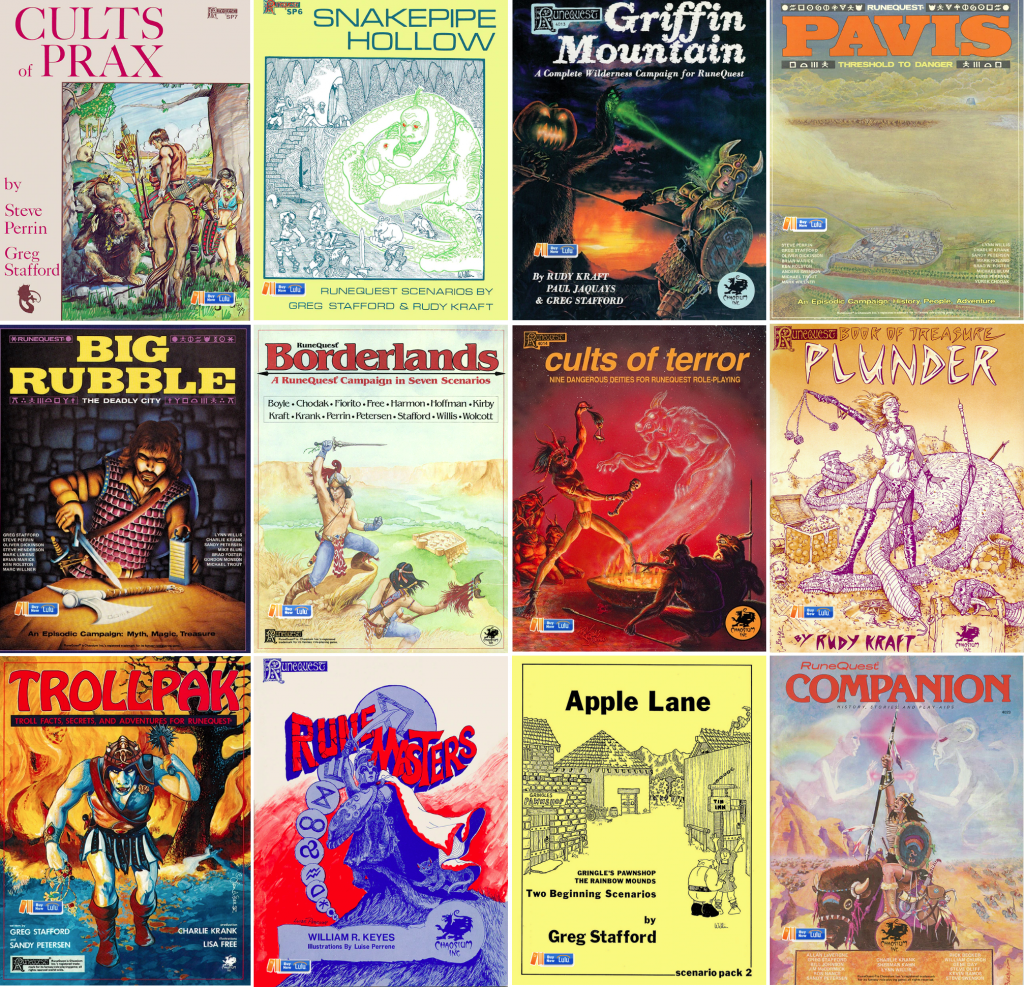
The titles from the Crowd-funding for the Gloranthan Classics edition are finally available as print-on-demand hardcovers from lulu.com.
Art Packs: Gloranthan Stock Art for Creators on the Jonstown Compendium
Martin Helsdon started an experiment offering three packages of illustrations from his works “Armies and Enemies of Dragon Pass” and “Men of the West” as illustrations for creators – Orlanthi, Lunars, and Hsunchen, Nomads and Beasts.

Dario Corallo followed suit with the character art he provided for Gianni Vacca’s Last Faction Hero.
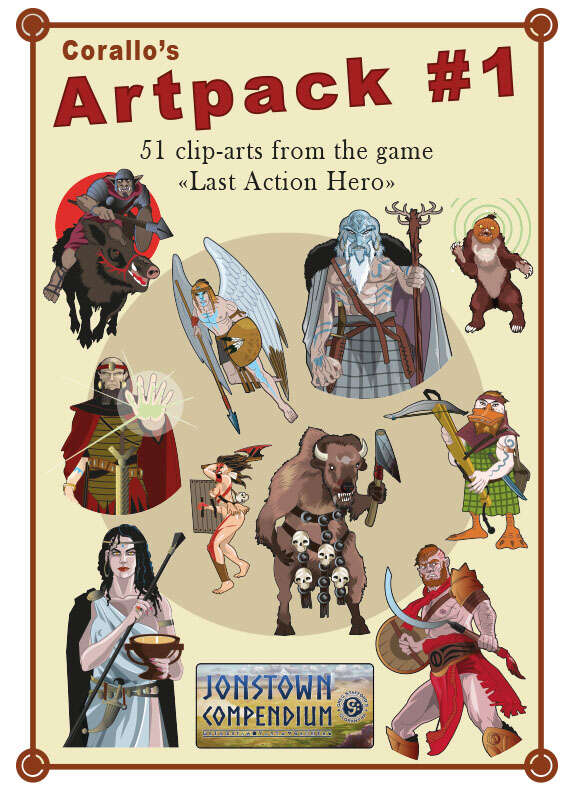
The Pendulum and the Pit
A new free 48 pages product on Jonstown Compendium, a slightly horror scenario for Sacred Season and thus probably fit for a Halloween game.
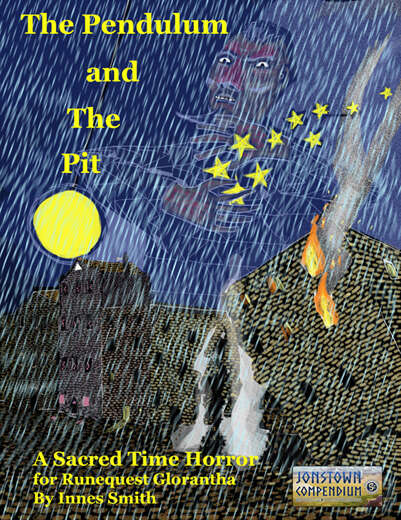
Glorantha Games 2020 Experience
Ludo reports about his gaming on Pookie’s online convention and leaks tidbits from the Kralorela RQG project under development by David Millians.
Kraken 2020 as a hybrid convention

While we were recording this, a much reduced face to face convention in one of the remotest corners of Brandenburg reached out to the internet. We’ll try to get feedback from the organizer and attendants. There is a little digression about the history of Glorantha-themed conventions in Germany.
RuneQuest Glorantha German Edition Crowdfunding
Jörg reports about the success of the German Crowdfunding and his experience on German language platforms during the CF. We compare international editions, extras to be had, and errata to be included.
Glorantha Has Talent!
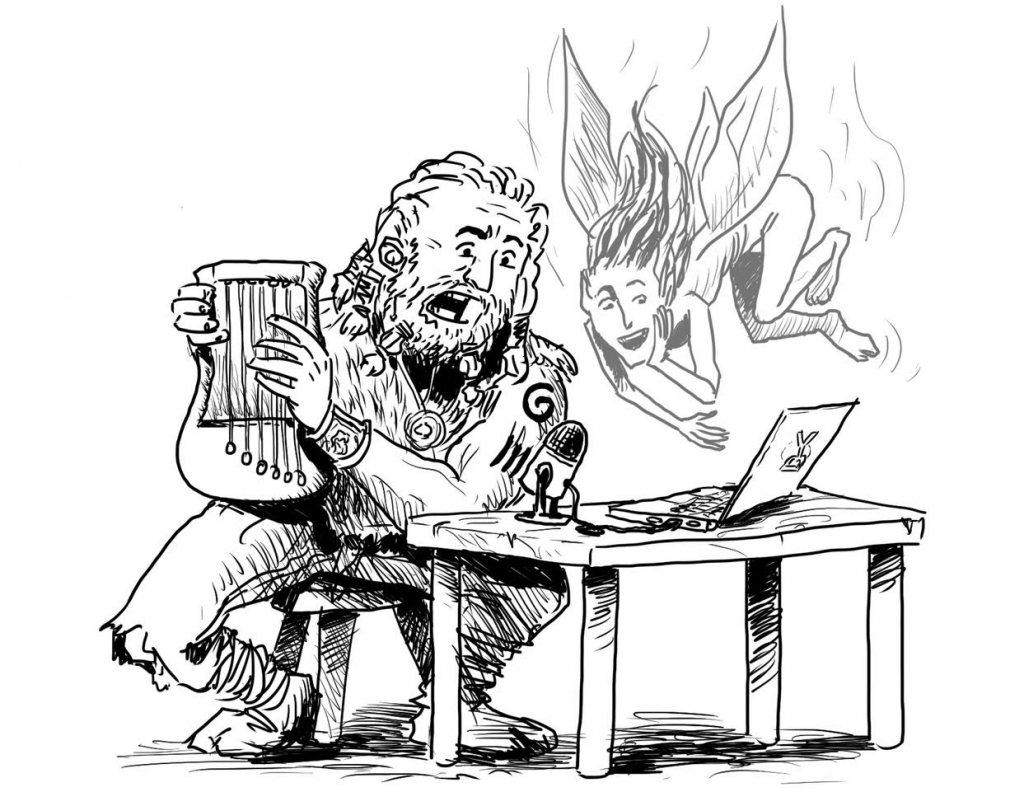
The first of our main sections, wherein we are joined by our three judges to listen to the entries, get their feedback on the submissions and announce the prizes and their ranking.
We talk about the rules for contestants and judges, and present our team of three:
- Diana Probst, of Beer with Teeth fame on the Jonstown Compendium and co-author of a scenario published by Chaosium in Pegasus Plateau
- Greta Gill, notable contributor to BRP Central and author of the blog Eight Arms and the Mask
- Nick Brooke, outstanding fan contributor to Glorantha and author on the Jonstown Compendium
For the whole list of contestants, entries and individual recordings (some in the original stereo) as well as some of the splendid supplemental material we received, follow this link. We don’t want to spoil the results just yet.
Heartfelt thanks to everybody who contributed to the contest, whether as judges, sponsors, or participants!
Artistic Contests in Glorantha
After enjoying the fruits of the contest, Bill, Jörg and Ludo plough onward to discuss how such contests can find their way into your games. We digress a lot, as usual:
The Garhound Contest – the growth of a myth out of a scenario
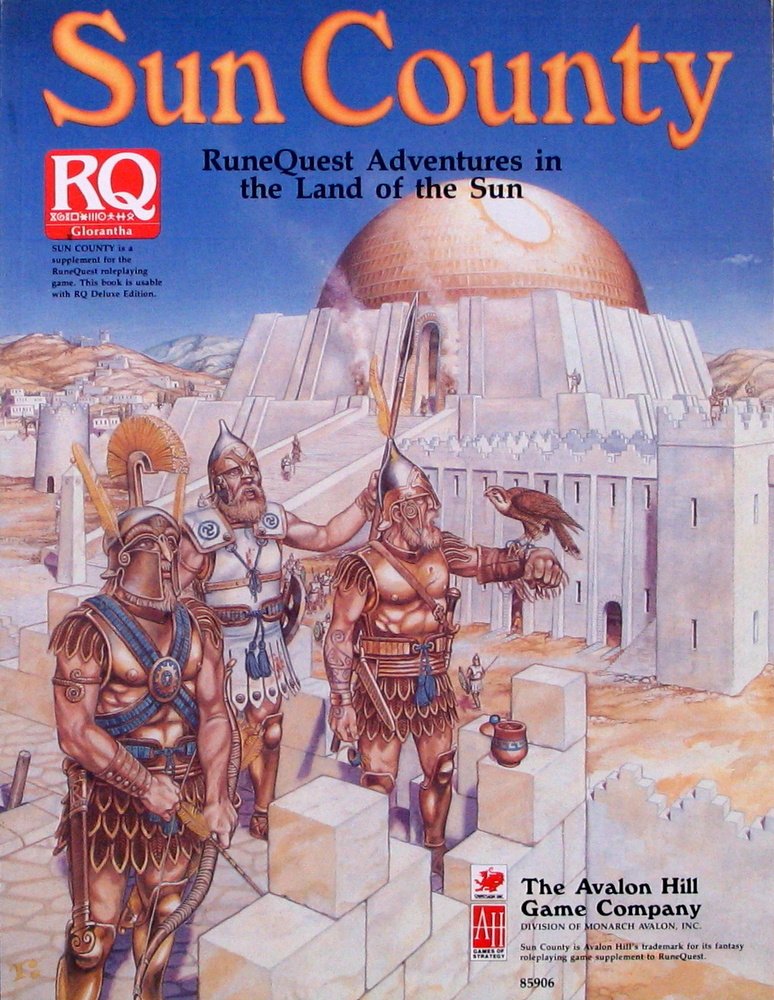
Bill shares his admiration for Michael O’Brien’s main scenario of the RQ3 Renaissance book Sun County, the Garhound Contest and Melisande’s Hand, and speculates how a contest which might have once been a way to keep the youngster’s energy away from trouble becomes a myth or gets caught up by myth.
Singing for the Ludoch – a Choralinthor Bay Myth becoming a ritual contest
Jörg presents another story about the Choralinthor Bay Ludoch and Fisherfolk and tries to provide artistic expression as another way to solve conflicts. (Transcripts of both these stories will be made linked as text soonish.) We also touch upon the uncanny attention that use of the term Ludoch creates for one of us….
A Look at Donandar
Ludo explores the cult of Donandar and its role in the world. We discuss Illusions, stage craft, and a Marvel heroine in the course of this.
Wind Words 7: Plenty of Valleys
Well, this is something Ludo has been looking forward to since the release of The Valley of Plenty, To be honest, so have we all, and the Carpenters were as wonderful as we thought they would be, They invited us into their lovely southern home replete with kids dogs and a just a wee touch of chaos—in a very genteel way. And in the course of our conversation we find everything one expects from the creators of the very cool “Wildlings”! But first, let’s meet our judges for Glorantha Has Talent? and then see what M has for us…
Intro
:58
Glorantha Has Talent?
Our fantastic Gloranthan Talent Show!
We finally introduce our wonderful Judges!
YAY!
We asked our Judges to tell us about art that inspired their Gloranthan gaming and we give a few examples below:
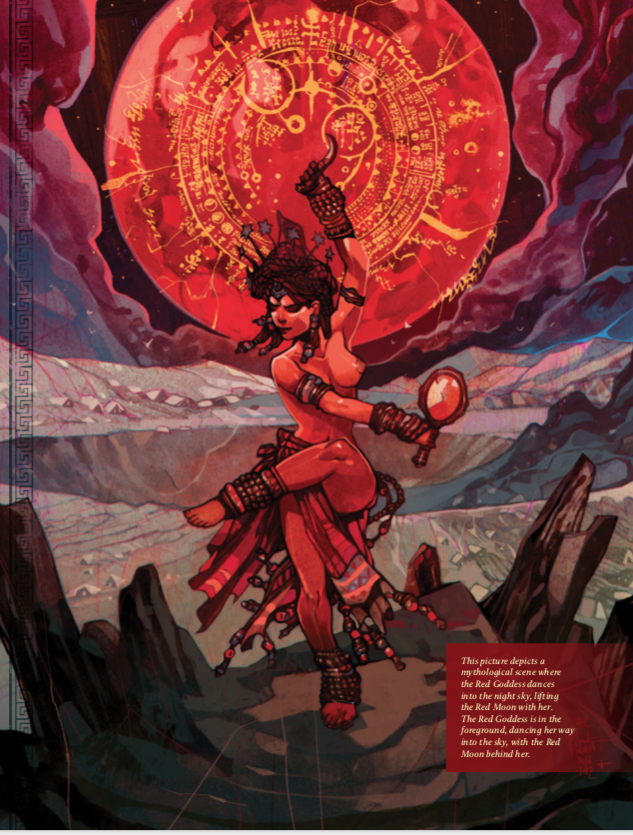
Used with kind permission of Chaosium Inc.
Peggy gives us a few links:
:Eugène Delacroix’s Ovide Chez les Scythes
Scythian horse equipment
Scythians
Scene of fight of two horses Kazakhstan
And a pic

14:26
SIGINT/Psych Ops
The good stuff straight from M, with a flurry of items of less than ideal repute. Rumour has it this used to be our “News and Rumour Tables” but that thought gets an A for too awful to contemplate.
15:19
Money Money Money

We like these play aids, we really do! Buy these @. Campaign Coins!
18.52
RuneQuest For Free?
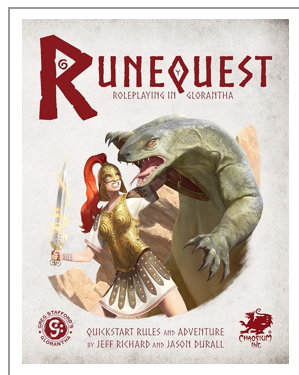
An affordable option for evaluation or even short play, It’s great for those of us that are facing economic hardships in these strange times.
20:44
Dragons Eye and Other Examples of “YGMV”
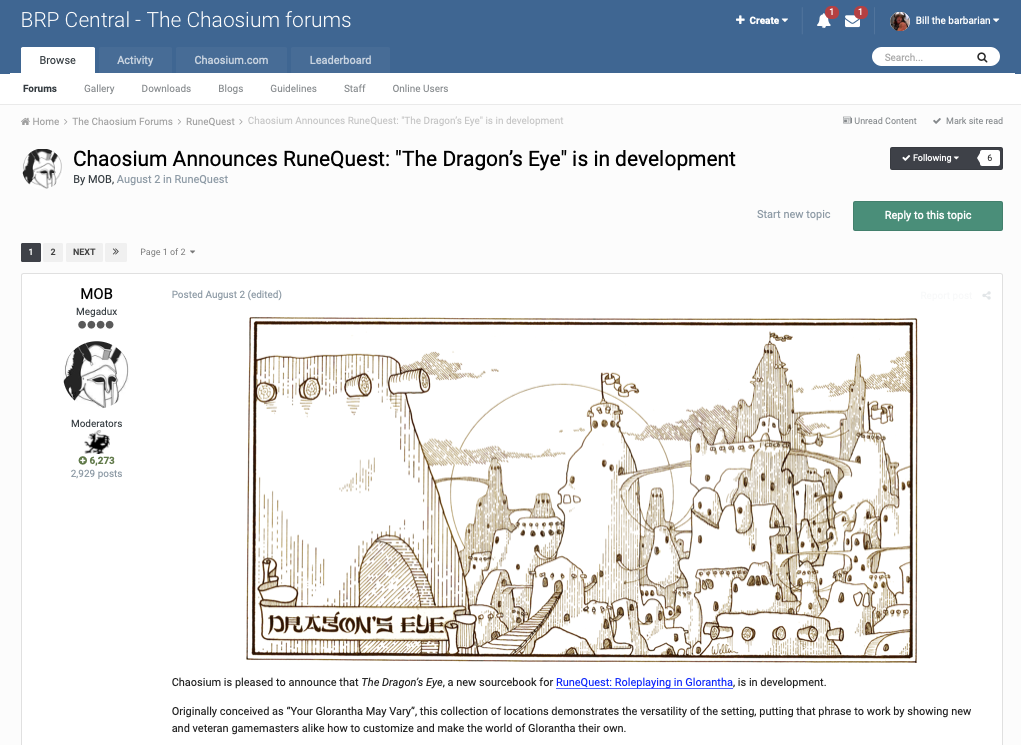
This is a long awaited examination of Glorantha locales that us old folk have been waiting for forever! This supplement explores the strange and odd places in Dragon Pass that show that Kansas is far, far away!
25:05
M. Heldson’s “Men of the West”
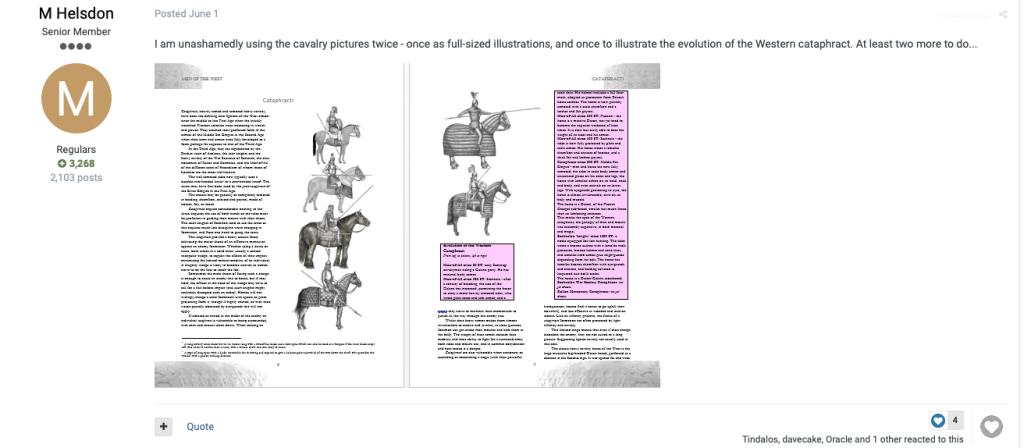
Martin returns with another of his explorations of the fighting men and women of Glorantha. This time he goes West!
20:48
D-Infinity’s RuneQuest Thursdays

Great RQ aids from a prolific and punctual fan! Here is June’s RuneQuest Thursdays!
32:39
French Griffin Mountain for RQ G
According to M, the french will be getting this double translation with the publication of RQ G or soon thereafter: Double translation; once into French and then once more into RQ G!
Quelle Chance!
37:36
Our Main Topic
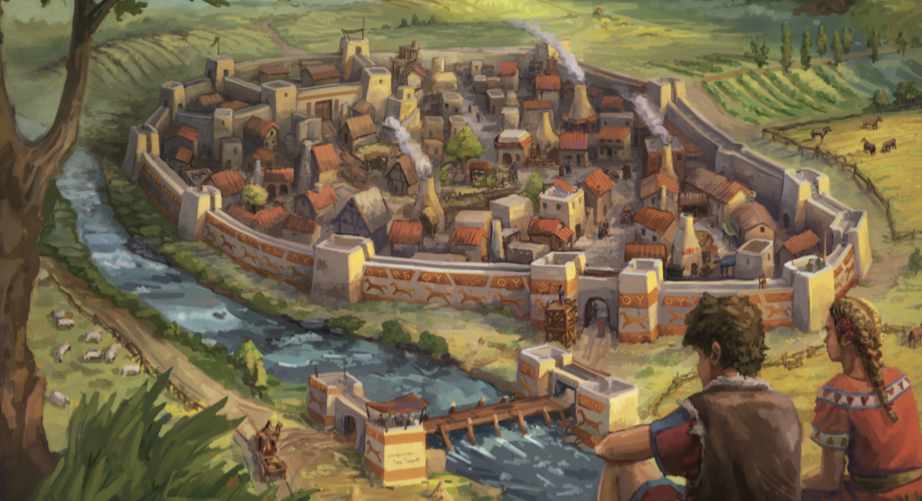
An interview with the Carpenters’
of Troupe Games Fame!
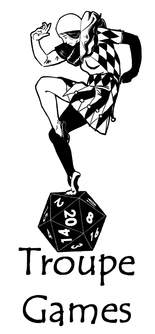
- Introducing our guests, then a sneak peek at our Lightning Round
- Their history in War-Games and RPGs
- Griffin Mountain changes everything
- Years pass and then cue a late visit to Sandy Petersen’s epic TrollPak!
- Gloranthan Miniature game?
- The Dundealos, The Poljoni, the Jaldonkillers Saga and how YGWV
Joerg asks the tough questions! - The Wildlings and The Valley of Plenty
- Novel use of PCs and NPCs, Bill says “Bravo! Well Done!”
- A discourse on BRP OGL and the QuestWorld SRD
(Bill gets a headache from all the TLAs). - Troupe Games on Inclusivity, X cards and Trigger Warnings
- What’s up and coming for Troupe Games?”
1:31:39
What do fat Elvis and fat Hemingway have in common? And here, we get our comeuppance!
1:33:04
The Lightning Round
1:37:57
Bye For Now!
See y’all next month for Glorantha Has Talent? and so much more!
Wind Words 6: The Travels of Biturian Varosh (Part 2)
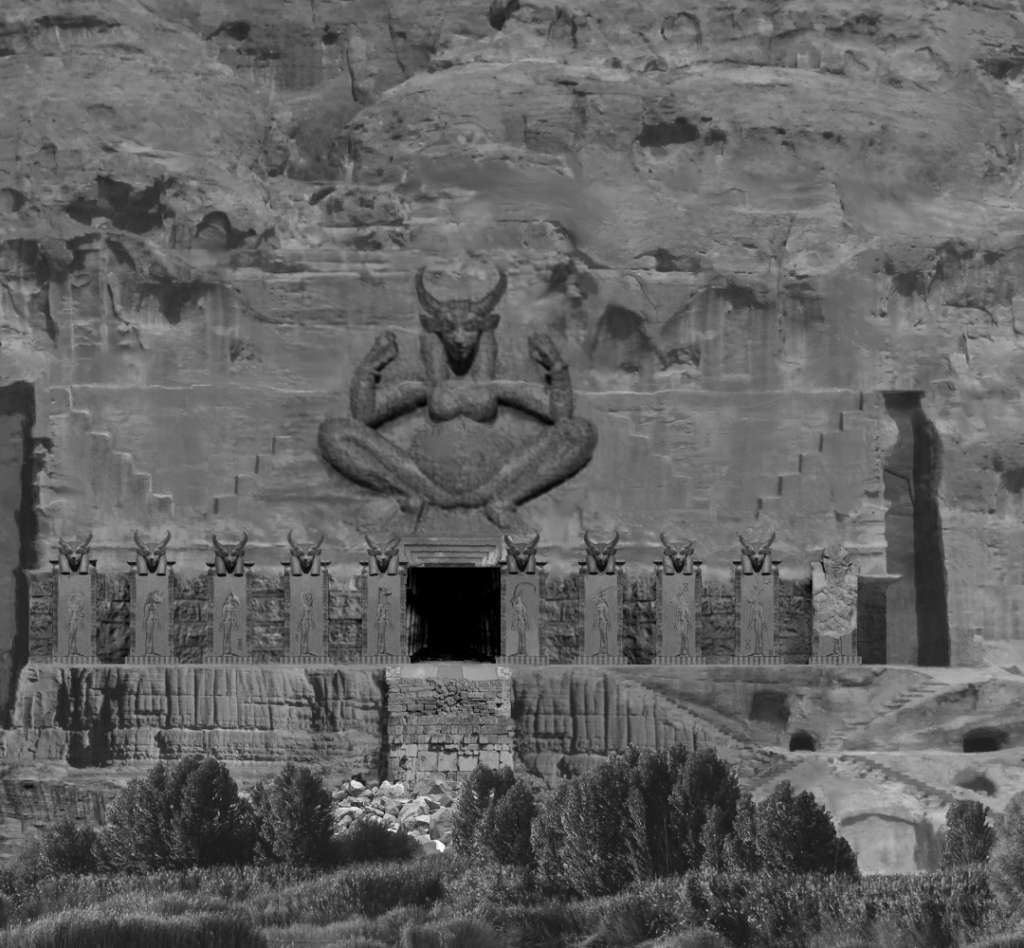
Glorantha Has Talent?
00:40
We announce our contest for audio takes on Glorantha.
A Ludoch Story
02;10
Another example (after last episode’s joke at the end of the podcast) of how such a 3 minute audio entry could sound
The Herald‘s Podium
05:25
Starting with an interruption announcing Wind Whispers, a newsletter collecting the news of the week (convention news, new products, new rumors, and occasional looks at cool topics on the interweb, current and older).
Conventions
08:35
Gen Con Online, and the Armageddon live conventions in New Zealand
RuneQuest Live-Play videos
09;30
The RuneQuest Live-Play videos on Twitch and YouTube
Should an official live-play be free of house rules?
Orkenspalter TV meets Chaosium
15:40
With Lynn Hardy, John Wick, Jeff Richard and sorry, not Mike Mason, but Jason Durall—bad Jörg, bad!
Some Jonstown Compendium products now available in Print on Demand
Only electrum sellers are going to get a Print on Demand, talking about the catch22 when some buyers hold back on supporting a new title hoping for a PoD bundle and electrum status possibly delayed or not reached.
Talking about reading in the bathroom (don‘t try that at away from home, folks)
What‘s New on Jonstown Compendium
26:00
The Sandheart Trilogy is getting a remake with more illustrations
The Secrets of Dorastor by Simon Phipp
Discussing Melo Yelo, the Yelmalian
John Wick‘s Blue Moon, White Moon
John Wick? No, not the one played by Keanu Reeves!
The Rumour Table
29:50
Mark Baldwin releasing some marble statue depictions of Sun County? There are some uncanny similarities with certain folk at Chaosium.
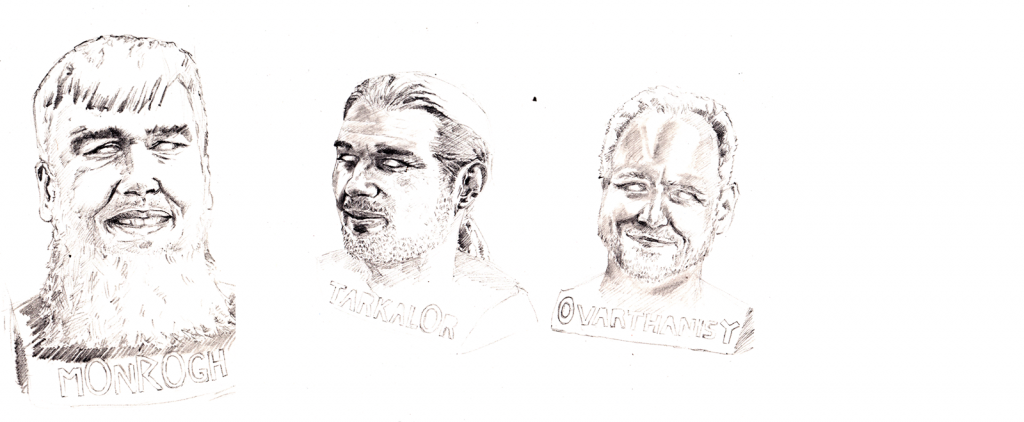
31:40
Campaign Coins – get your hard Gloranthan currency! (No, not live cattle, but actual bolgs, clacks, lunars and wheels.)
Feedback
33:40
BrentS on Cults of Prax and Biturian‘s Travels, and getting sweet on us
37:40
Pookie from Reviews from R’lyeh on how he listens to us on his walks, and a nod to our Cattle Raid proposals
Biturian’s Travels revisited – Part Two
40:00
A letter home to Esrolia, from a traveler in Prax
Bill gives one of our intrepid explorers a voice, dictated to a scribe at a Praxian Oasis.
Introduction
42:28
A thank you to Martin Helsdon of Armies and Enemies of Dragon Pass fame for letting us use his imagery of the Paps, on the cover of Temples and Towers, his exploration of the architecture of central Genertela.
A Dark Season Ritual at the Paps
43:30
Starting with Bill‘s comments on the Eirithan Dark Season rites at the Paps, we take a look at various things on and off topic.
The Respected Elder (and Most Respected Elder) of the cult of Eiritha at the Paps
A digression about the Morokanth
The holy nature of the Paps and its importance to Prax, and how this is similar to real world earth worship for Earth worship in an underground location. Bill brings out the Hopi using the Grand Canyon as the hole in the ground around which their earth worship was centred.
Rituals and Heroquests, and how much Other Side is involved.
What do observers see?
Little love lost between trolls and the Earth worshipers of Prax.
Darkness attackers in the most holy place—why do we have Morokanth attackers?
Similarities between Morokanth and trolls
We mention Steve Purcell’s image of a Morokanth on the cover of RQ3 Bestiary, and how Jörg managed to mis-interpret it as a dark troll for way too long – illustrating an uncanny similarity between these Darkness Rune creatures of Eiritha and the Men of Darkness.

Ritual foes, and how heroquesters from all over Glorantha may be drawn into your quest (and vice versa).
We discuss worshipers taking on the ritual role of a foe of the cult.
Biturian making a profit out of his worship
Lay membership, joining other cults’ ceremonies
Bill points out the similarities and differences with the Paps scene in Vasana’s Saga in the RuneQuest Glorantha rules book.
A Humakti Duel at Tourney Altar
1:06:00
Ludo introduces us to Tourney Altar, where we get to witness a Humakt Duel.
Naimless— Sword of Humakt from the Temple of the Wooden Sword, and accompanied by dark troll worshipers of Humakt.
Troll initiates of Humakt
Digressing about the Chaosium RQ2 (and RQ1) house campaigns
A history of the Temple of Wooden Sword with the Sazdorf Clan
Breaking the stereotype of your cult
(and we didn’t even mention 13G’s “One Unique Thing” that each character has).
Fairness in Humakti Duels
Discussing the limitations of Divine Intervention and how gods interact with their worshipers
Ludo has us tell about and then make up unusual specimen of cultists.
Bill’s mentions a duck character that worships Polaris, “a bit of an odd duck”!
Jörg “in memoriam” of Onslaught (a Humakti character invented by Martin Laurie) and his antithesis
“The Bodyguard” – a Humakti dilemma, in Ellie Akers’ campaign
Rolling a random cult – we improvise on Waha and Maran Gor.
The Etyries Market at Moonbroth
1:33:20
Biturian’s description of Moonbroth, and thoughts on why it spouts water every Wildday.
Like the oasis, Jörg spouts illuminating nonsense about “it washes away the red Chaos from the Red Moon”.
Not discussing the hydrology of Prax and the Wastes and the nature of the Oases
The Etyries market at Moonbroth
Creative use of Biturian’s allied spirit
The fate of horned children in the Lunar Empire
The nature of Rune Spells (e.g. Charisma) in Glorantha
A High Fantasy version of Glorantha, envisioned by Bill
The inevitable comparison of Charisma with Axe or Sword Trance
What’s the dark secret about the horned children in the Empire? Tell us your theories at [email protected] (hell, tell us your theories of anything and if it comes as an audio file that runs for about 3 minutes, it might double as your contest entry).
And with that we sneak out at the break of dawn, just like Biturian…
Wind Words 5: Cattle Raid!
In this fifth episode of Wind Words, we come back to Sartar to look at every Heortling’s favourite past time: cattle raiding. Why do they like cattle so much around here that they need to go and steal them from their neighbours on a regular basis?
But first, we look at this month’s Gloranthan news.
Herald’s Podium
(located at 41 seconds)
Gen Con Online
(located at 1:o8 minutes)

Bill has registered for Gen Con Online: https://www.gencon.com Look for him and his mic at the con. His user name will be Bill of the Wind Words Tribe!
The grandpappy of them all. Gen Con falls to the rampaging Covid-19 virus but, like the phoenix consumed in the flame—emerges alive! This time online! Events will be announced on July 6 and registration begins on the 13th.
Errata: In our recording we gave incorrect information. Events will be announced on July 6 and registration begins on the 13th as is noted above. Mea Culpa!
Jeff Richard AMA
(located at 1:44 minutes)
The boys look at a Jeff Richard’s interview that happened when a bunch of German fans took over a Schloss as “socially distancing individuals” instead of a conventioneers and in lieu of the non-existing con’s usual “Ask-Me-Anything” panel by Jeff, they recorded this. Many highlights, rumours and easter eggs are discussed.
Tminits & Trolls, Gianni Vacca’s long running Glorantha blog has a great summary of this panel @ https://2ndage.blogspot.com/2020/06/eternal-con-2020-jeffs-panel.html
Jonstown Compendium News
(located at 11:38 minutes)

https://www.drivethrurpg.com/browse.php?filters=45683&src=by_the_fans
An update to the ranks Jonstown Compendium products hold in the DriveThru’s “community content” top ten area:
Spoiler
As always, our community is kicking butt!
Valley of Plenty
(located at 12:49 minutes)

https://www.drivethrurpg.com/product/316797/Valley-of-Plenty
We discuss this HeroQuest/QuestWorld book that starts players off as children of the Dundaelos tribe. The book is from Shawn and Peggy Carpenter, a.k.a. Troupe Games.
More information is available on Troupe Game’s blog:
- Extended description of the book: https://dscarpenter.wordpress.com/2020/06/09/whats-in-the-valley/
- Playtest notes:
Red Deer Saga Part 3
(located at 20:49 minutes)

https://www.drivethrurpg.com/product/317944/A-Sword-Turned-Inward–Part-3-of-Red-Deer-Saga
This is the final instalment of the three part series which finshes up at the Battle of Queens. We find ourselves astounded by Paul Baker, the author, and his rapidity in publishing—as we are with our next item’s author…
Heortlings of Sartar
(located at 21:44 minutes)

https://www.drivethrurpg.com/product/315742/Heortlings-of-Sartar
Austin’s at it again with MotM #6! Ludo introduces this months monster as the most dangerous of them all!. From the BRP forums to you… at the speed of sound!
Treasures of Glorantha
(located at 23:18 minutes)

https://www.drivethrurpg.com/product/317421/Treasures-of-Glorantha-V1–Dragon-Pass
…also by Austin Conrad who is joined by Shawn Carpenter, Gil Cruz, Simon Phipp, and Jerry Thorpe (and Ludo!). This work starts a new series filled with storyful items to tempt—with an eye to the old RuneQuest Classic “Plunder” as inspiration!
Vinga’s Ford
(located at 25:13 minutes)

https://www.drivethrurpg.com/product/315517/Vingas-Ford
by Beer With Teeth.
It contains a vampire, a Vingan, and a duck, which are the essentials according to Joerg. There are also ghost trolls, spirit combat, and zombies.
Blue Moon, White Moon
(located at 25:40 minutes)

https://www.drivethrurpg.com/product/317878/Blue-Moon-White-Moon
By John Wick (yay!)
The adventurers encounter a Blue Moon Assassin from the Lunar Empire. What is she doing out here in Dragon Pass? And what is she running from? Will prejudices and superstitions overcome empathy and curiosity? It’s up to your players (and their moral compass) to decide.
Miscellaneous
JamesCORPTV
(located at 28:01 minutes)

https://www.youtube.com/user/Jamescuk/playlists
James Chambers, aka “JamesCORPTV” is a video streamer who does RPG-related videos and, mostly, actual plays. He has recently organized games of RuneQuest Glorantha (“The Broken Tower”) and 13th Age Glorantha (“The Beard of Lankhor Mhy”), which we rejoice about as we don’t see enough of that game around.
The live plays feature a few RPG personalities like Paul Mitchener, Bud, Pookie, and Seth Skorkowsky, but most importantly, Bill isn’t bored!
Main Topic
(located at 30:18 minutes)
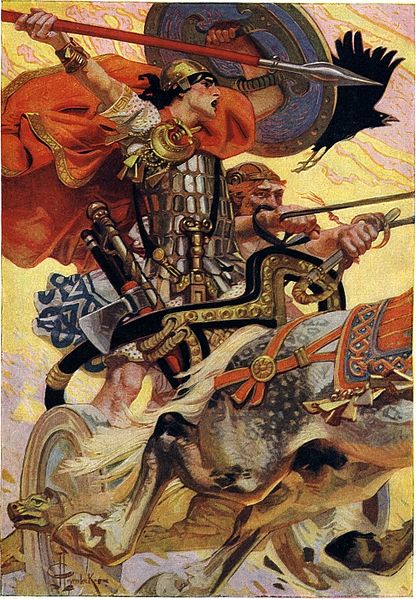
The twin topics of Clan and Cattle in Sartar
(This is located at 30:18 minutes)
Clan
(This is located at 31:18 minutes)
- What is a Sartarite Clan?
- What binds them?
- What separates them?
Cattle and clans
(This is located at 36:35 minutes)
- What cattle do for one’s resources and self sufficiency.
- Hillbillies? Cultured folk?
- Cows provide that certain “je ne sais quoi”, a little Gloranthan Bronze Age flavour…
- Cattle and myth
The Raid
(This is located at 43:25 minutes)
- Cows and how to find them.
- Cows and how to get them.
Beginning/Preparation of the Raid
(This is located at 47:12 minutes)
- When does a raid actually begin?
- Getting permission for a raid
- Who does one raid? The answer might surprise.
- Ramifications that later impact our raiders or defenders may be foreshadowed here.
- Recon/Scouting (spiritual and mundane)
- Tactics Leadership (politics again)
- Charging over the hill (crazy but…)
- Diversions
- Politics, negotiations, borders, hospitality (boon or bane).
- Military preparations: mundane and spiritual, arming, praying and sacrifices.
- The realities of limited resources is introduced, as is the wyter.
- The role (or necessity) of a hired expert.
Use all these some or all of these ideas to have several excellent challenging and fun games before combat even begins (so that’s what all those other skills are for)!
Splat Note
Jörg mentions a name I was unfamiliar with in conjunction with charging over the hill, Read the entry about the character and his actions that created the meme in honour of Leroy Jenkins @
https://en.wikipedia.org/wiki/Leeroy_Jenkins
Execution of the Raid
(This is located at 1:06:37 hours)
- The moment ya blood thirsty barbarians have been waiting for…
- Raiders: Overt? Covert? Distractions, magical or mundane?
- Defenders: Observing invaders magically or mundane
- Hospitality rears its ugly head again.
- How much magic should be used in defence and attack? Resources vs needs vs wants.
- When to use this magic (and what does filibustering have to do with magic?).
- To use aggressive/lethal magic or not?
More complications
(This is located at 1:14:48 hours)
No plan survives contact with the enemy
…and yet, more story seeds are provided!
Aftermath
(This is located at 1:19:08 hours)
- Division of spoils {See the beginning of the raid for decisions already made that were said to have possible ramifications).
- No spoils—things go south, now what?
- Is this bad or can it be negotiated? (more game nights that leave the need for combat behind).
- So are we now at the end of this raid or the beginning of the next raid
- What to do with the cattle (why don’t the villains win once in a while and get the cattle home?) (“It’s what Orlanth did…”)
Cue the poets and skalds to tell the heroic tales…
Conclusions
(this is located at 1:28:43)
You want more notes, nah. You got the time listed above. Anymore would be telling. Go and give it a listen for our final thoughts on the matter.
(Psst… although I could sell you a copy of Cole’s Notes to this episode in a sealed mylar package with the sealed and signed copy of our podcast to boot… Mint condition, perfect for collecting!)
A joke
(this is located at 1:37:02)
A teaser and special announcement not to be missed. This special announcement is located about 2 and a half minutes after the joke begins (for those with enquiring minds)…
Wind Words 4: A Guided Visit of Glamour
As our team of intrepid explorers enters the capital of the Lunar Empire, we are joined by a team of professional historians..
Sit back, get a snack and something to drink, this may take a while.
First a short word about our tribe: at the time of publication, there have been more than 1111 downloads of the first three episodes in total. (That’s 1111 in decimal.)
The Herald’s Podium
As Corona Virus remains looming over us, we have to report more cancellations of conventions. This time it affects the two biggest ones of the year:
- GenCon 2020 is cancelled.
- A virtual option is investigated
- Chaosium’s COVID19 May Update (also on BRP Central)
- Essen Spiel 2020 is postponed tp 2021
- Chaosium News
- The Pegasus Plateau and Other Stories is aviailable as pdf
- A supplement for RuneQuest: Roleplaying in Glorantha.
As always, buying the PDF from Chaosium gives you a discount when buying the printer version later (although only from Chaosium too). - Designers’ Blog Posts on Pegasus Plateau
- Jason Durall on the Chaosium Blog
- Art Director Kalin Kadiev and various artists ninterviewed on the Chaosium Blog
- John Wick’s personal blog on his first foray into Glorantha as a designer
- A supplement for RuneQuest: Roleplaying in Glorantha.
- Last Faction Hero, a board game by Gianni Vacca
- A print and play Gloranthan board game, playable in ~45min. (The funding action has run out on Monday, 31st of may, after which the item was hidden on itch.io)
- Chaosium has been donating 100% of all proceeds until 30th May 2020 to the World Health Organisation’s COVID-19 Solidarity Response Fund.
- Less postage cost for Canadian customers as there is a new sulfillment warehouse in Canada
- The Pegasus Plateau and Other Stories is aviailable as pdf
- New(s) on the Jonstown Compendium
- OneBookshelf updates on COVID-19
- Tokens for Virtual Tabletop by Dario Corallo
- An ongoing series of tokens for use with VTTs, by Dario Corallo. So far we have 2 batches of tokens for trolls and trollkin, one for chaos monsters, one for “flying trollkin”, one on giant baboons, one for Antelope Lancers, one for Tusk Riders.
- Six Seasons in Sartar by Andrew Logan Montgomery
- A sandbox with a campaign spanning six seasons, with local maps, notes on heroquesting, NPCs
- It has glowing reviews, was featured on the Chaosium Blog, and has topped the Community Content bestseller list on DriveThruRPG
- Elgar’s Blade (Red Deer Saga part 2)
- Continues the Namoldin campaign begun in White Rocks
- Monster of the Month: Hunters of the Sky by Austin Conrad
- A Print on Demand option is available for select publications on Jonstown Compendium
- First item available is the Rough Guide to Glamour
- If you already bought the pdf, contact DriveThruRPG’s customer service and upgrade to the hardback edition for just the cost of printing and shipping!
- Comments on how to make a publication POD-ready on Facebook
- Roleplaying in Glorantha: How to Get Started by Runeblogger
- Interview with Ian Cooper on Ken and Robin Talk About Stuff
Rumours
- Hearts in Glorantha #8 this June, breaking the hiatus announced end of last year.
- Ducks, Ducks And More Ducks by Stewart Stansfield may surface this year
- A first look at the crowd-funded French edition of RuneQuest:
Main Topic: A Guided Visit of Glamour
As a premiere, we welcome guests to our podcast, the team of authors behind the Rough Guide to Glamour, all long time RuneQuest veterans who met studying history at Oxford university:
- Nick Brooke; long time contributor to Tales of the Reaching Moon, host of etyries.com, an award winning Glorantha website, co-author of the freeforms How the West was One and Life of Moonson, and co-author and publisher of both the original and the new, revised and expanded Rough Guide to Glamour
- Mike Hagen: contributor to Tales of the Reaching Moon, co-author of the Rough Guide to Glamour
- Chris Gidlow: designer of Credo, the game of dueling dogmas, author of Tarsh War, a mini-freeform published by Reaching Moon Megacorp, co-author of Life of Moonson and the Rough Guide to Glamour
After a warm-up exercise ducking rapid-fire questions, our guests relate a tale of how their bestselling publication came to be, with lots of behind-the scenes information.
How does the Lunar Empire work, and how does it fail to work? Chris talks about making the Cult of Yelm work as the cult of the Red Emperor, Nick explains the interaction between the Lunar Empire and the Lunar Way, and Mike mentions the cycles and the weakness of the Empire.
The city of Glamour does get a closer look – the movers and shakers, the cosmopolitan milieu, real world influences on the design, how a joint visit to Rome by our guests shaped their exploration of the imperial city, how the Junta boardgame influenced the design process, the shape of the Moon Rune as the dominant pattern of the city
We learn about the origin of the Life of Moonson freeform, from its origins as a mini-freeform “The Hunt for Red Storm Season” which was then expanded to a 50-person freeform.
There is a collection of the Life of Moonson characters on Nick’s Website – check them out. Mike, Nick and Chris expand on their favourites.
Ludo asks about the humour in Glorantha, and then we get to the influence of pop music to Glorantha, and especially Pelorian Rhapsody. After some evasion wherein we discuss why the Red Emperor resembles Elvis rather than Freddy Mercury, Michael O’Brien’s inspiration, Mike Hagen suggests a cyclical change of his appearance due to massive intake of Moon Rock, and Chris on MOB’s Maximum Game Fun principle, we get a musical interlude:
The Red Army Choir performing the first lines of Pelorian Rhapsody. Roll for Sanity.
Bill asks about which module our guests wished they had written. Nick offers his admiration for MOB’s Sun County for RQ3, Chris gets poetic about Griffin Mountain, and Mike Hagen reminisces about his first contact with RuneQuest through the early White Dwarf article on Dealing with Demons.
Our investigative reporting goes on to ask “What is the most Gloranthan thing you have ate”. Mike submitted a dish called Corflu Surprise as a winner to the first Eat at Geo’s contest at Convulsion (3 tbs cream of coconut, 1 tin of tuna, and 1 tsp Sambal manis, plus perhaps some black pepper. Adjust quantity of coconut and spice to taste. Garnish with seaweed if desired.). Nick tells about Walktapus seeds, and Chris celebrated the publication of the new Rough Guide with a most Lunar dinner consisting of ostrich steak (a type of bird that has been extinct in Peloria for centuries and may be illusionary), maize and pink gin.
We have a few more rapid-fire questions, sowing some dissent among our guests. and we let our guests answer the questions we failed to ask them.
Nick gives an account of the experience of publishing on the Jonstown Compendium. We learn why The Tide is High to Call Her, the goddess Glamour bearing a stunning similarity to Debbie Harrie. Mike gives an account on the art acquisition for the Rough Guide. Chris answers why one would explore the Lunar Empire.
As we ceremonially eject our guests, getting information on the sales numbers and a hint at the next project we can expect from our guests, learning about the banned Seleric Verses and what really happened in Torang in 1220.
Credits:
The lovely image detail of Mucha Blondie Glamour is by Antonia Doncheva. View the full image on p.99 of the Rough Guide to Glamour!
The performance at 1:27:20 is a parody of Bohemian Rhapsody, by Queen. Nick Brooke’s lyrics to Pelorian Rhapsody were inspired by Freddy Mercury’s original work. His group may have sung it better, but our version makes more sense as a Lunar hymn to the Seven Mothers and the Red Goddess.
Wind Words 3: The Travels of Biturian Varosh (Part 1)
For our third episode of Wind Words, we decided to have a look at the narrative in Cults of Prax.
But before that comes our regular look at the news and rumors.
The Herald’s Podium
Corona Virus-related news items:
- How COVID19 impacts the gaming industry and fandom
- EnWorld interviews
- Games Distributors closing down (EnWorld Article).

- and withholding payments to games publishers (BoardgameGeek, Newsarama).
- Some publishers are shutting down their warehouses for physical products (Paizo quoted on EnWorld).
- Chaosium’s distributing partners in the USA, UK, Australia, Poland and Canada are still handling direct sales of printed material (Chaosium Blog), and Chaosium is not laying off anyone for the time being.
- Electronic copies of Glorantha material are (and will be) available on the Chaosium web-store and on Drivethrurpg, and also newly on Itch.io.
- Conventions moving to online events:
- Chaosium art for virtual backgrounds for your online gaming.
- Chaosium primer for on-line gaming.
- Free stuff to be used during the isolation:
- Color Your Own Troll(kin) by Beer With Teeth from their Jonstown Compendium scenario Rocks Fall.
- RuneQuest Coloring Book:
- RuneQuest Coloring Book Competition Announement.
- Download from Chaosium.com or from Itch.io.
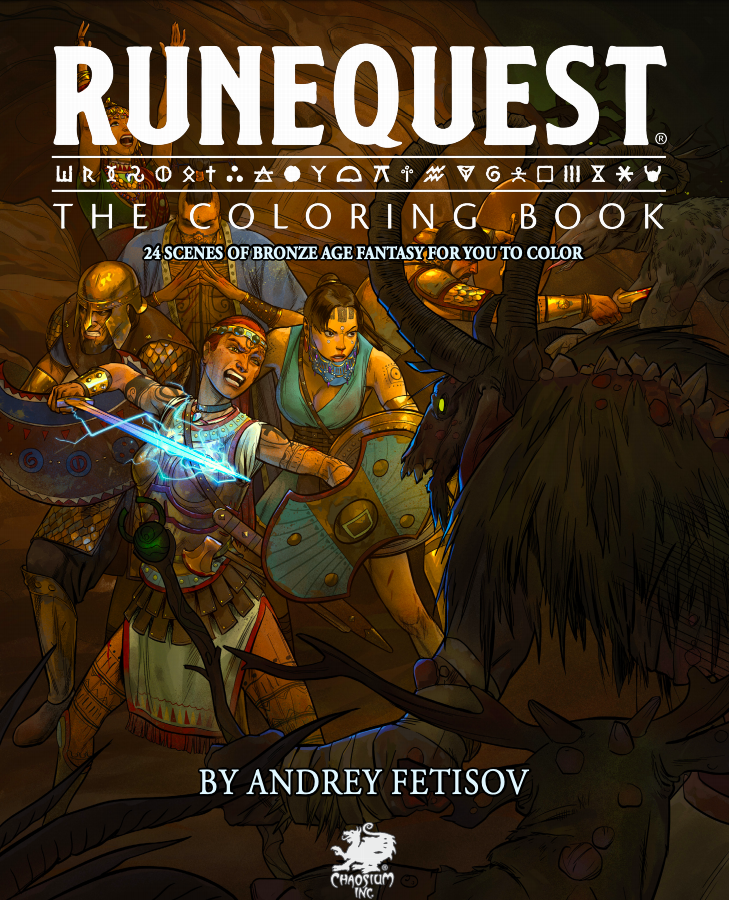
- BRP SRD OGL:
- Announcement on the Chaosium Blog.
- Glorantha content (and other existing Chaosium lines) excempt, but Gloranthan material can be published in their Jonstown Compendium community content program.
- Jonstown Compendium News:
- Chaosium’s Journey to Jonstown series on their blog reports Jonstown Compendium items always among the top 10 on Drivethrurpg community content rankings.
- A Rough Guide to Glamour is finally out, produced by Nick Brooke with a gorgeous new art piece available via Chaosium’s Red Bubble store. A review by Andrew Logan Montgomery gives quite an endorsement, too.
- Reaching Moon Megacorp.
- The character sheets for The Life of Moonson freeform are on Nick’s Glorantha webpage.
- The Sing’along’a’Nick Gloranthan Songbook on his website, too.
- Jorthan’s Rescue Redux, a RQ2 mini-scenario in White Dwarf 19 by John Sapienza and Stephen R.Marsh expanded and adapted to RQG by Matthew Pook.
- The Corn Dolls: Sandheart Volume 2: A sequel to Tales of the Sun Dome Militia by Jonathan Webb.
- Night of the Quacking Dead by Austin Conrad: The rumours were true!
- Nick Brooke’s index to all Jonstown Compendium RuneQuest Scenarios is regularly updated.
- Humakt, Raven and Wolf, a Humakti heroquest for RuneQuest: Roleplaying in Glorantha by Jacob Andersson.
- Whitestone Ruin by Paul Baker, the first of three planned scenarios in the Namoldin clan of the Malani tribe near Apple Lane.
- Soundtrack for “Glorantha: The Gods War” Kickstarter
- Referring to Sandy Petersen’s game Glorantha: the Gods War.
Rumours
- Valley of Plenty – an upcoming HeroQuest scenario by Shawn and Penny Carpenter of Troupe Games, part one of the Jaldonkiller Saga set in the Dundealos tribe.
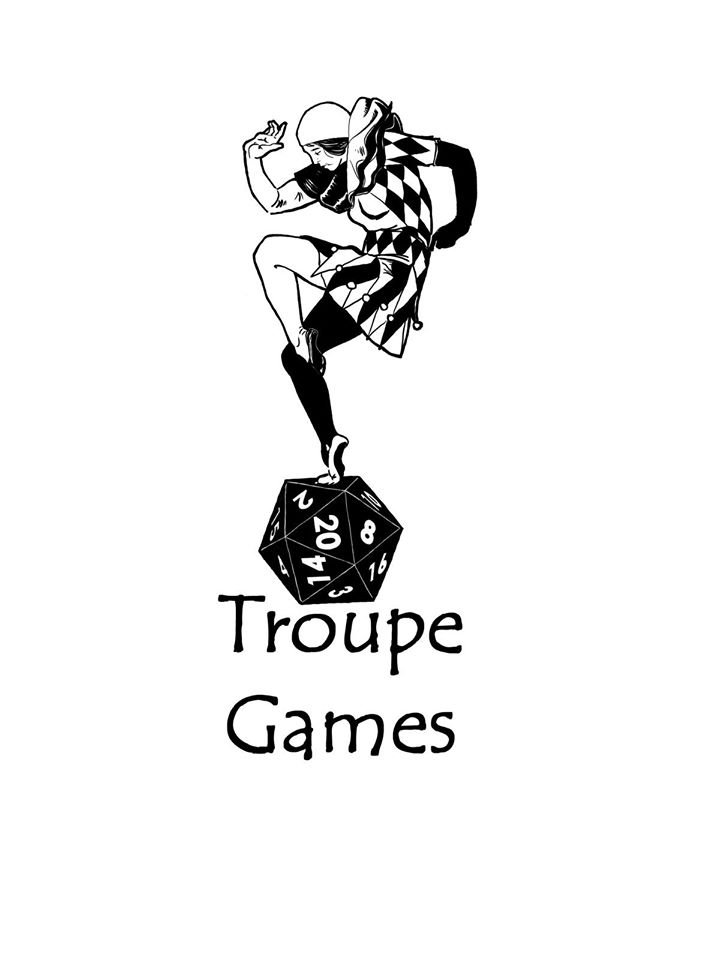
- Ludo mentions the exclusive French language supplement on the Dundealos tribe for the French edition of RuneQuest Glorantha that was crowdfunded on GameOnTabletop.
- Barbarian Town project by Sarah Newton (also mentioned on Facebook and BRP Central).
- Ars Magica troupe-style gaming.
- Six Seasons in Sartar, a sourcebook and RQG campaign by Andrew Logan Montgomery, set in an obscure clan of the Colymar Tribe.
- Print on Demand options are researched for RuneQuest Classic and other Chaosium products, including the Jonstown Compendium. Some of these products are already avaiable on Lulu.
Main Topic: Biturian’s Travels (part 1)
Cults of Prax
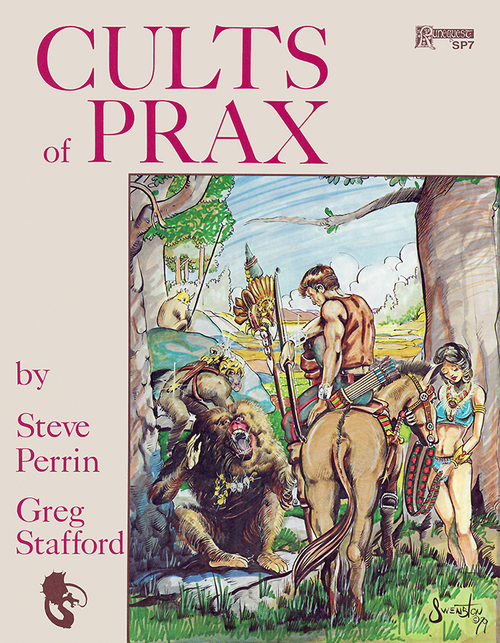
The first Glorantha supplement for RuneQuest 2 for the setting of Glorantha, now available in the Gloran tha Classics series and also as part of the RuneQuest Classics Cult Compendium.
Presumably the first splatbook in the history of roleplaying products,
Ludo mentions Shannon Appelcline’s Designers and Dragons, a four volume history of roleplaying written by a Chaosium insider, and kept up to date over on rpg.net.
Biturian’s Travels
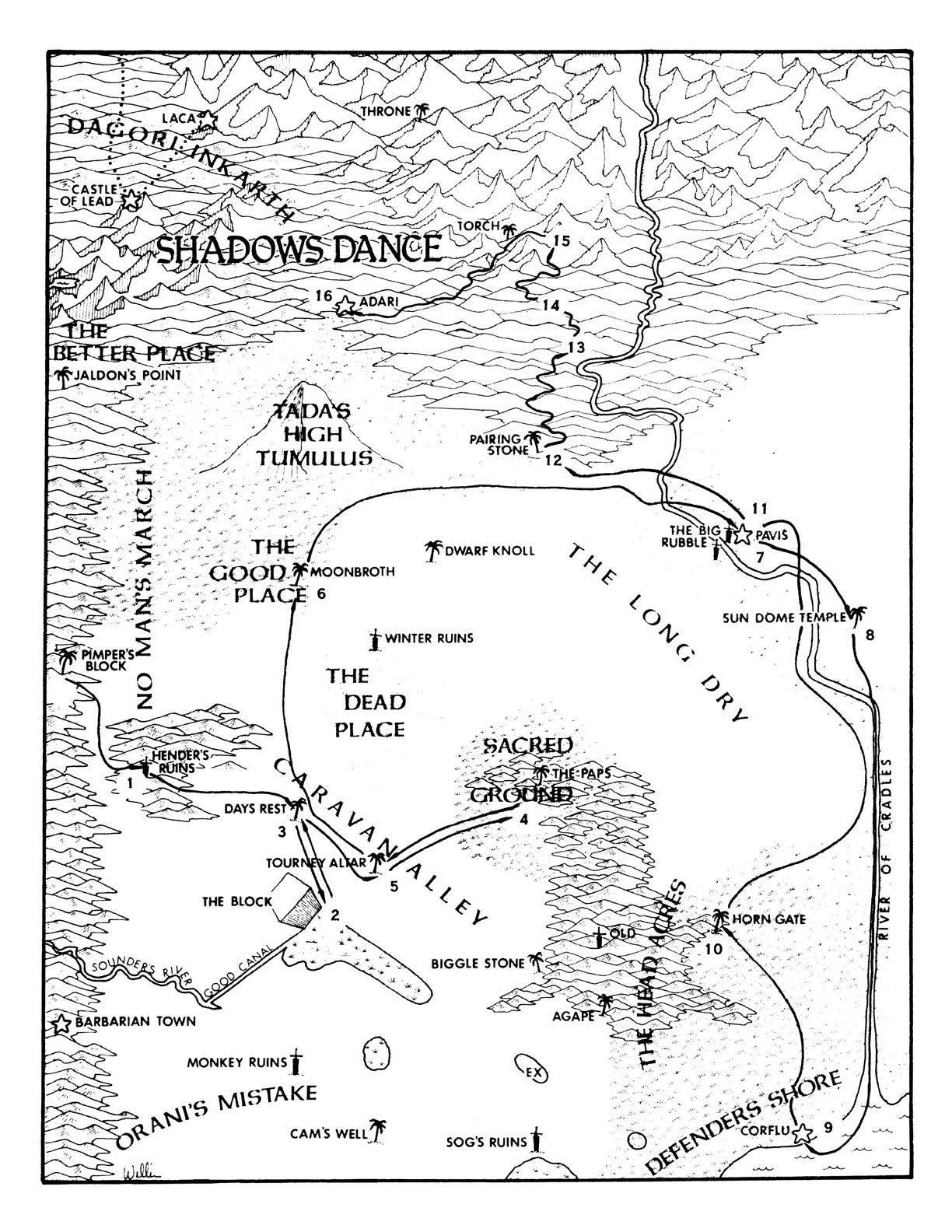
First stop: Hender’s Ruins
A Baboon Daka Fal ceremony observed by Biturian, manifesting the spirit world or even God Time to the observer.
Second stop: The Block
Talking about Truestone, Gloranthan honey, troll caravans, sugar and Aldryami syrup.
Third stop; Day’s Rest
A bison wedding, parallels to Sacagawea from the Lewis&Clarke expedition, slave bracelets, bolgs (not clacks), detection magics and hiding from them.,
Conclusion: a praise for the narratives in the rules books and supplements: Rurik Runespear (RQ2 rules), Biturian Varosh (Cults of Prax), Paulis Longvale (Cults of Terror), non-Gloranthan Cormac the Pict (RQ3), Jaxarte Whyded (Sun County), Samastina (HeroQuest Glorantha) and Vasana (RQG).
Letters to Wind Words
Please send your questions or comments to [email protected] or post it on the Podcast of Wonder thread on BRP Central. Feel free to comment or share on social media, too.
If you send us a sound file, we will make use of that.
And mentioning our friends in Finland: Episode 3 of Dayzatarin Tähtien Alla is out.
Now who left in that blooper?
Wind Words 2: Scenes from a Market (Pavis Edition)
Here’s our second episode of Wind Words, where we look at scenes in the Founders Market of Pavis. We hope our audio quality has improved somewhat, but we’re still learning and Bill has a terrible head cold which is why he sounds so bad.
Andrey Fetisov art used with kind permission of Chaosium Inc/Moon Design Publications for the background header of this blog post.
Introduction
We are not alone: there is a Finnish language podcast on Glorantha: Dayzatarin Tähtien Alla.
The Herald’s Podium
Our collection of news (up to date at the time of recording):
- Corona virus
- Conventions cancelled or still undecided:
- Glorantha Games 2020 in Birmingham cancelled
- Chaosium Con Down Under cancelled/postponed by a year
- Eternal Convention – planned for May 29th to June 1st, no announcements yet
- Mini-Kraken – the decision whether to cancel will be made end of April
- New in the Jonstown Compendium:
- Stone and Bone: by Kris Herbert and Diana Probst of Beer With Teeth. The same team that did Rocks Fall.
- Geiron, Lord of Elephants: the new Monster of the Month by Austin Conrad.
- A new edition of A Rough Guide to Glamour has been announced.
- Glorantha: The Gods War, last chance to buy:
- The Kickstarter for the new expansions has ended, but you can still place a late pledge.
- Sandy Petersen’s activities on YouTube:
- Sandy of Cthulhu YouTube Channel
- Promotional Video The Lore of Glorantha
- Promotional Video The Art of Gods War
- Promotional Video The Lore of Glorantha with Jeff Richard
- Interview with Jeff Richard on Roliste TV:
- Glorantha content 13:25 into the video
- Chaosium’s Next Year: Jörg got the ad in his copy of White Bear and Red Moon signed and dated at Tentacles Convention:
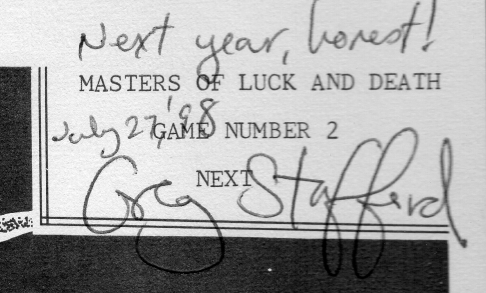
- Chaosium’s Creature Month at RedBubble
- Type 40 Crowdfunding Announcement
- RuneQuest Q&A picking up pace on BRP Central
- Collected answers are available on the Well of Daliath.
- Rune Fixes 2 are out
Rumour Table
- Rick Meints Index to Gloranha 2020 update
- The Night of the Quacking Dead!
- That rumour is totally unsubstantiated. For Jörg’s and Ludo’s eyes only:
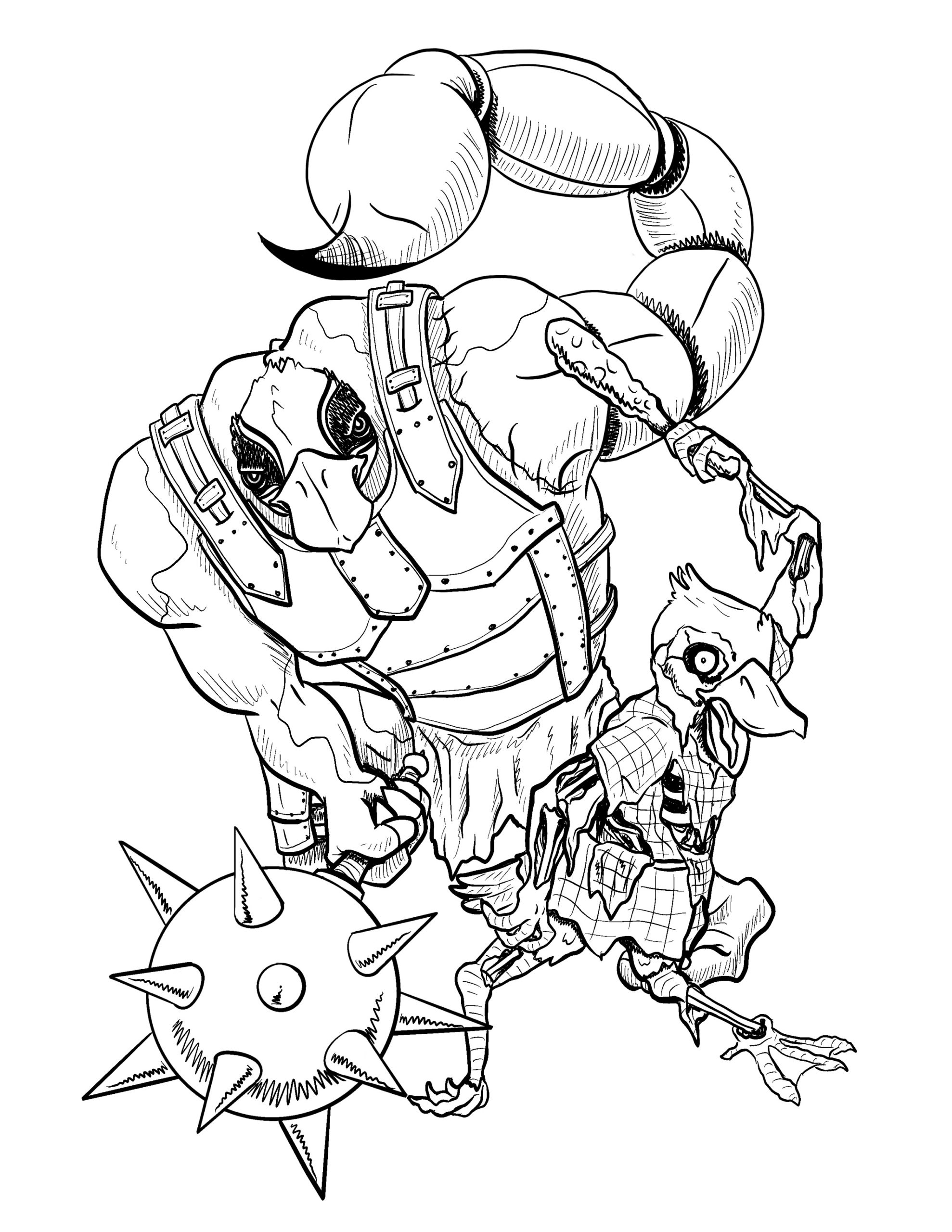
- That rumour is totally unsubstantiated. For Jörg’s and Ludo’s eyes only:
Main Topic: Scenes from the Founder’s Market of New Pavis
- An experiment in setting up a scene for Game Masters, hopefully with ideas to build upon
- Bill is setting the scene
- A party out of the Rubble meets a pair of Grey Sages – Taking a rather ordinary piece of metal ornamentation found in the Rubble as a lead into more Rubble Running
- Why you shouldn’t mess with trolls, they will mess with you. And does eating humans make you chaotic?
- A beggar a bit out of place – the seedier side of the city. (Or maybe not.)
- and of course we get into rambling with each, surprising each other with side issues – the very kind of side issues your average band of player characters will pick up and go haring off on in your sessions, too.
Letters to the Editor
A question from the audience – what materials do you need as a new player or a new GM in Glorantha?
Bill mentioned how he GMed with just the free to download RuneQuest Quickstart Rules, basic dice and stationary on Free RPG Day 2017, and here is the proof:
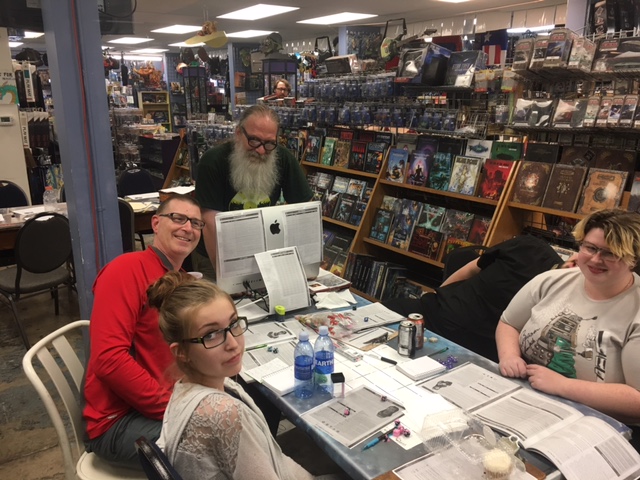
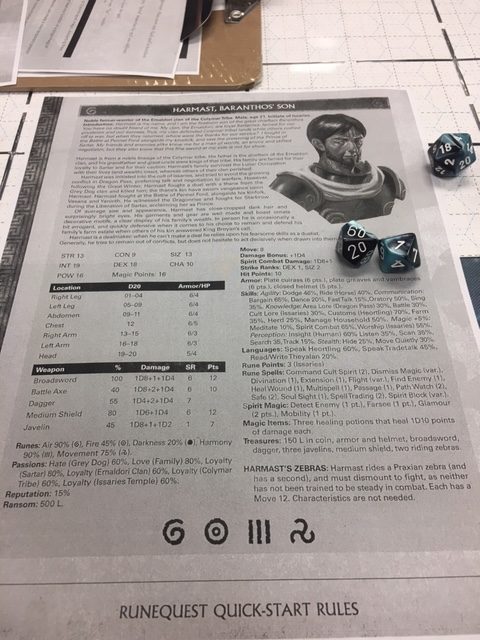
Thanks to Daniel Profeta, aka Dethstroke9, who has a very active YouTube channel about playing Call of Cthulhu.
Here’s a randomly grabbed episode that made us blush:
We also read out a few lines form other e-mails, thanks to Scott Martin and Minlister from BRP Central.
If you have questions you want us to answer or give us feedback, send an e-mail to [email protected].
Wind Words 1: Introducing your players to Glorantha
The inaugural episode of Wind Words! We apologize for the audio quality: bear with us as we learn how to edit and mix recorded voices.
Introduction
- Why are we entering the adventurous world of podcasting?
- Musings about the RuneQuest Renaissances.
- When and how did we get into RuneQuest?
The Herald’s Podium
Our collection of news (at the time of recording):
- RIP Christopher Tolkien
- Sandy Petersen‘s second Gods War Kickstarter (reprint and new expansions)
- Wyrm‘s Footnotes are available in PDF
- Jonstown Compendium (Community Content Program at DriveThruRPG)
- Monster of the Month
- Rubble Runners
- Jon Hunter‘s Back to Balazar website
- The Smoking Ruins and Other Stories
Rumor Table
- Tales of the Reaching Moon might come back in PDF
- Upcoming RuneQuest and HeroQuest products
- Chaosium is aiming for six products a year
Main Topic
How can you introduce your players to Glorantha? We provide practical advice and personal experiences on how to get into the setting, and how to present it.
We mention the prevalence of magic and gods in Glorantha, offer suggestions for limiting the choice of cults with new players, and explain how people can learn the setting as they play. We also suggest limiting character knowledge by playing inexperienced characters, or a band of trollkins or ducks.
Two threads on BRP Central which inspired our discussion:
- https://basicroleplaying.org/topic/9987-glorantha-beginners-guide/
- https://basicroleplaying.org/topic/9839-what-would-a-new-character-know-any-resources-outlining-what-a-new-character-might-know/
Munchrooms scenario for trollkins, and necessary background for trolls: https://www.chaosium.com/trollpak-pdf/
An all-duck game: https://www.drivethrurpg.com/product/296285/Yozarians-Bandit-Ducks
Sources for Gloranthan pictures:
- http://www.princeofsartar.com/
- https://www.drivethrurpg.com/product/296535/The-Armies-and-Enemies-of-Dragon-Pass
Computer game suitable for introducing you to the setting:
Errata
The Once and Future King was written by T.H. White.
En liten tjänst av I'm With Friends. Finns även på engelska.
